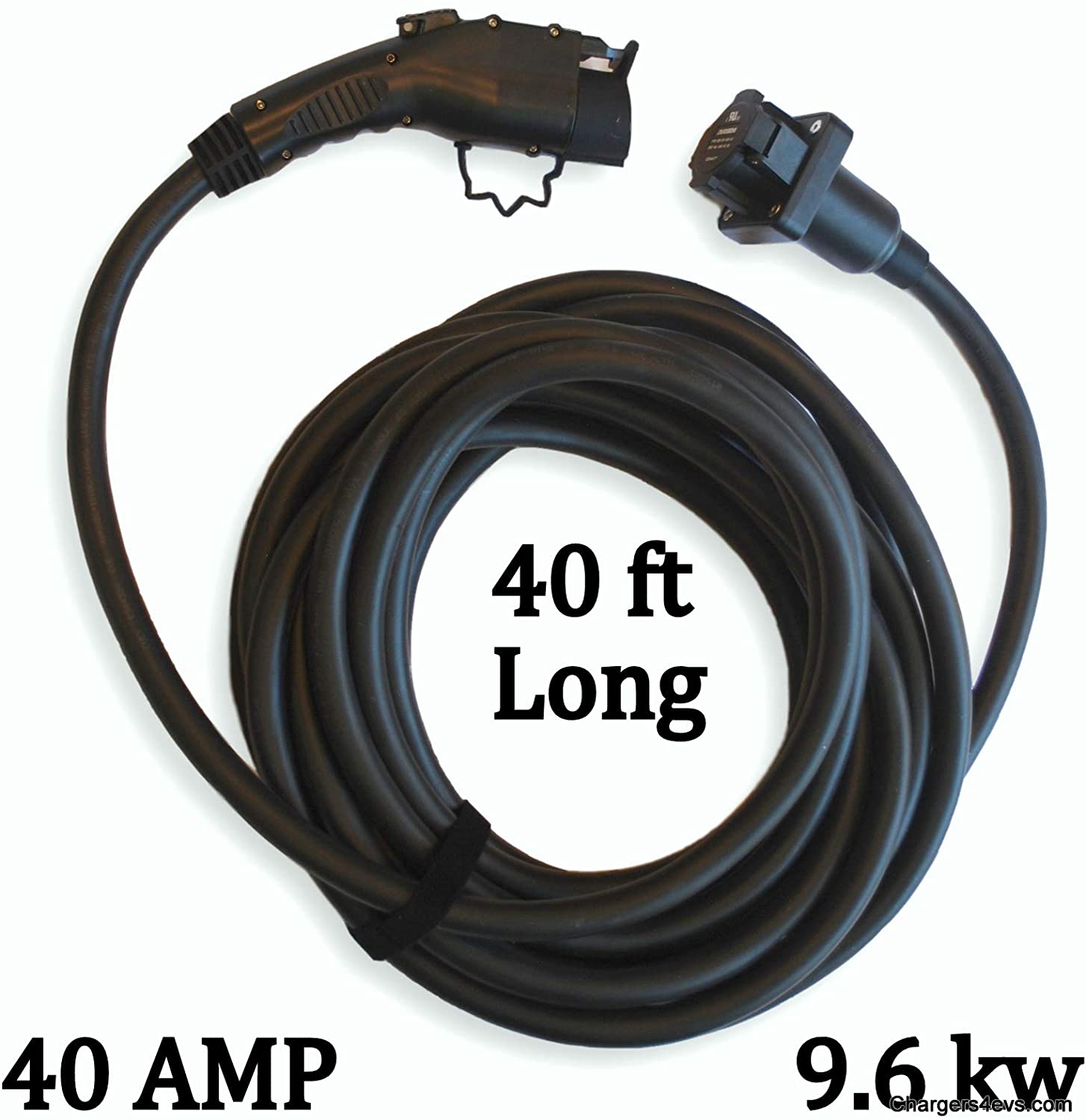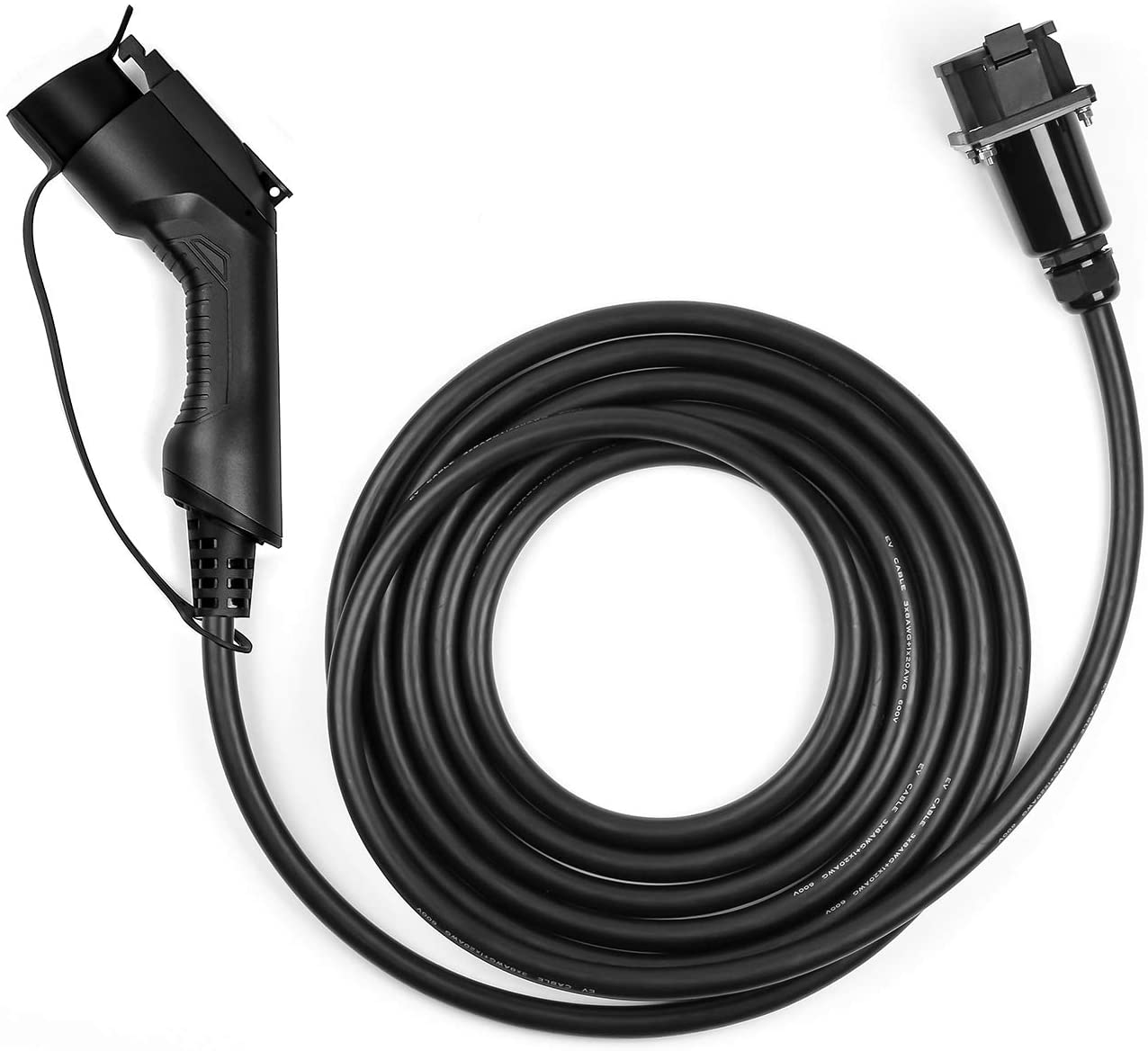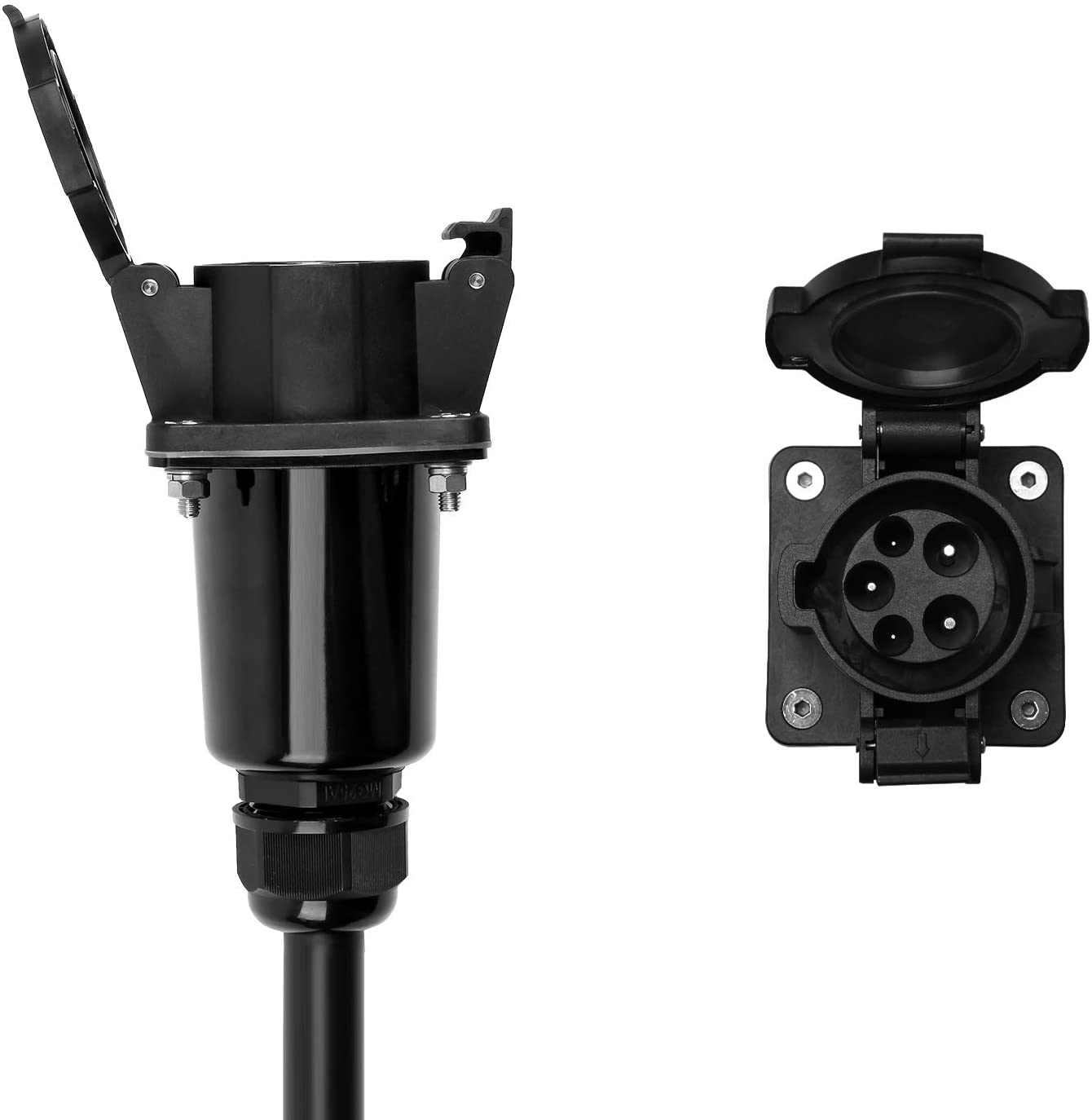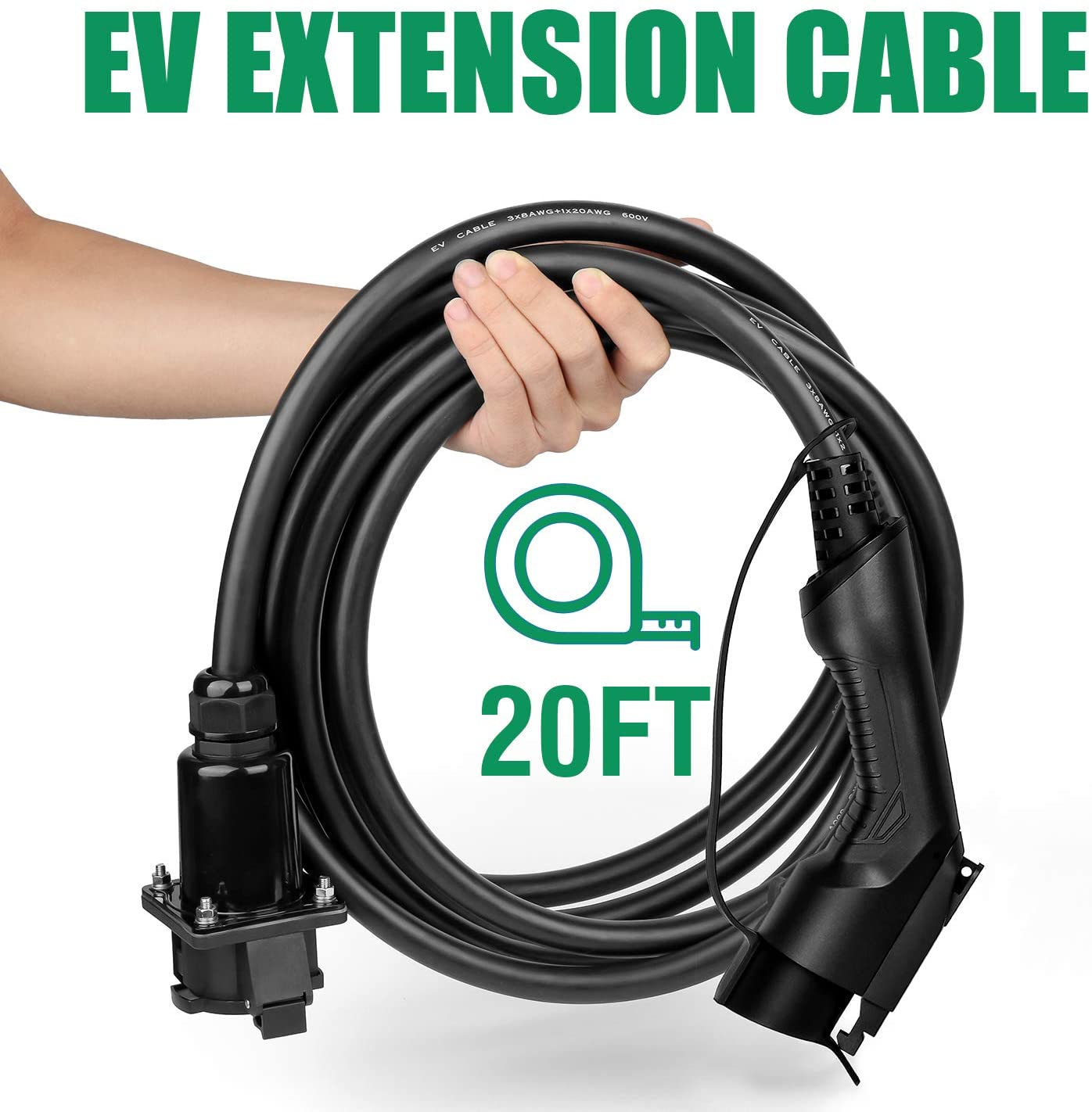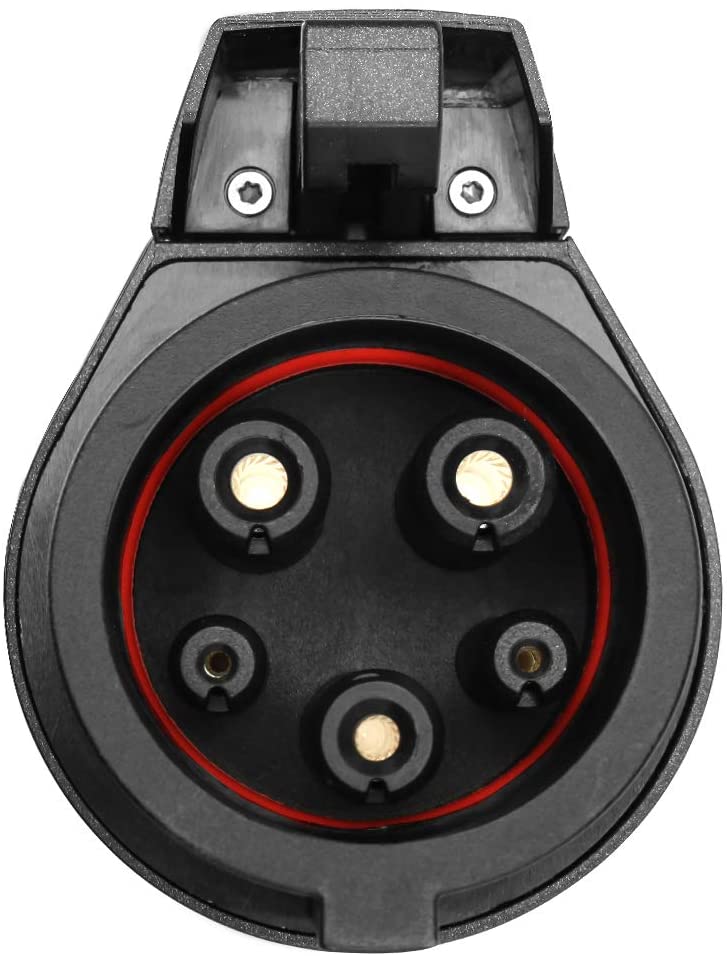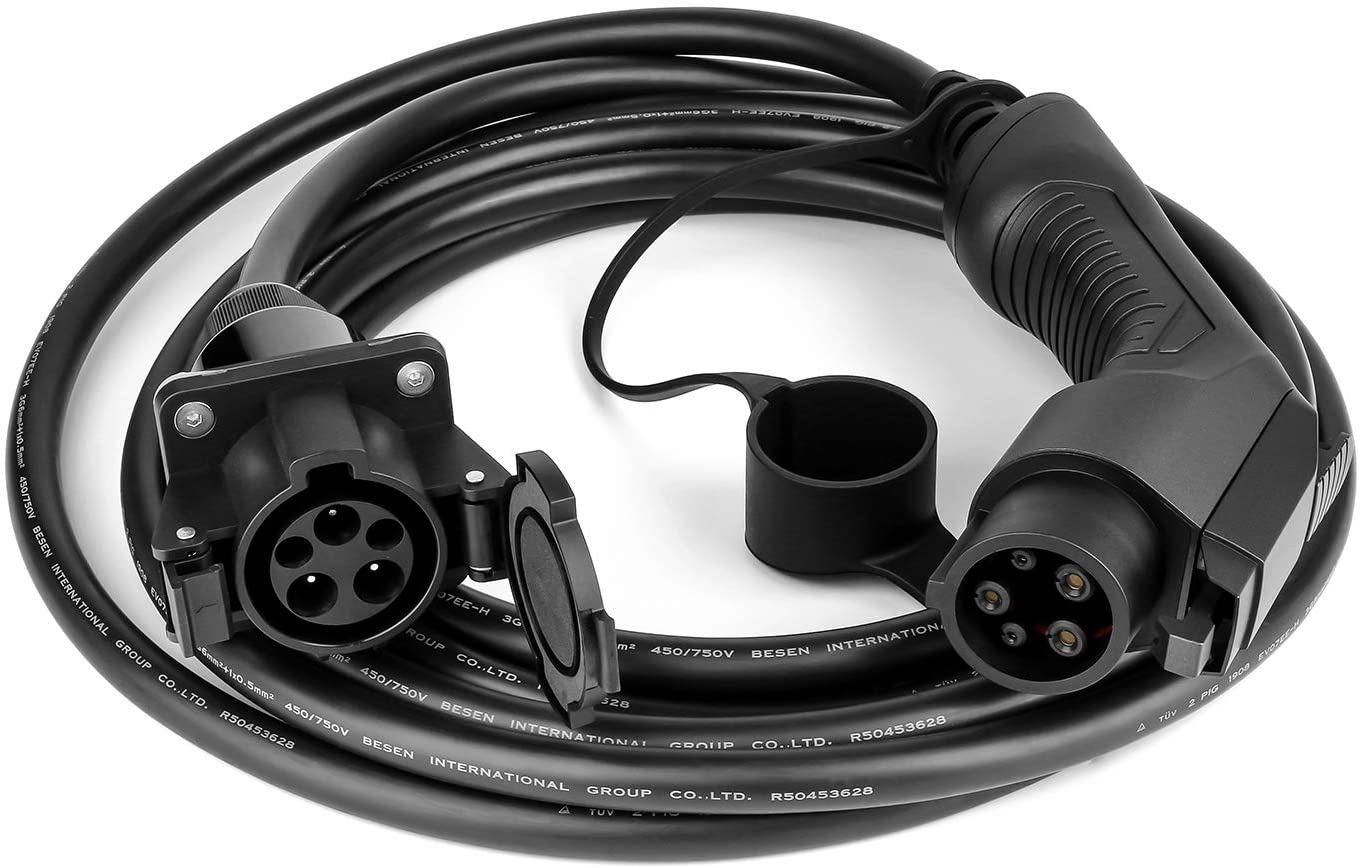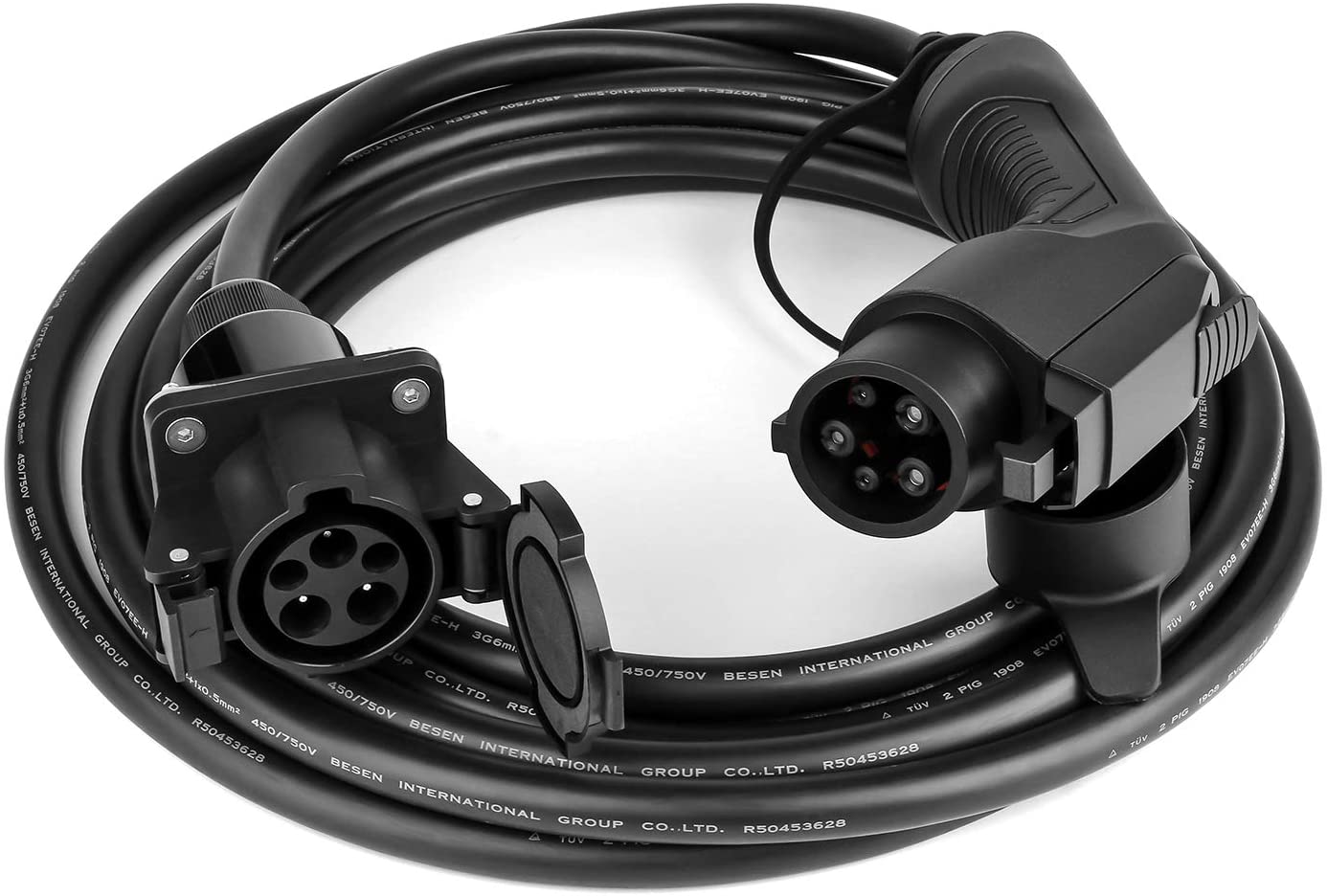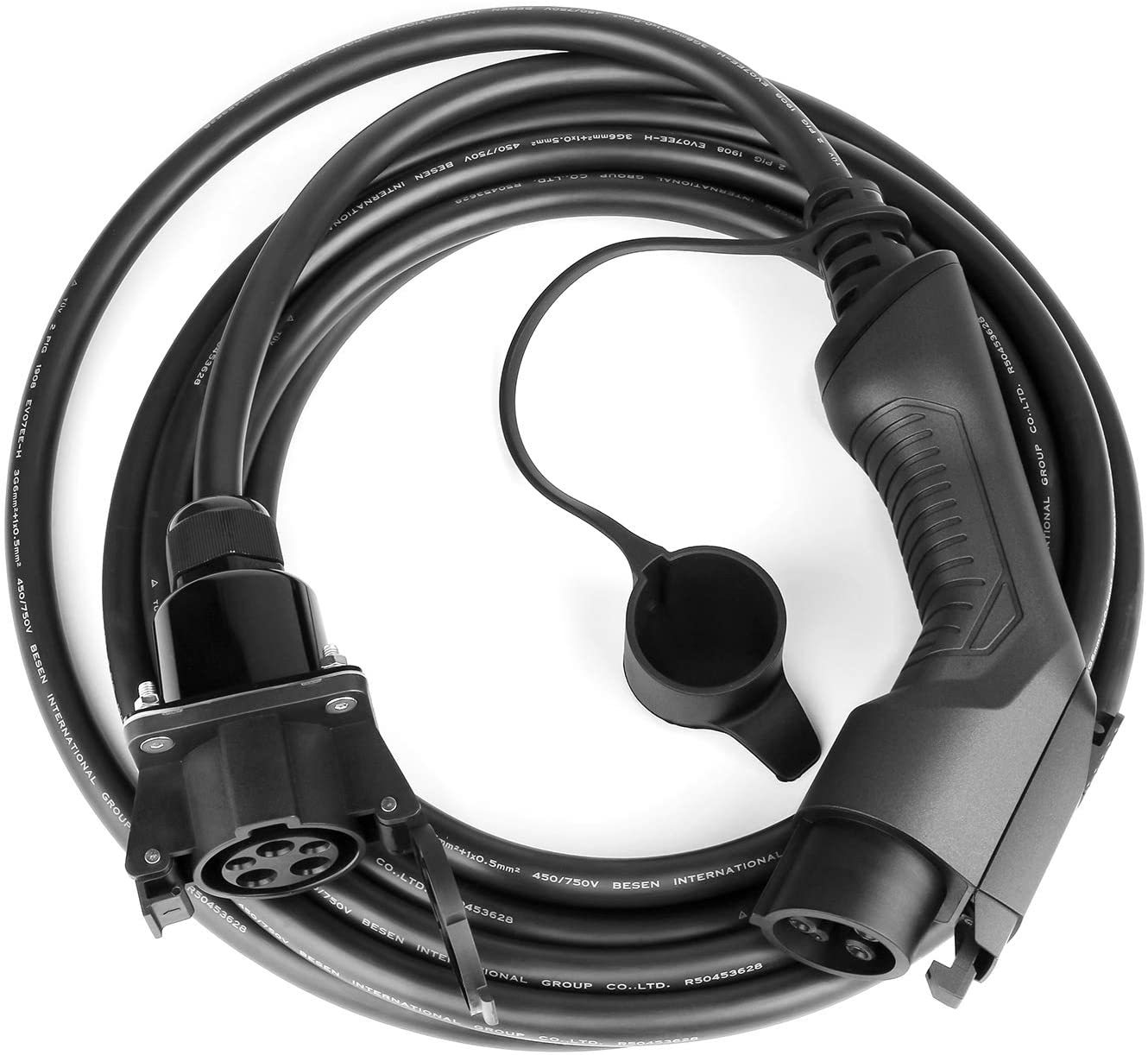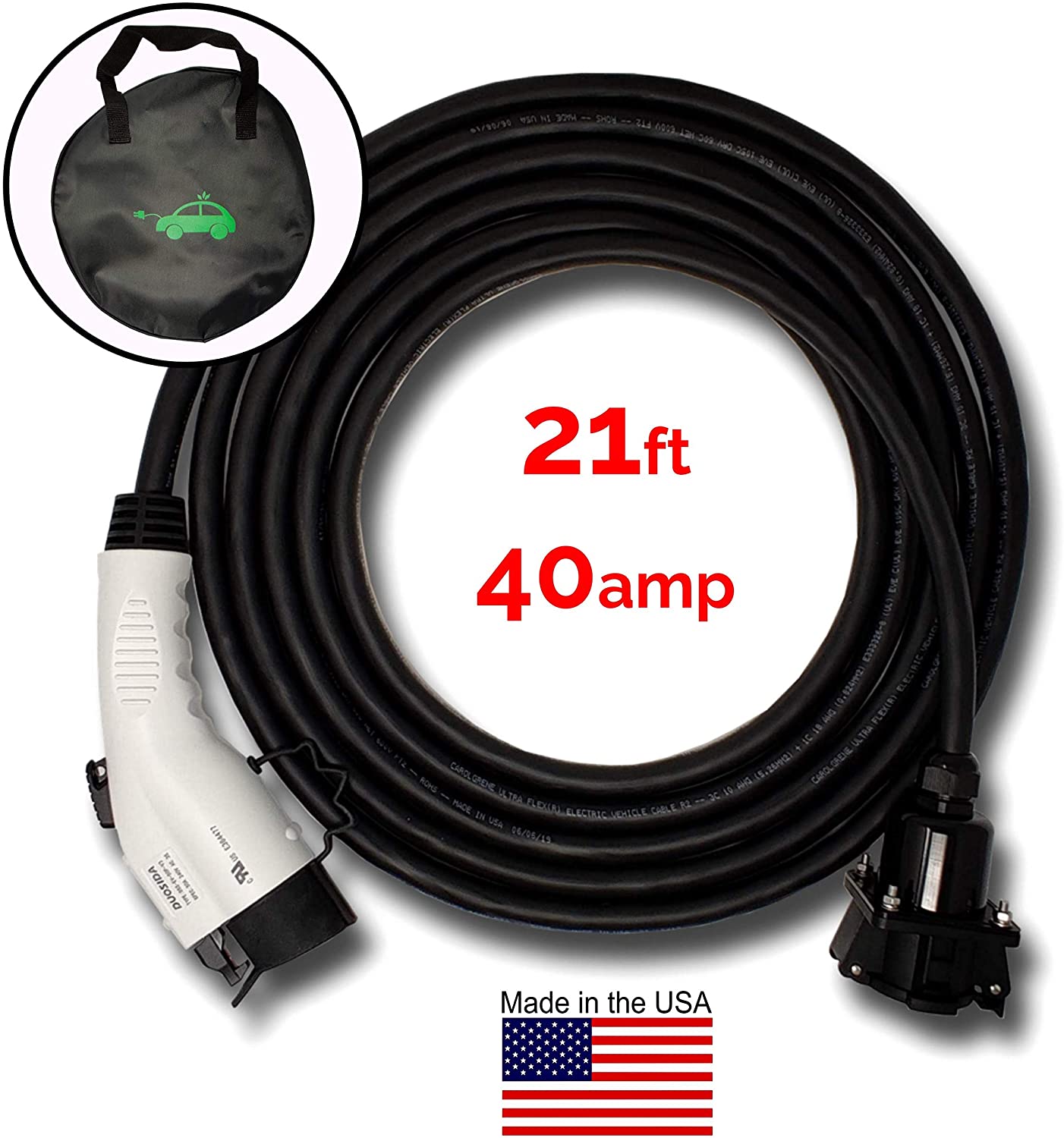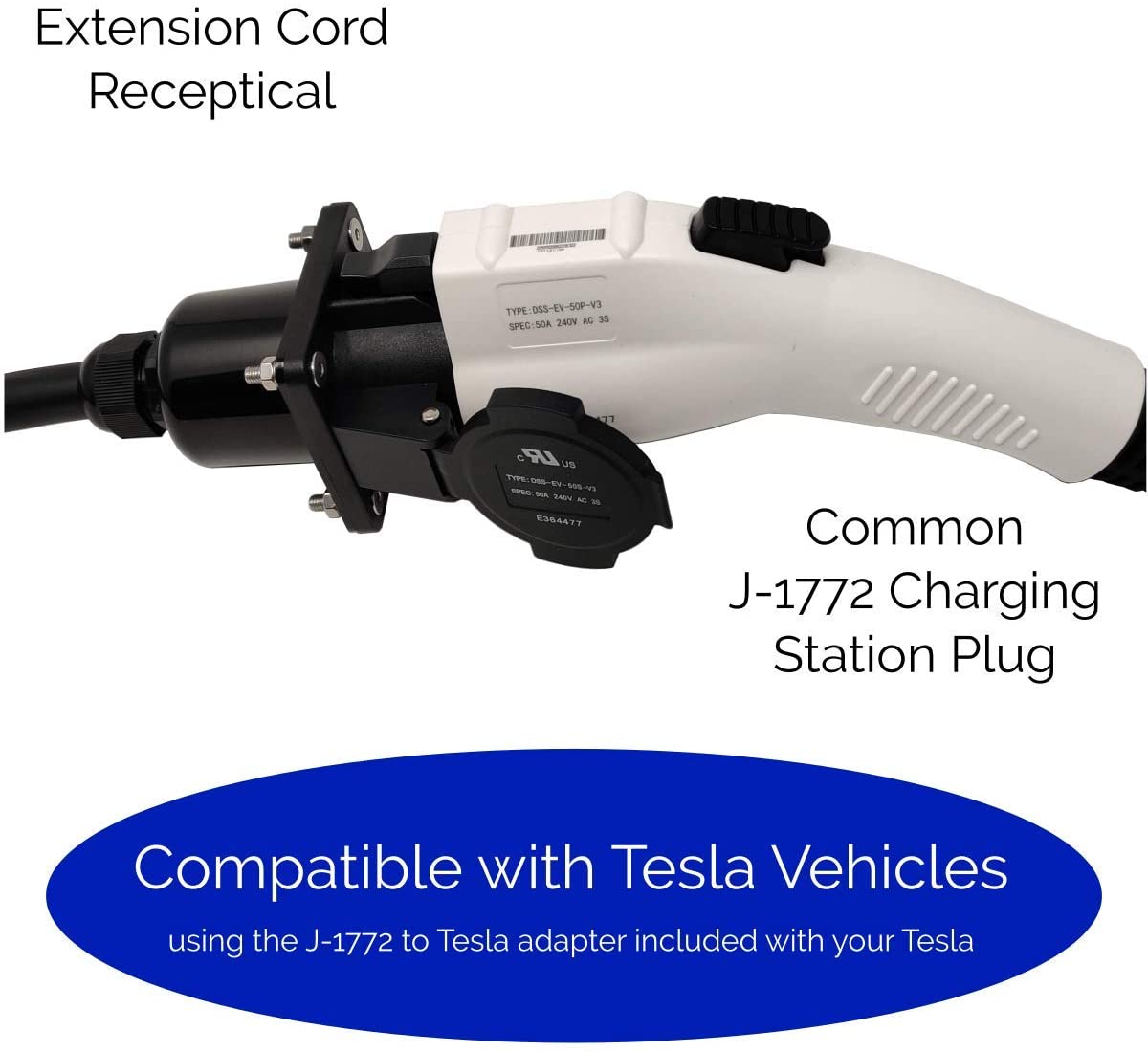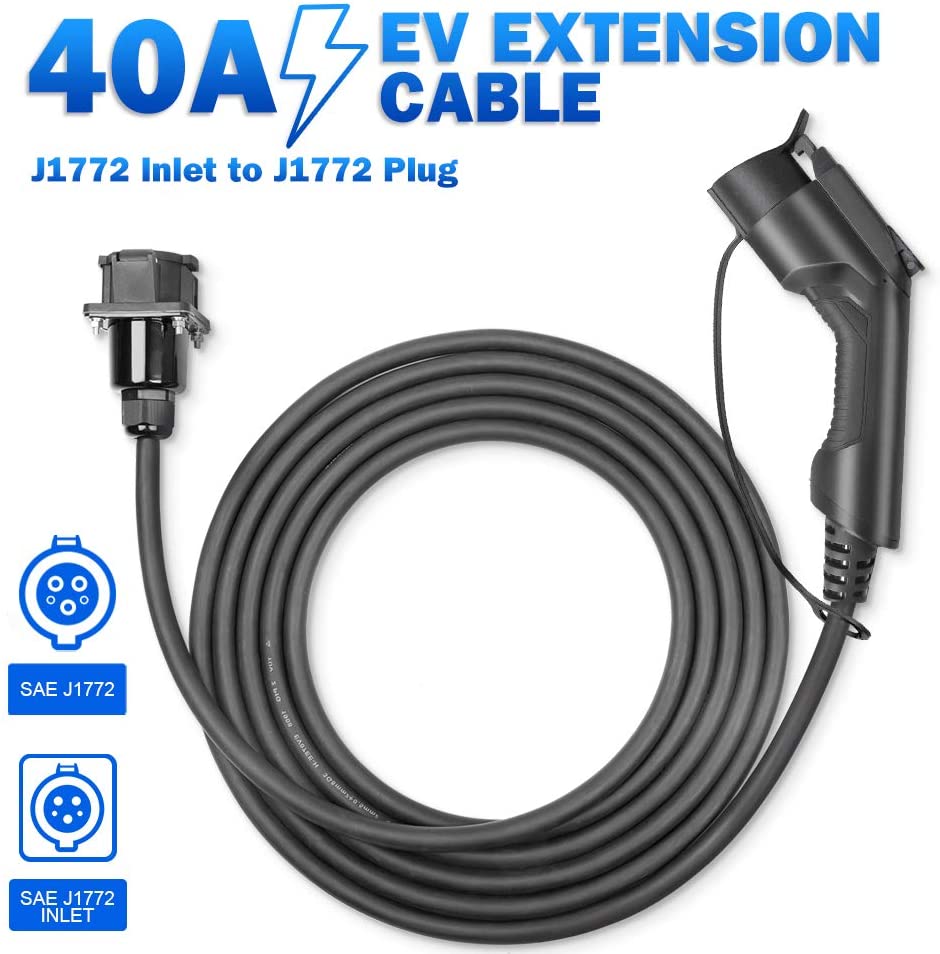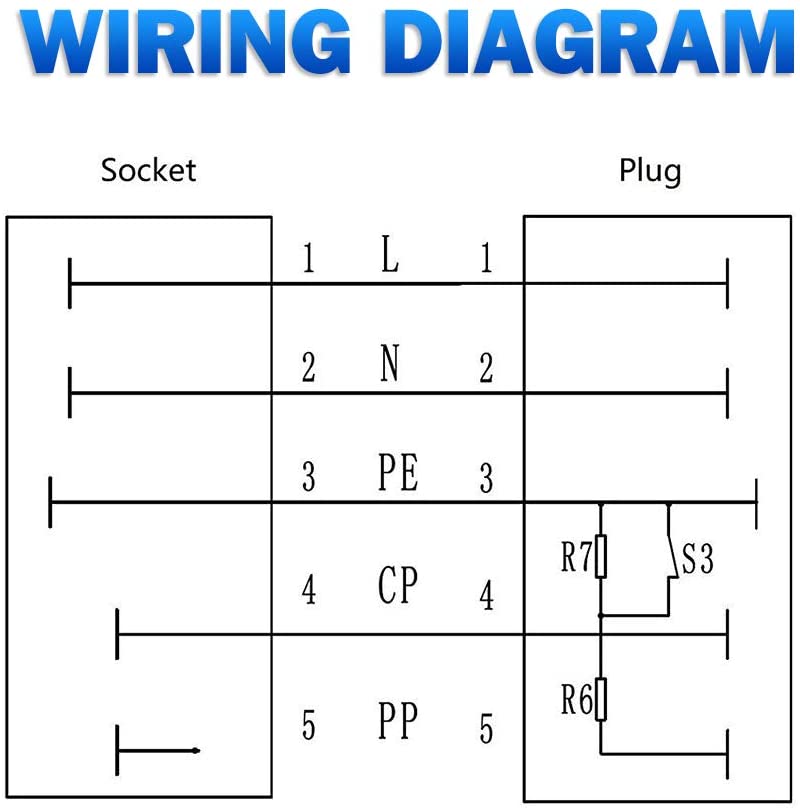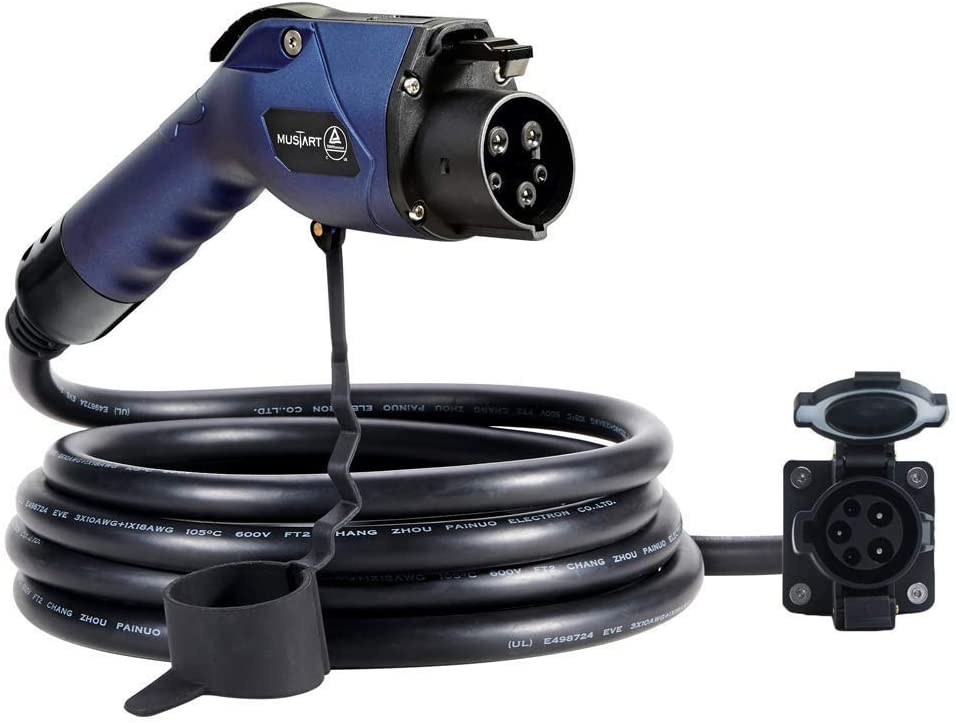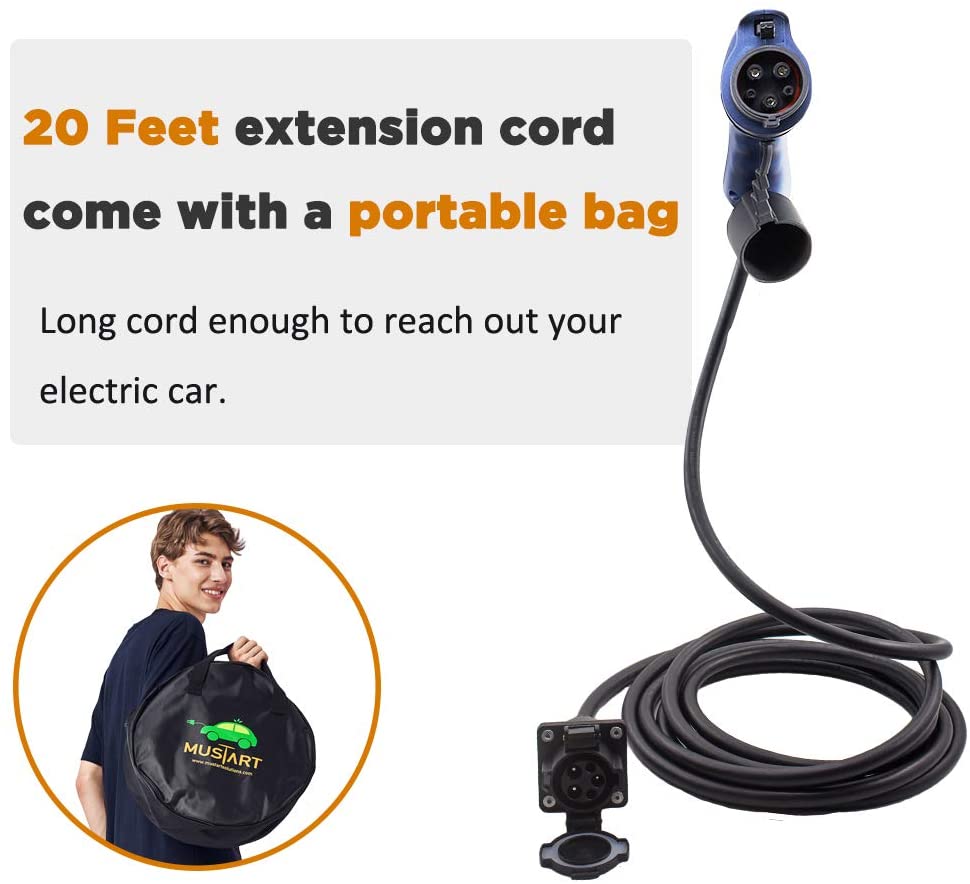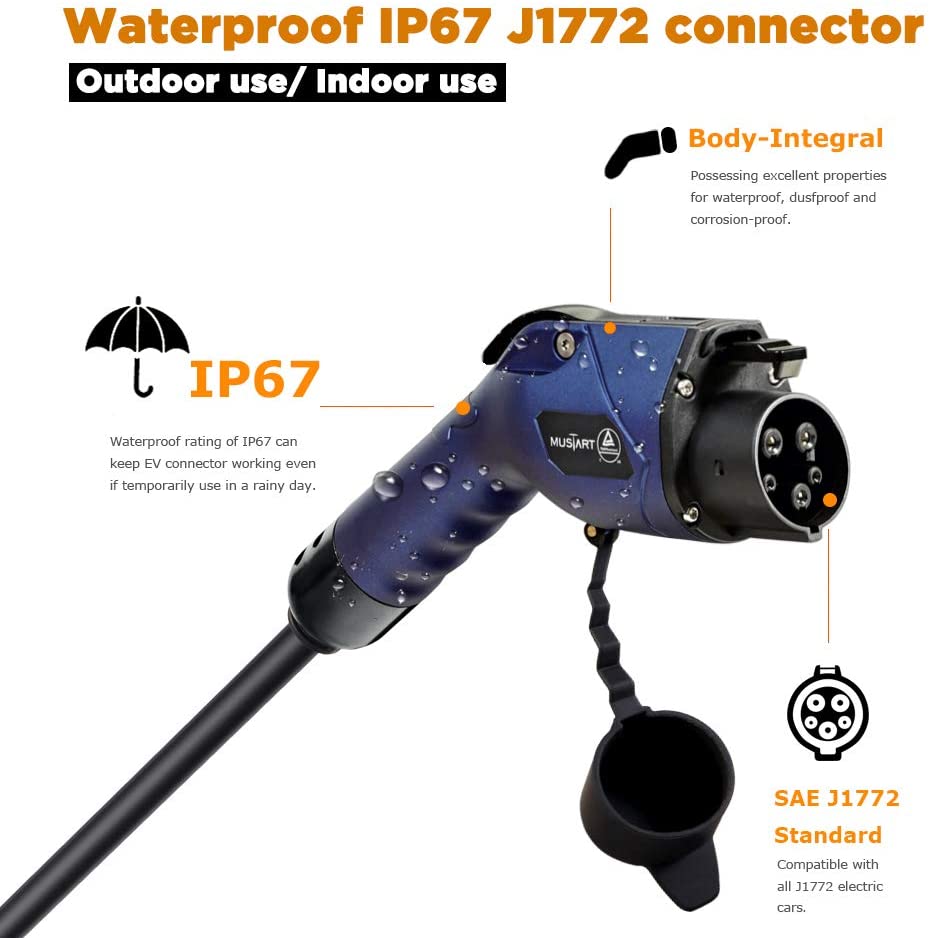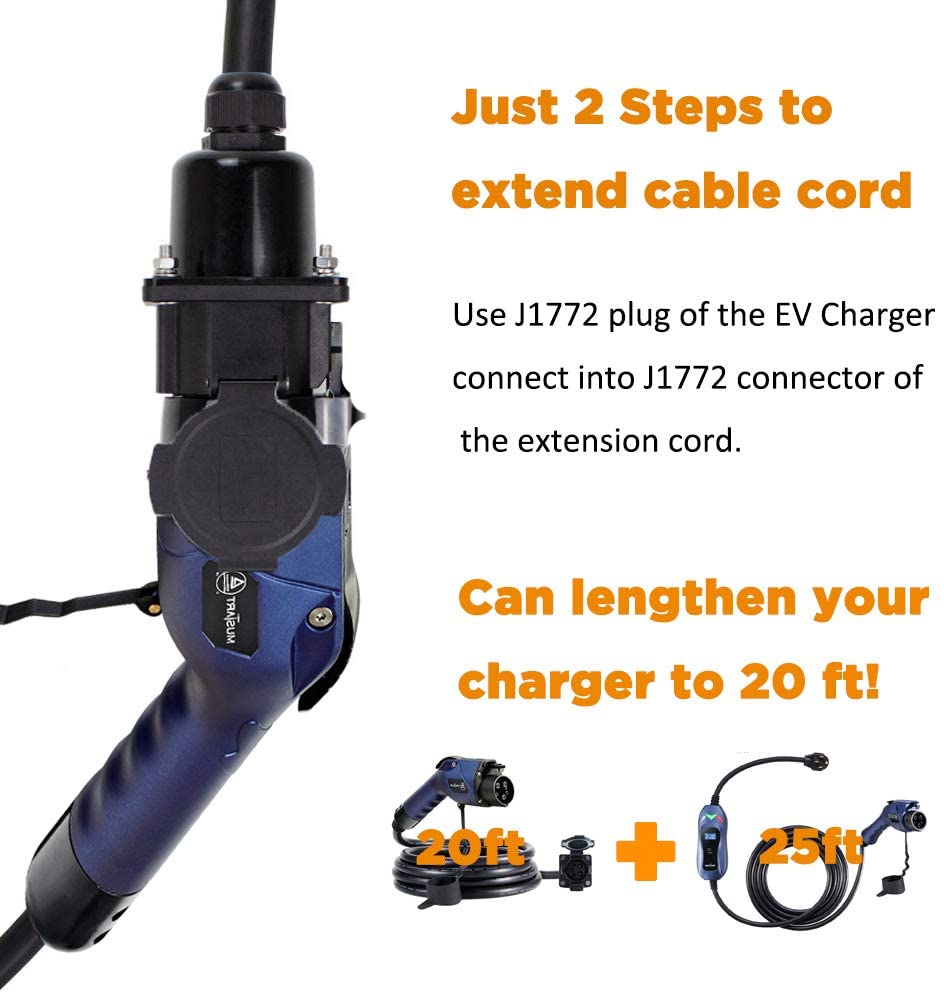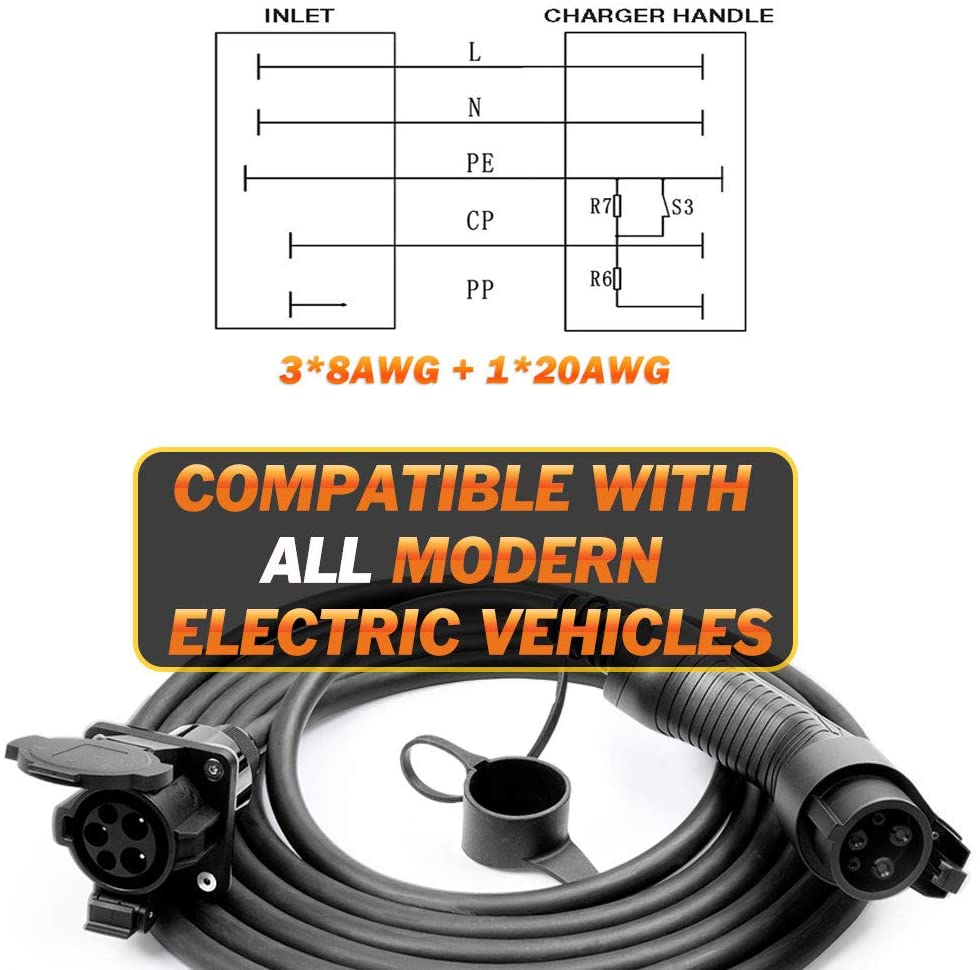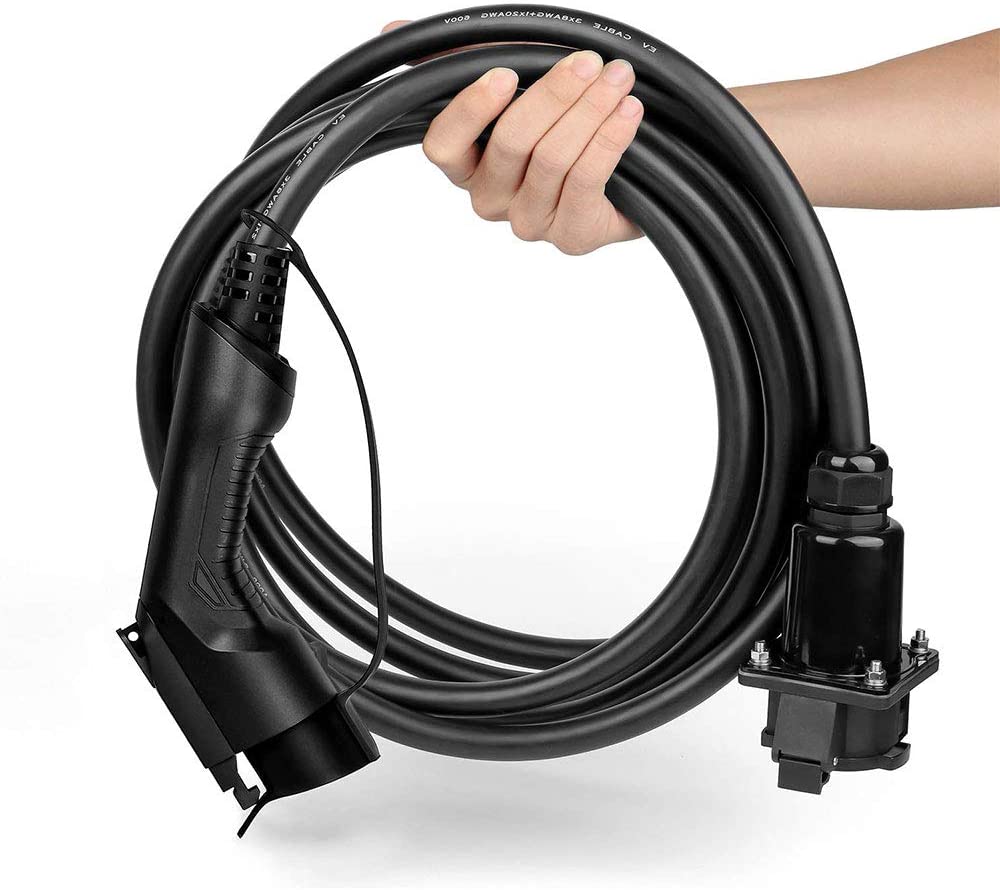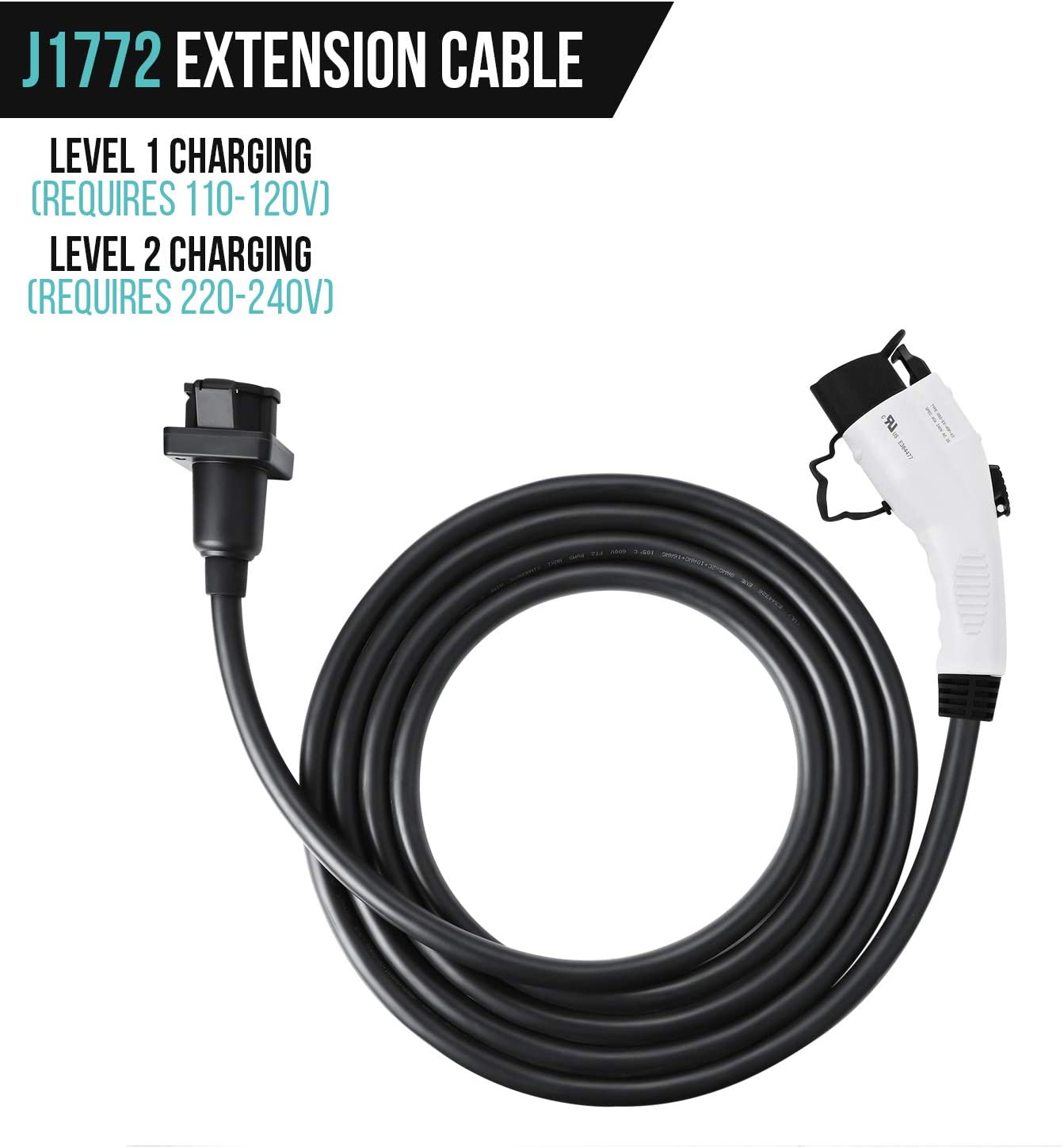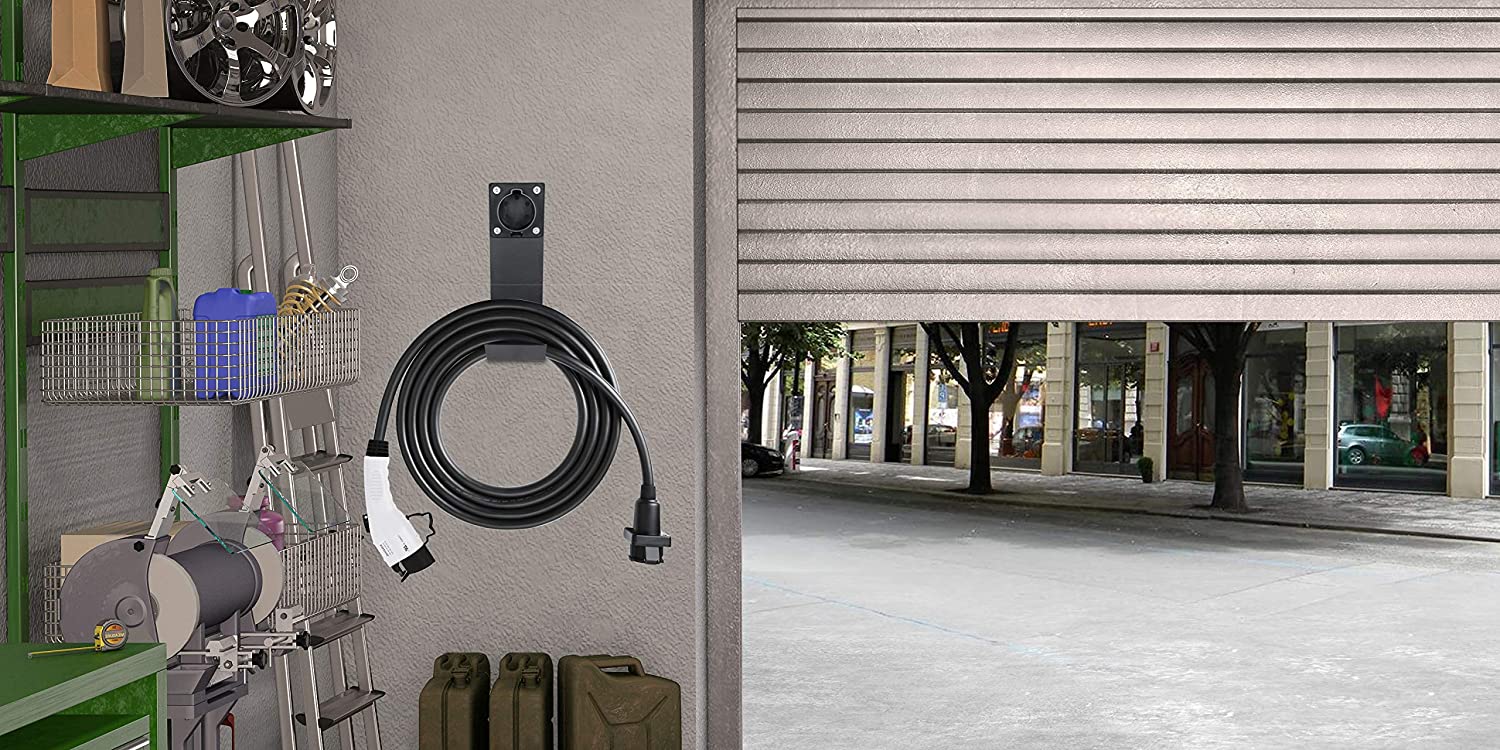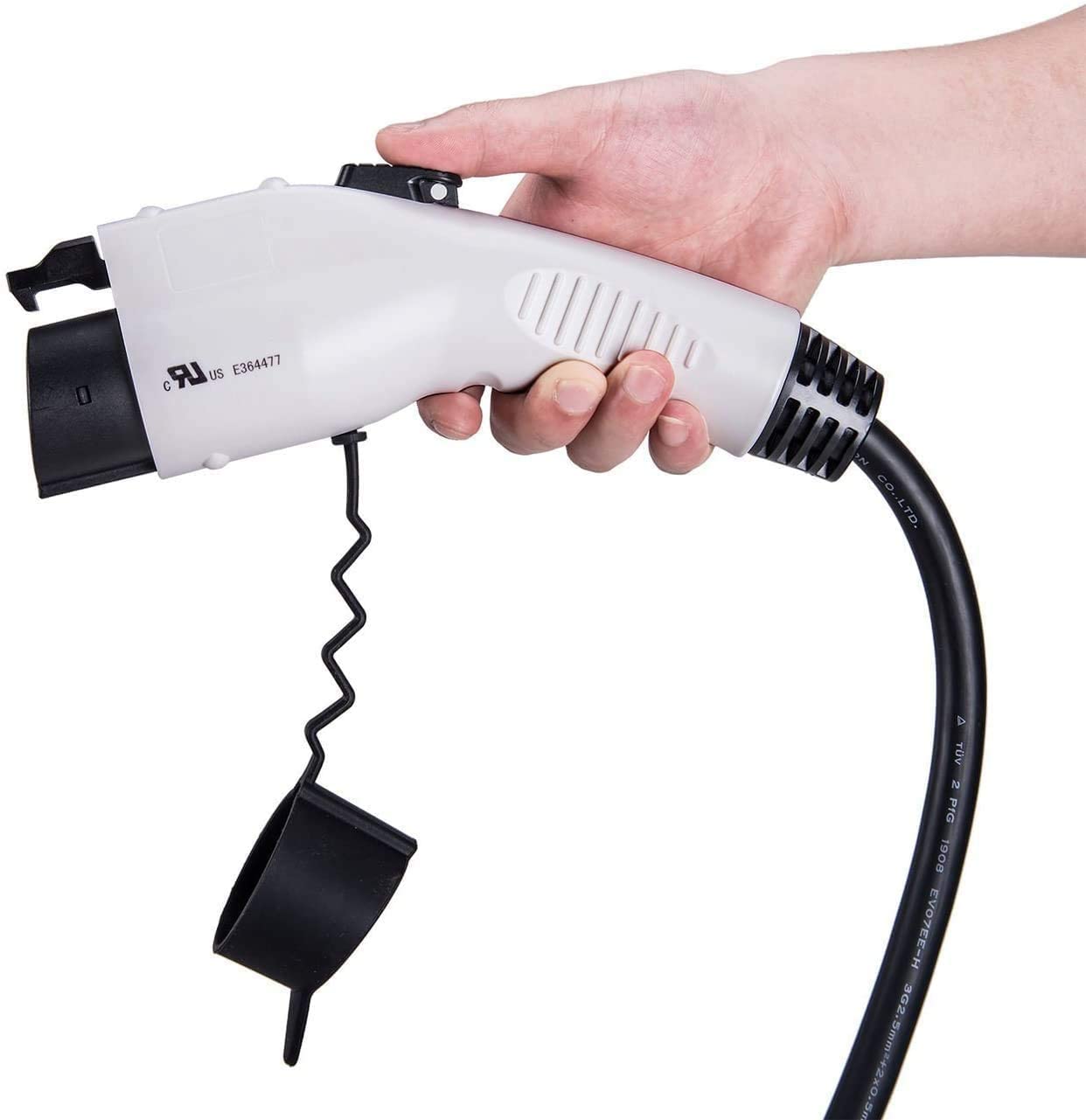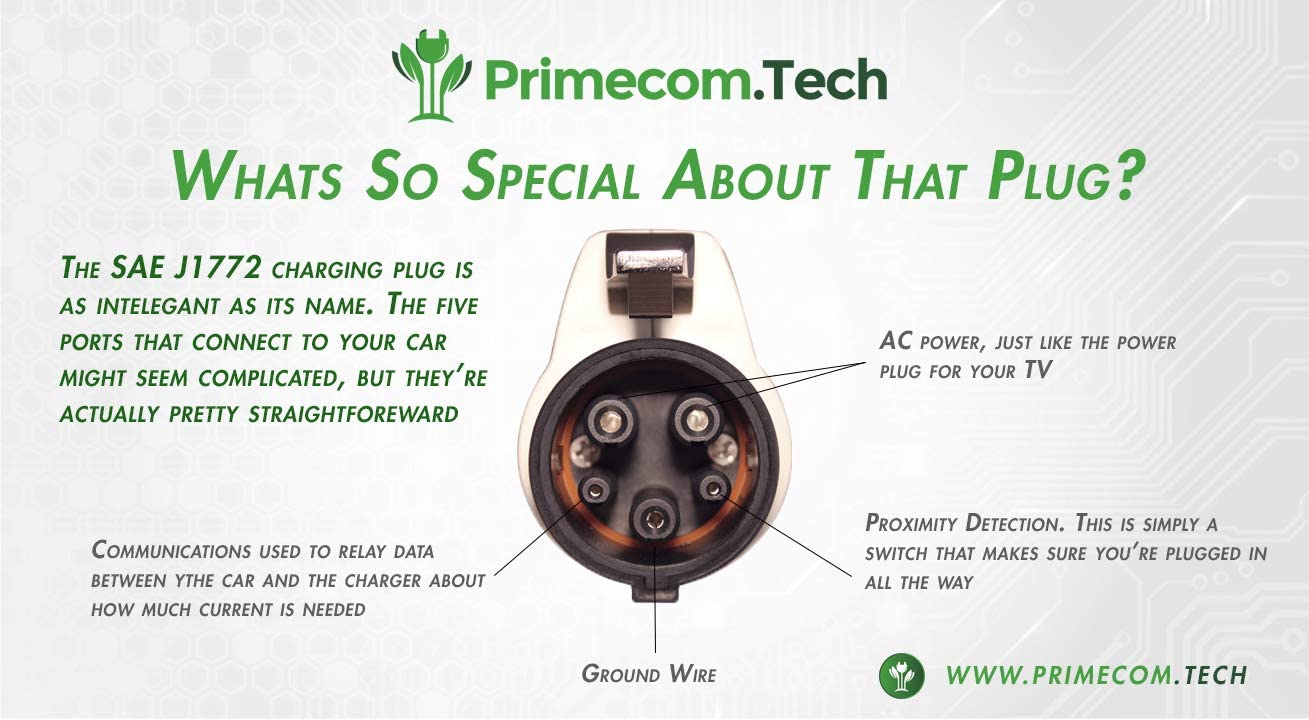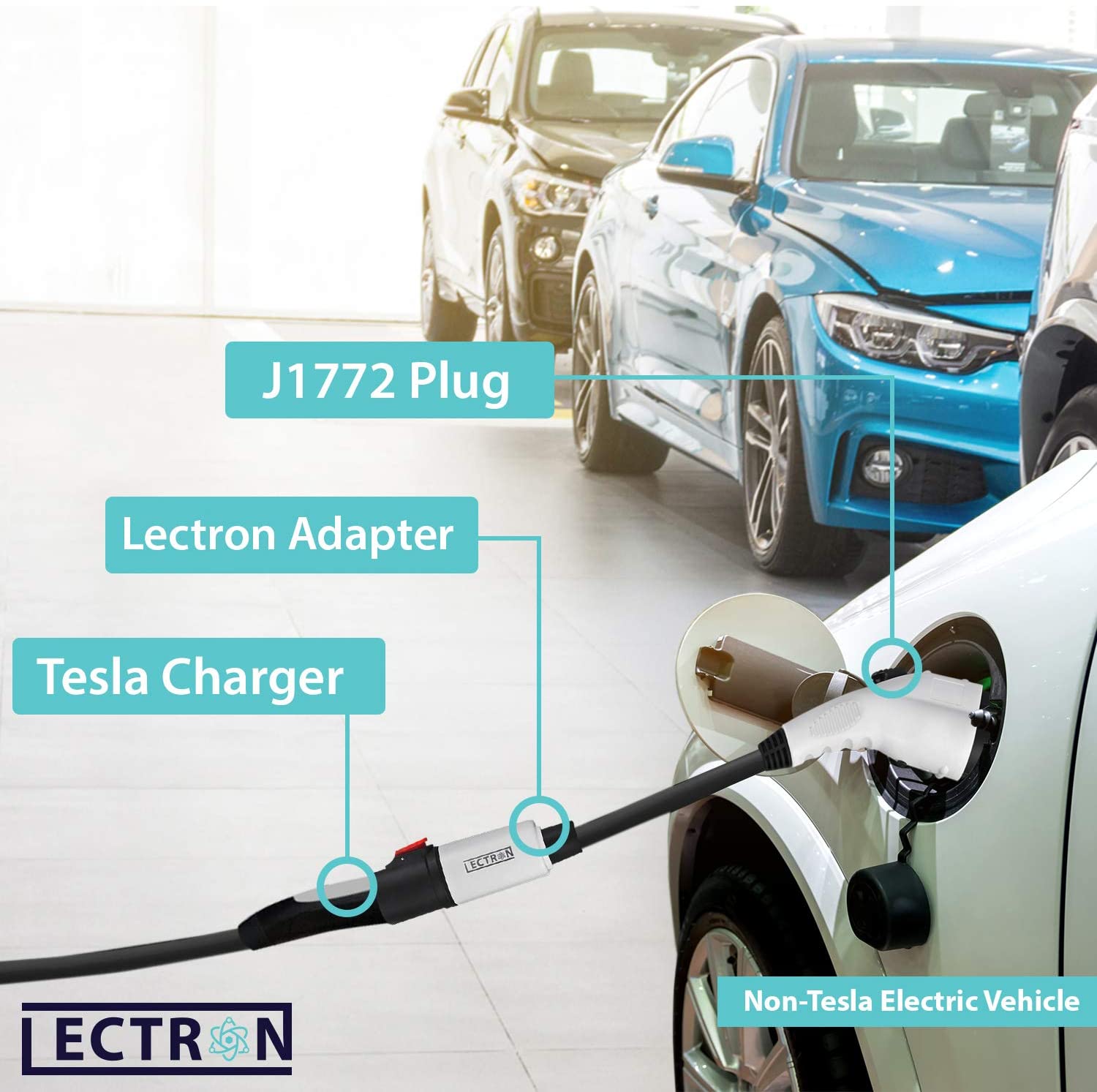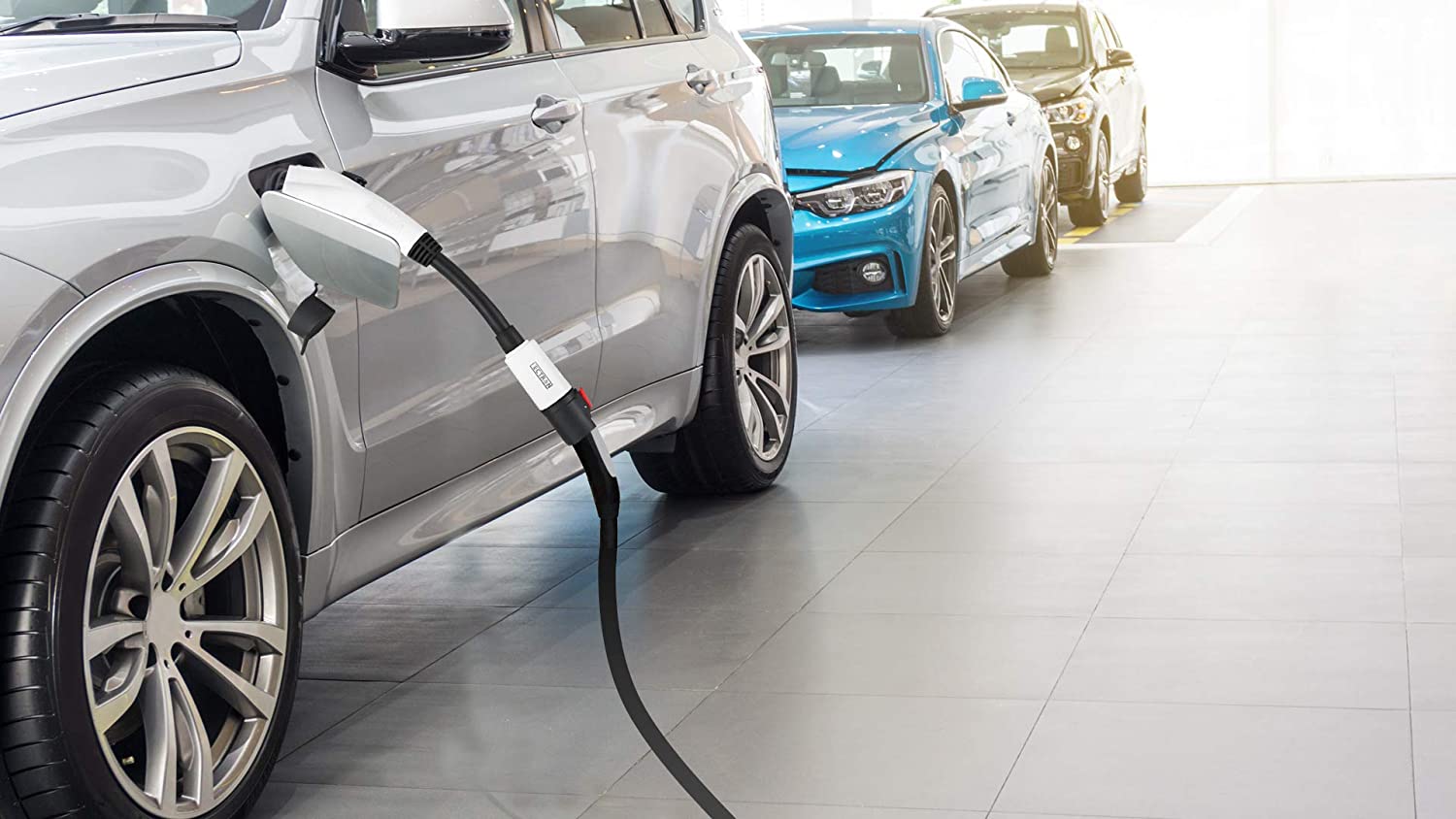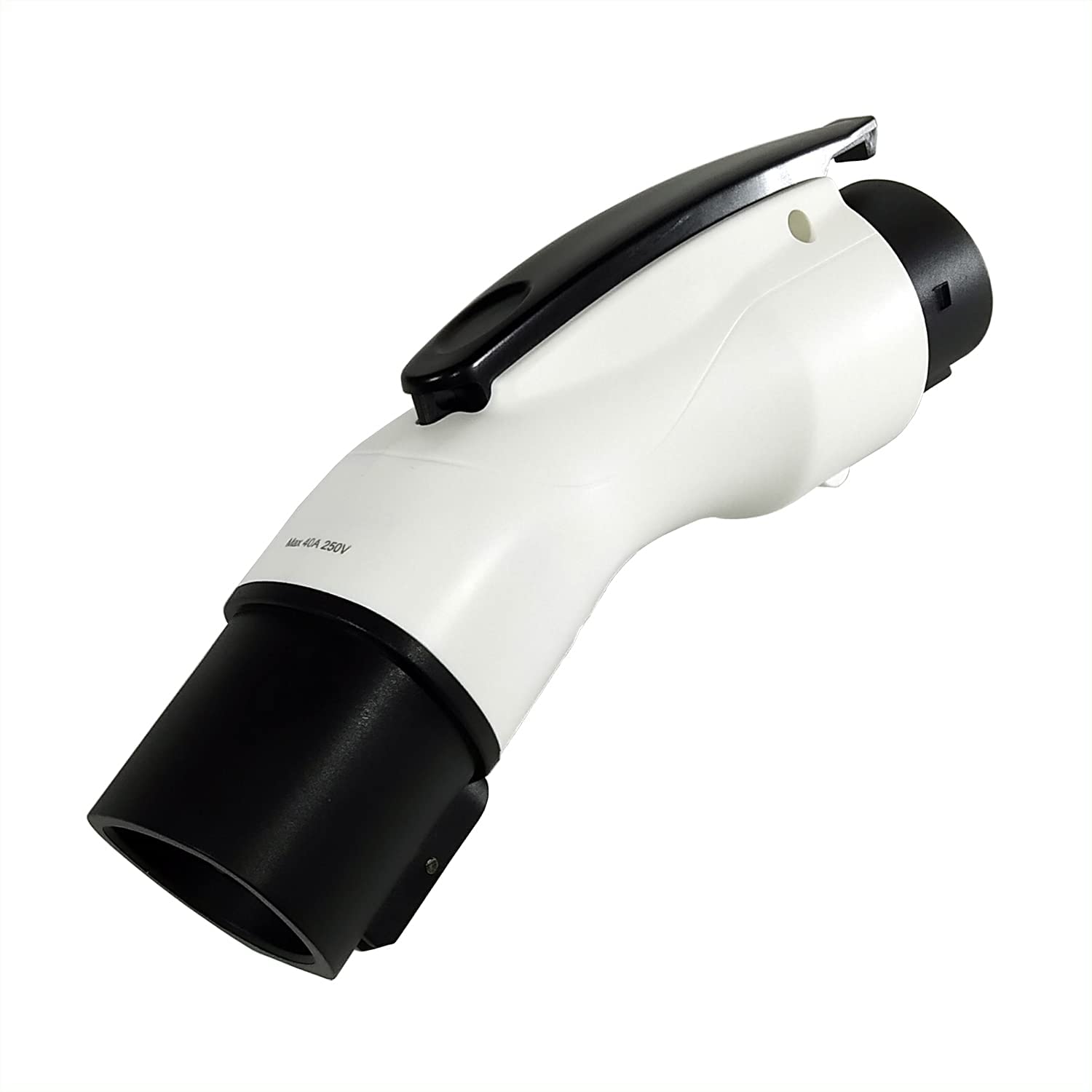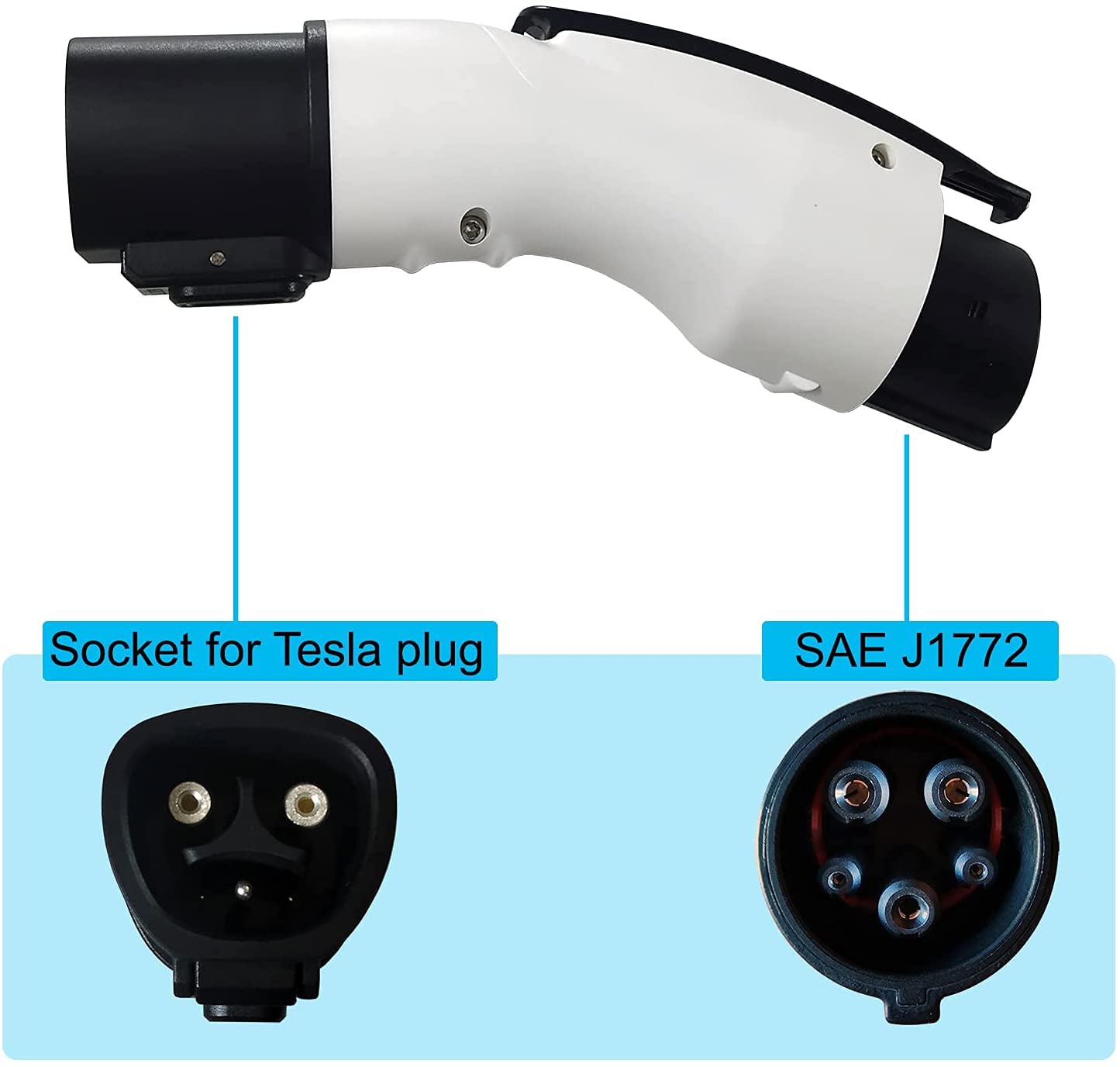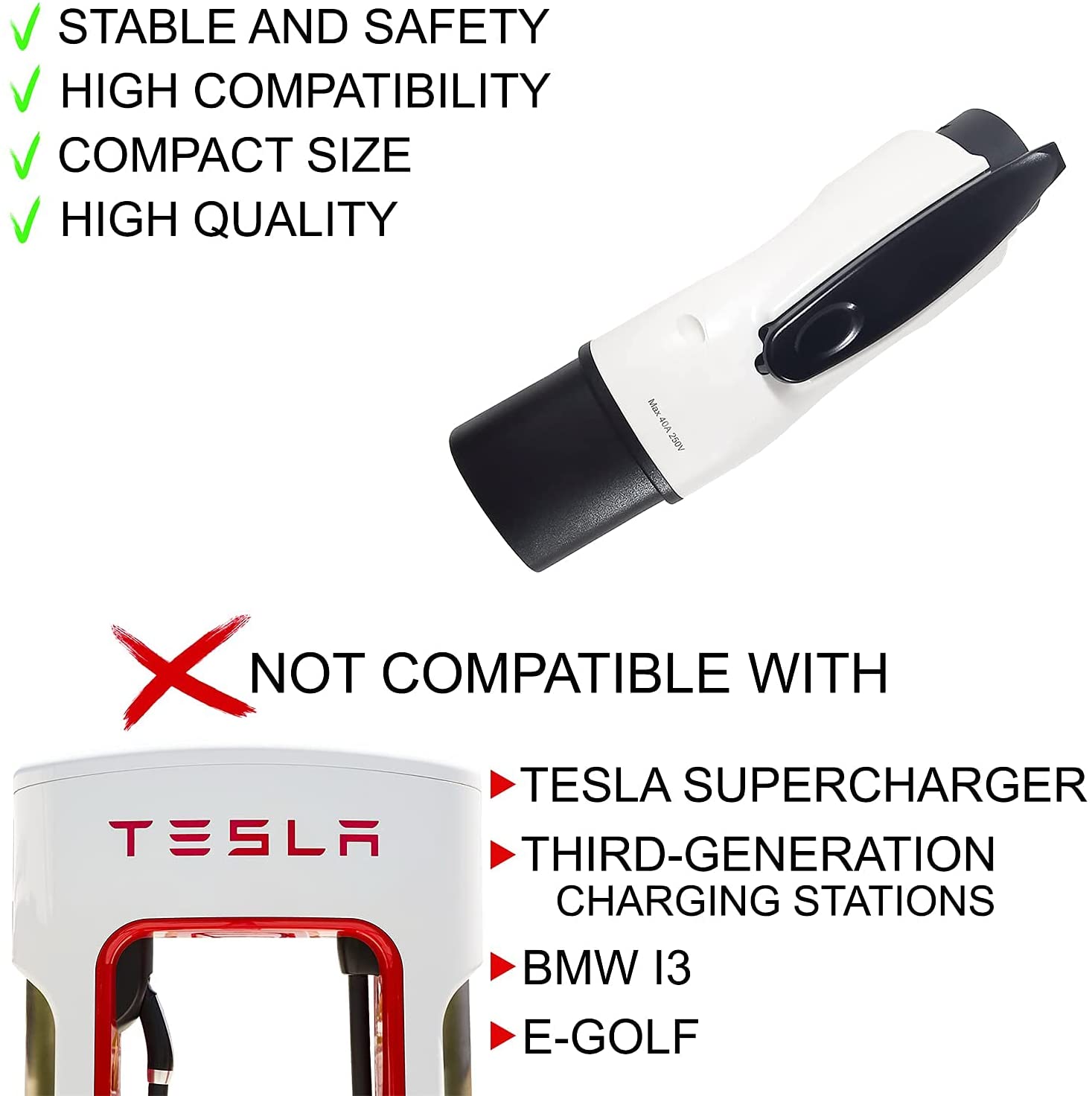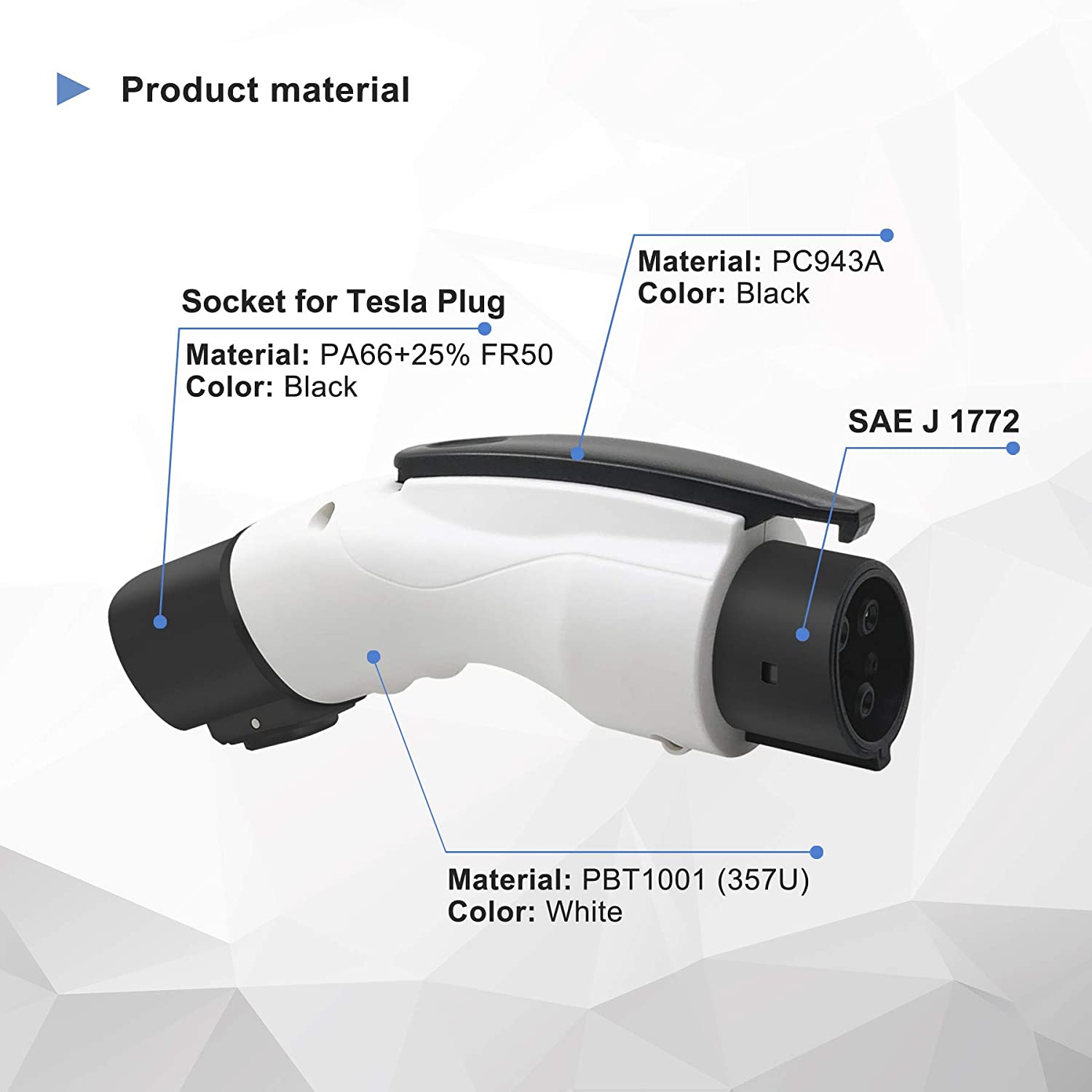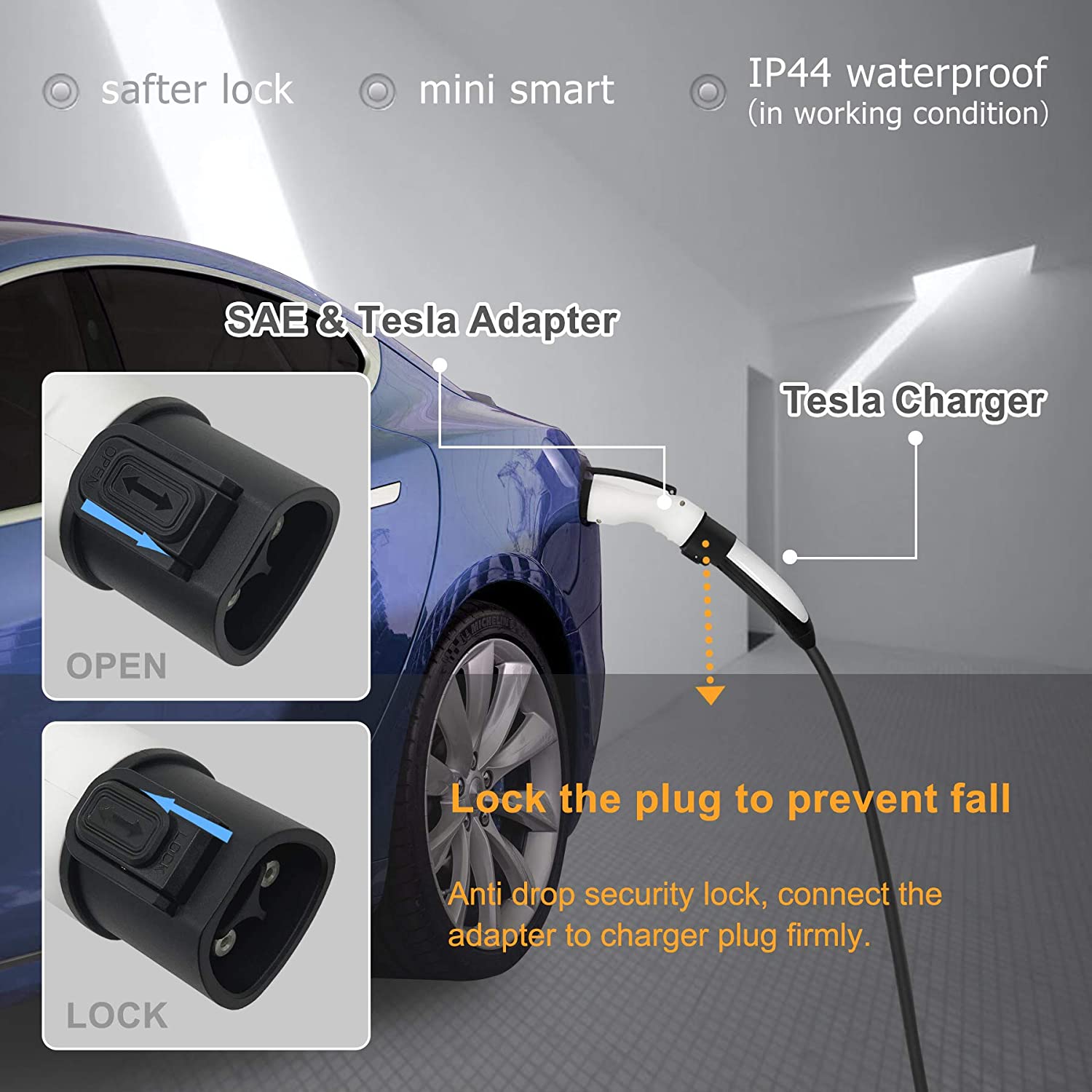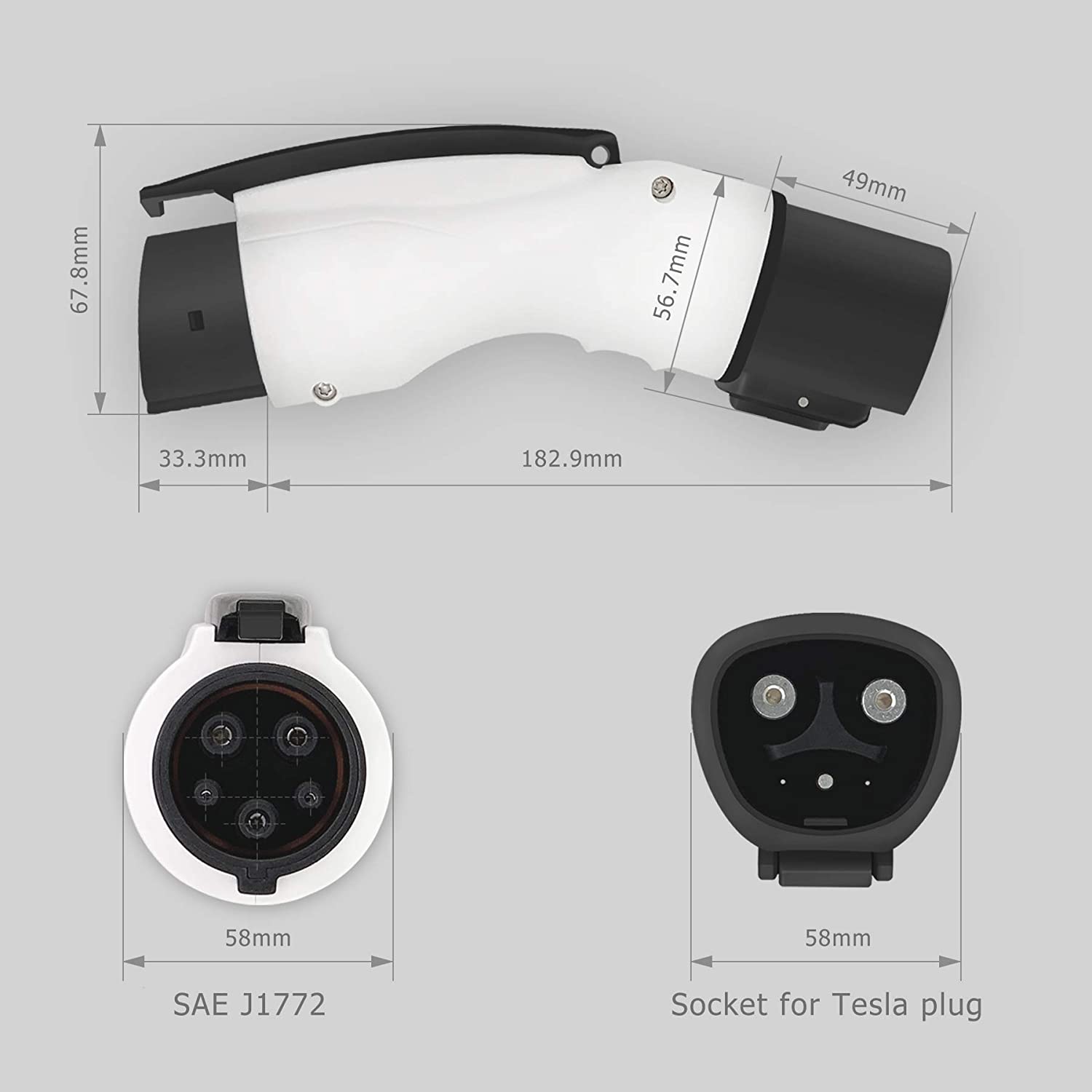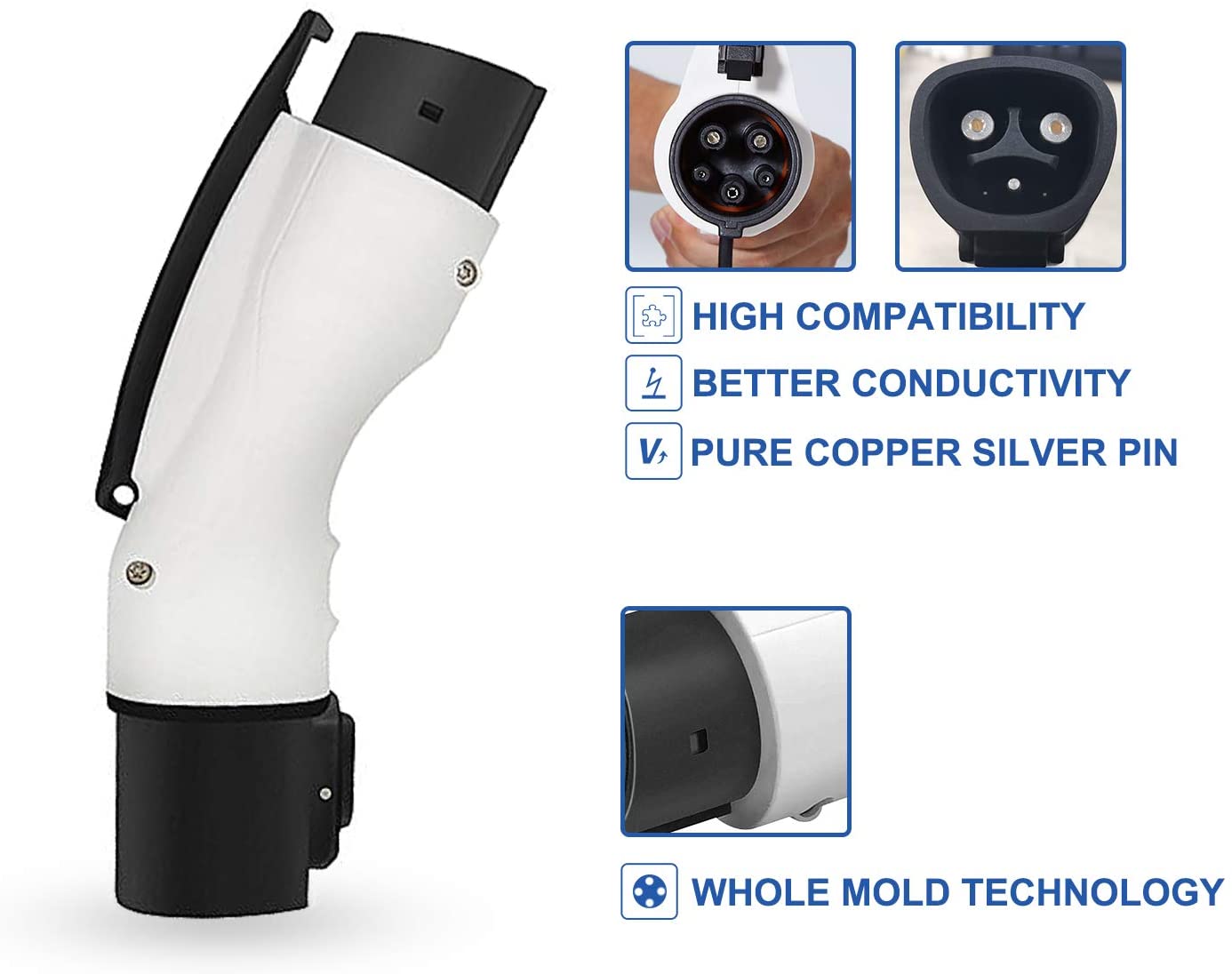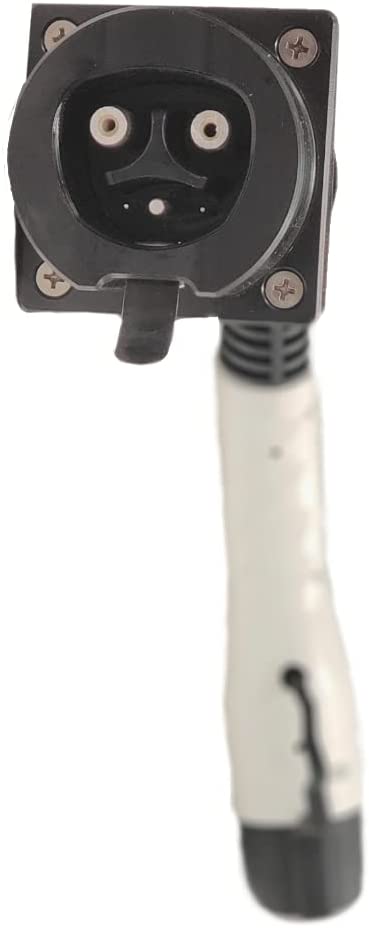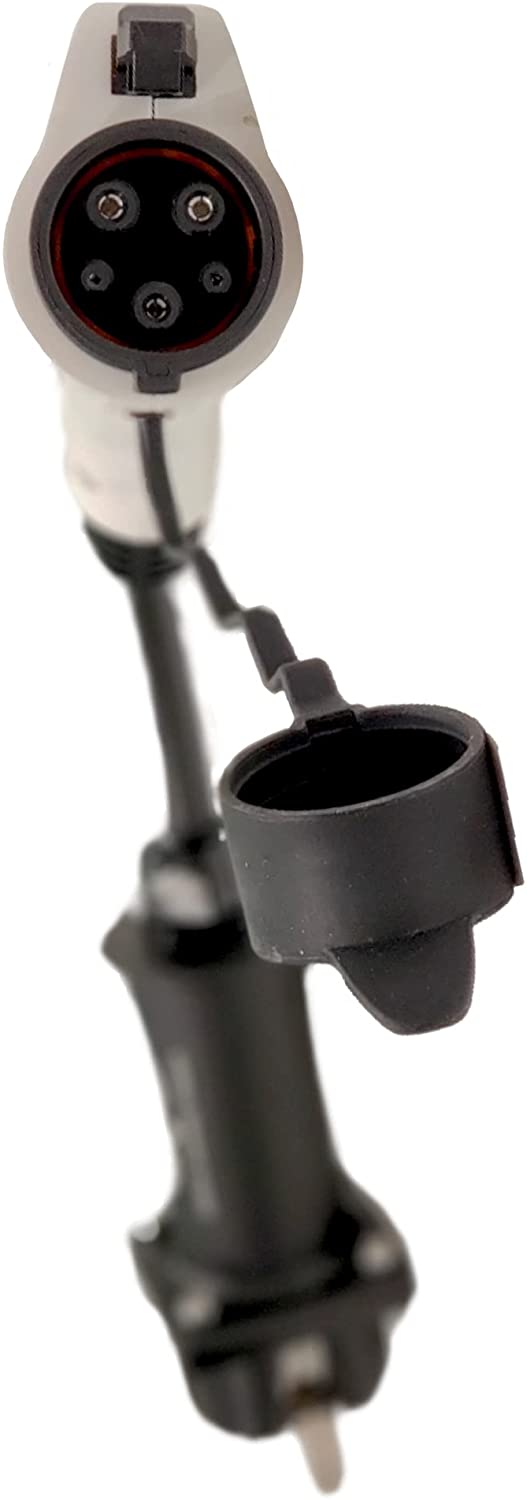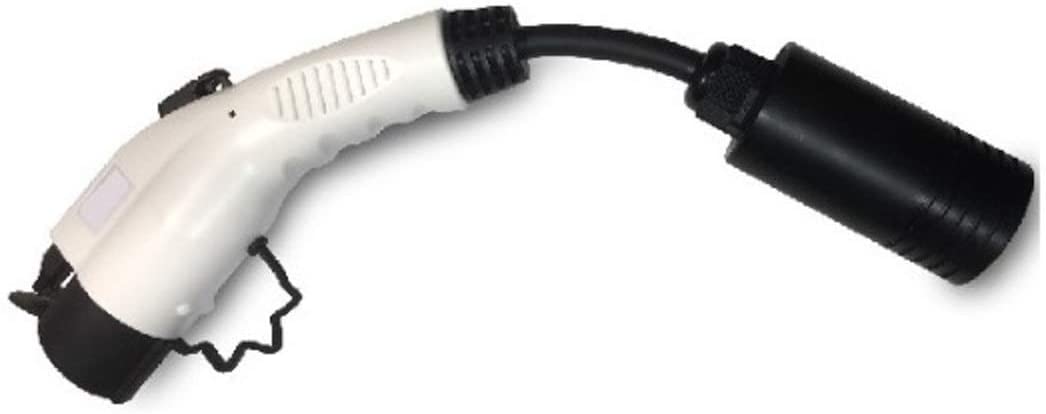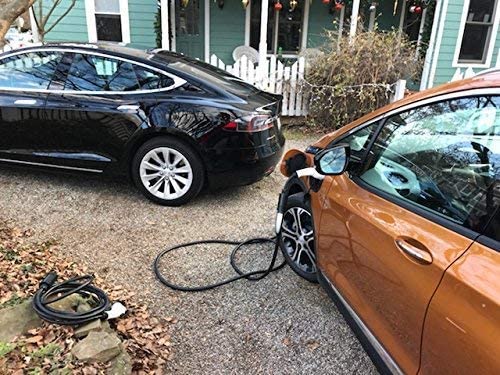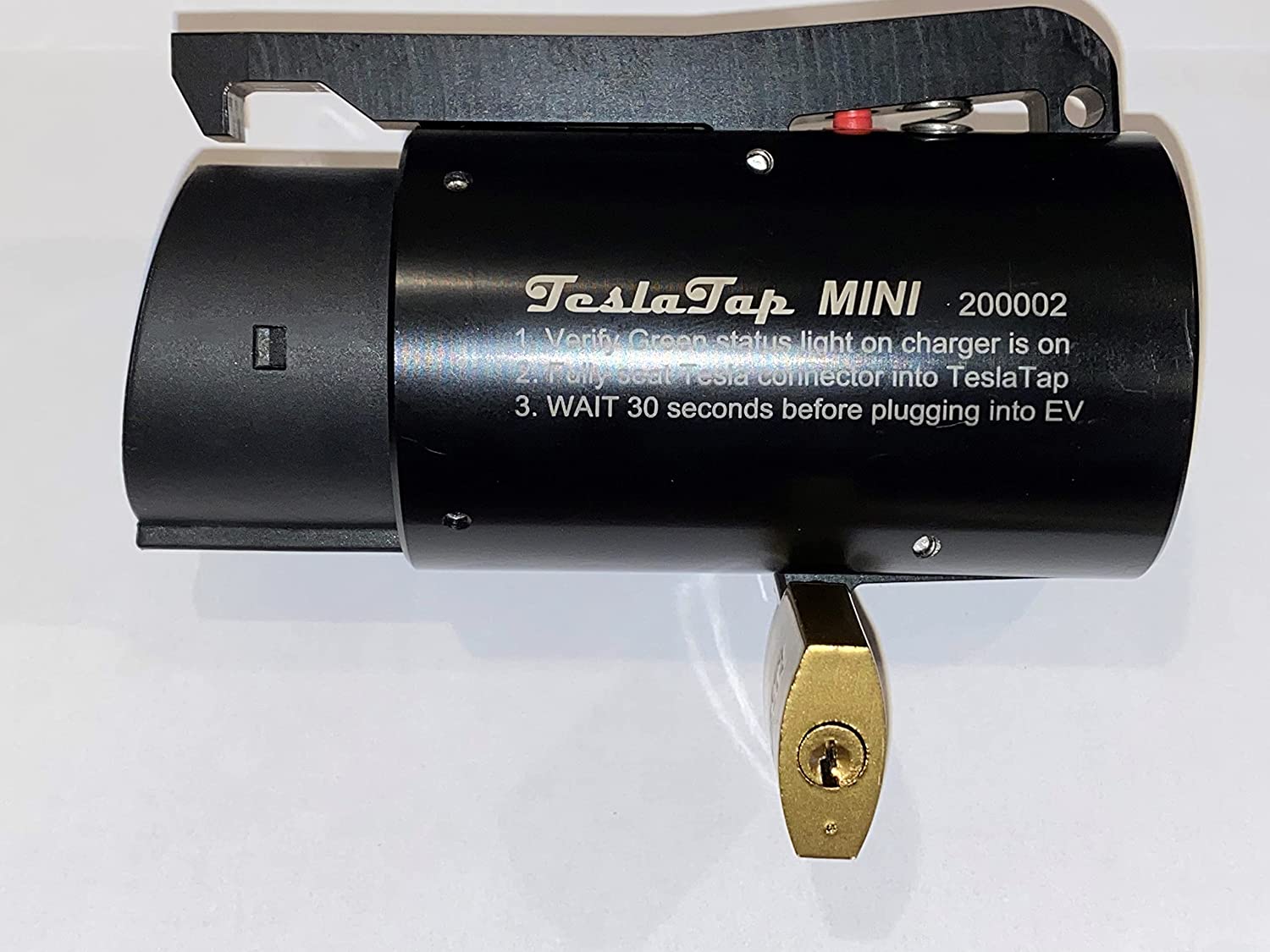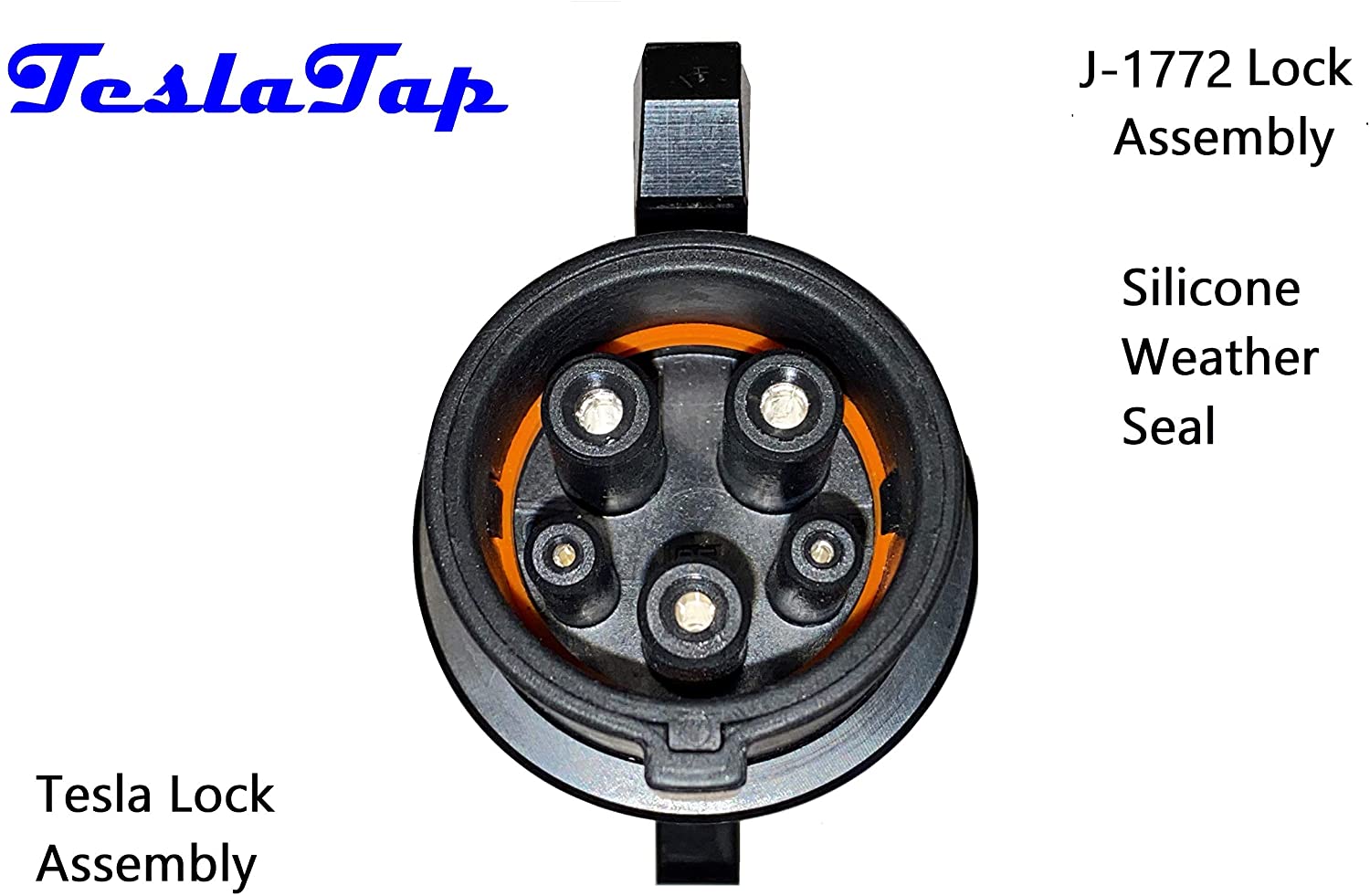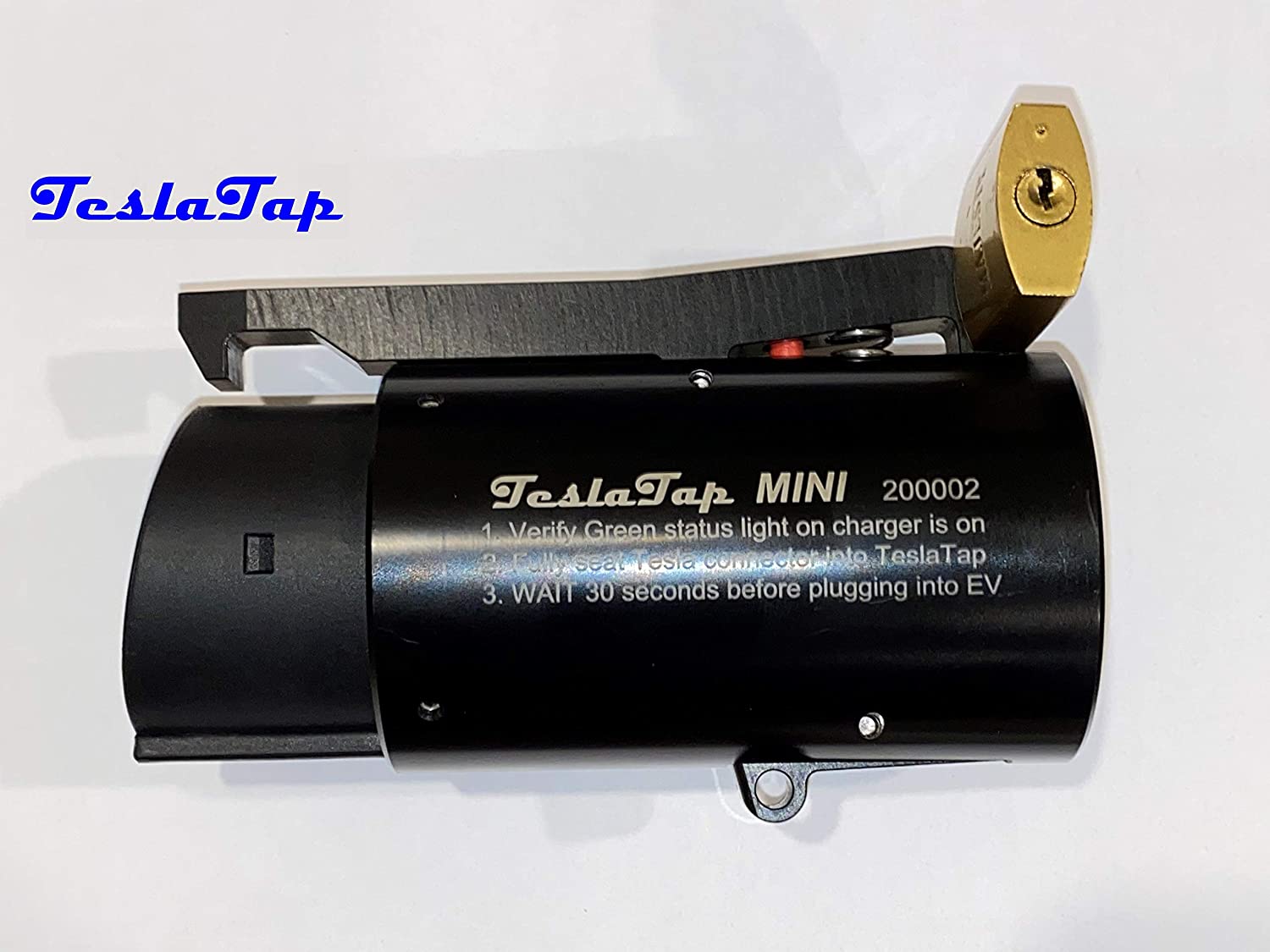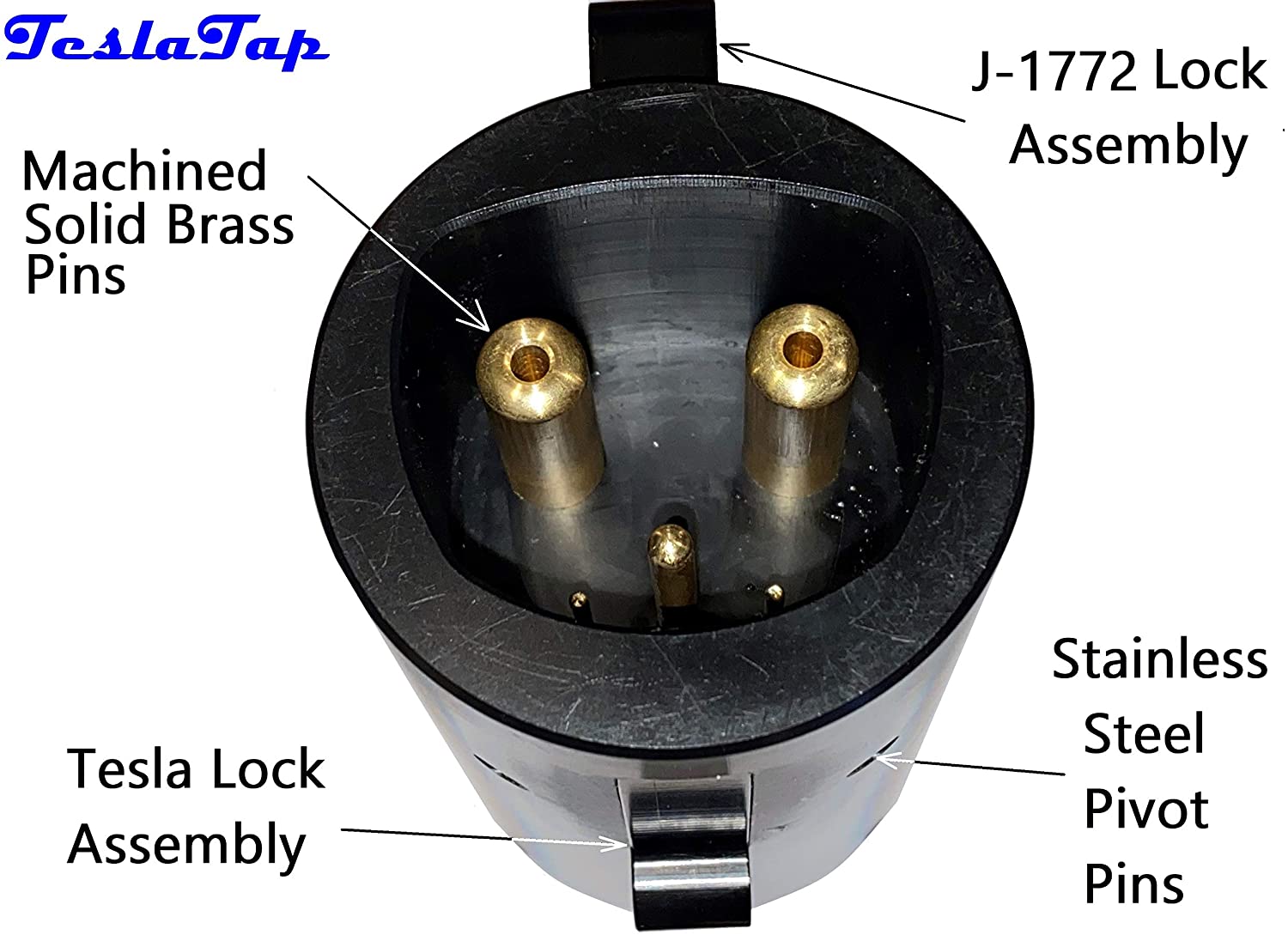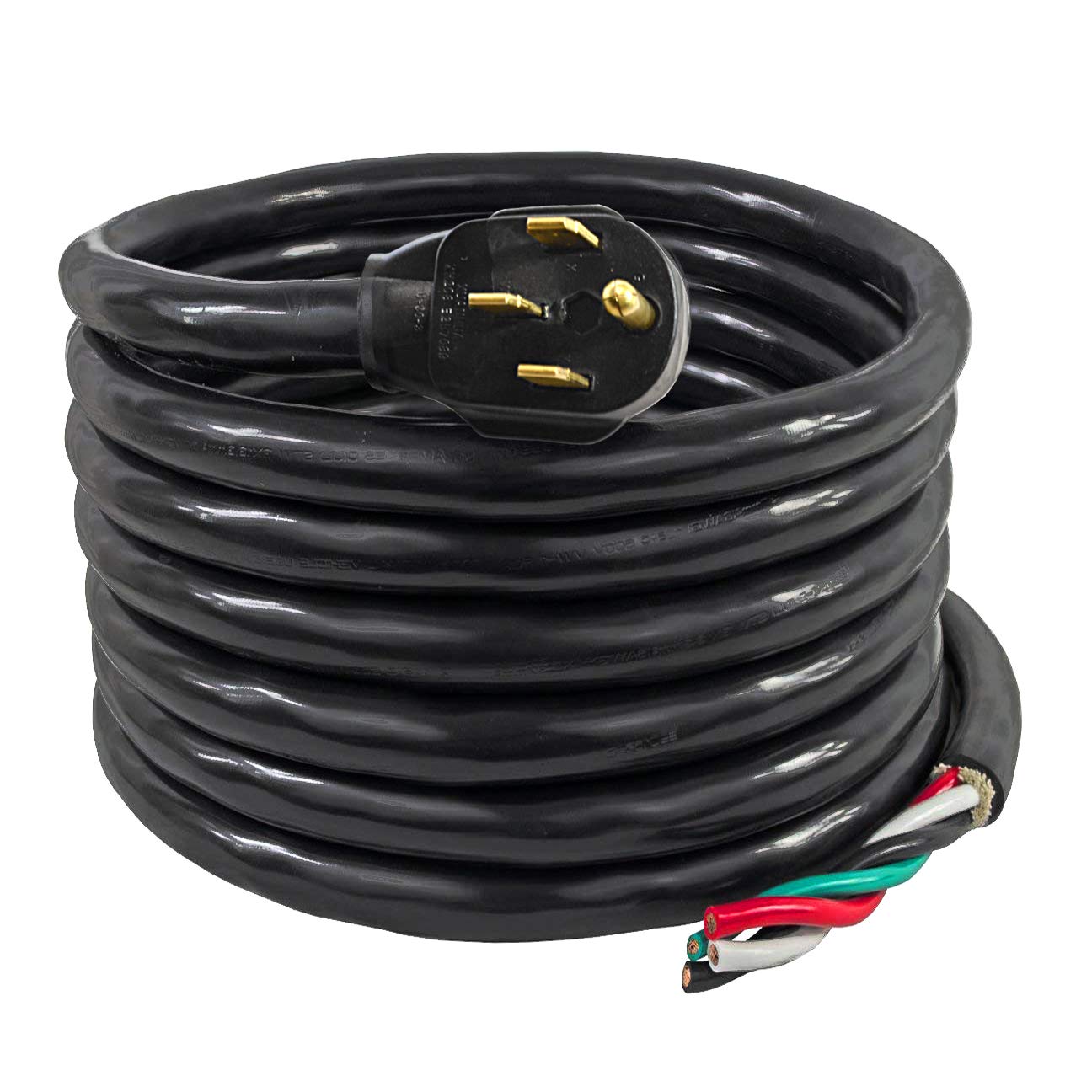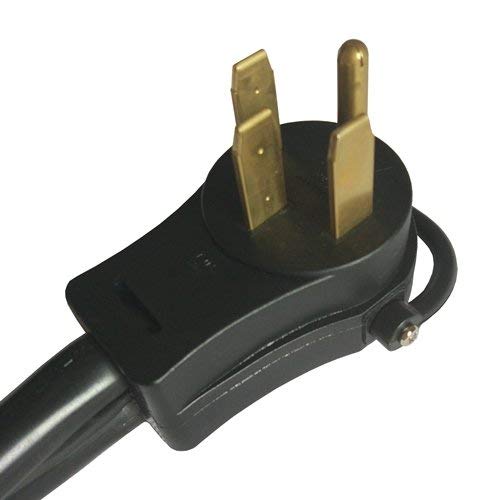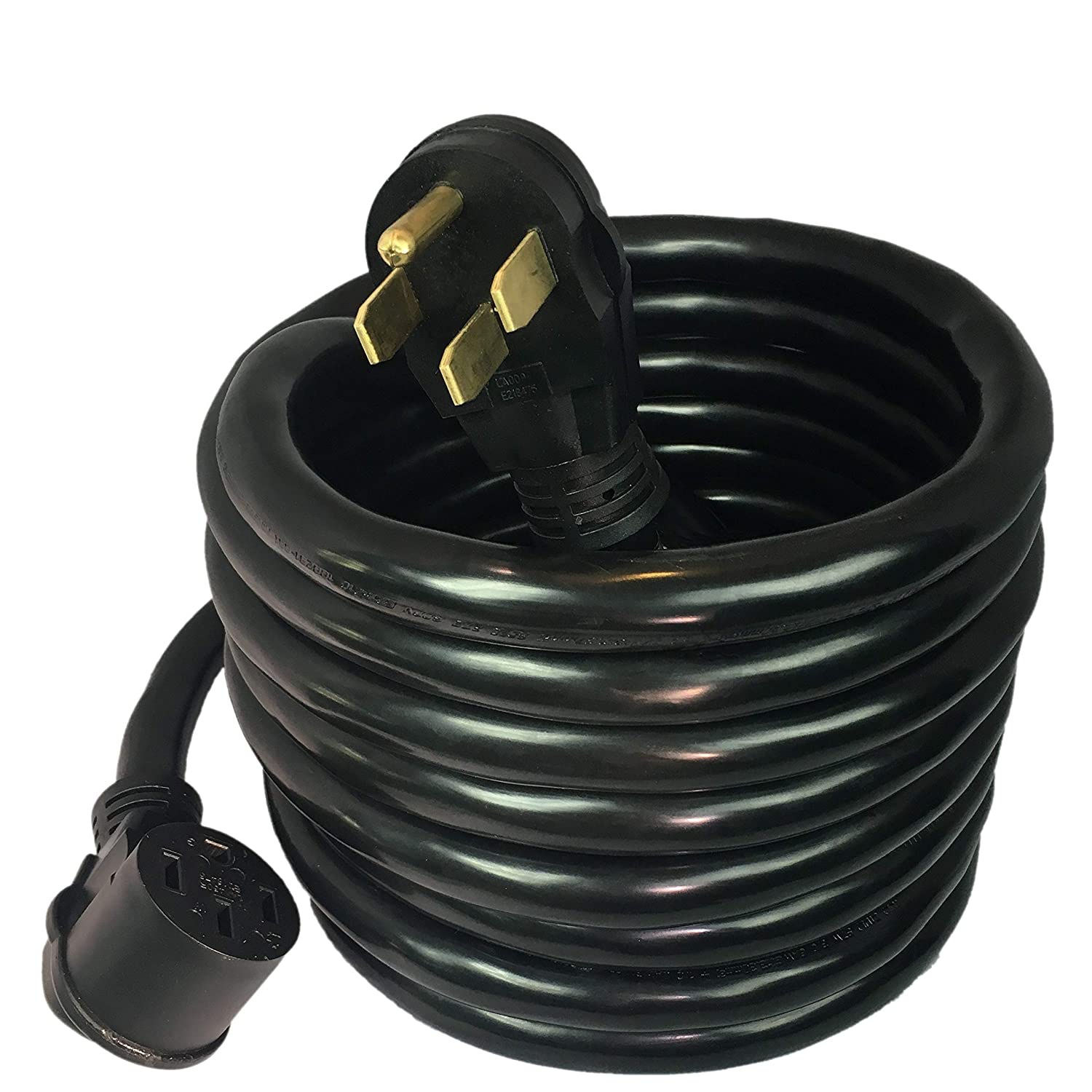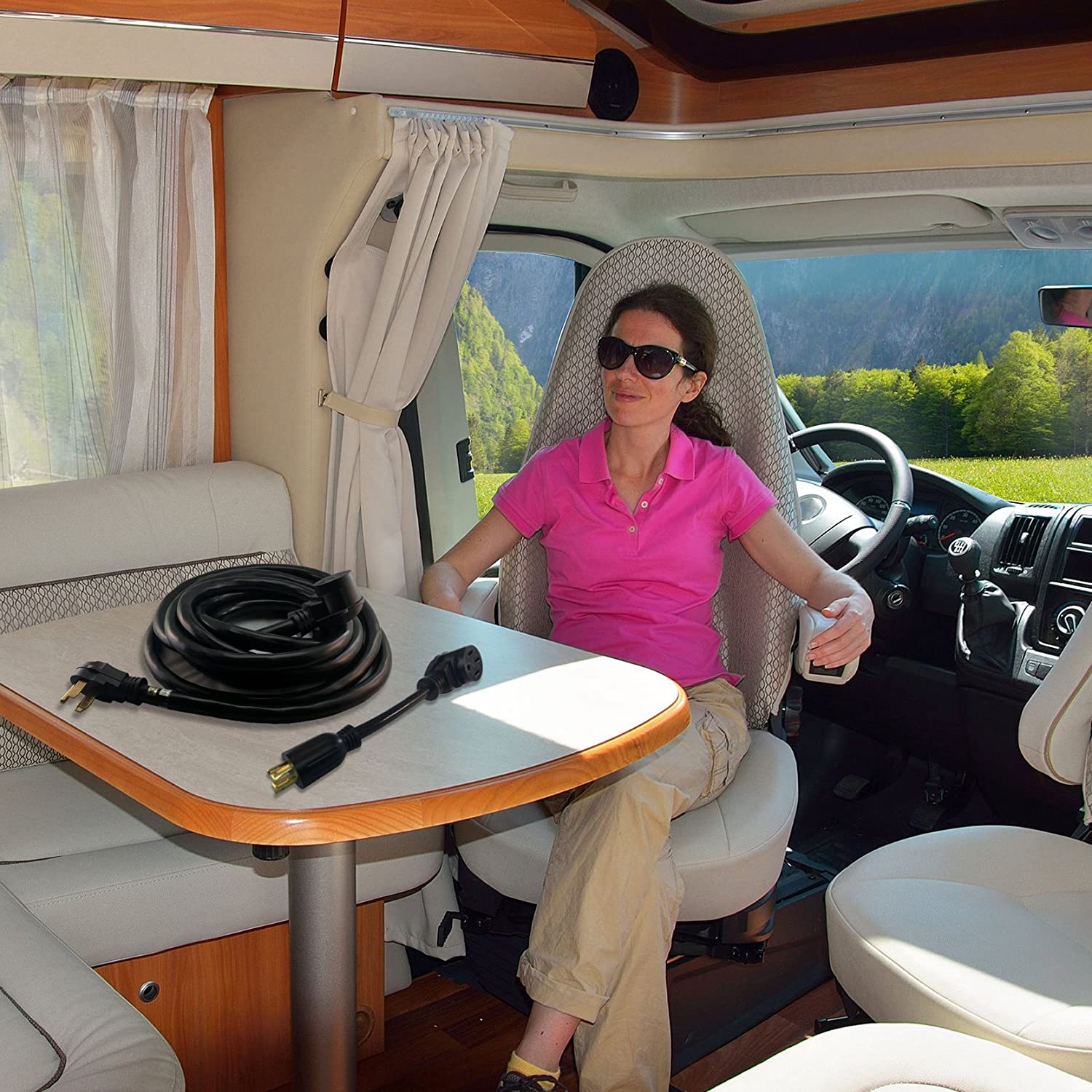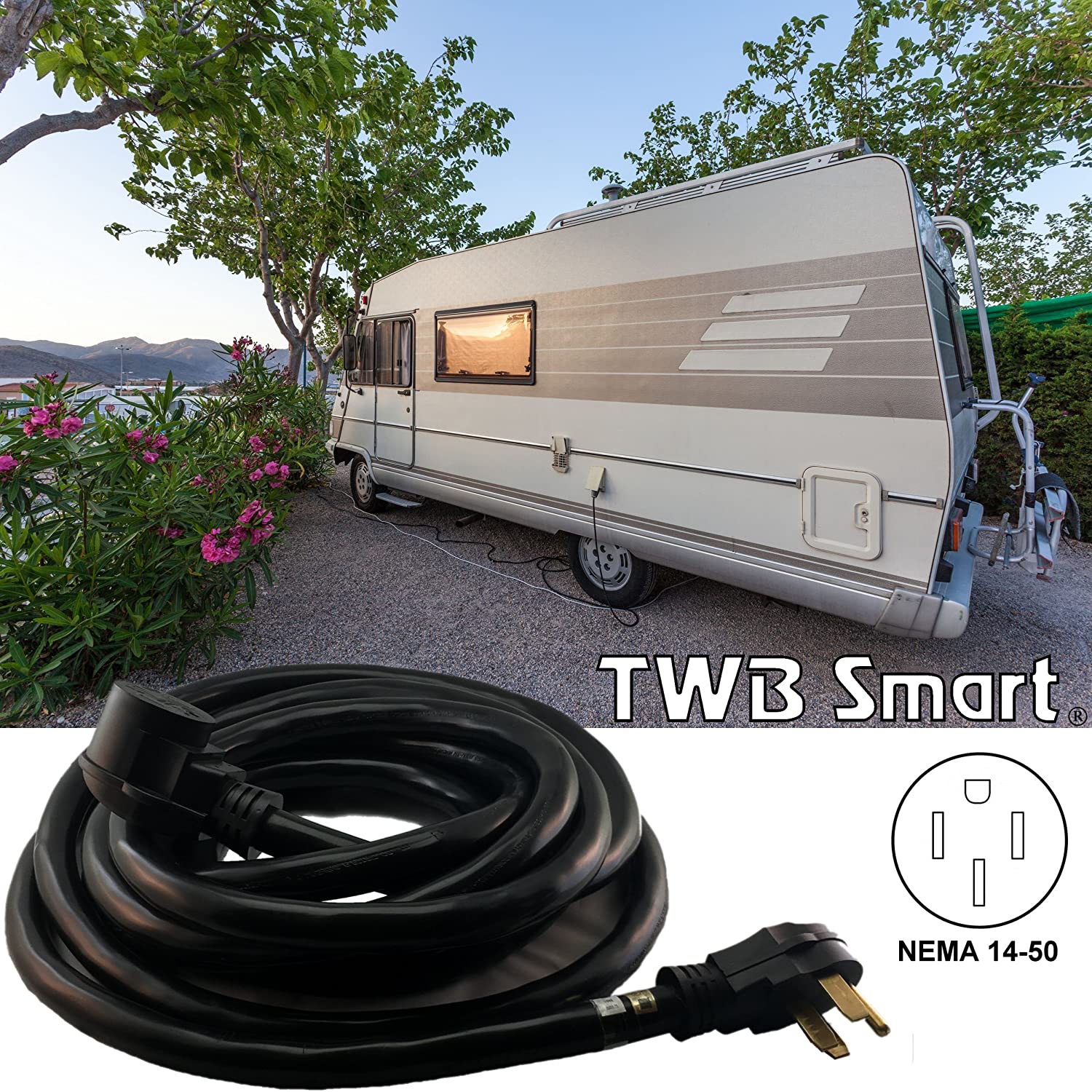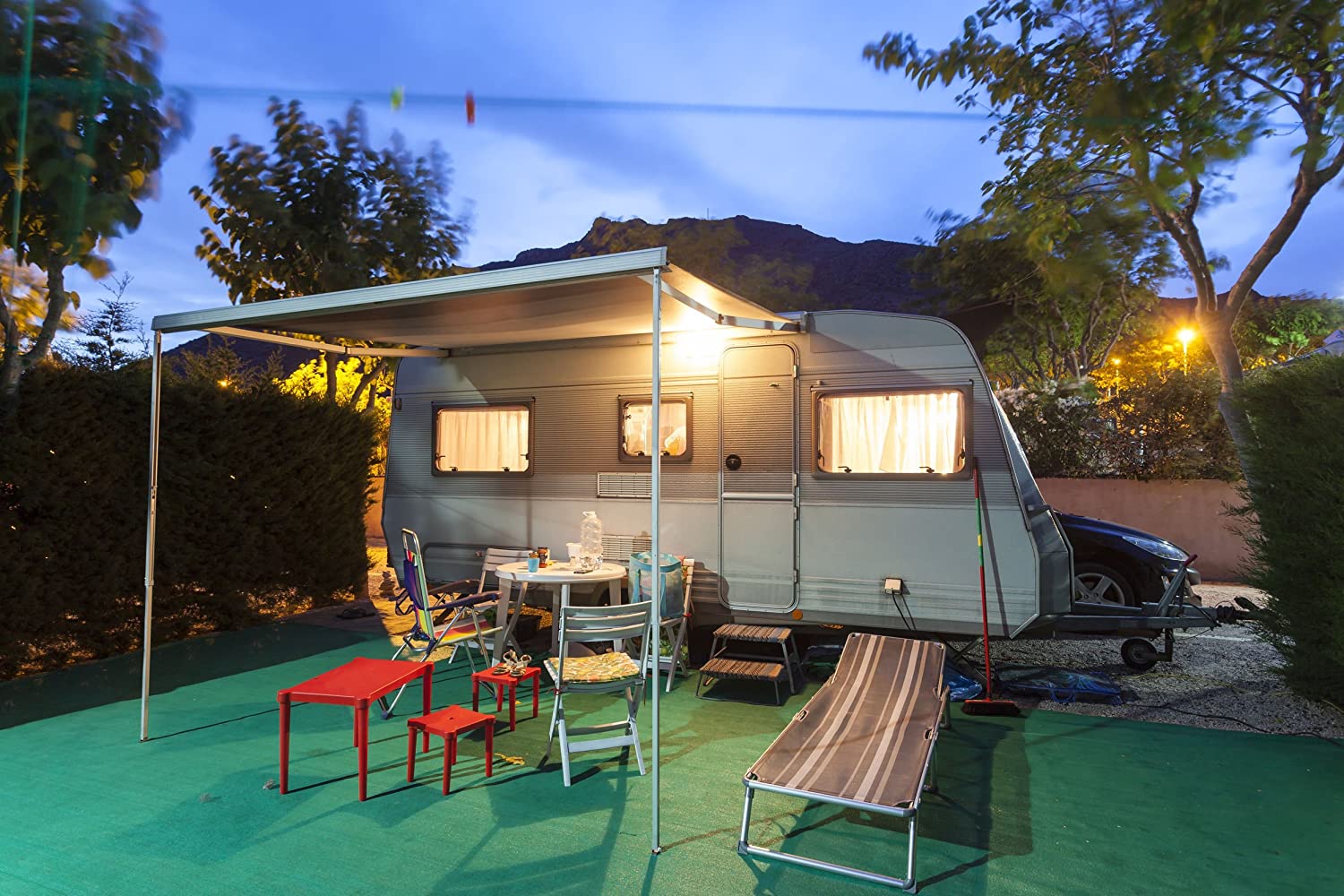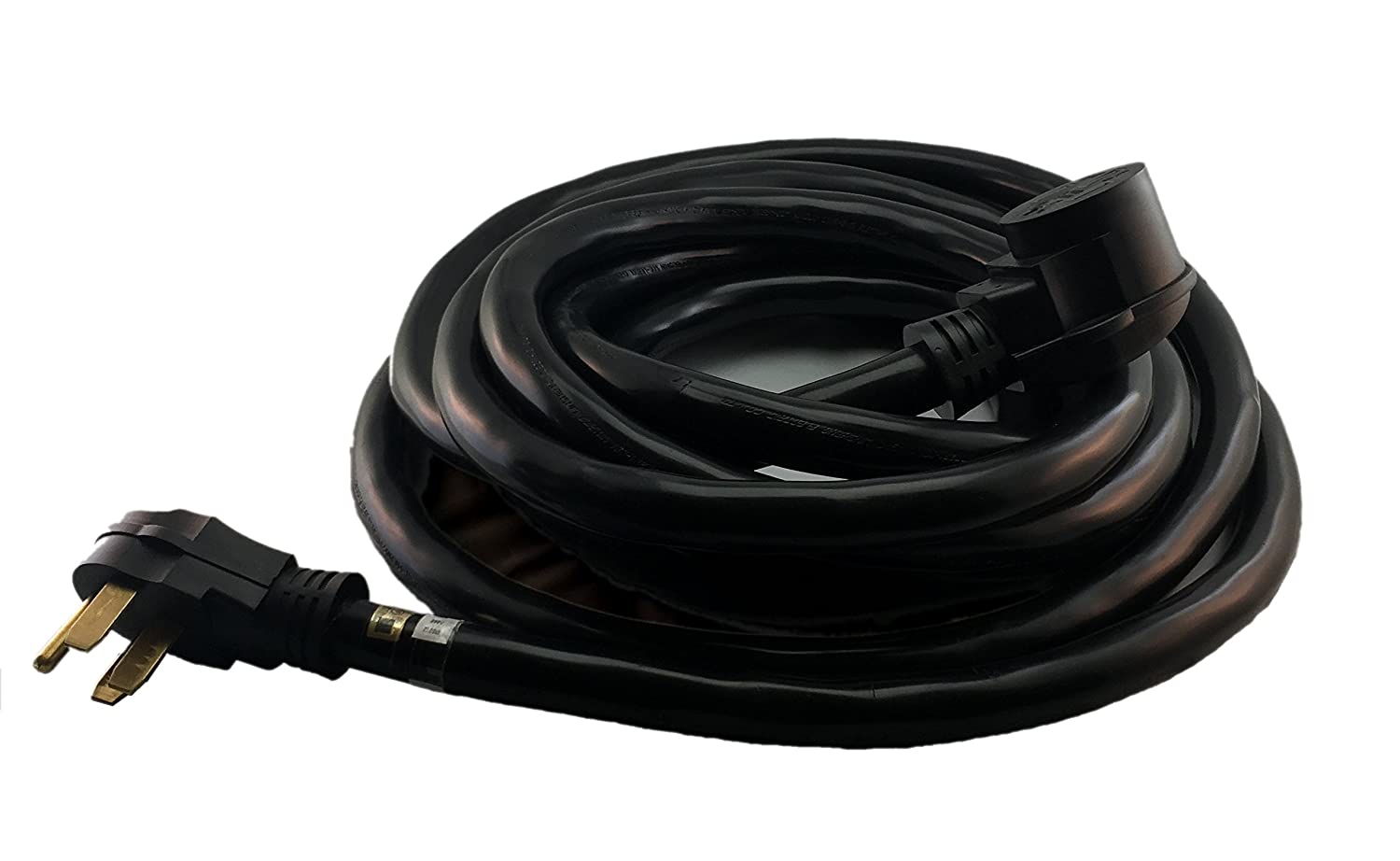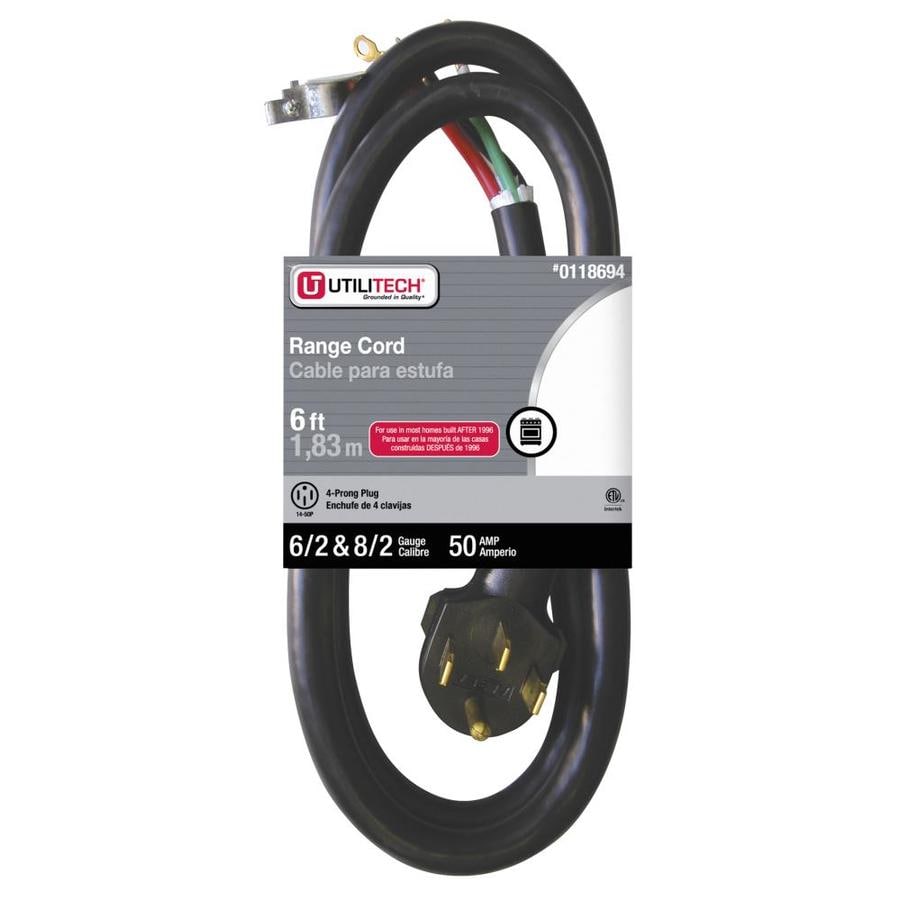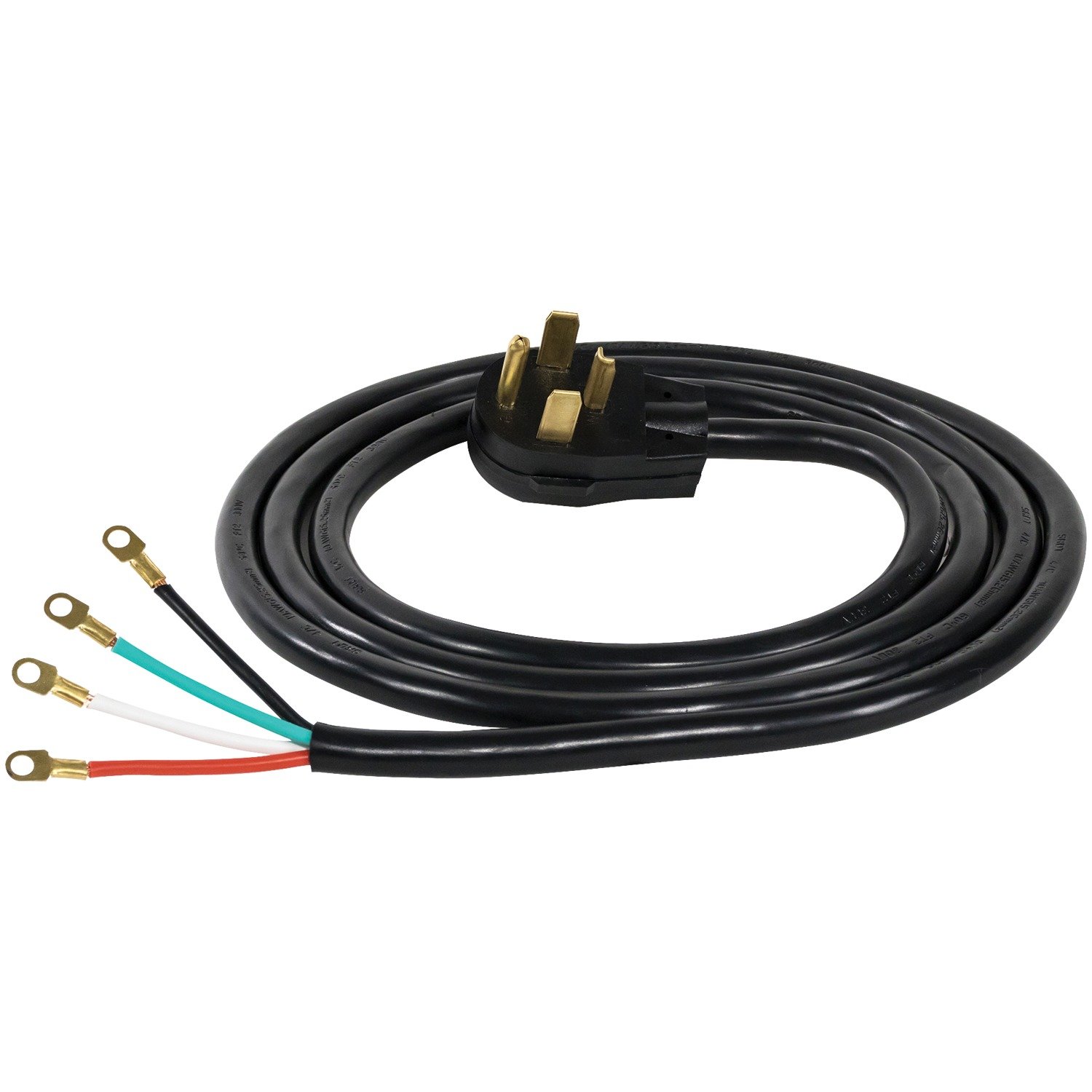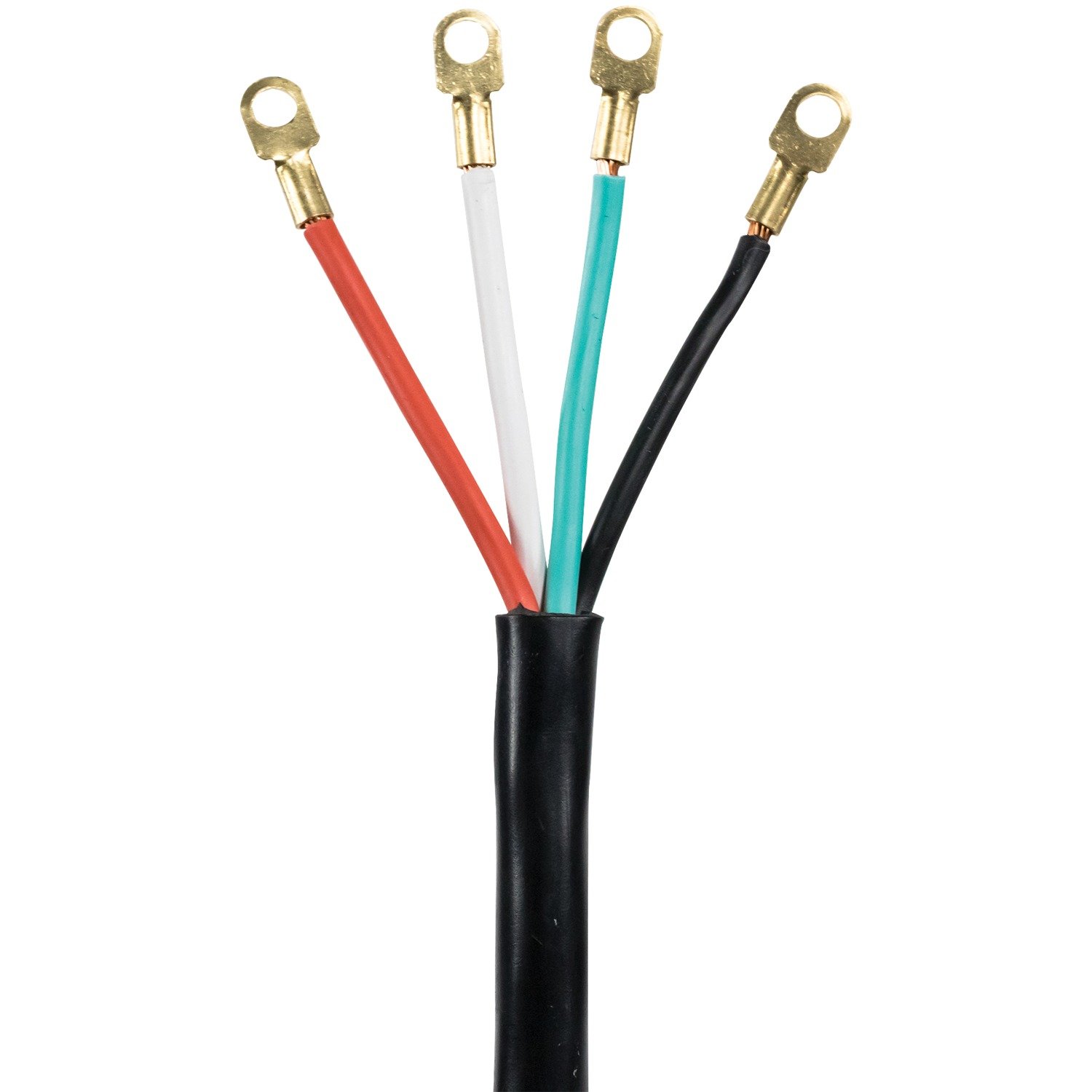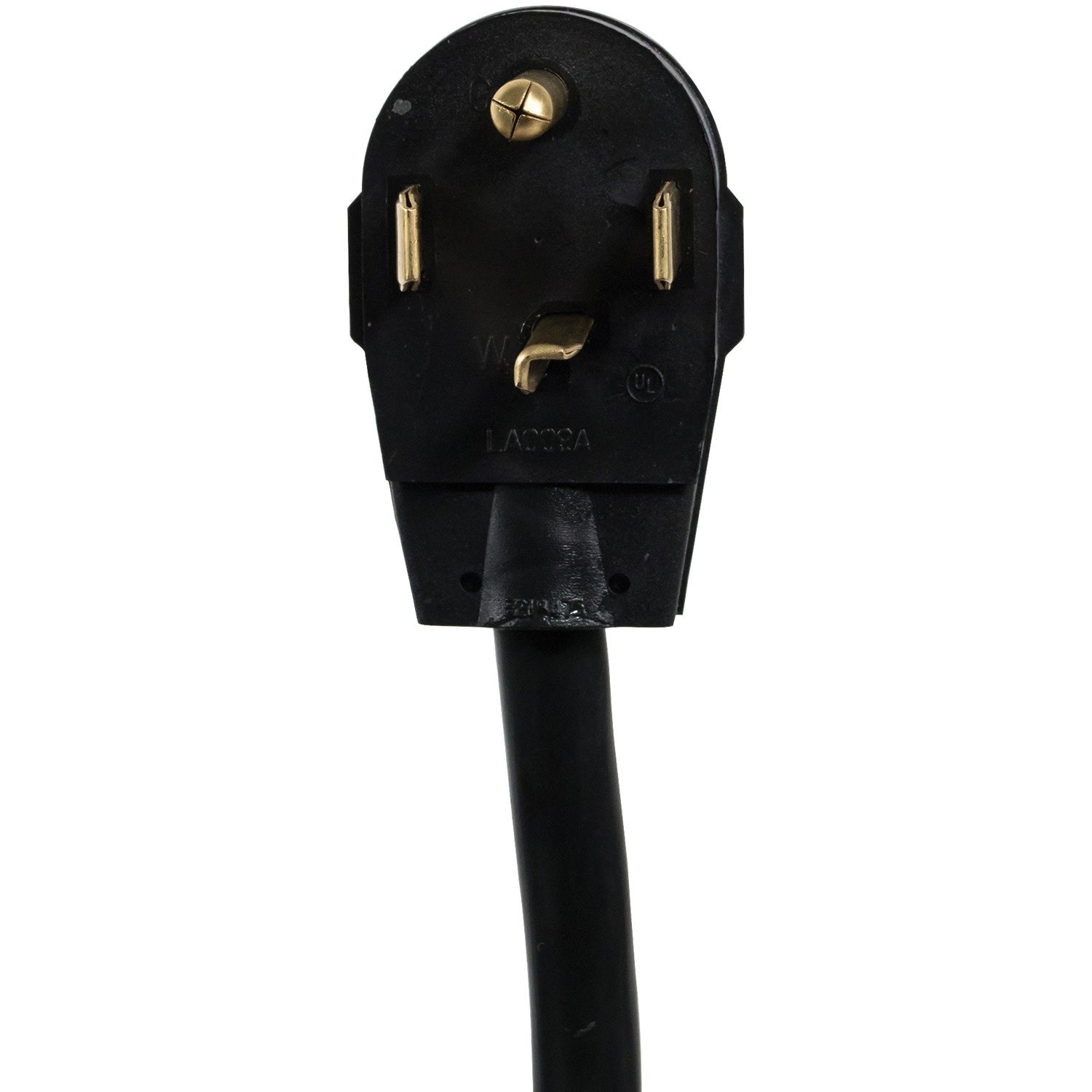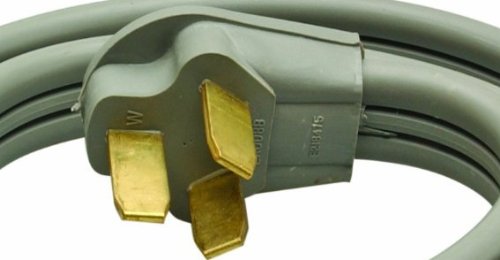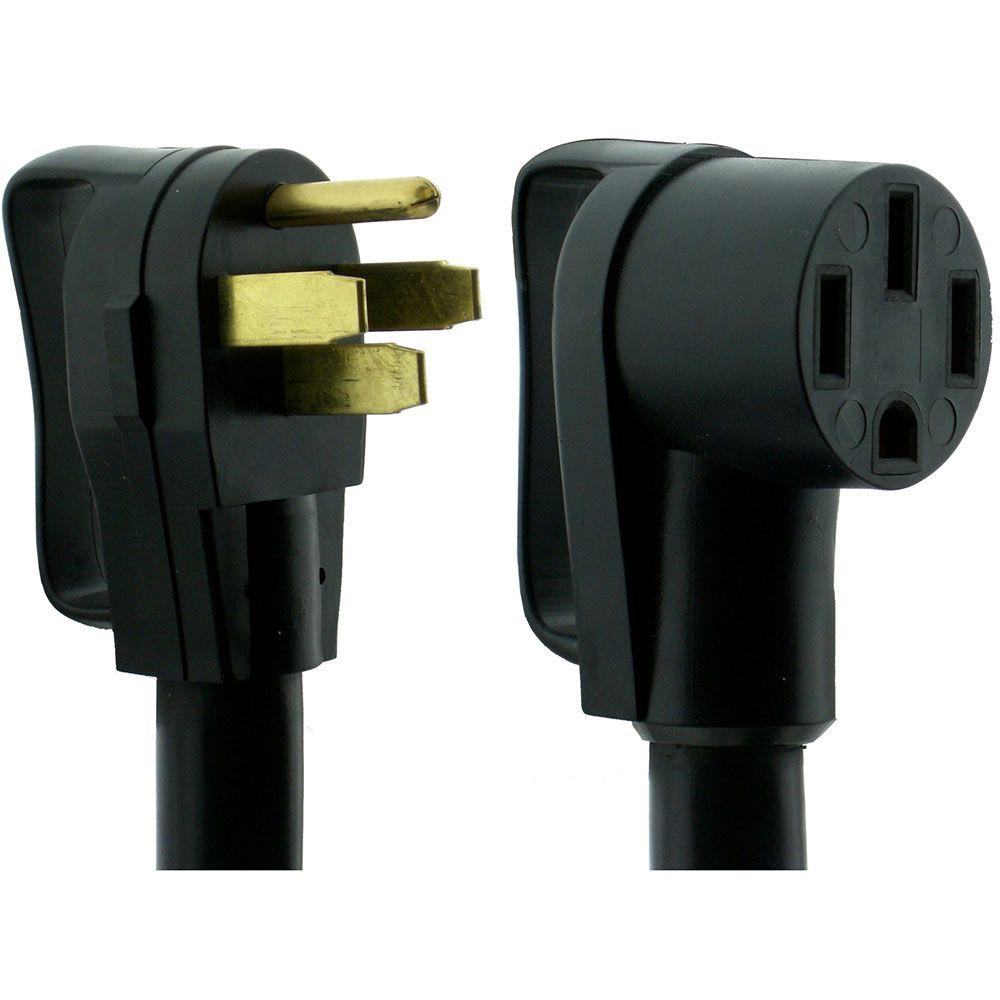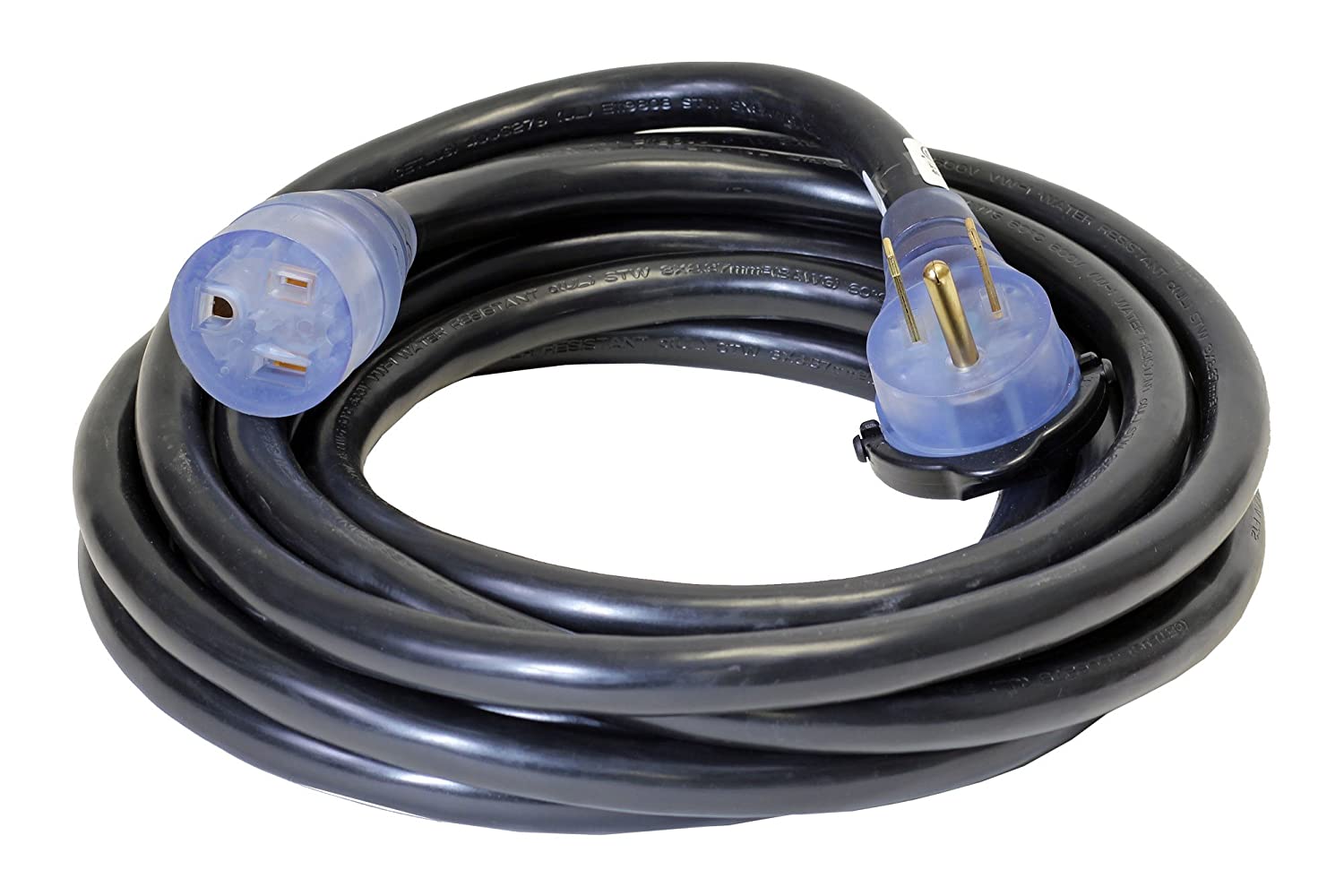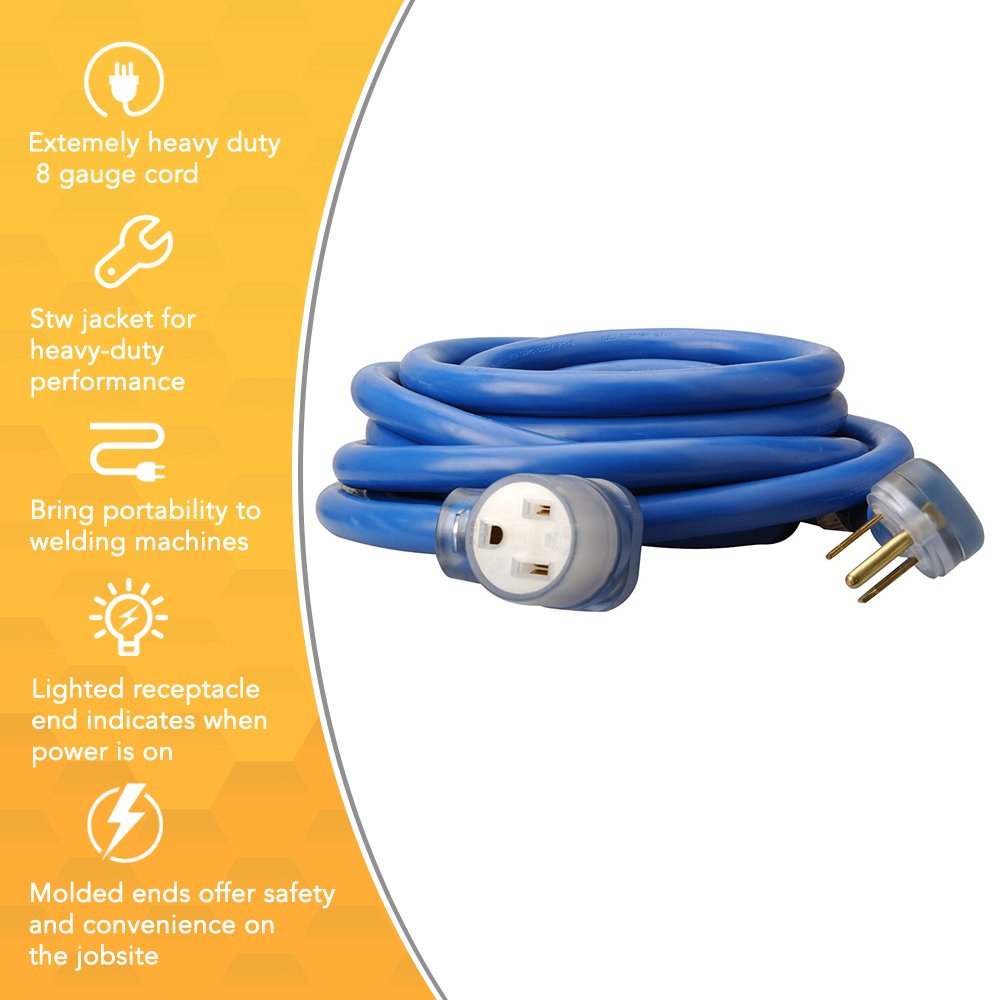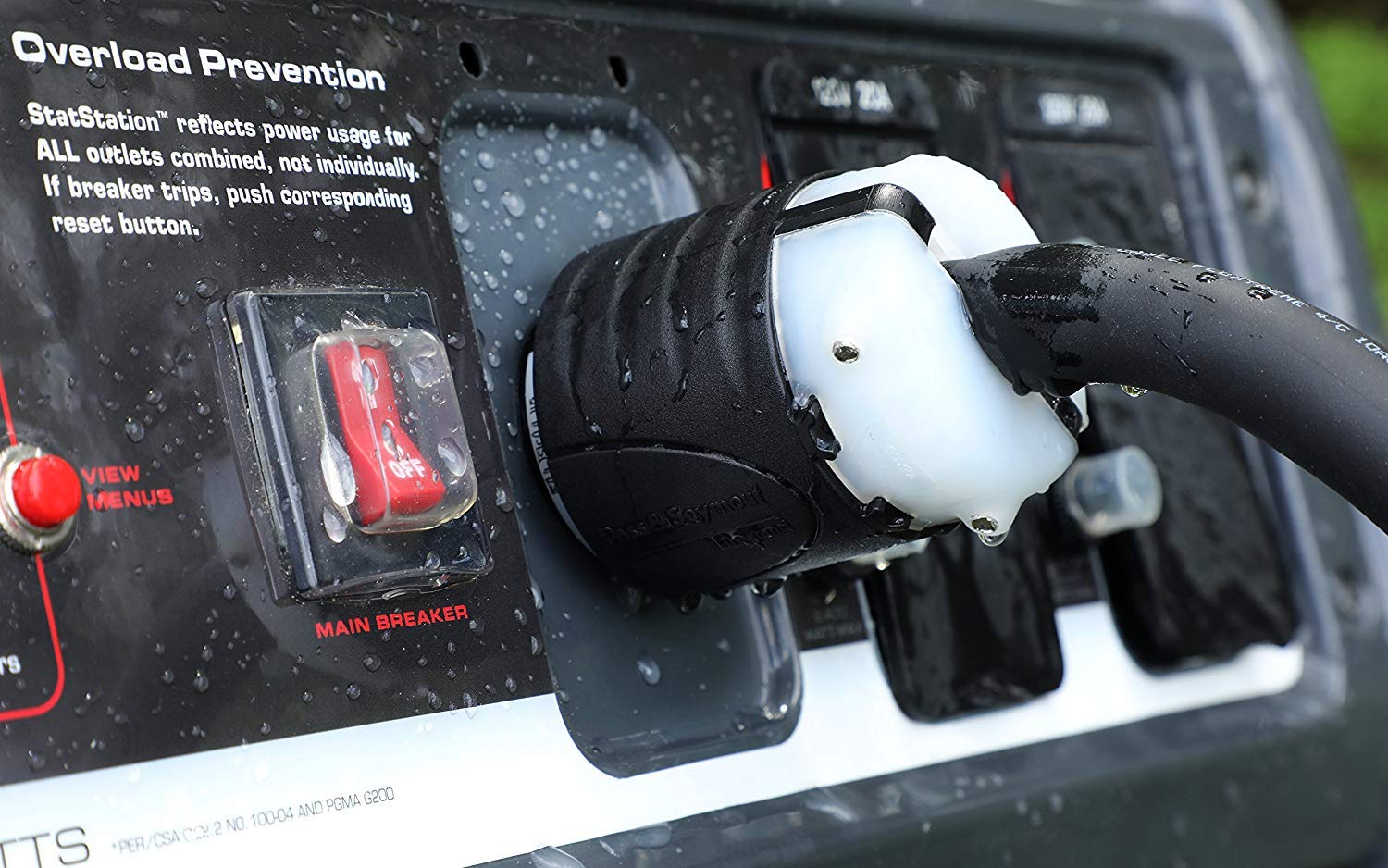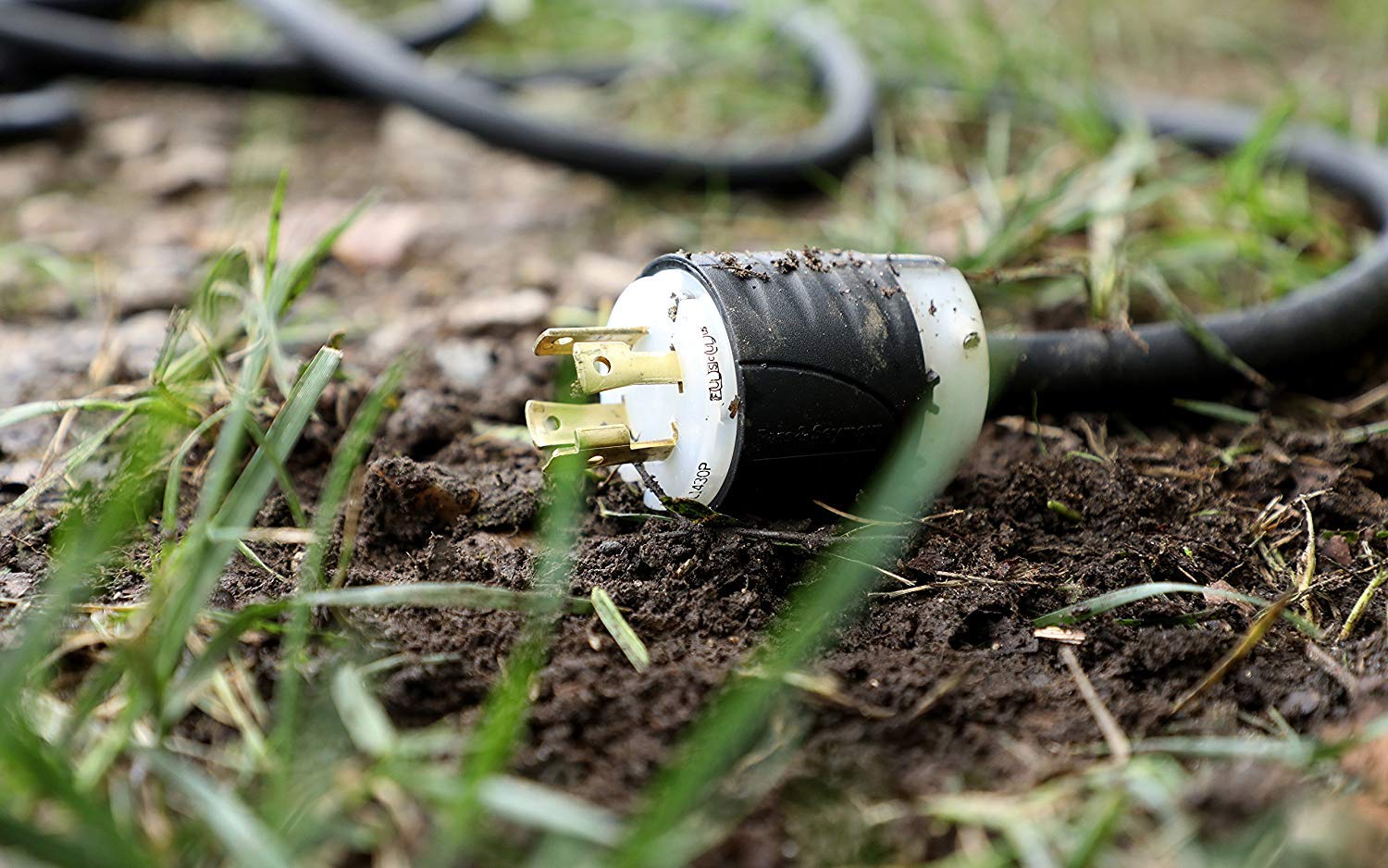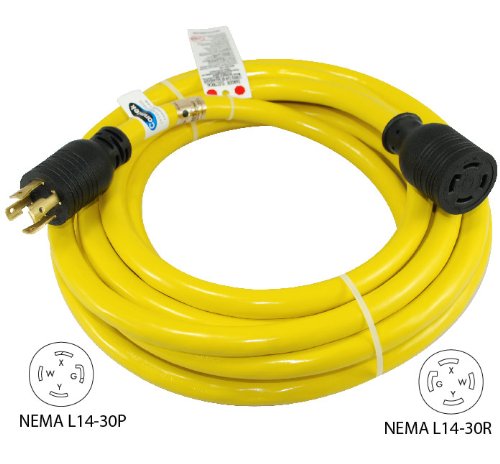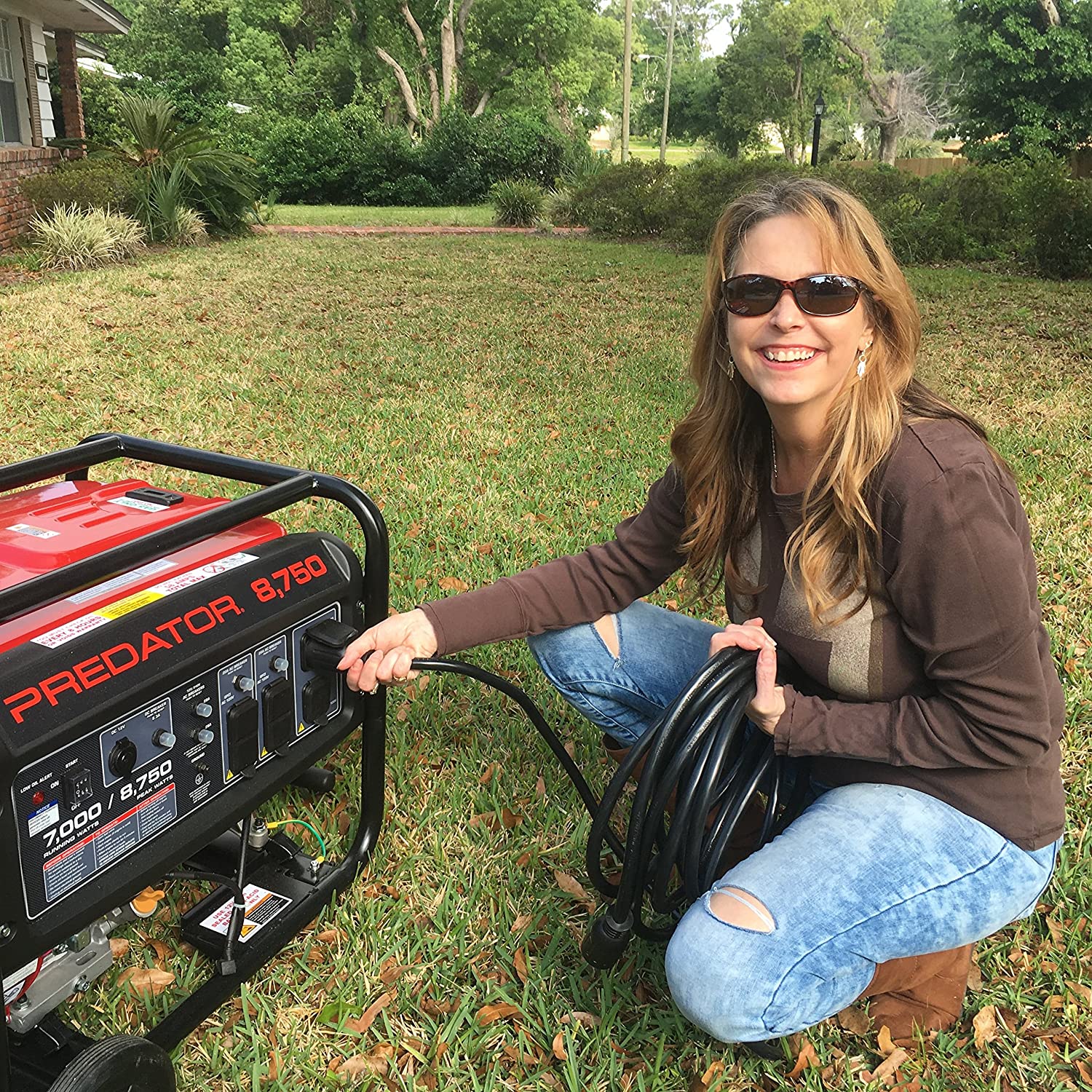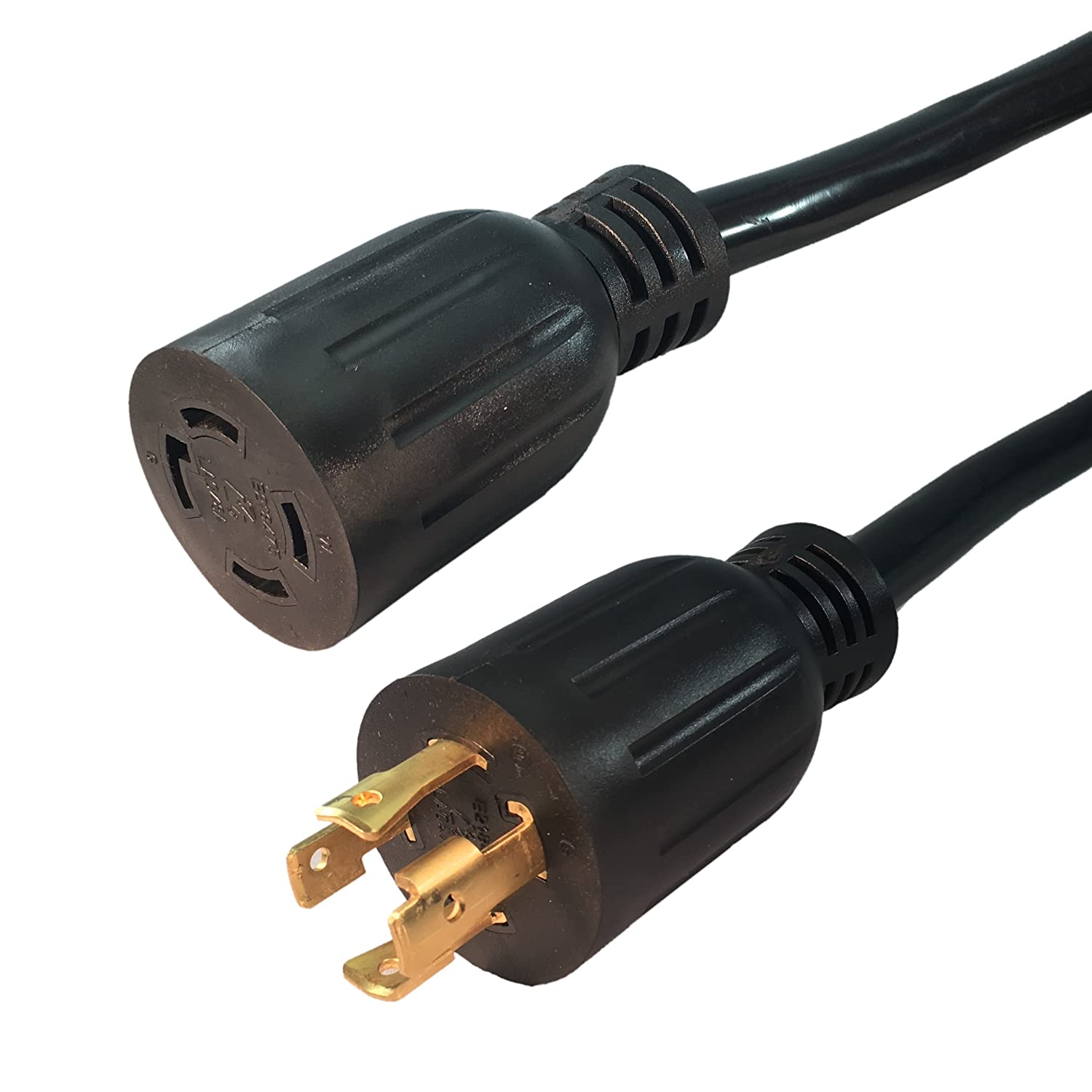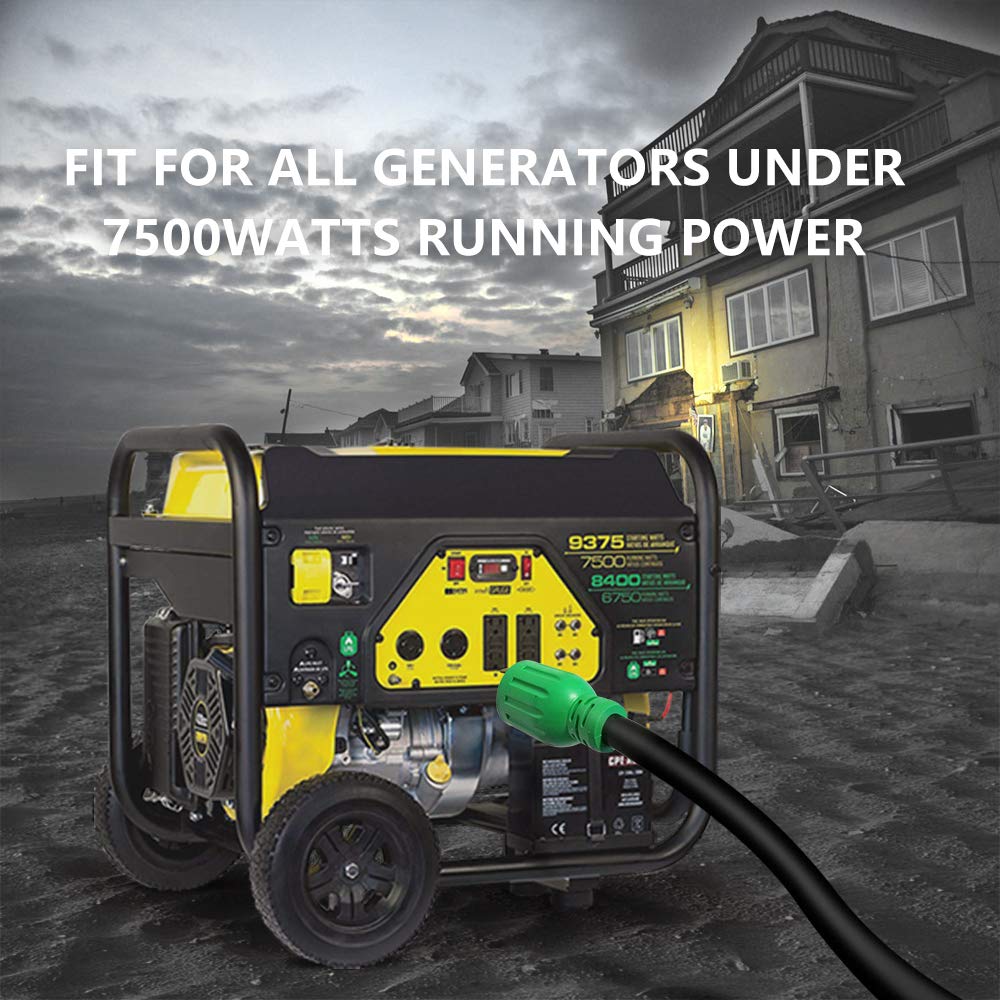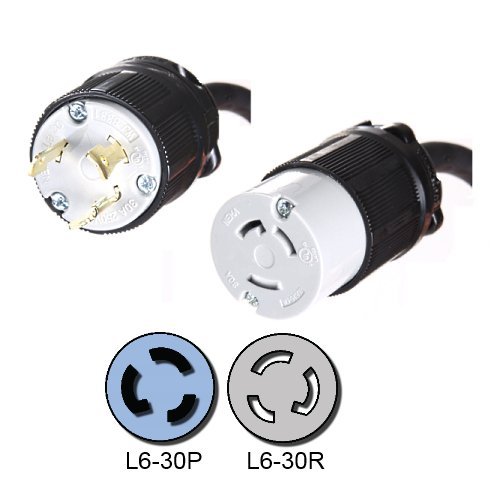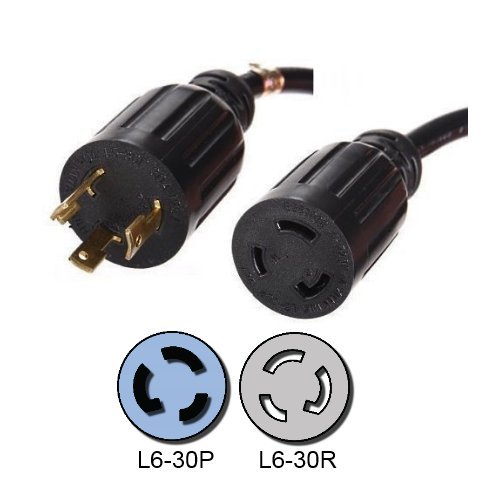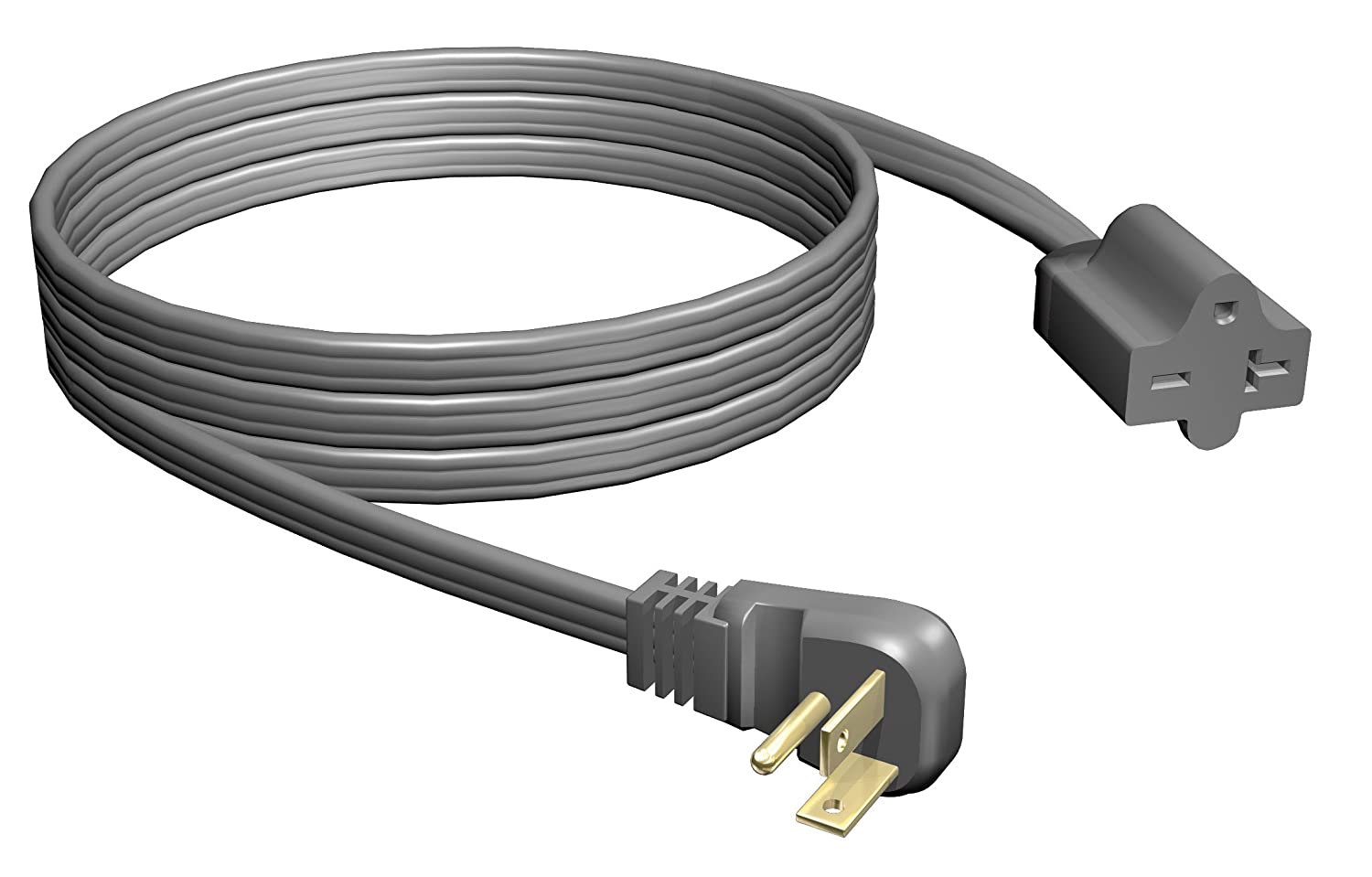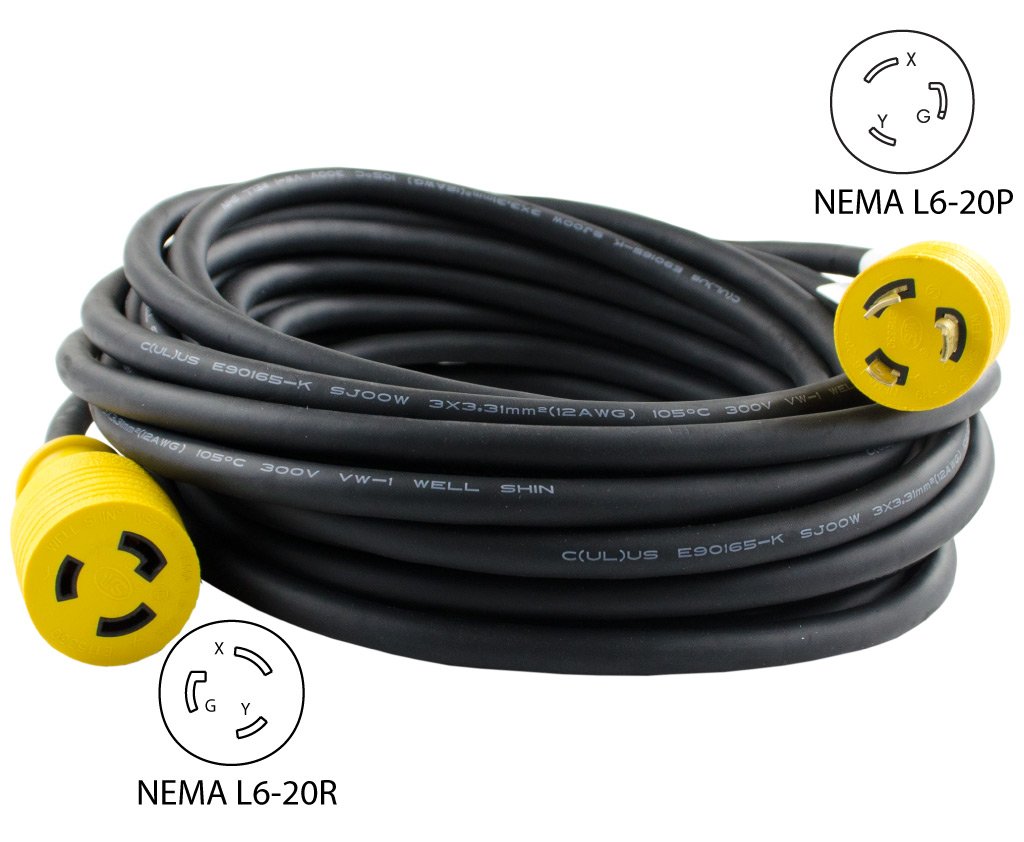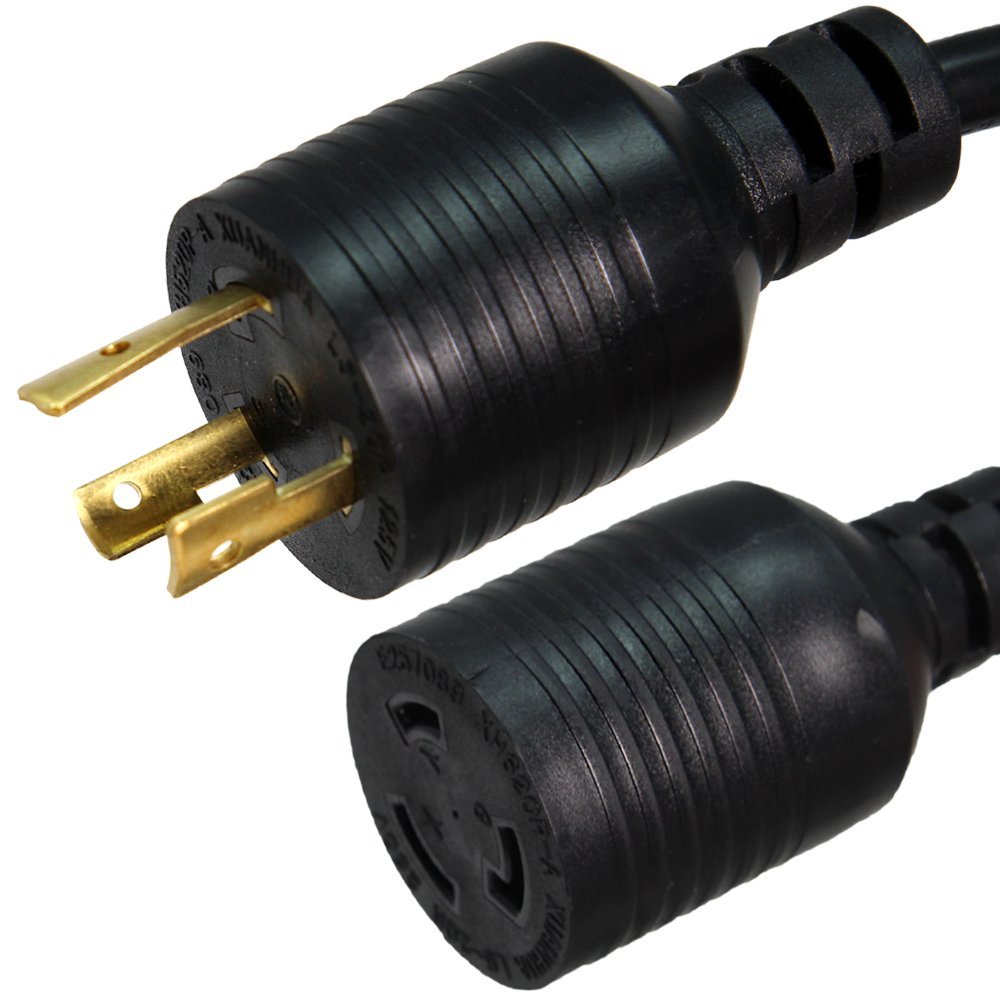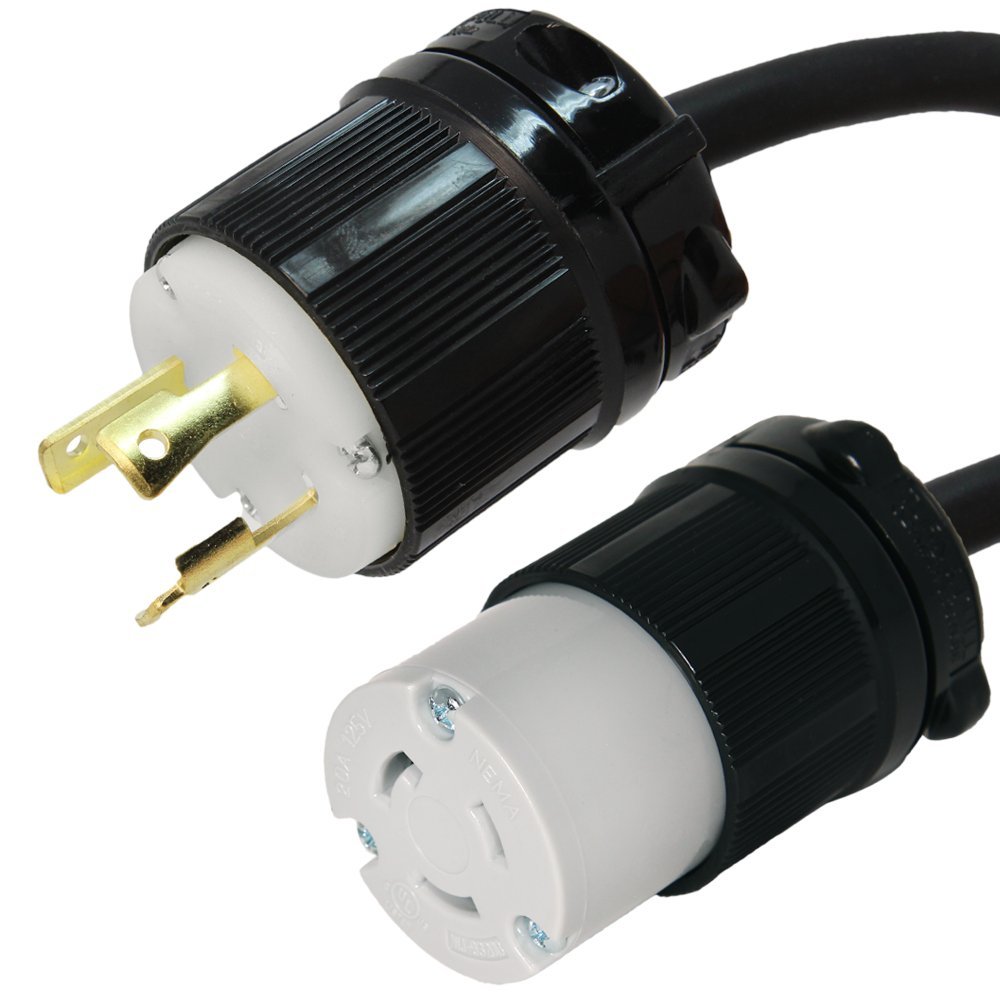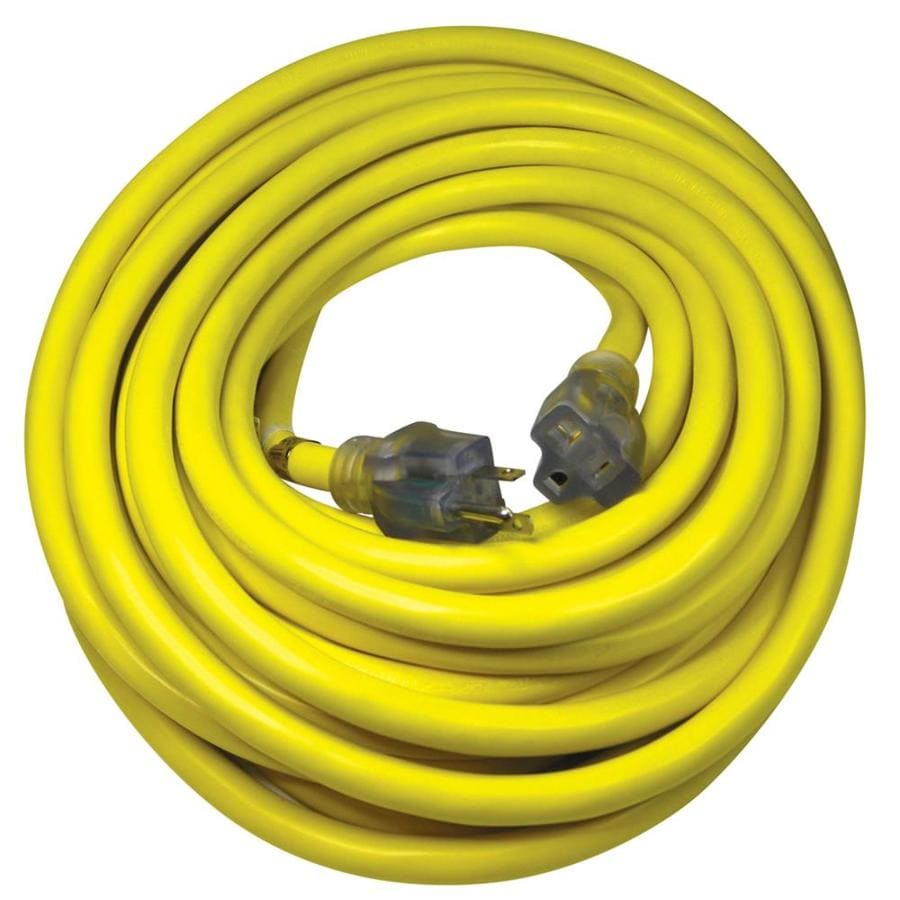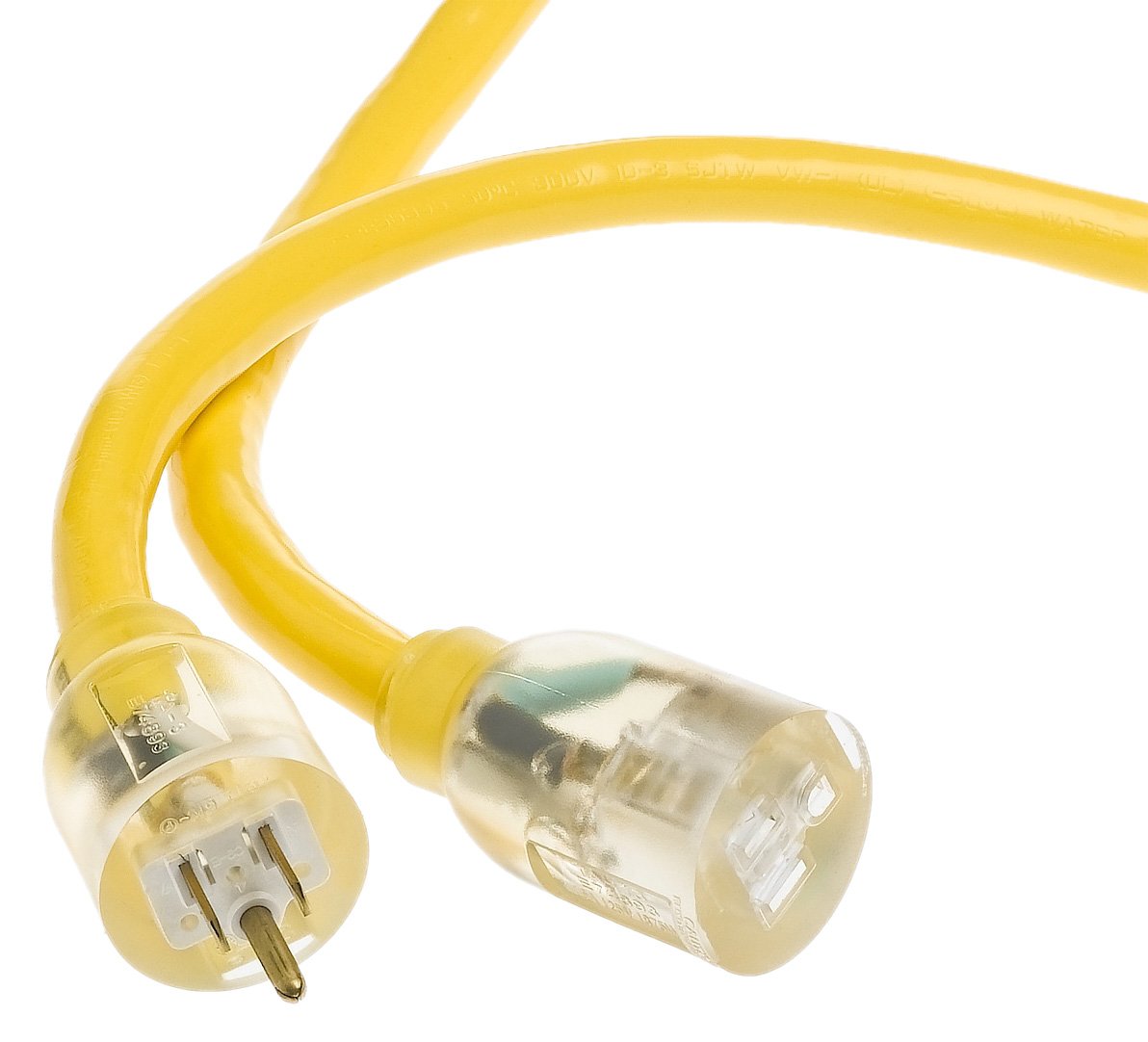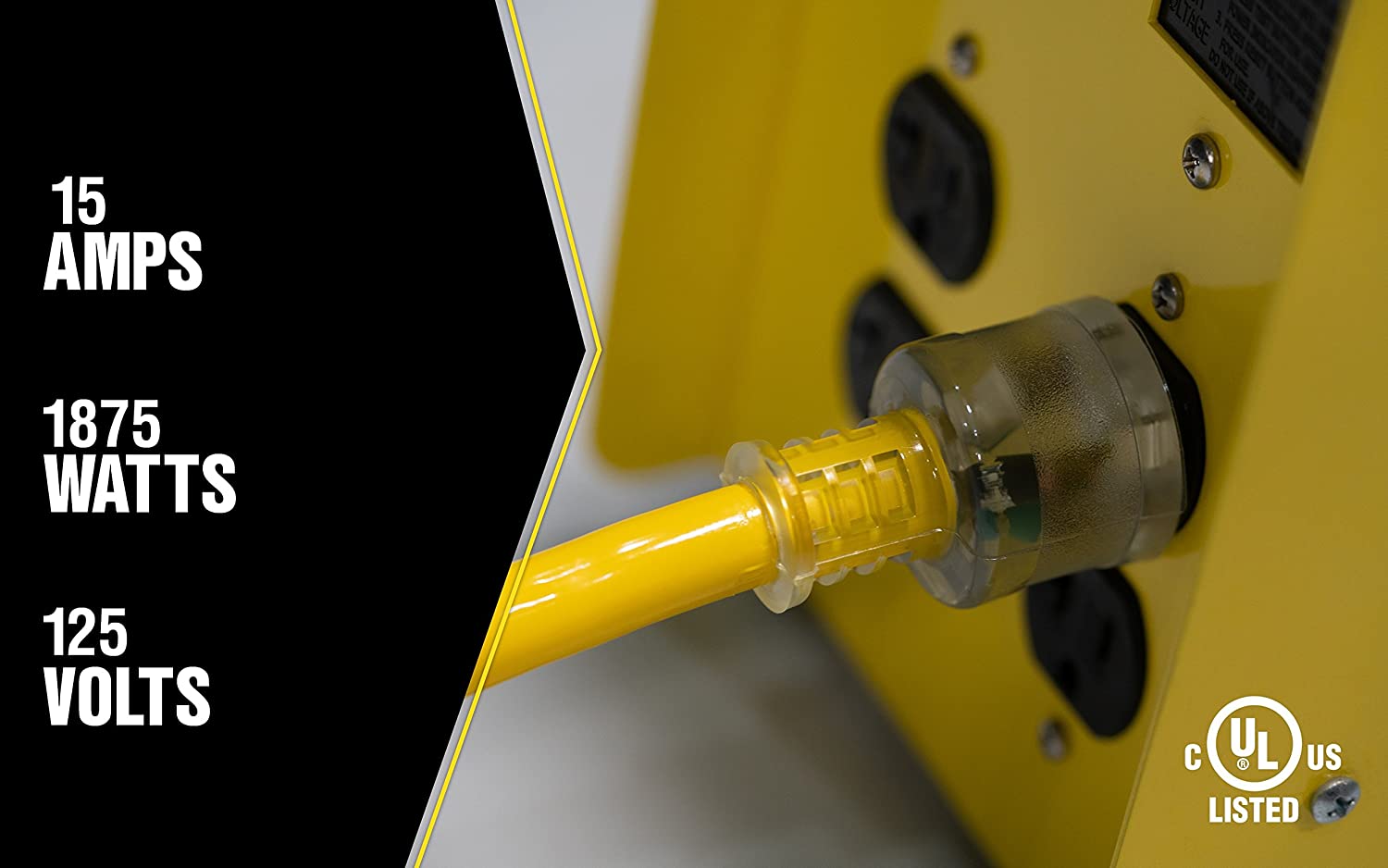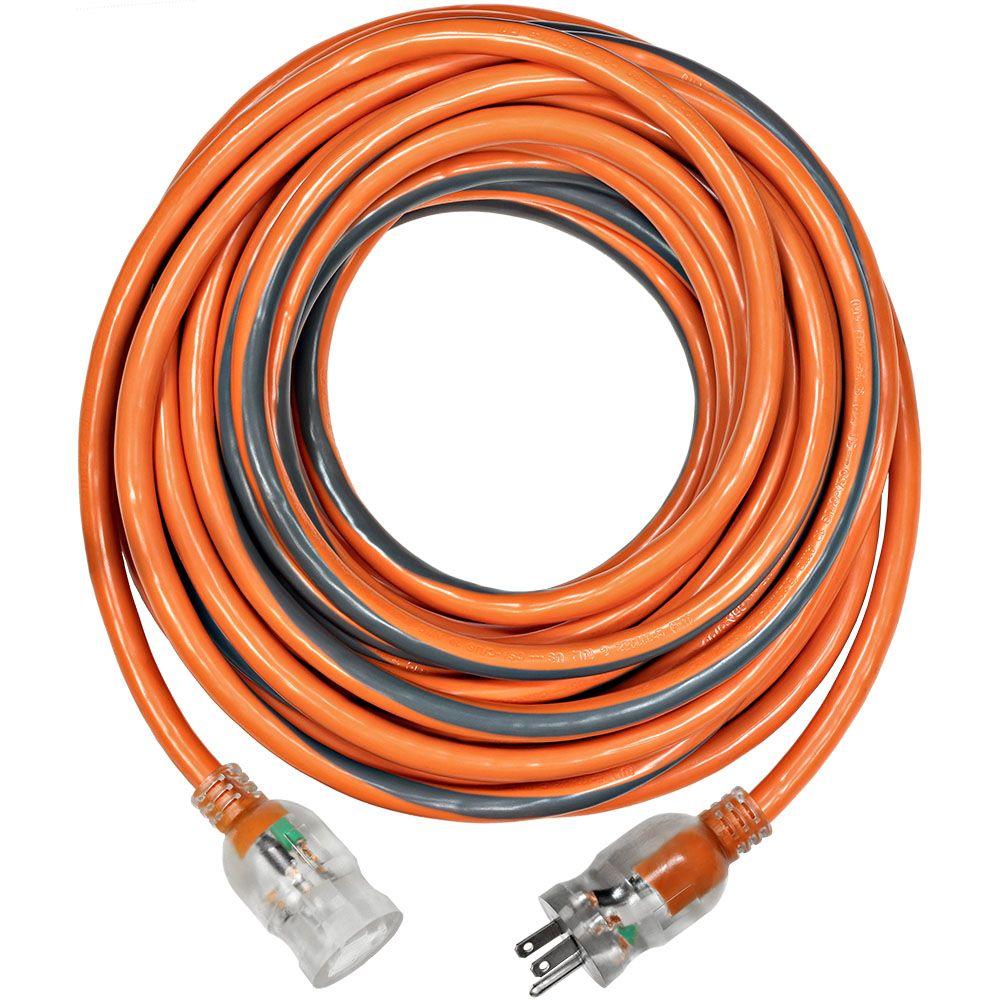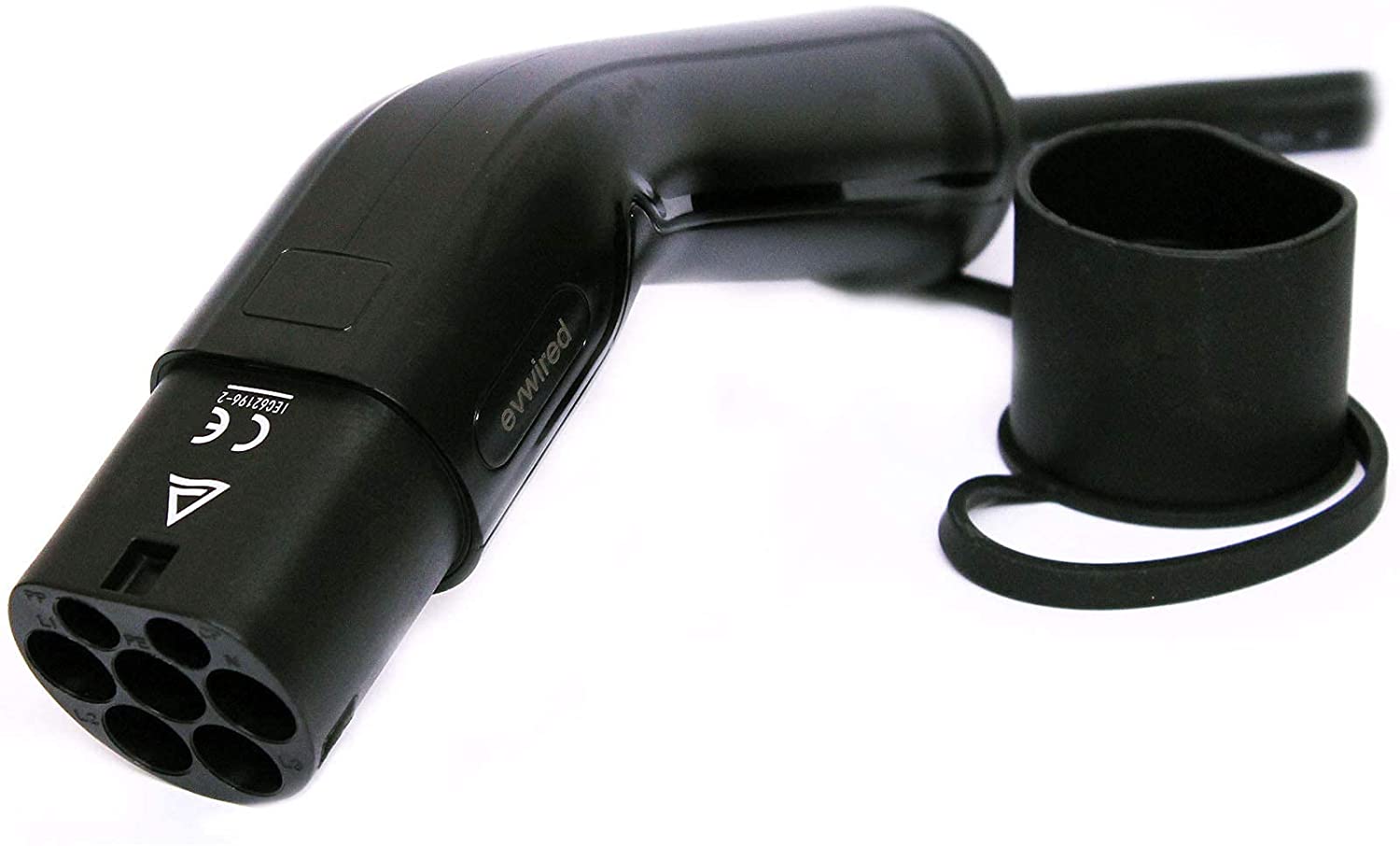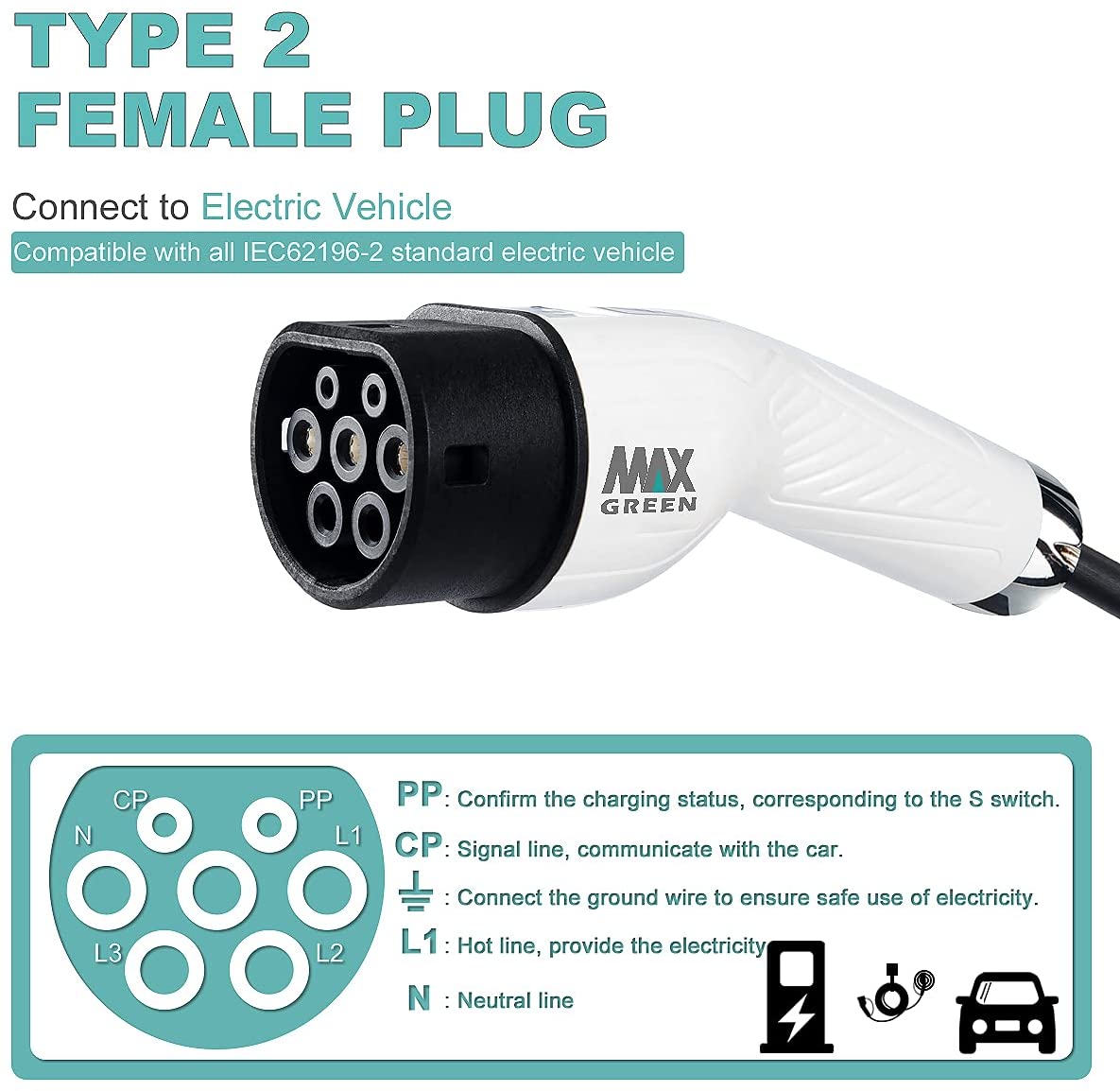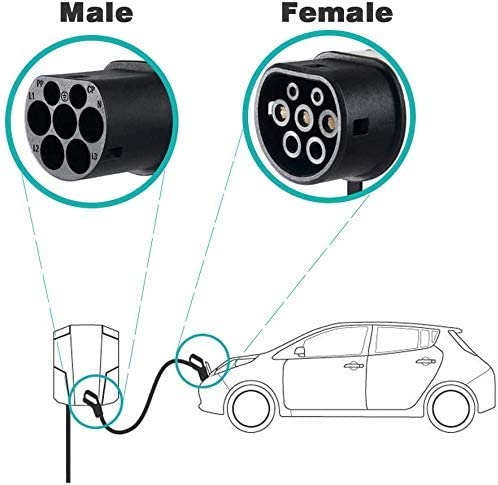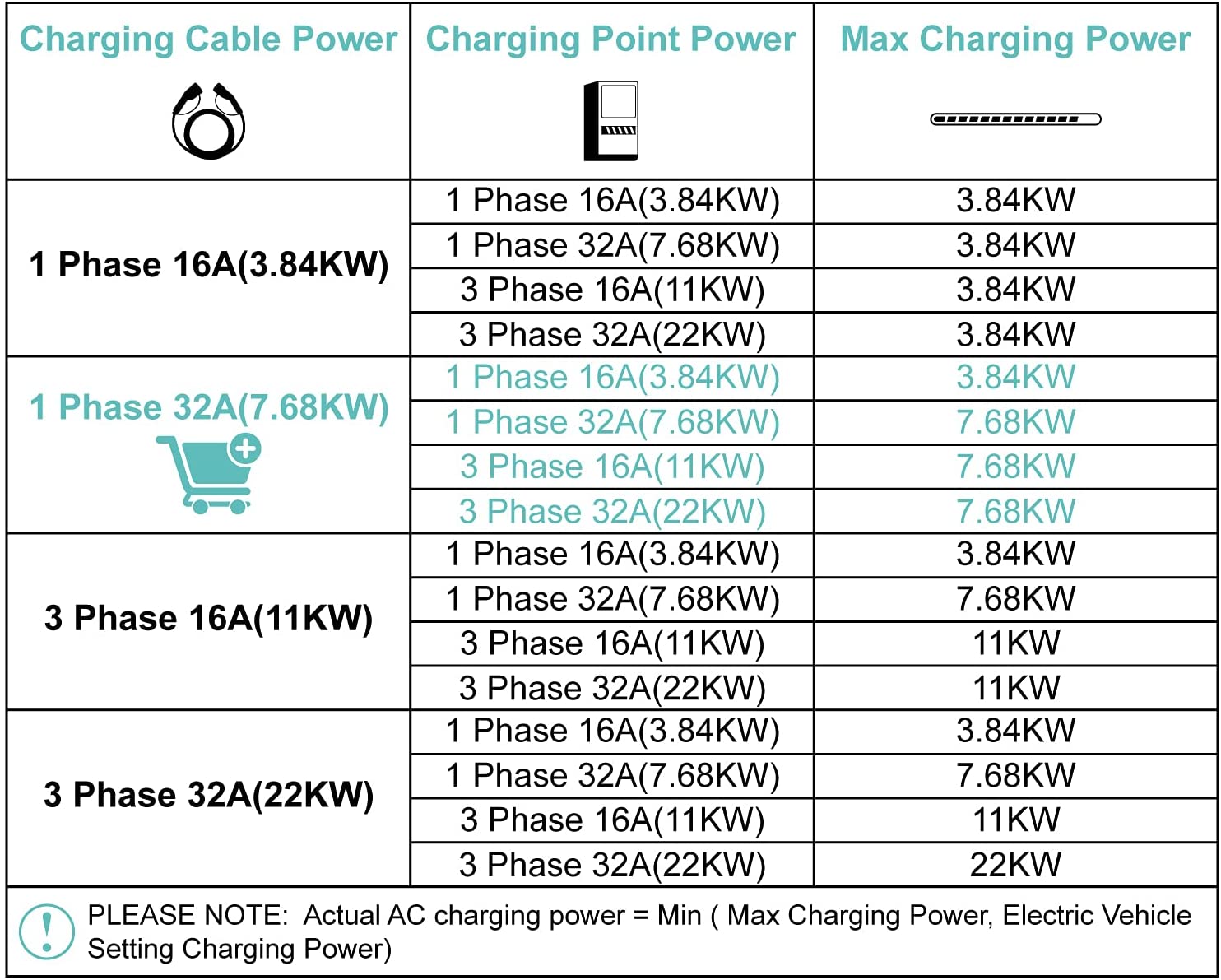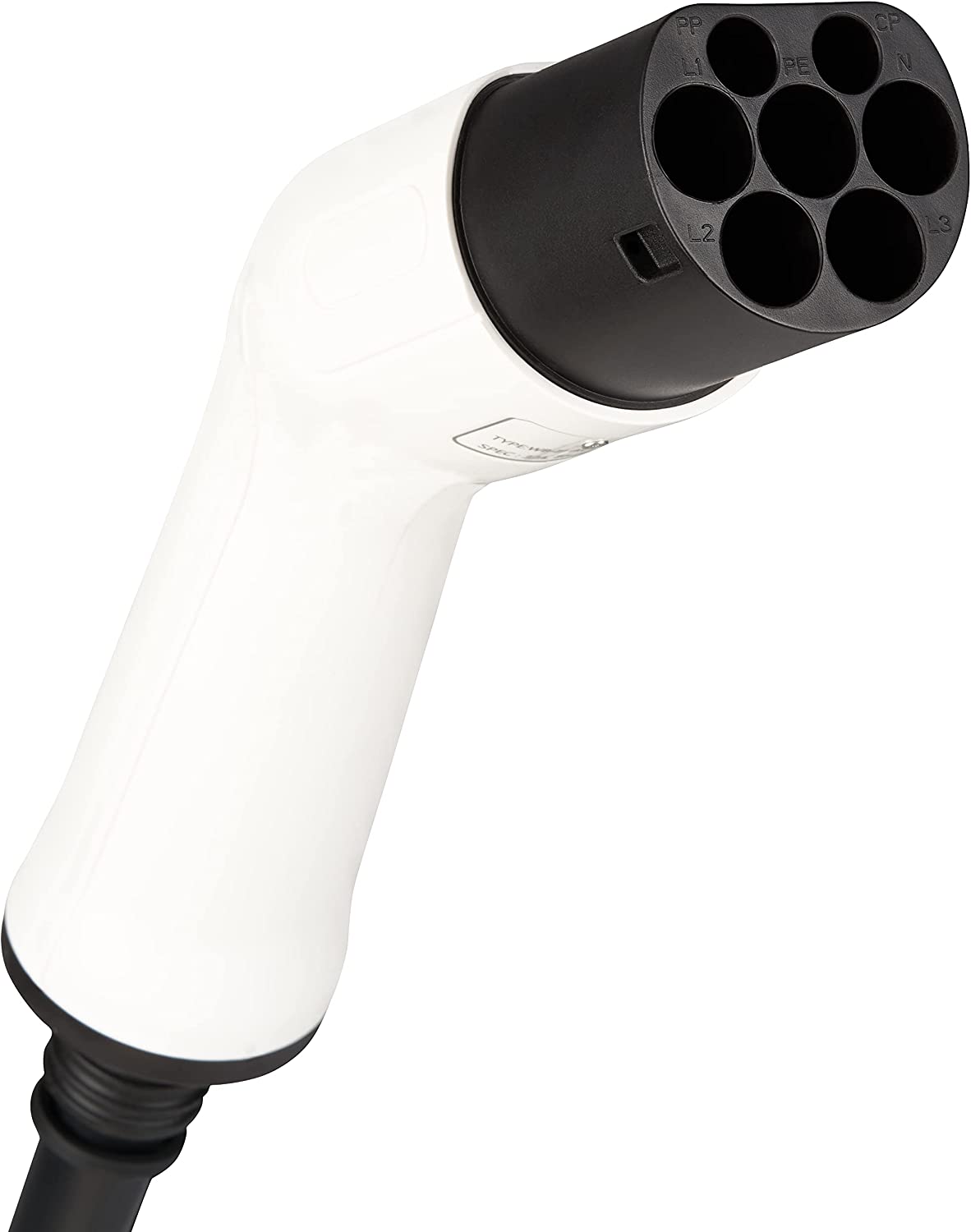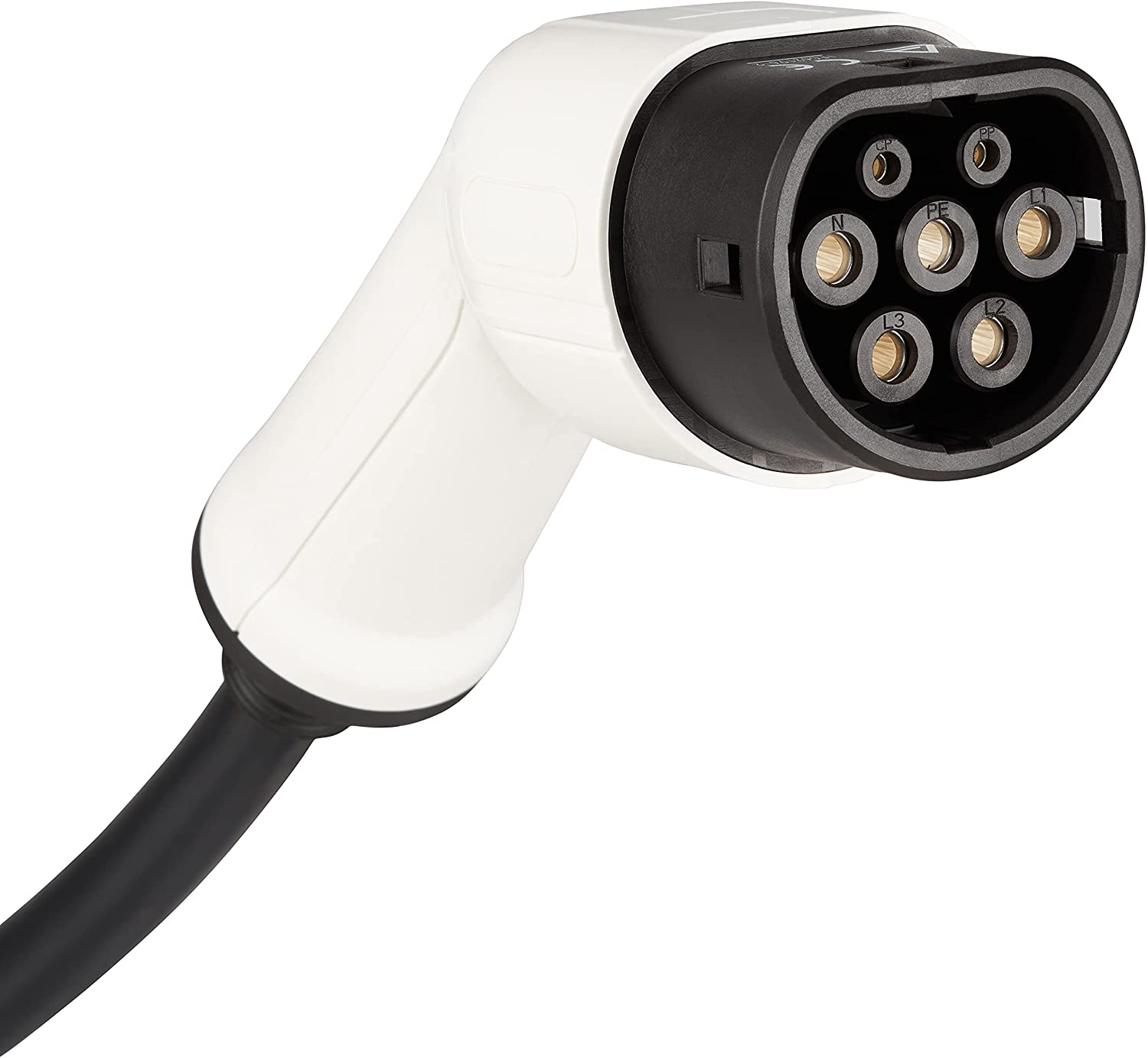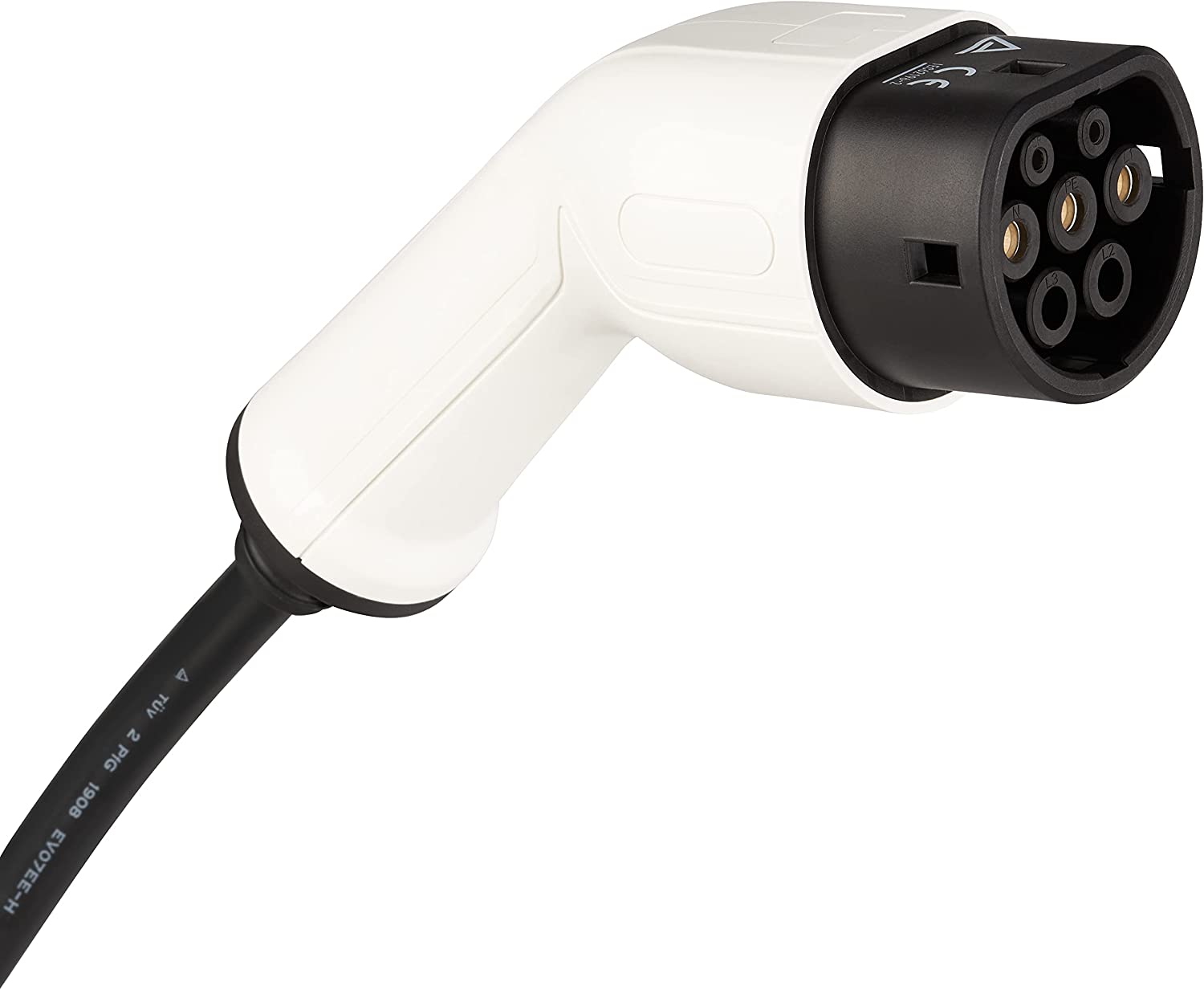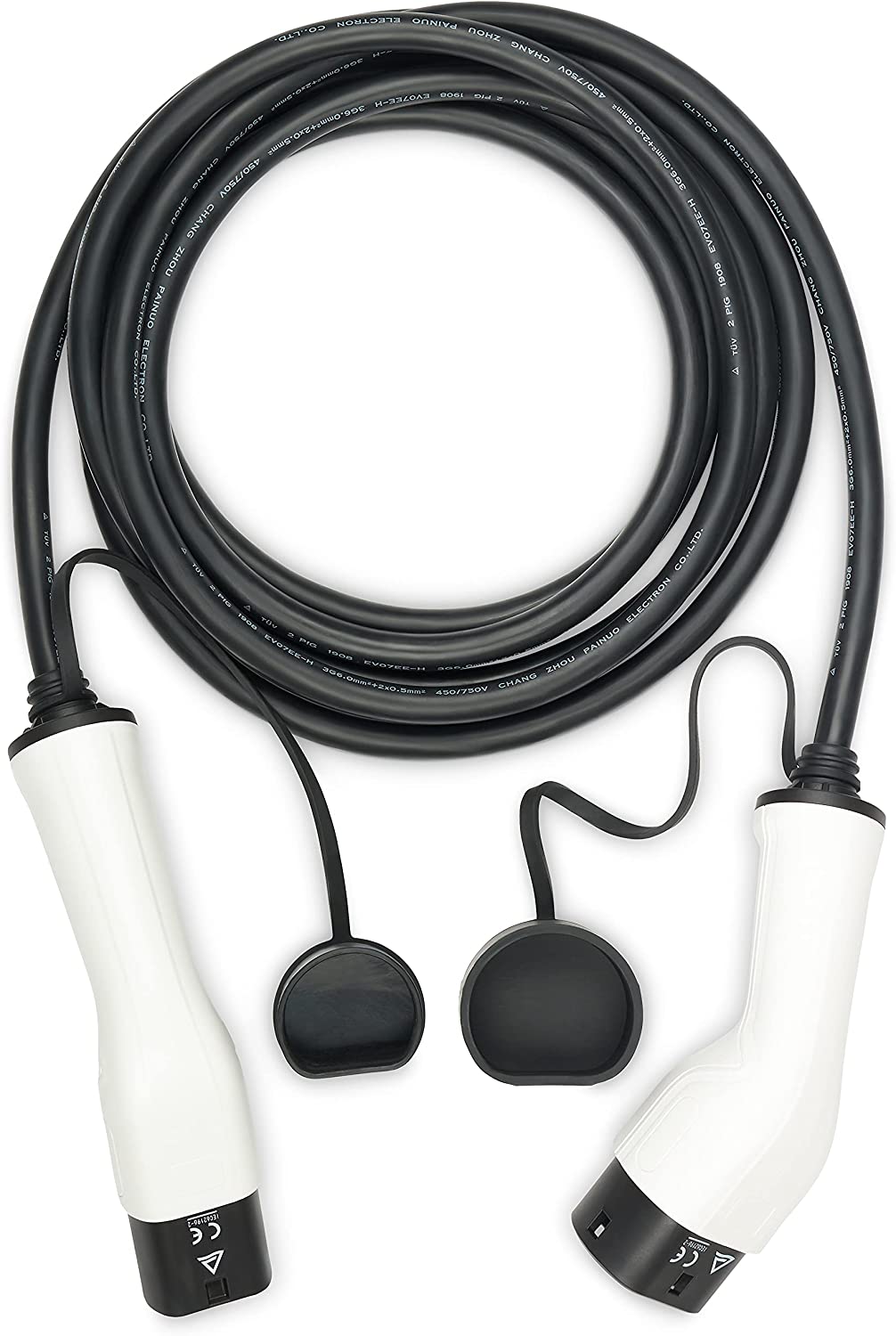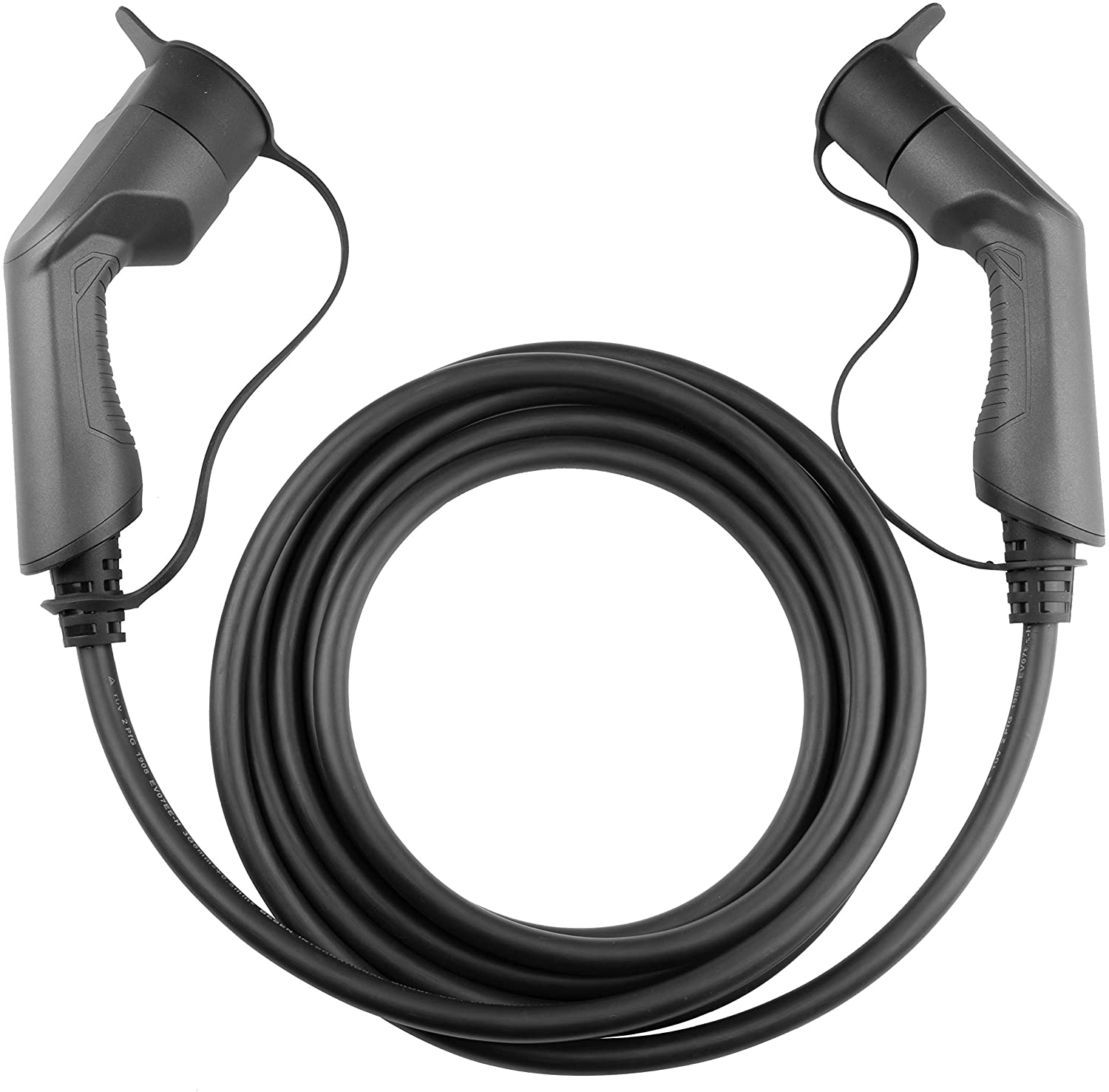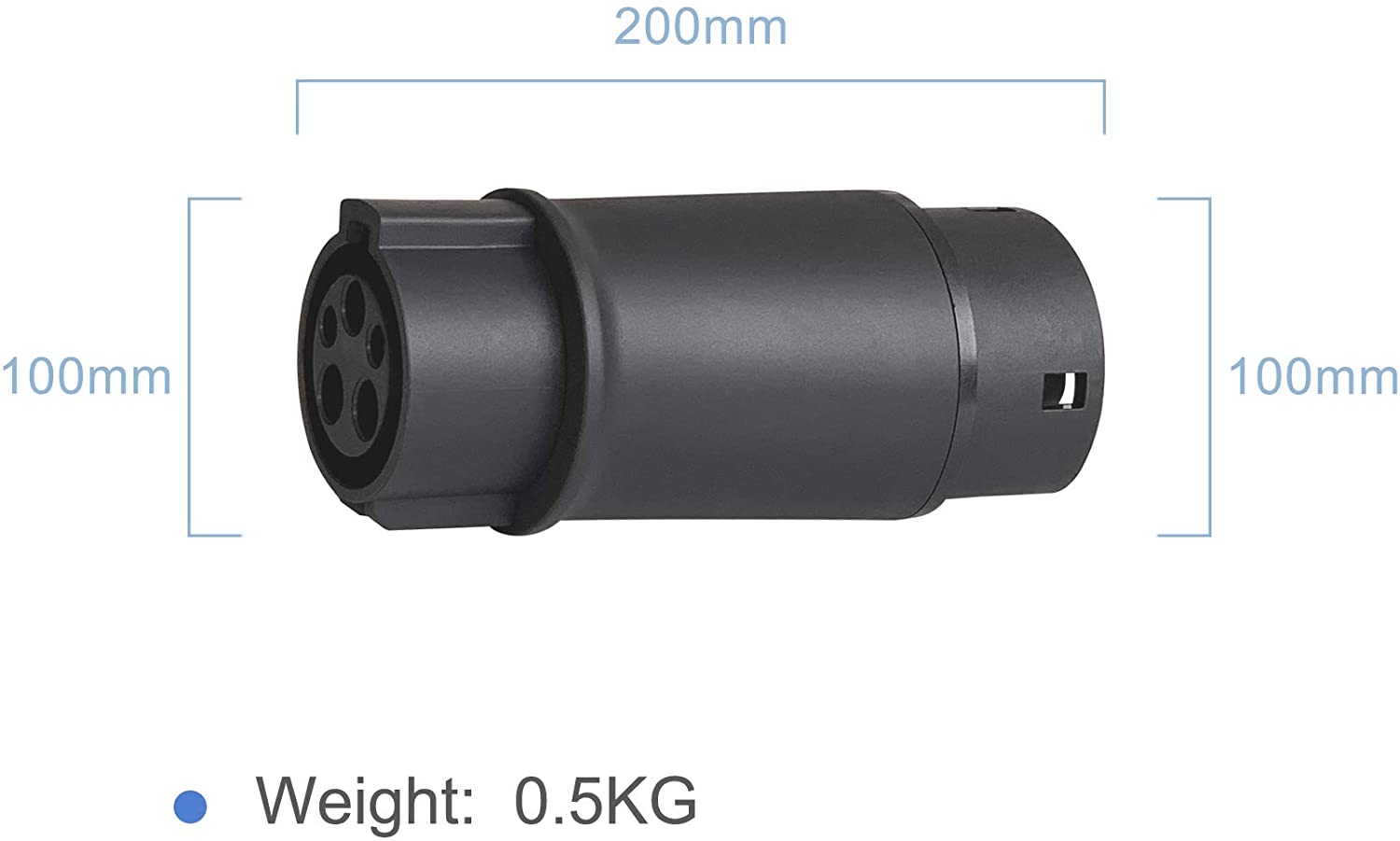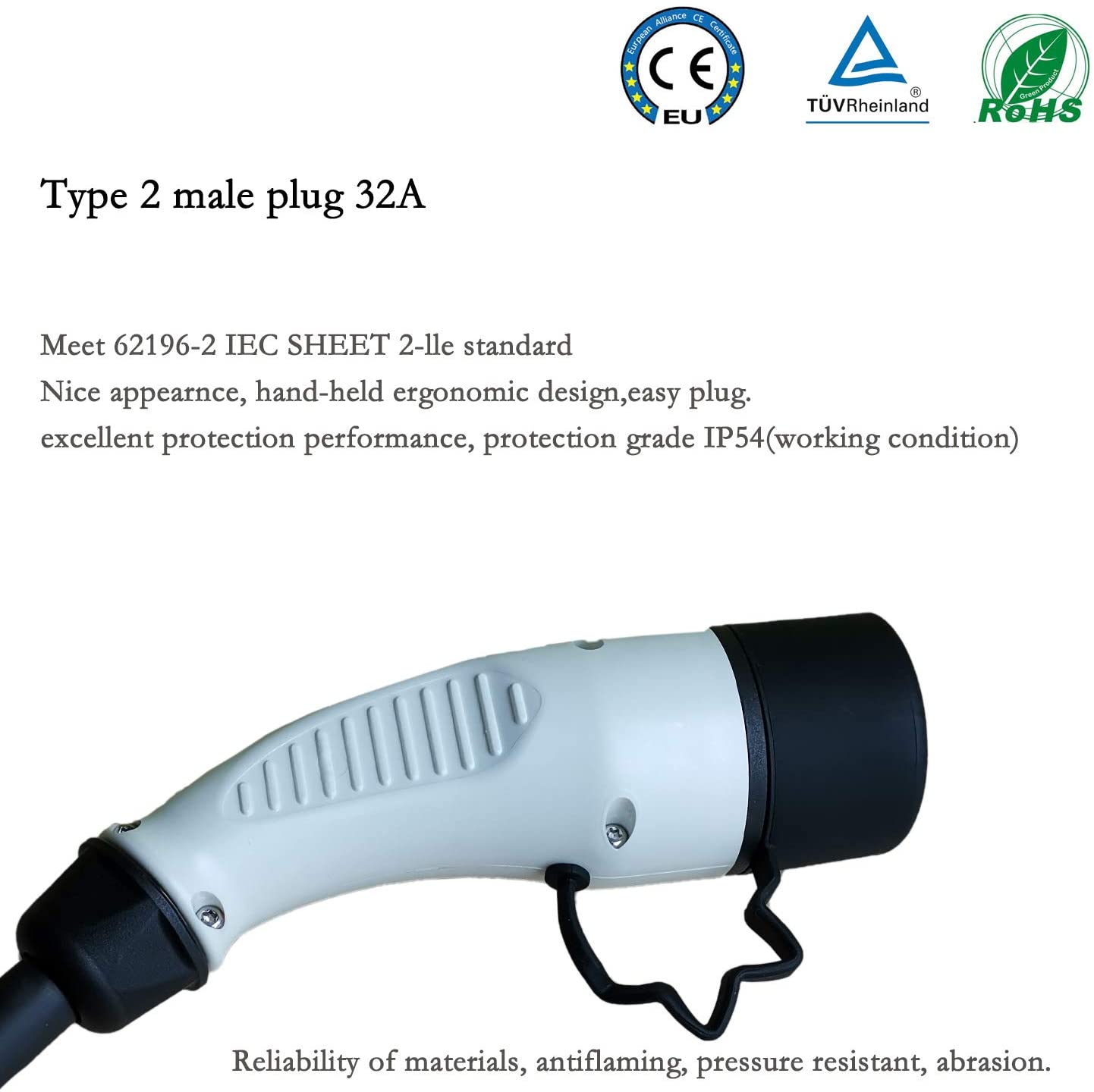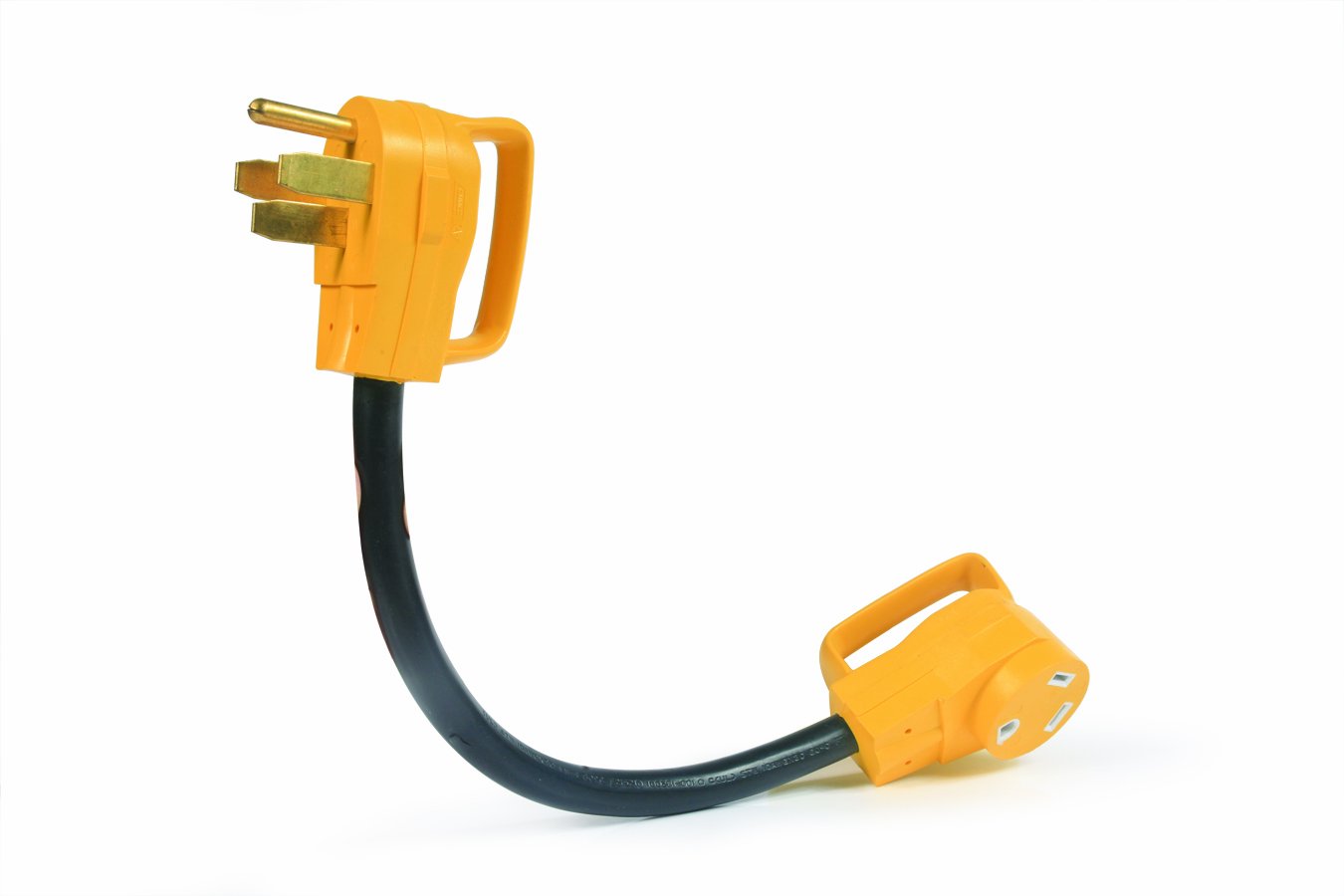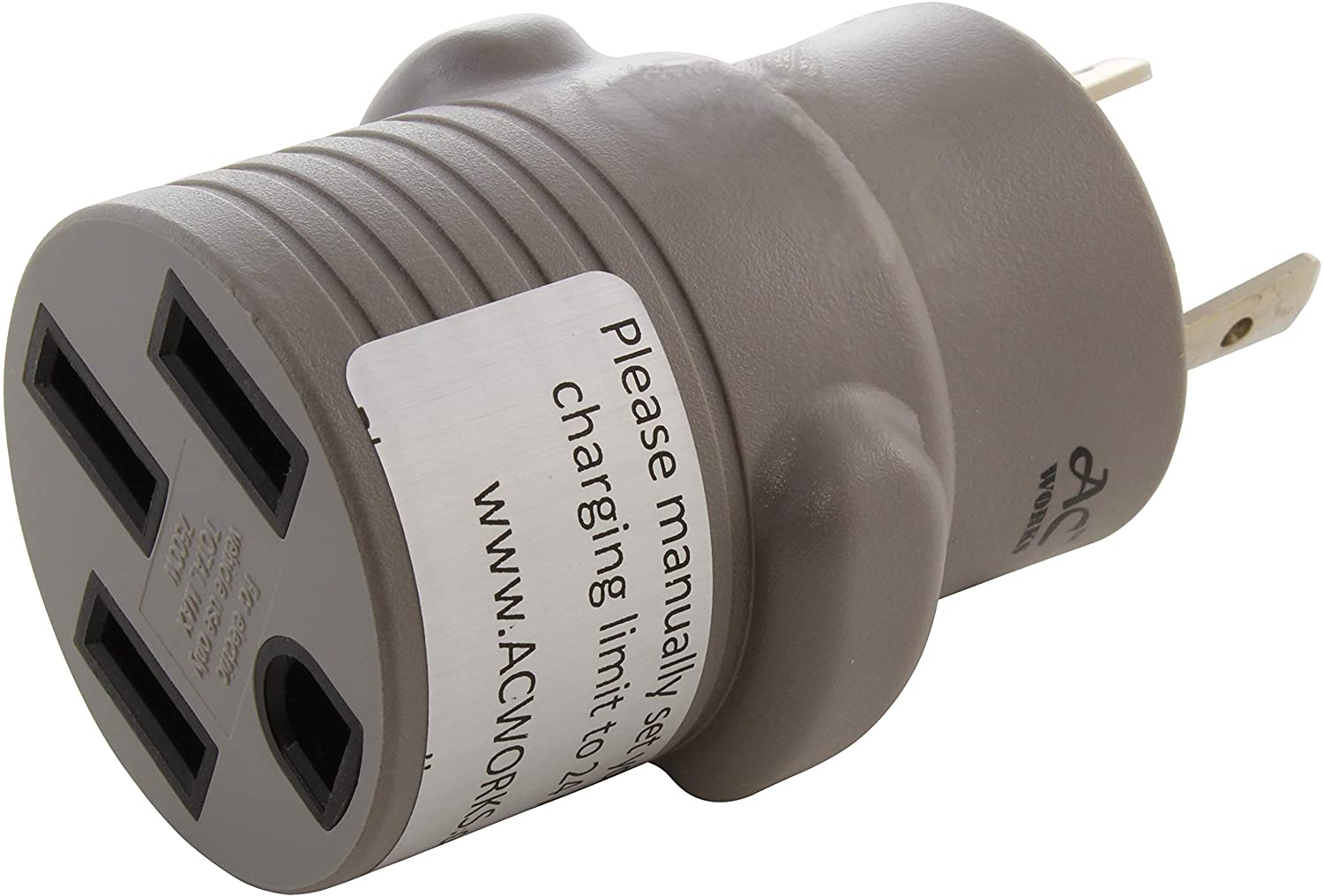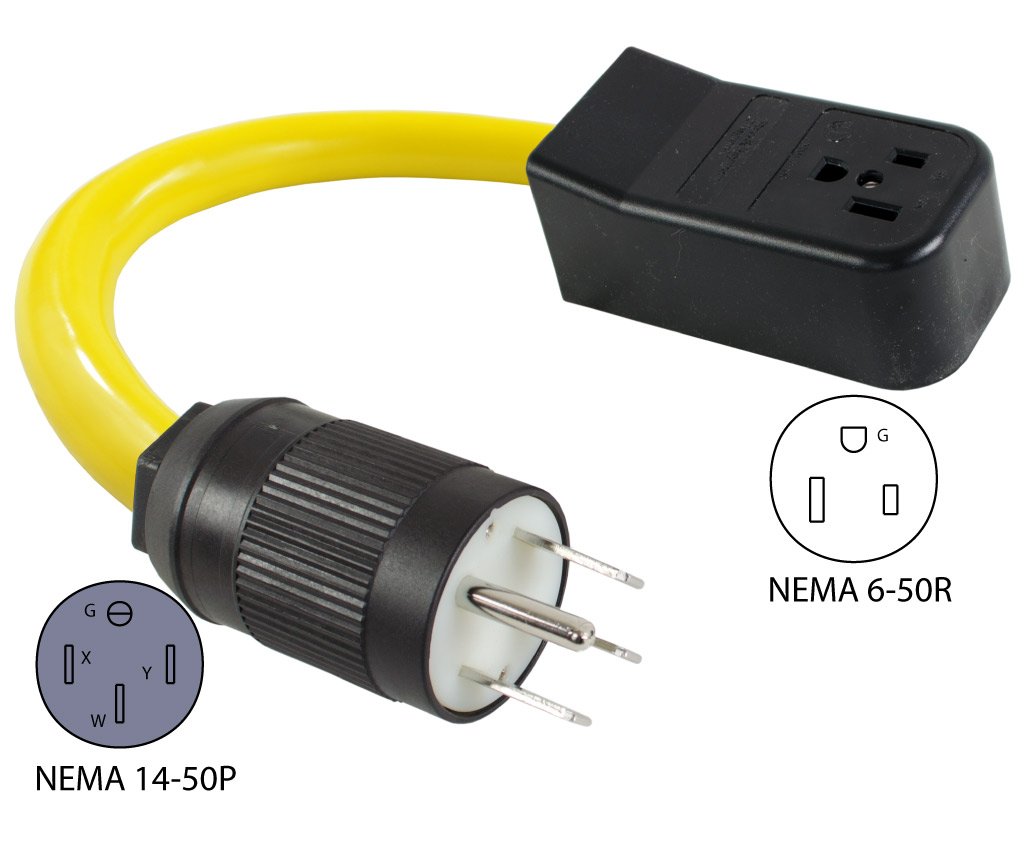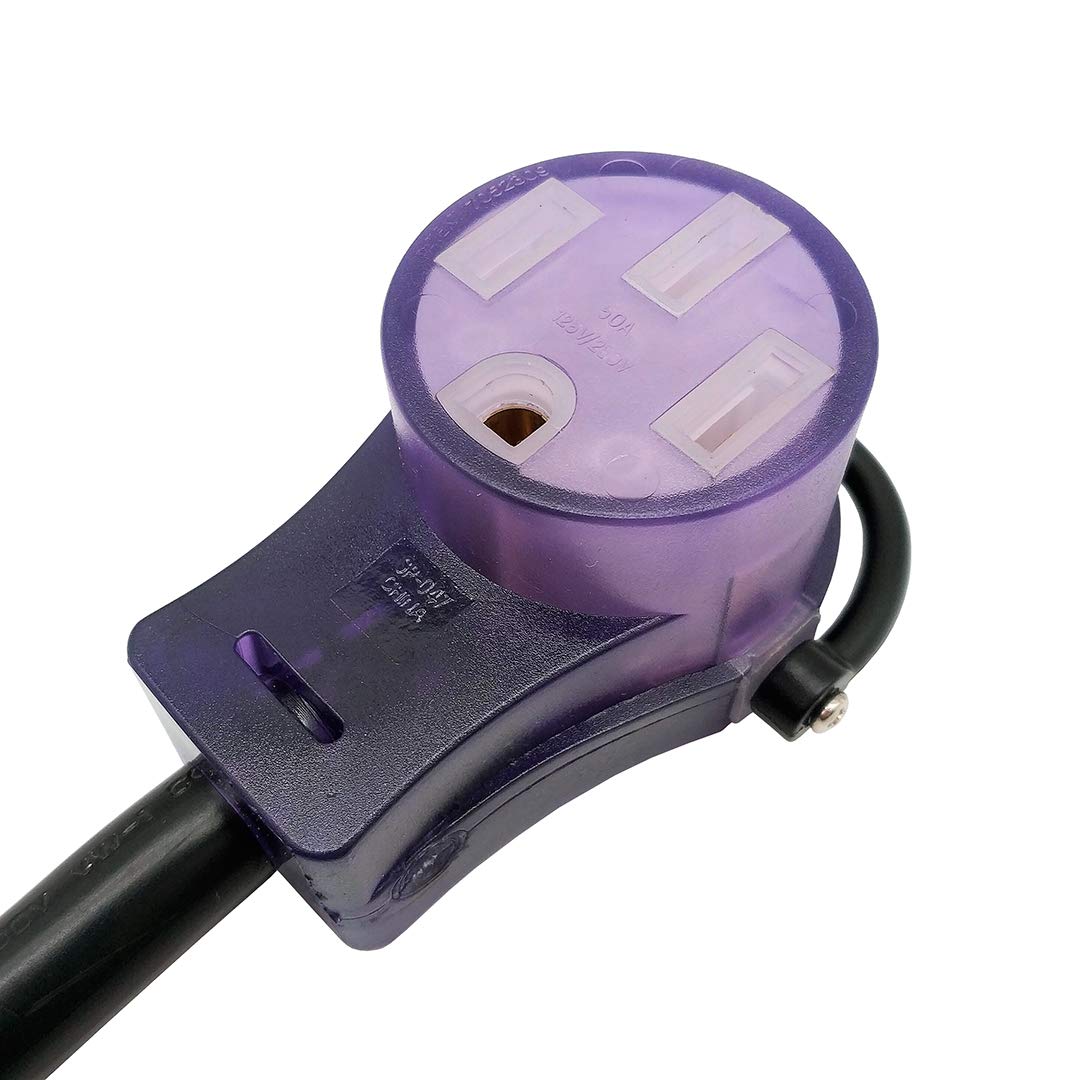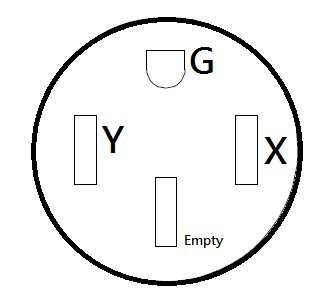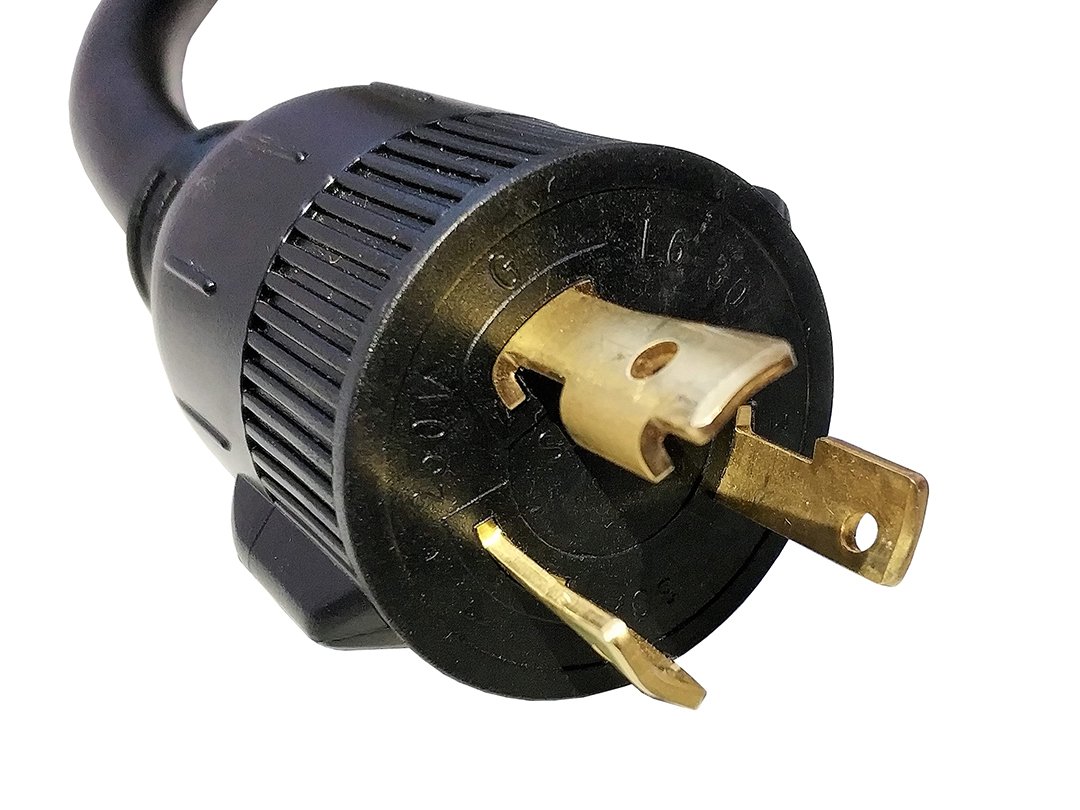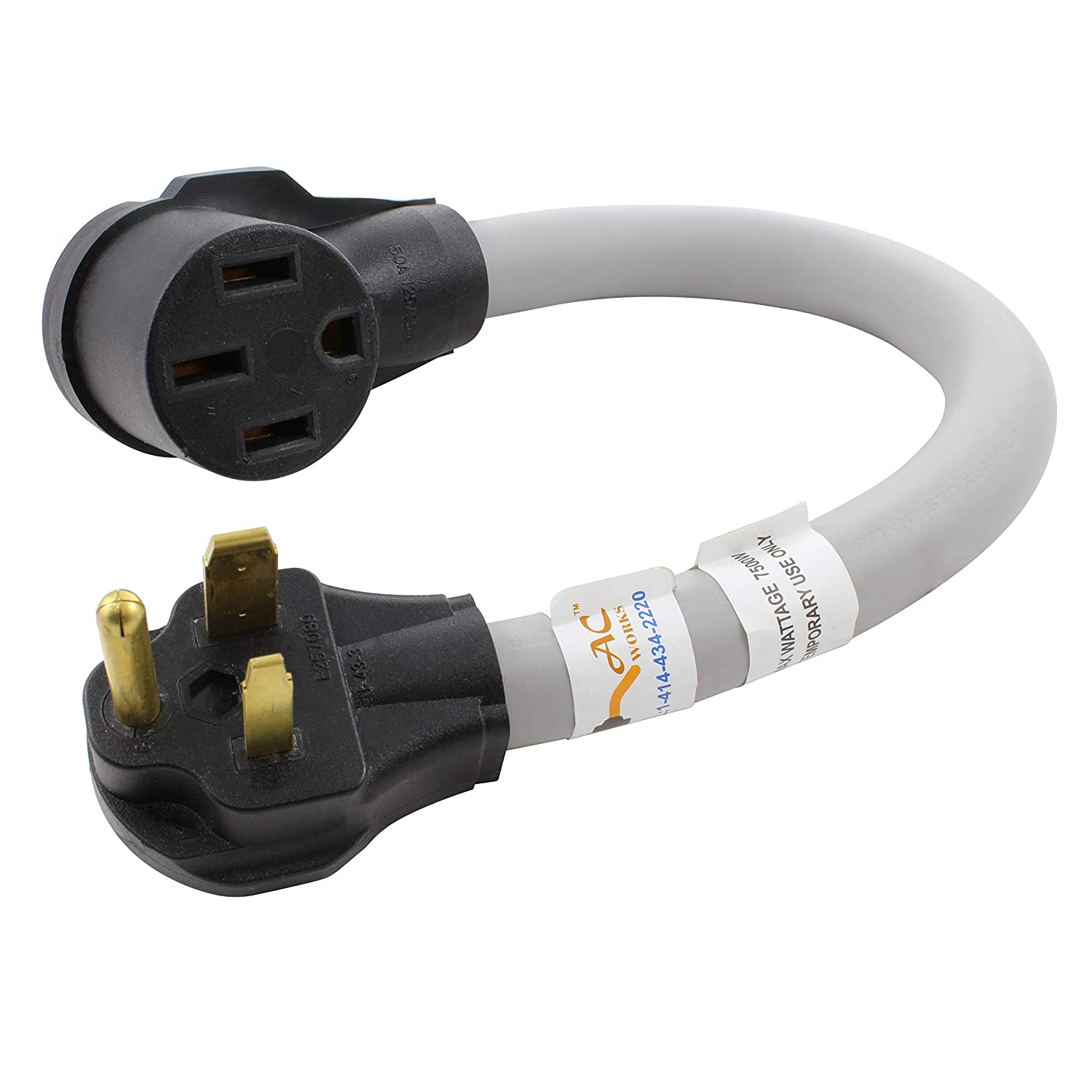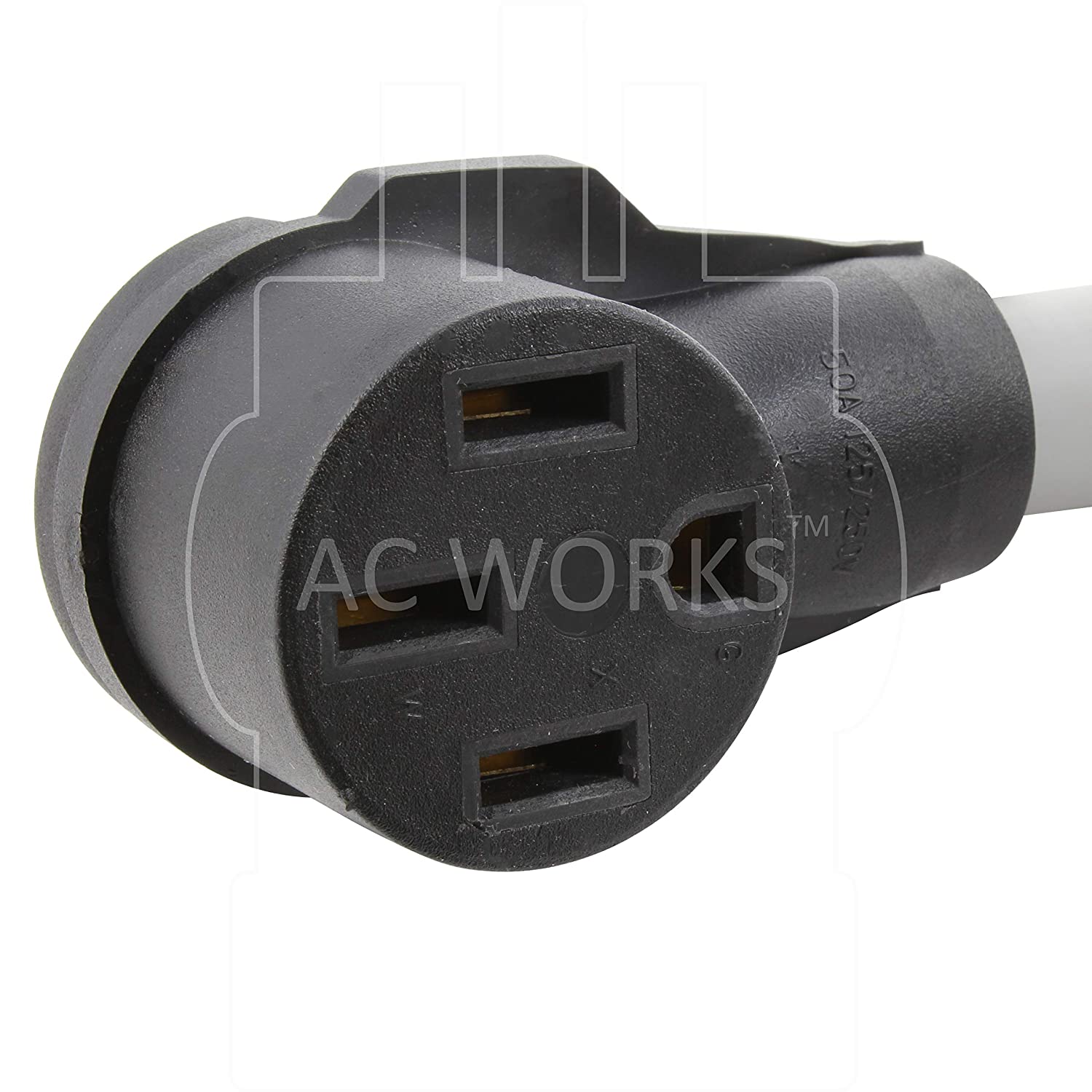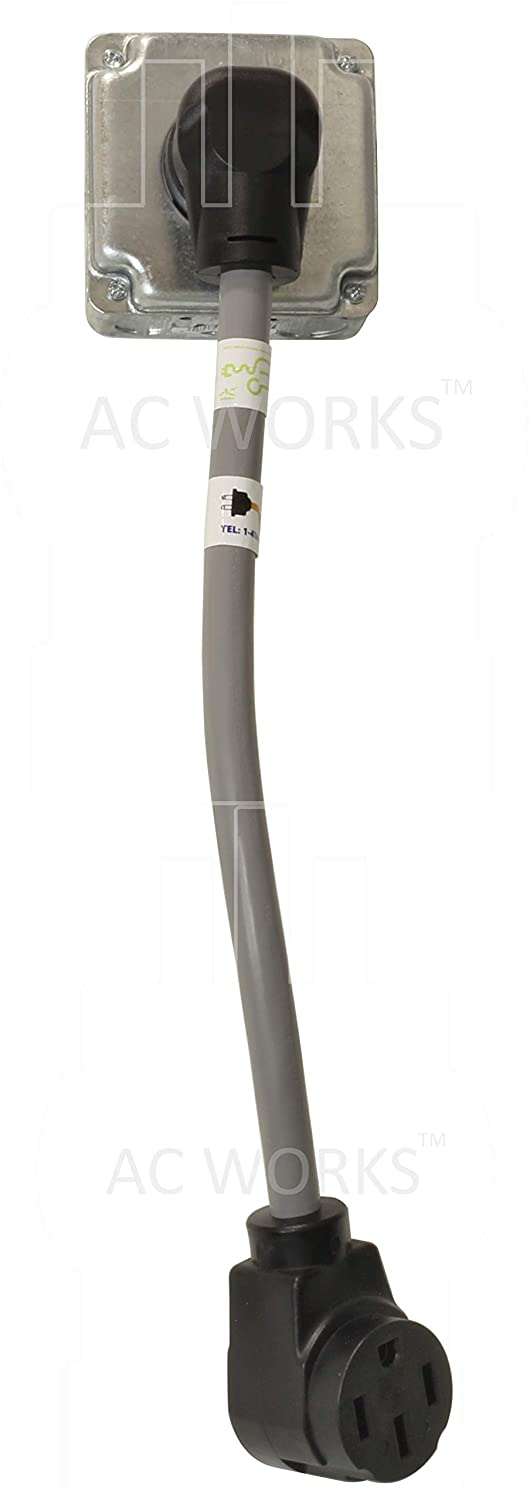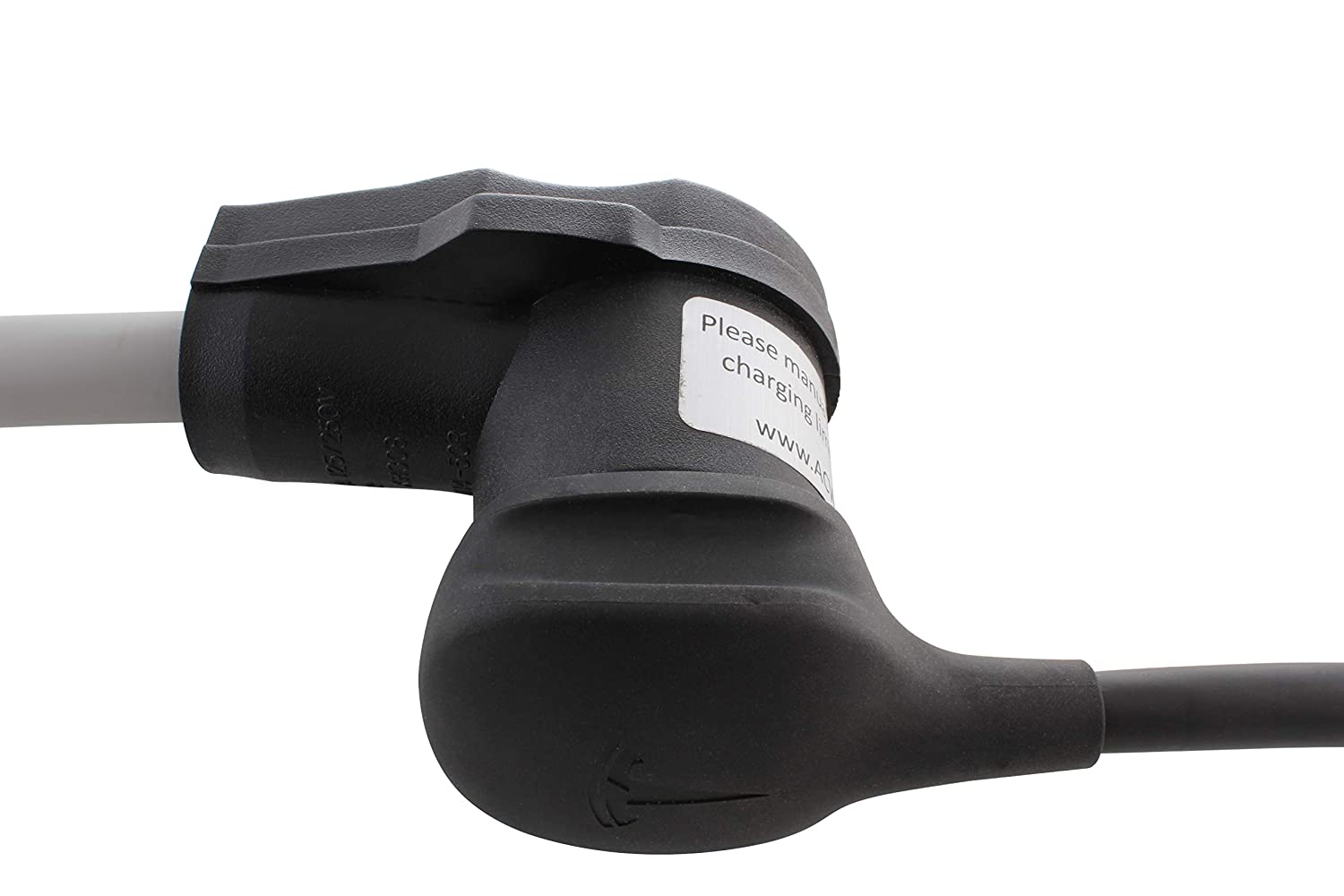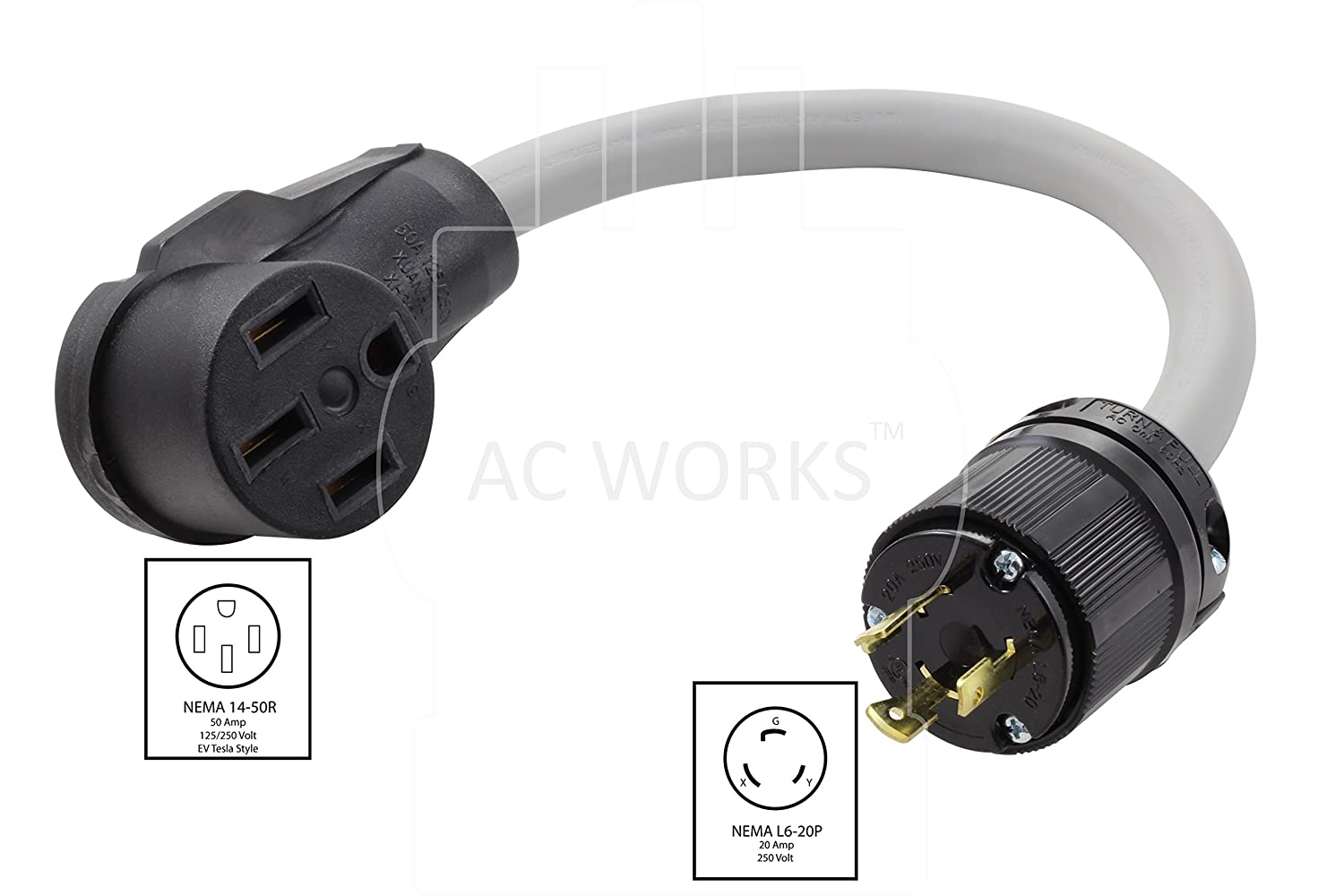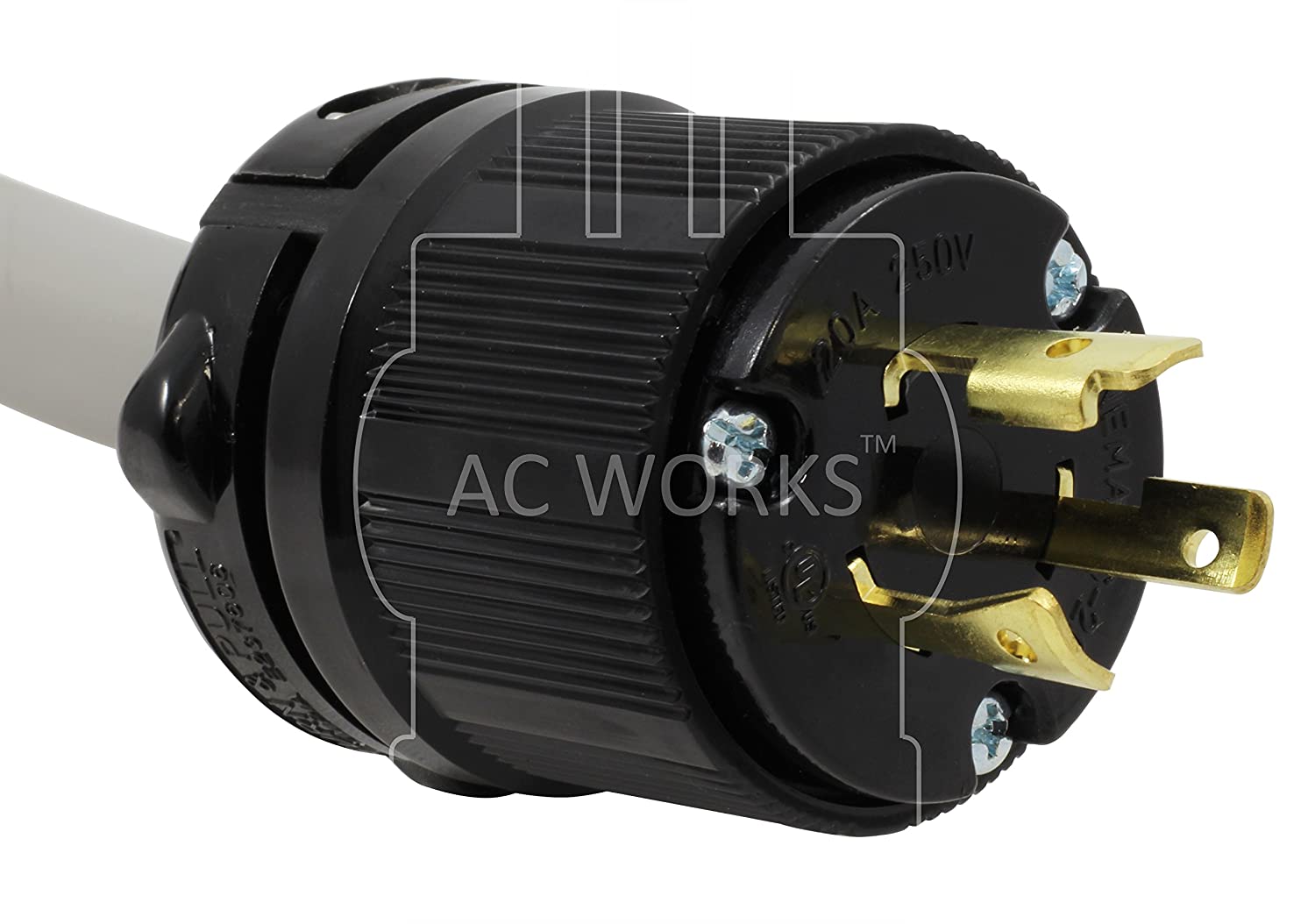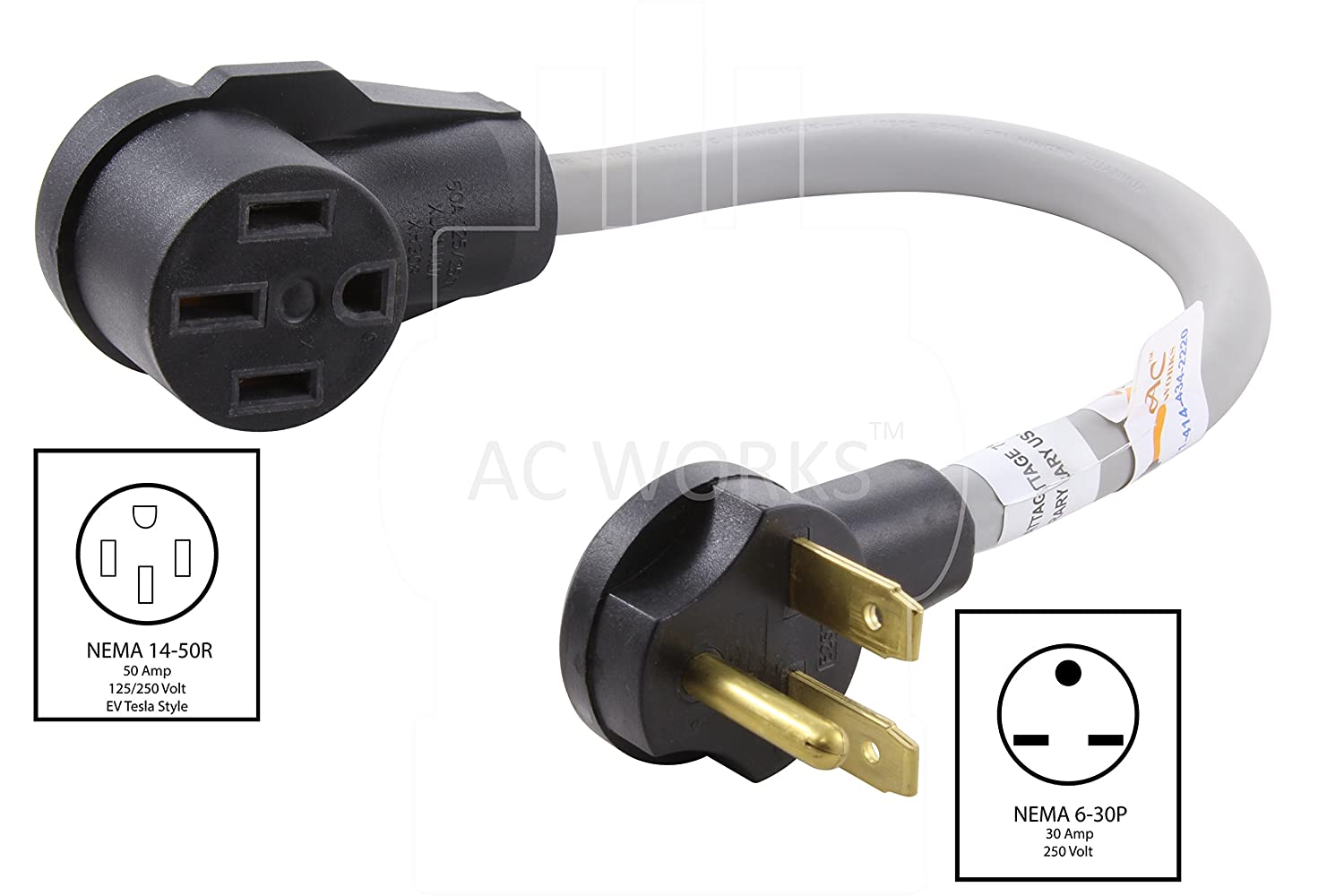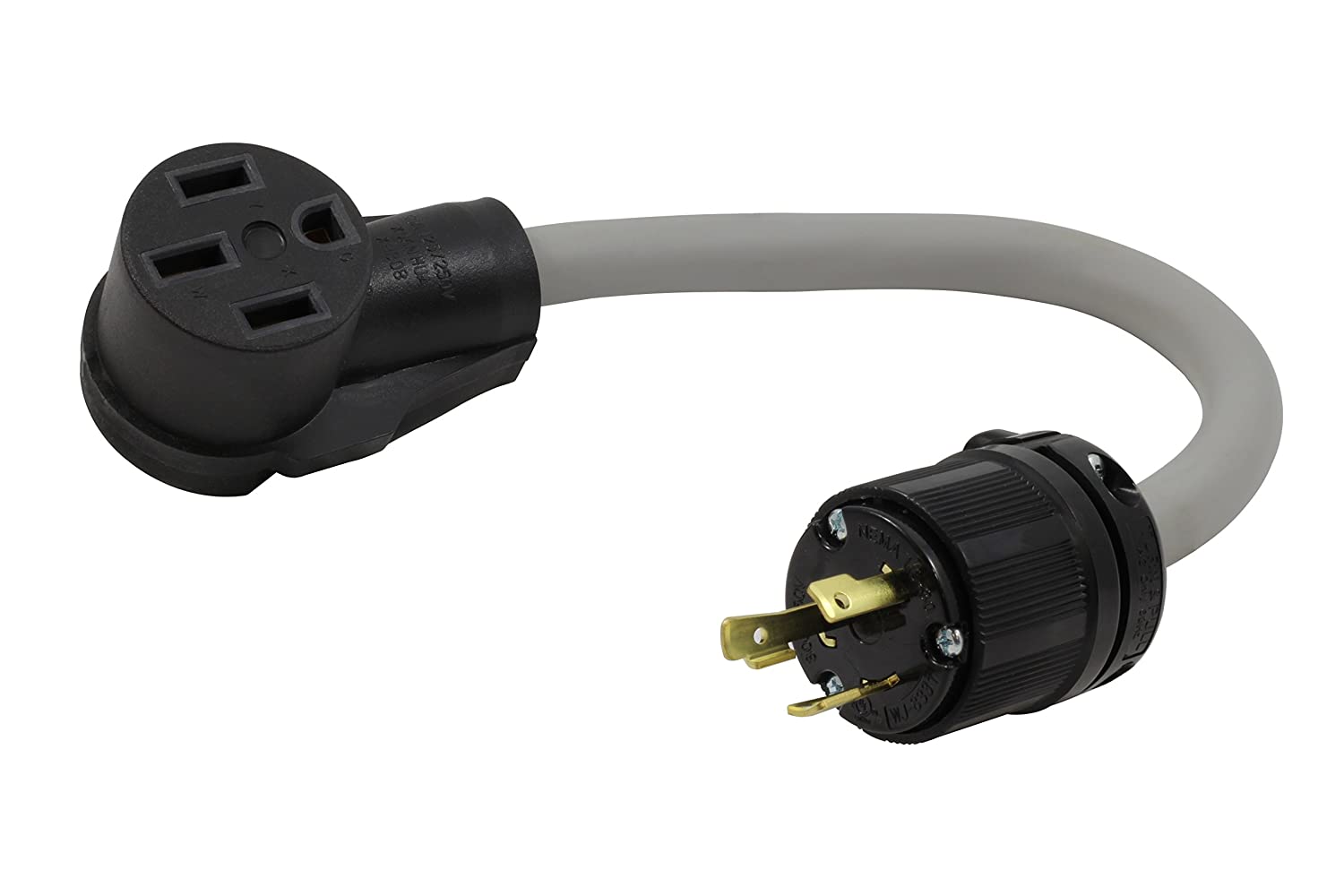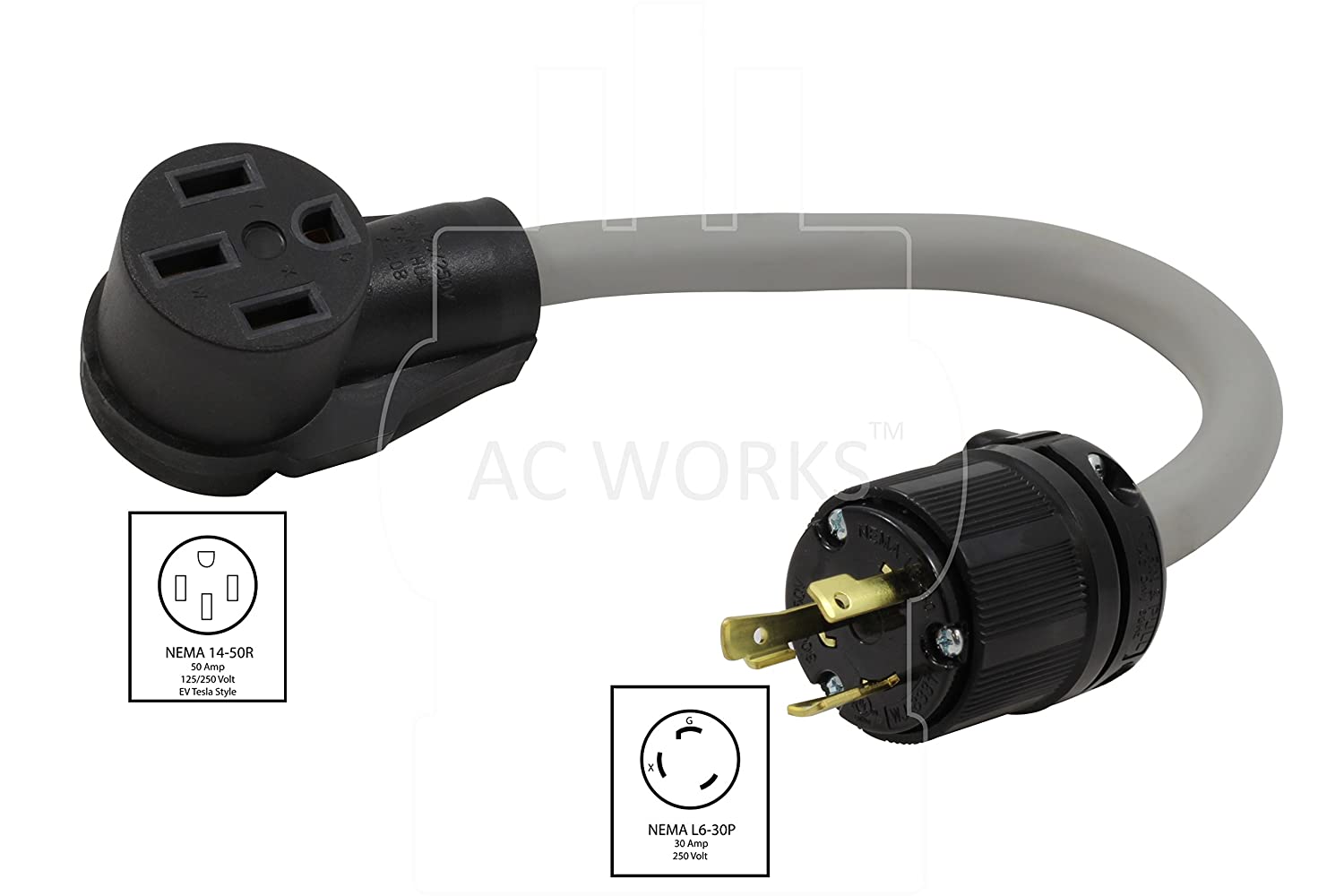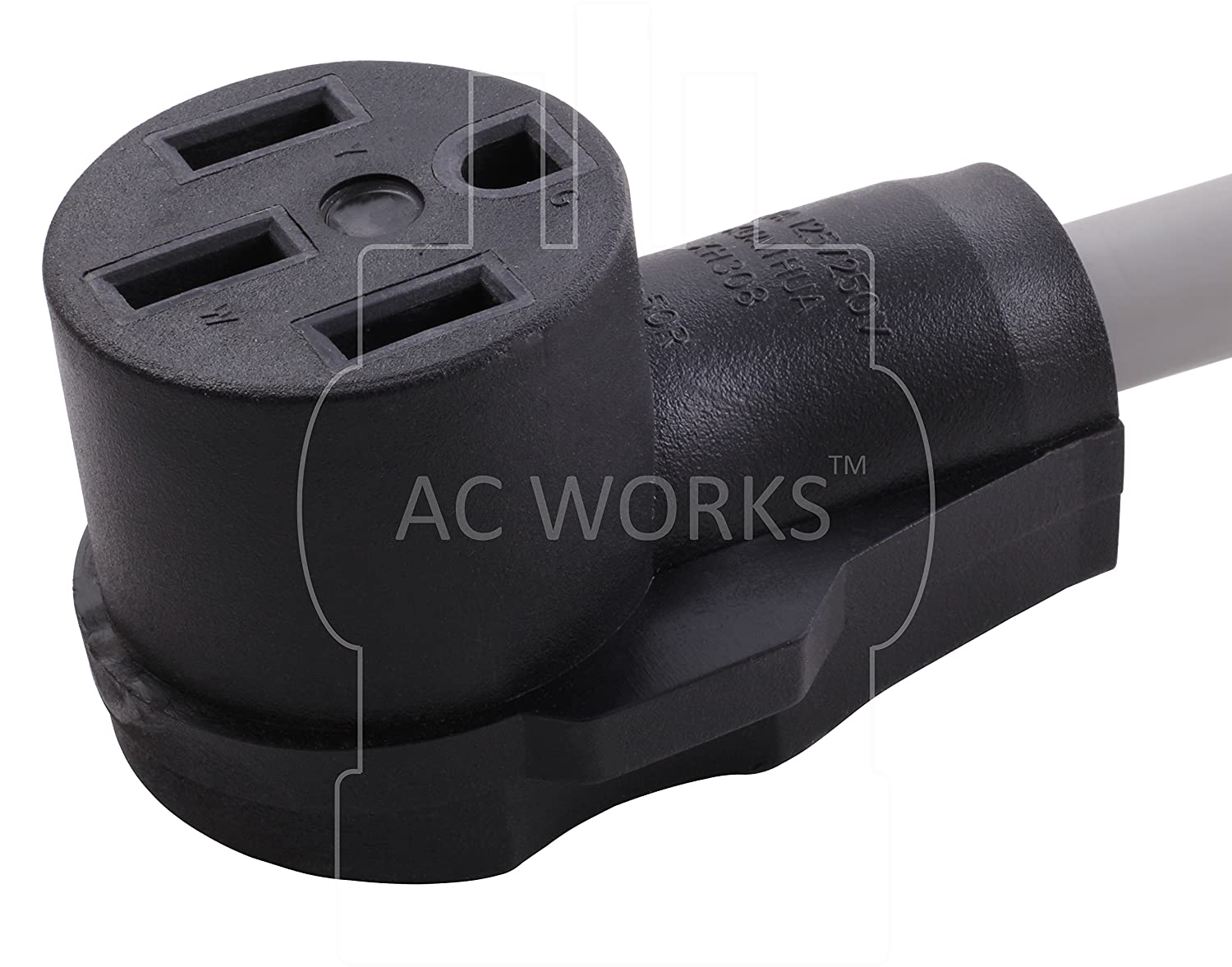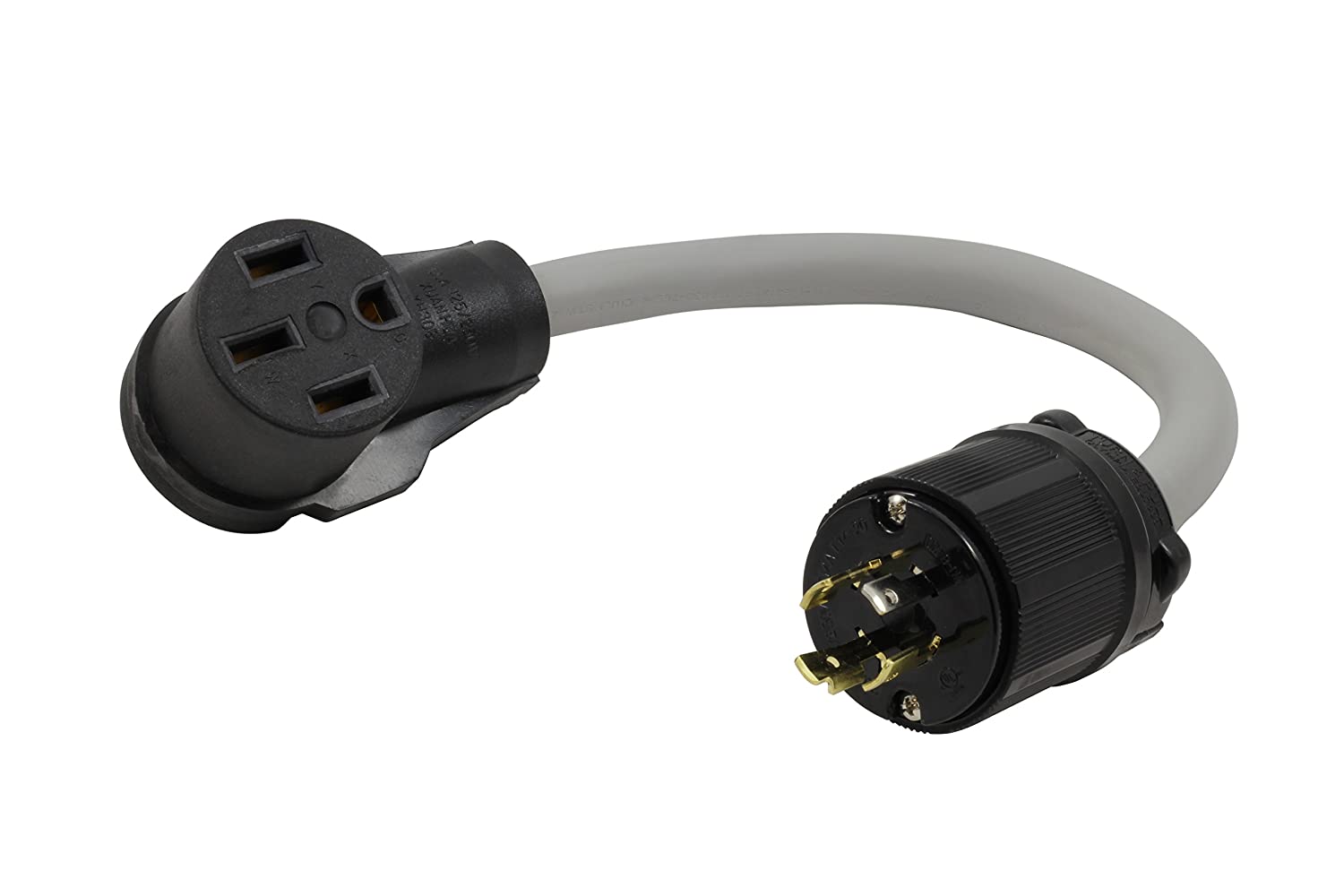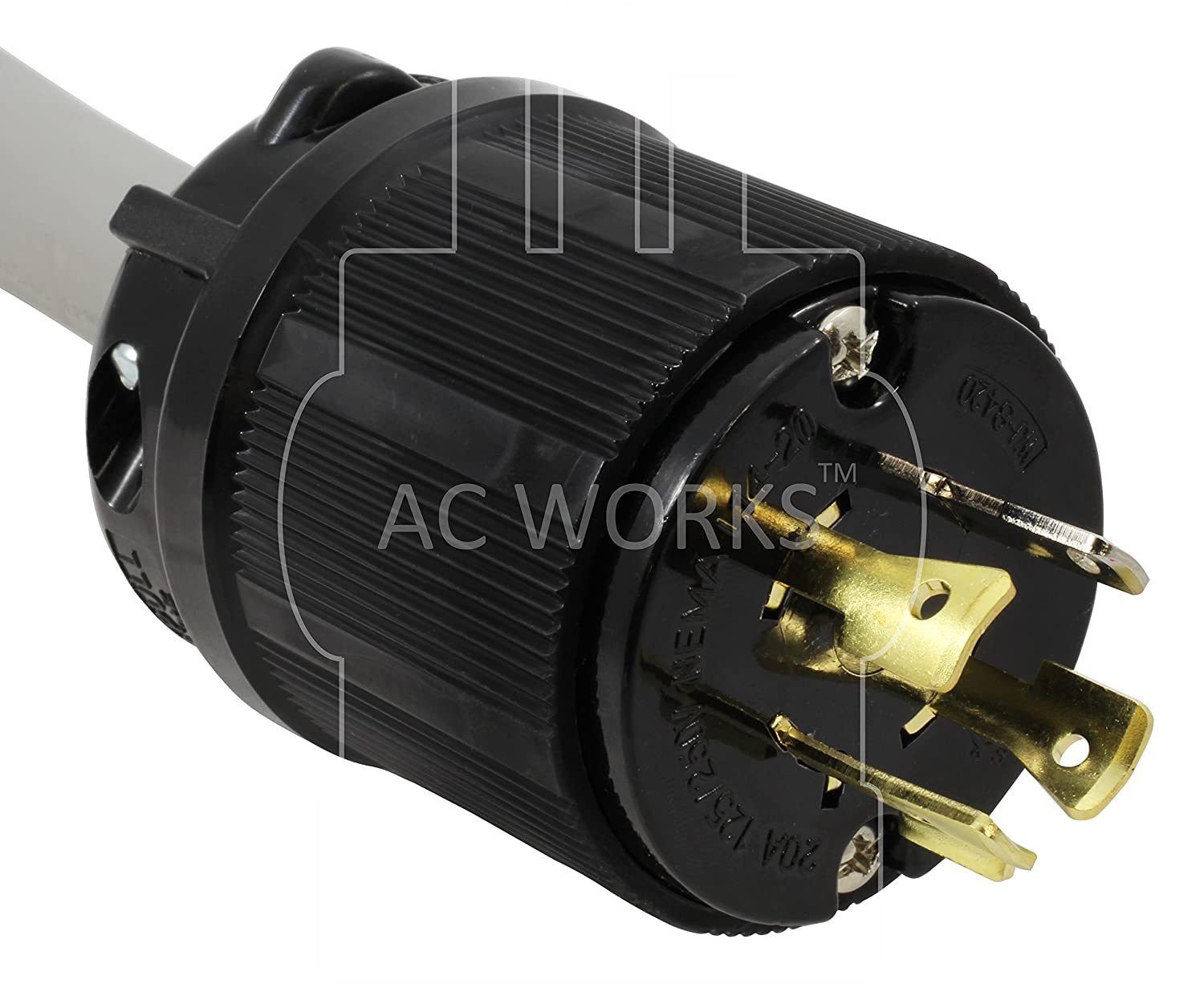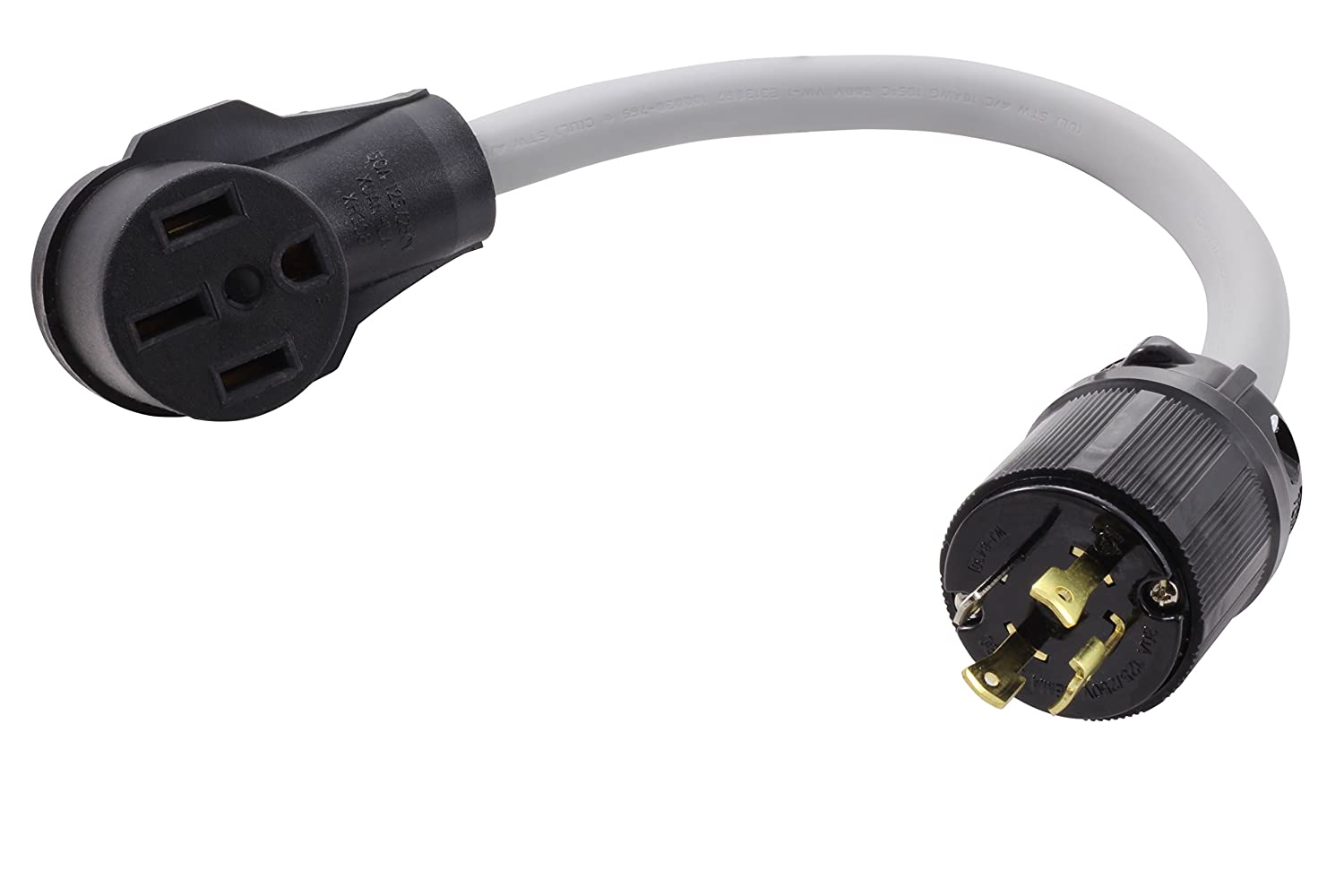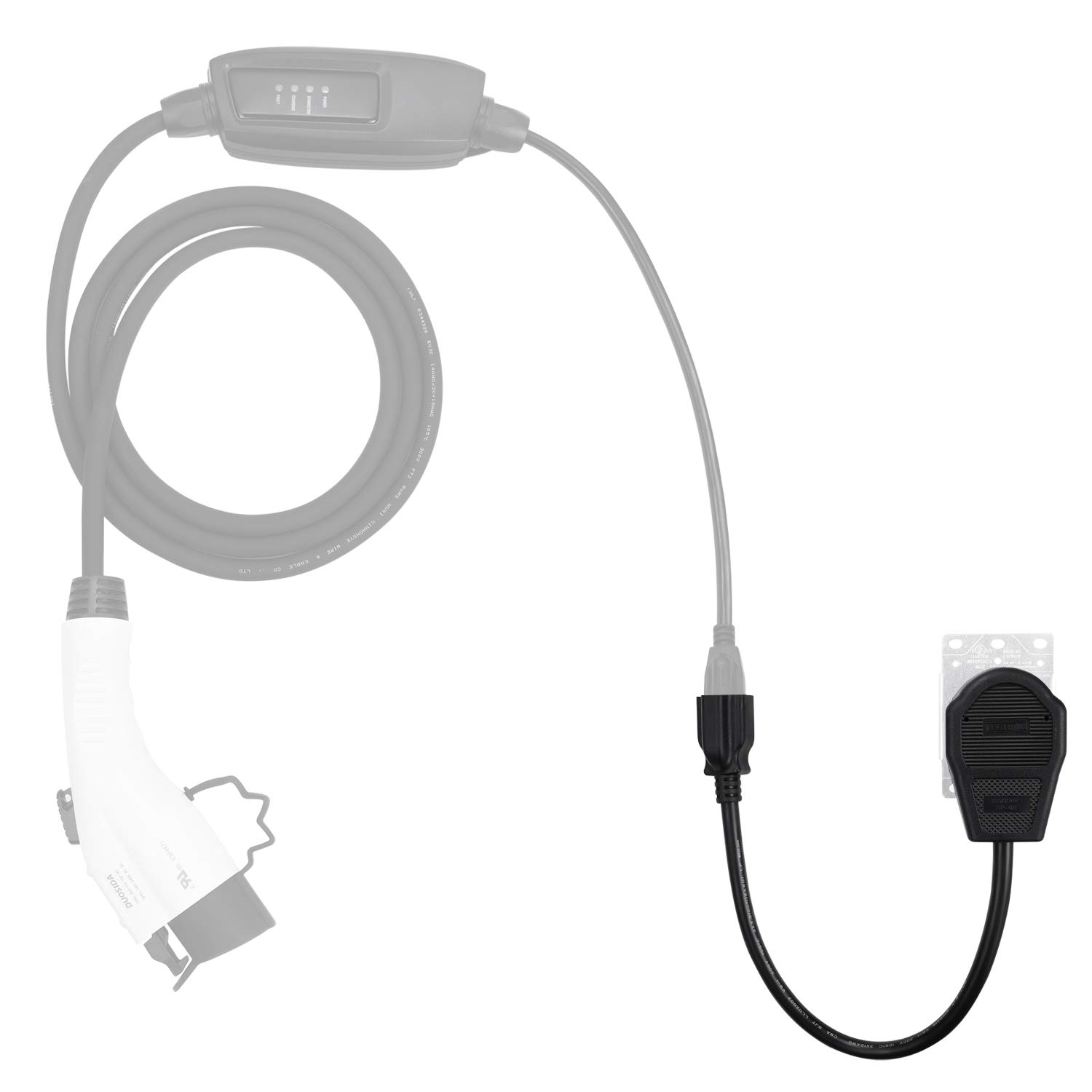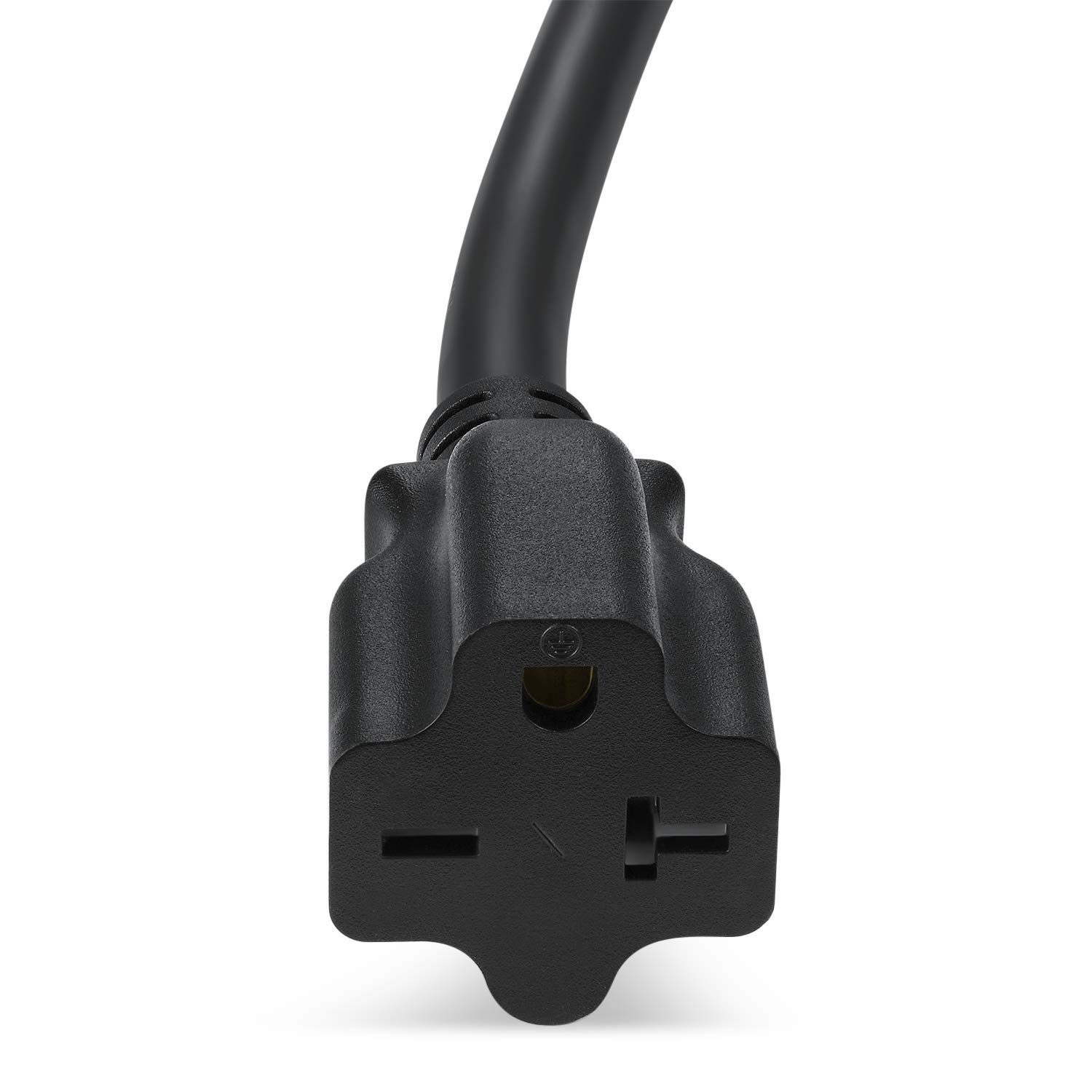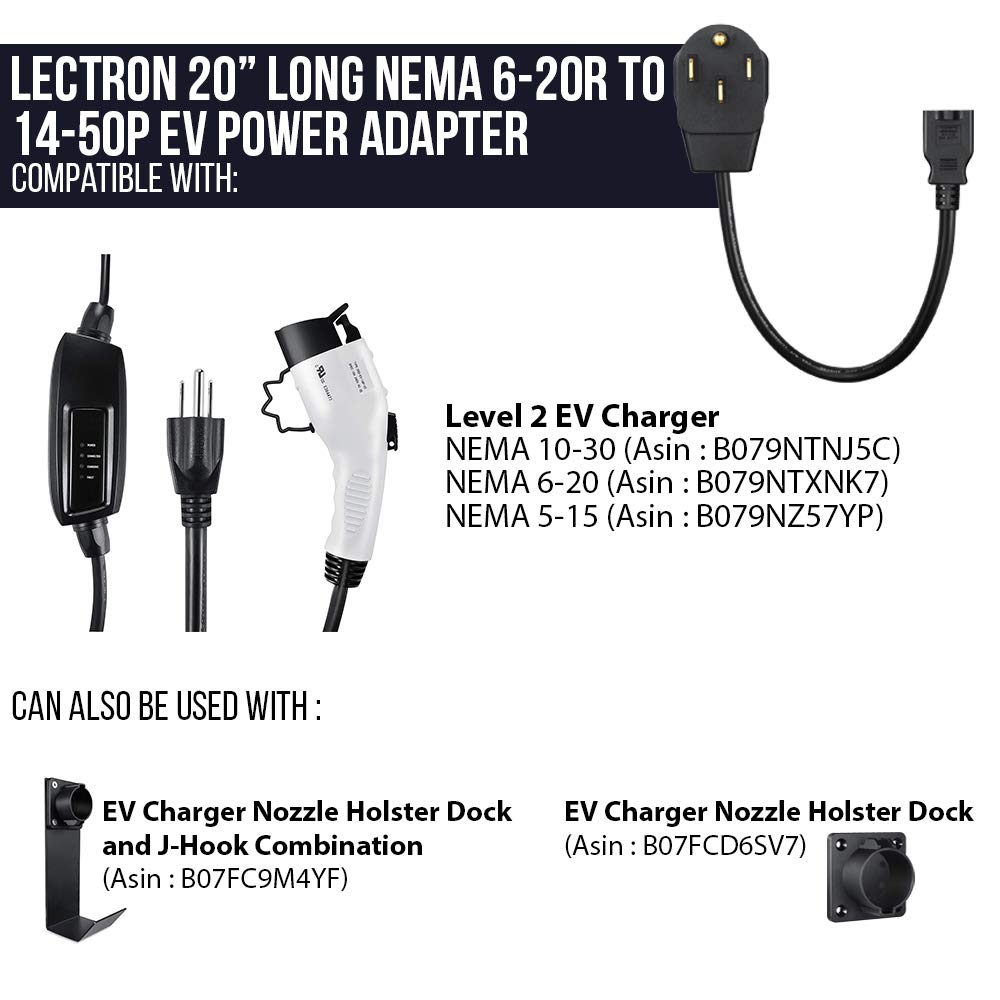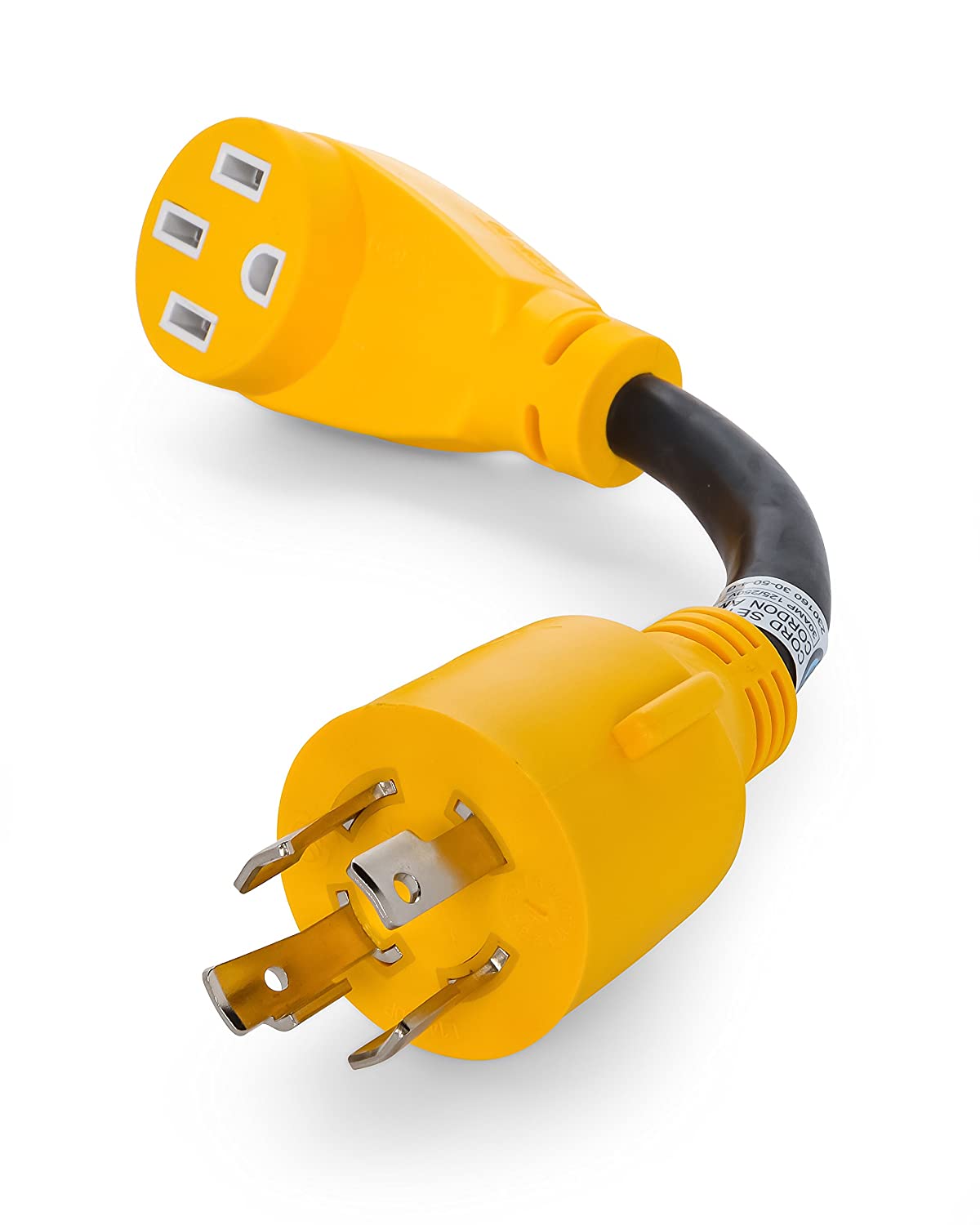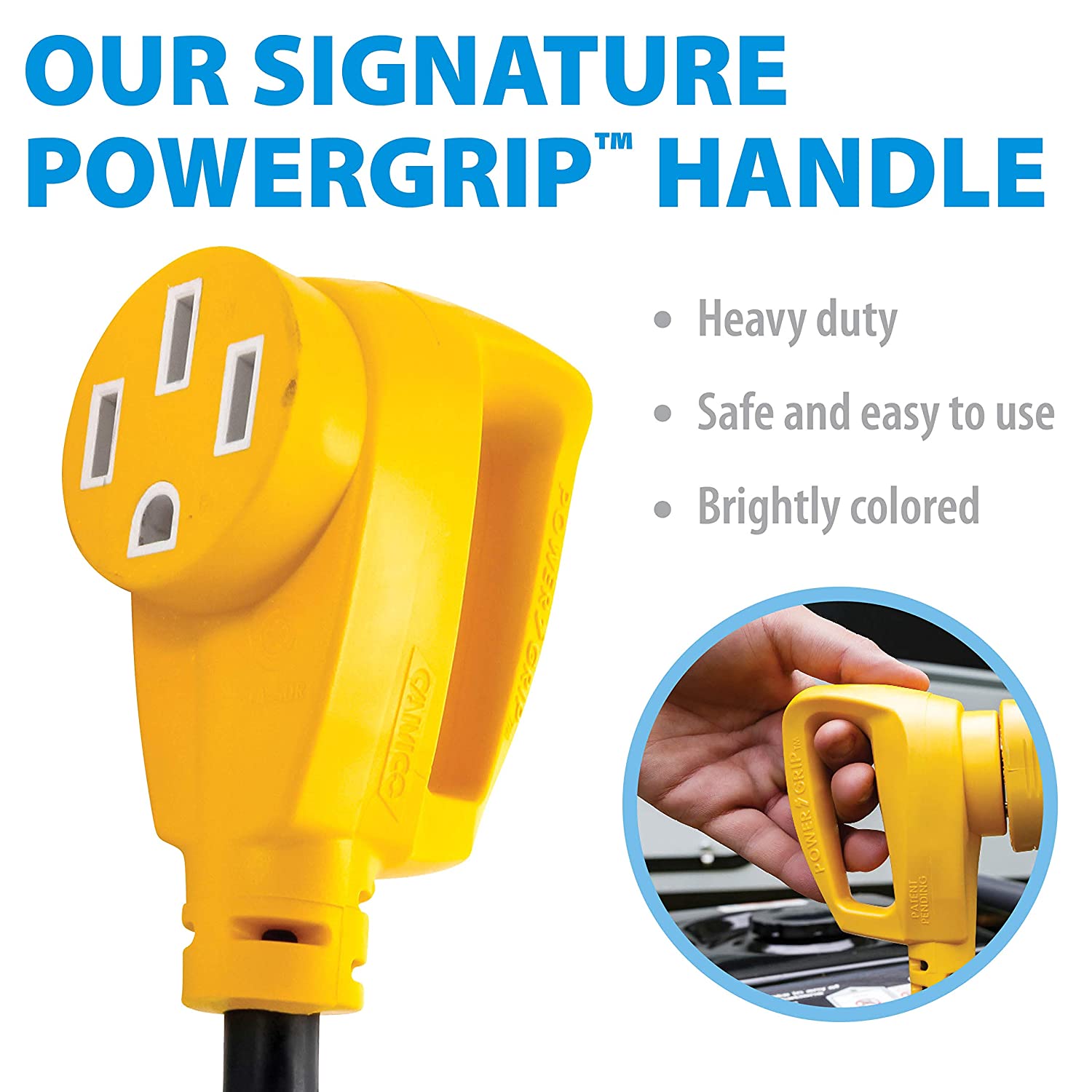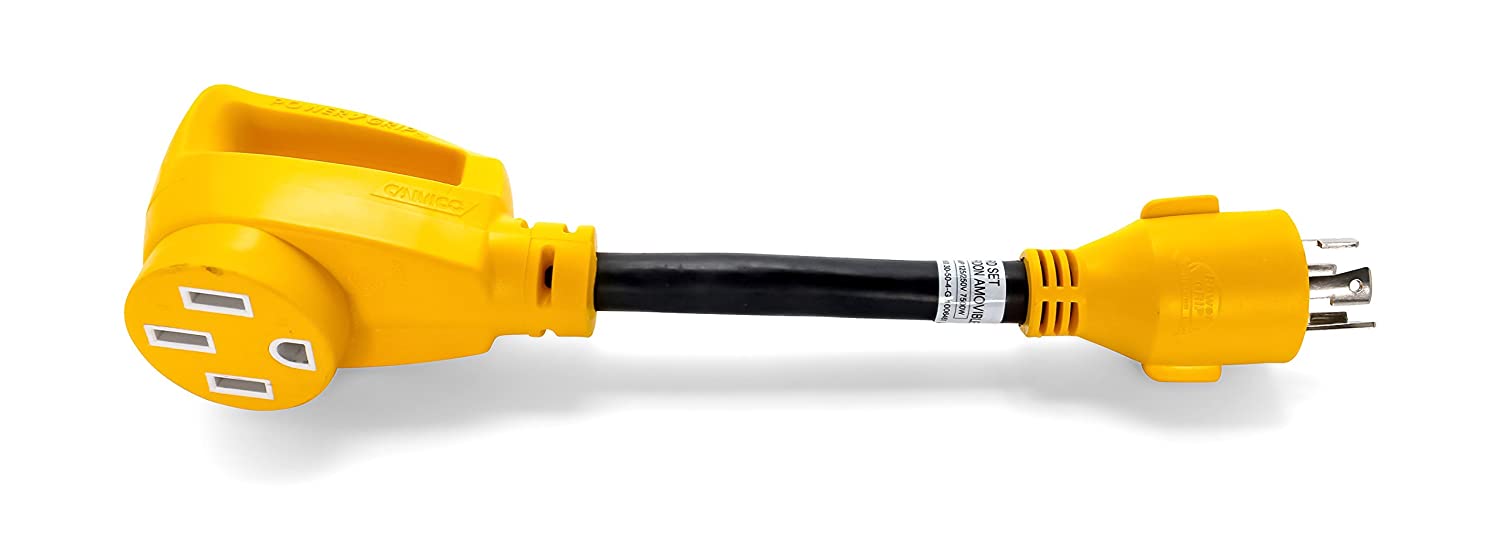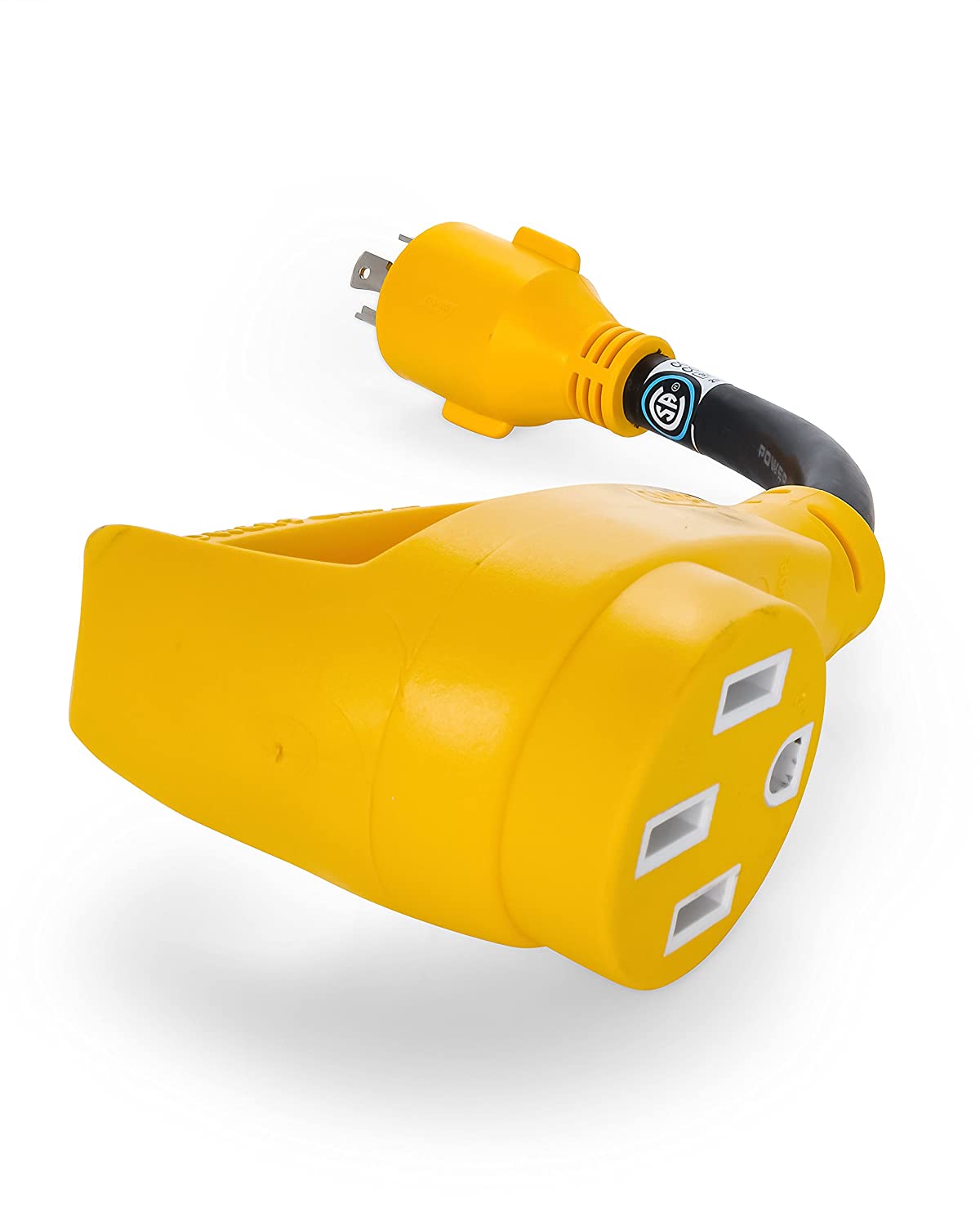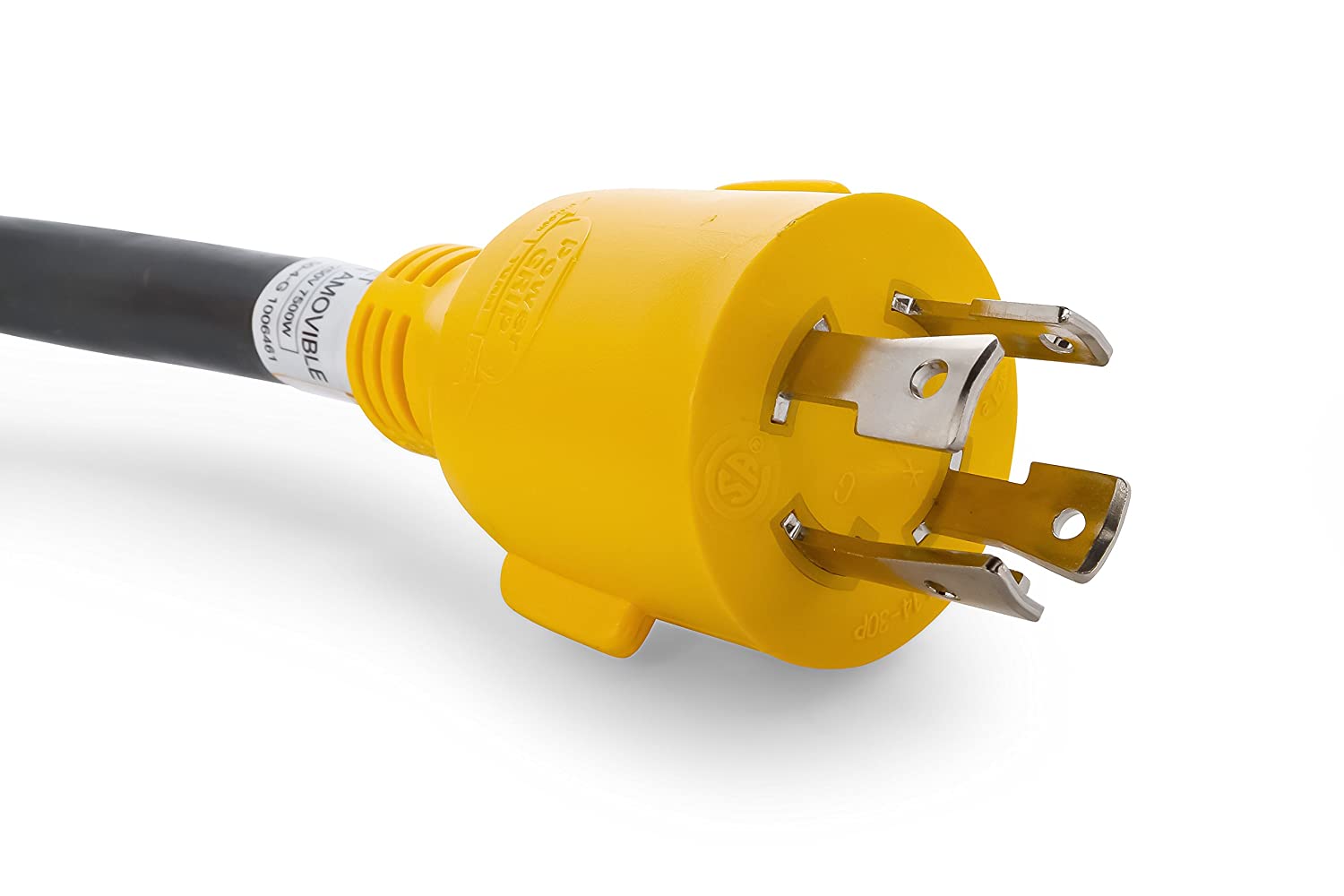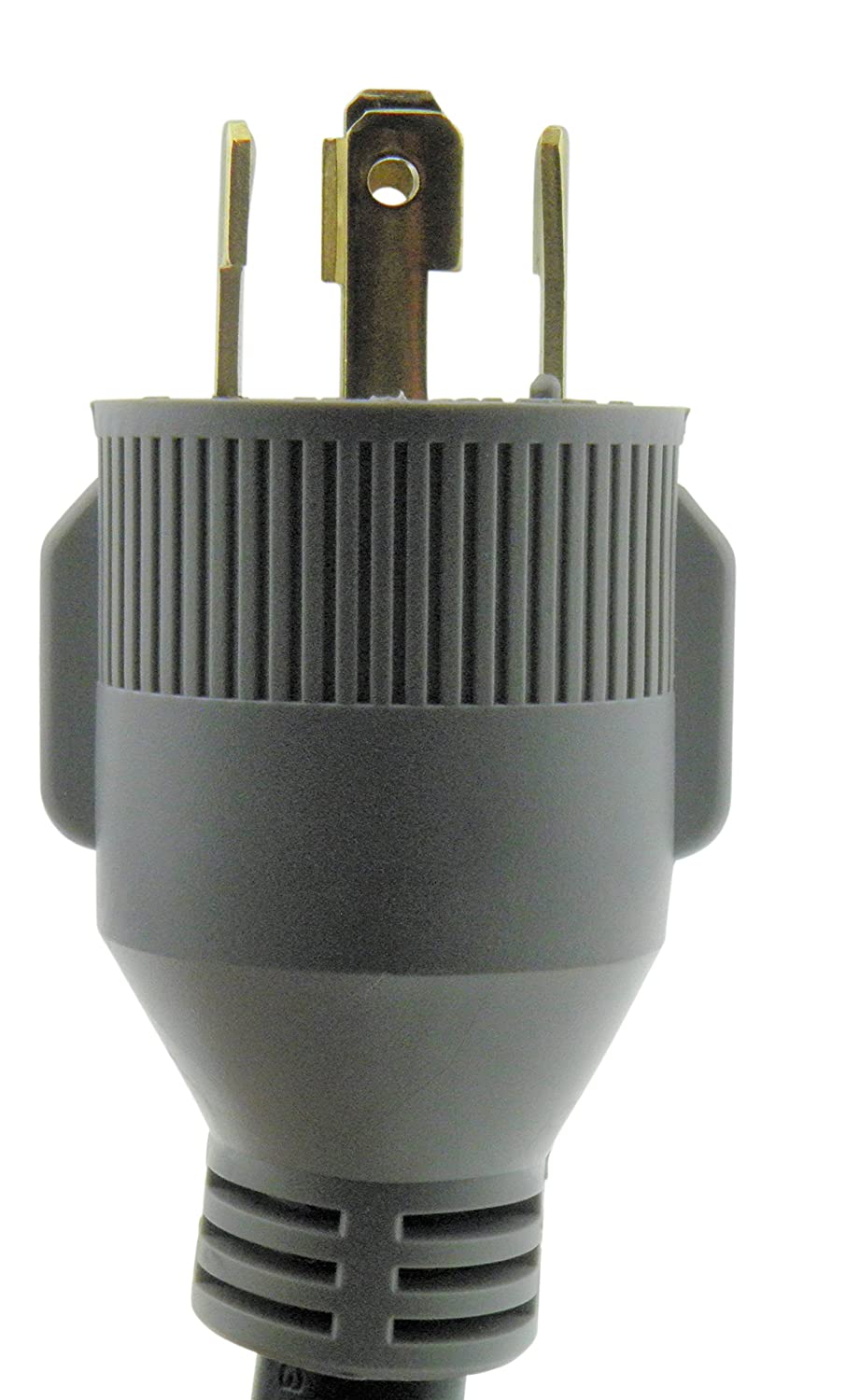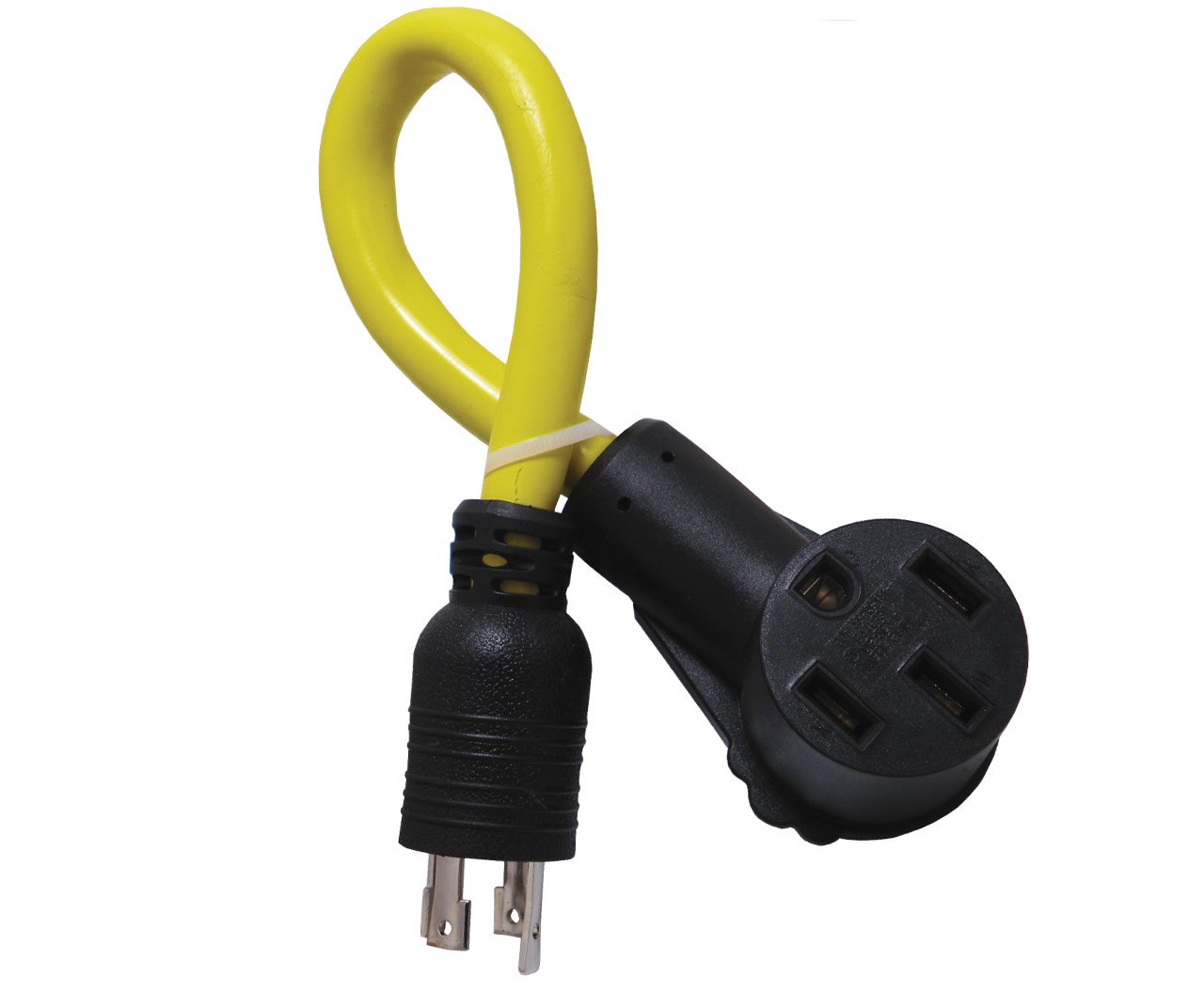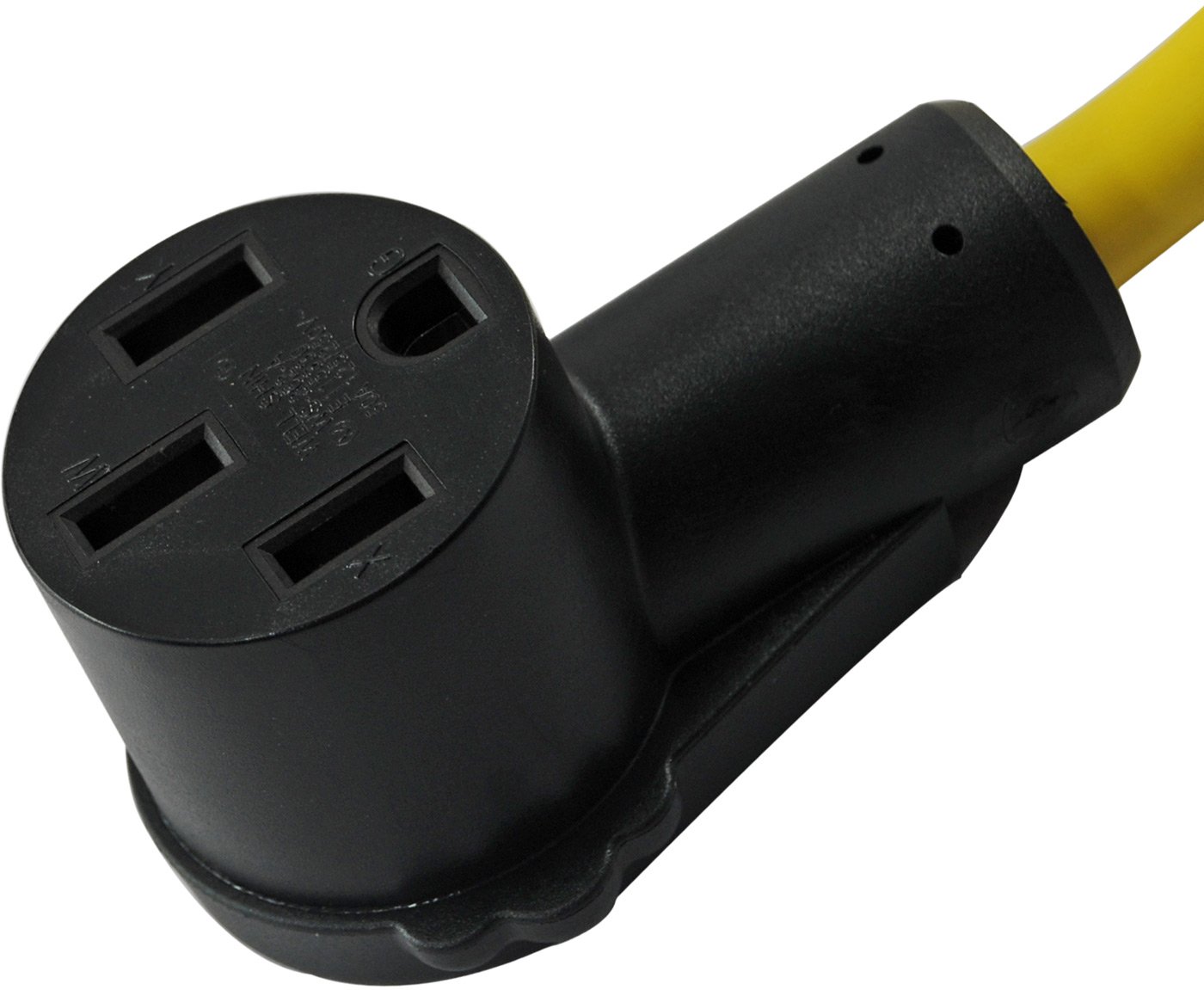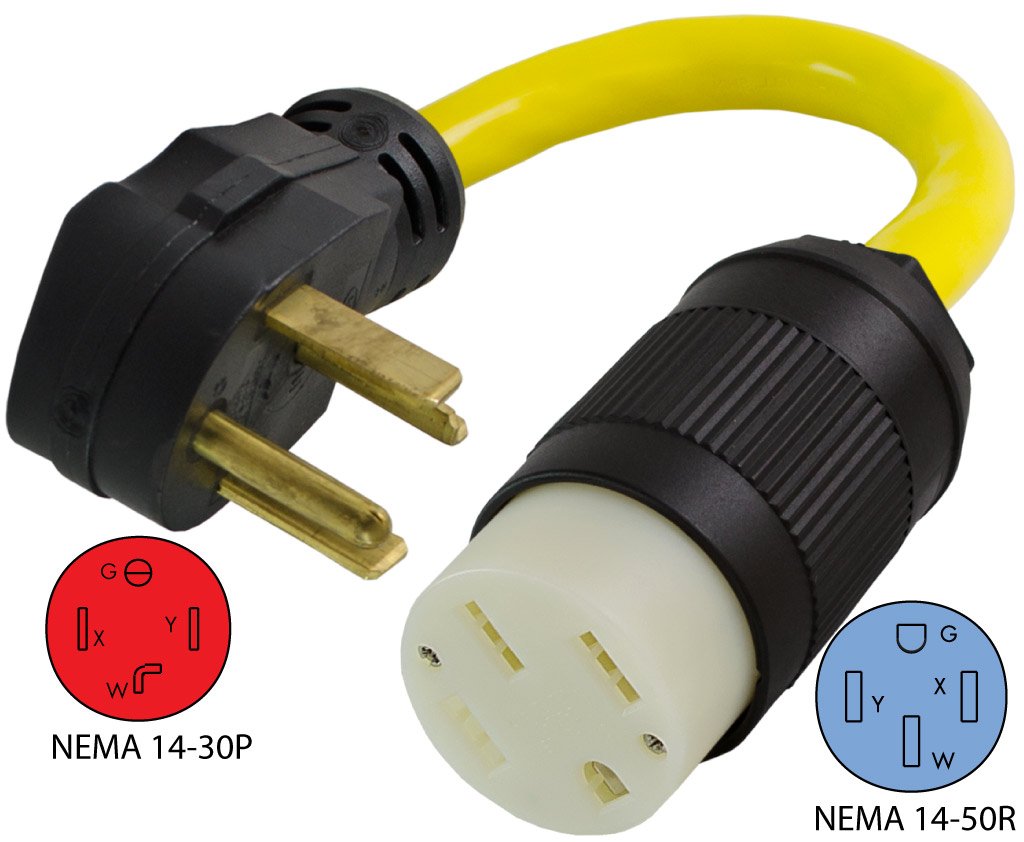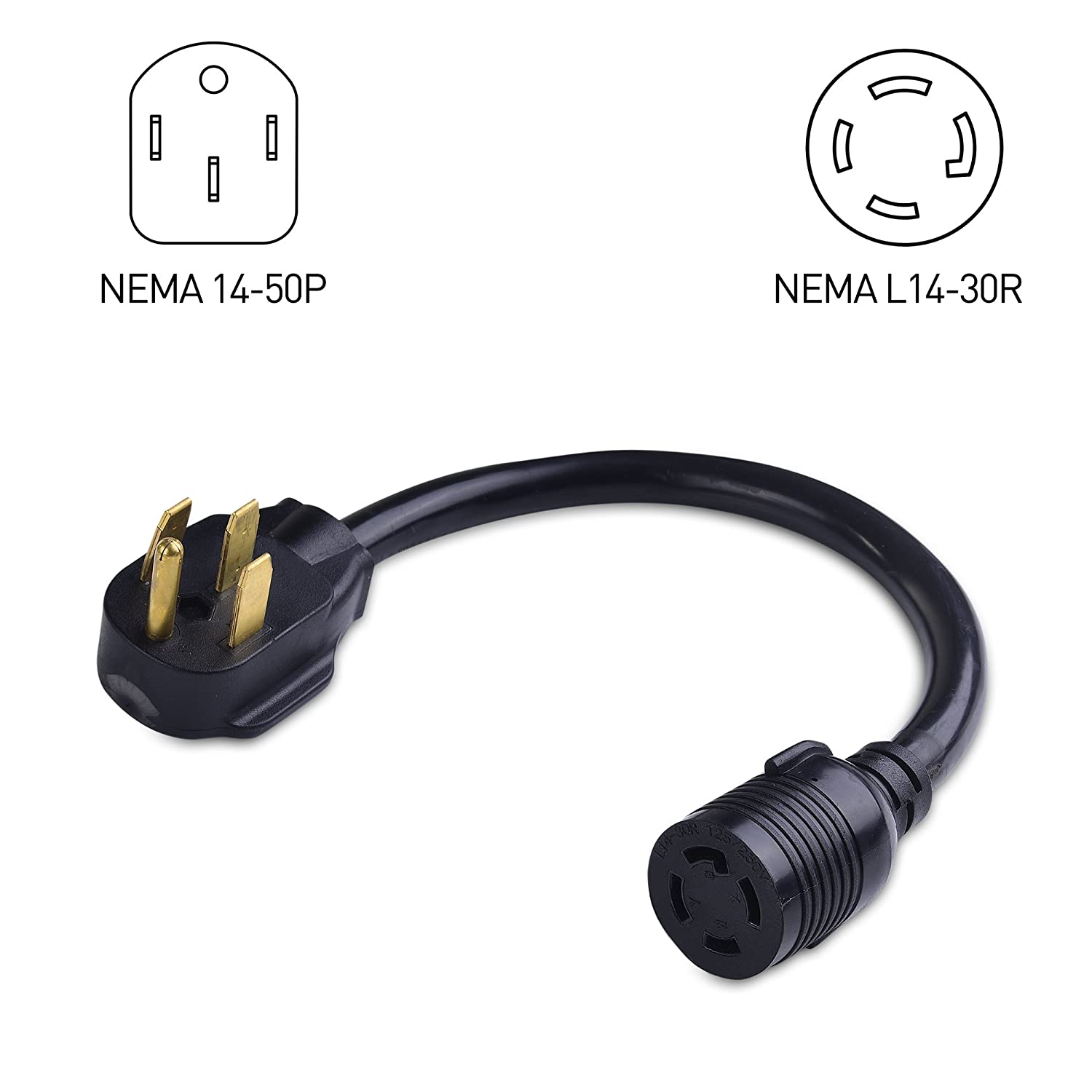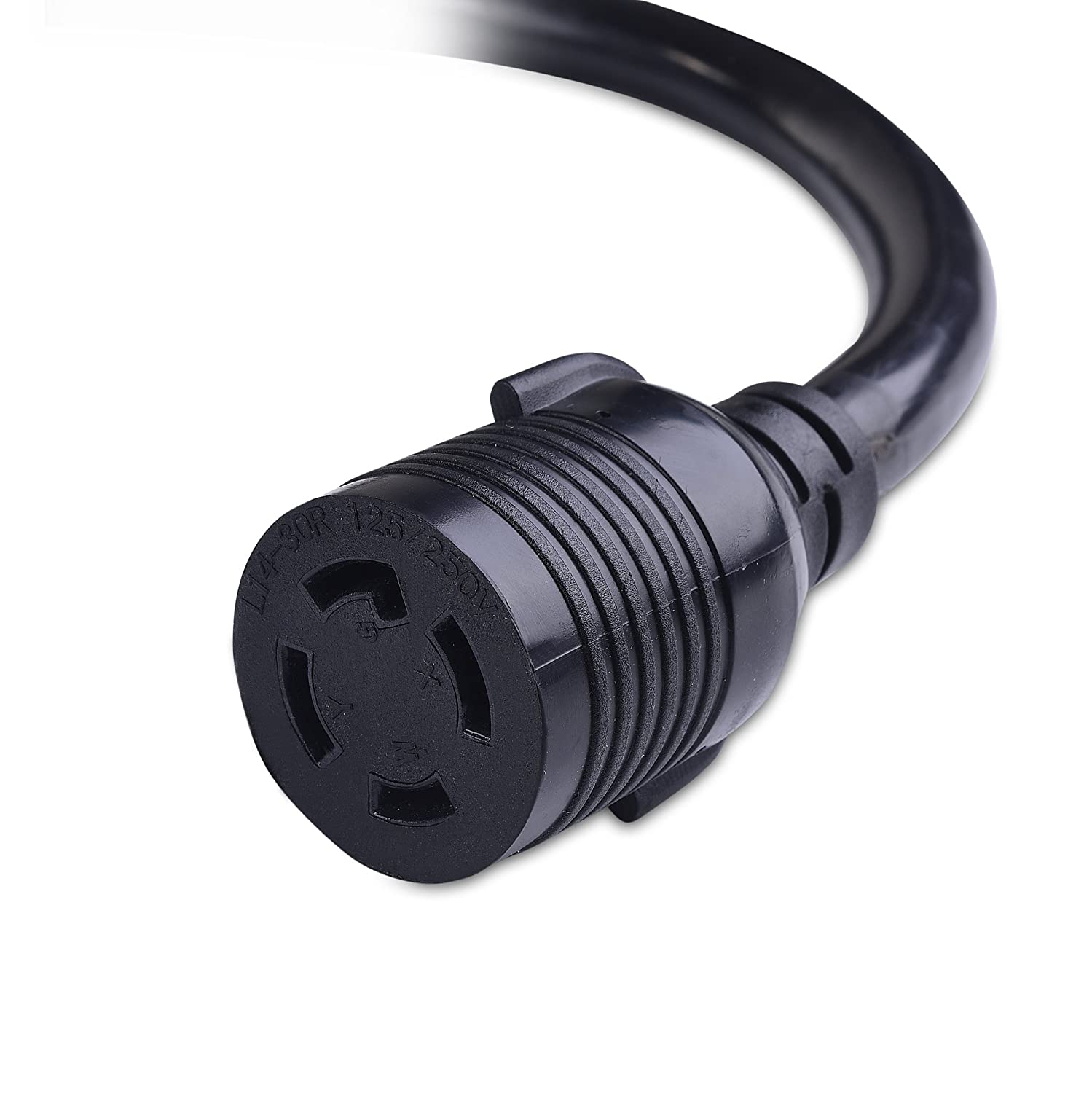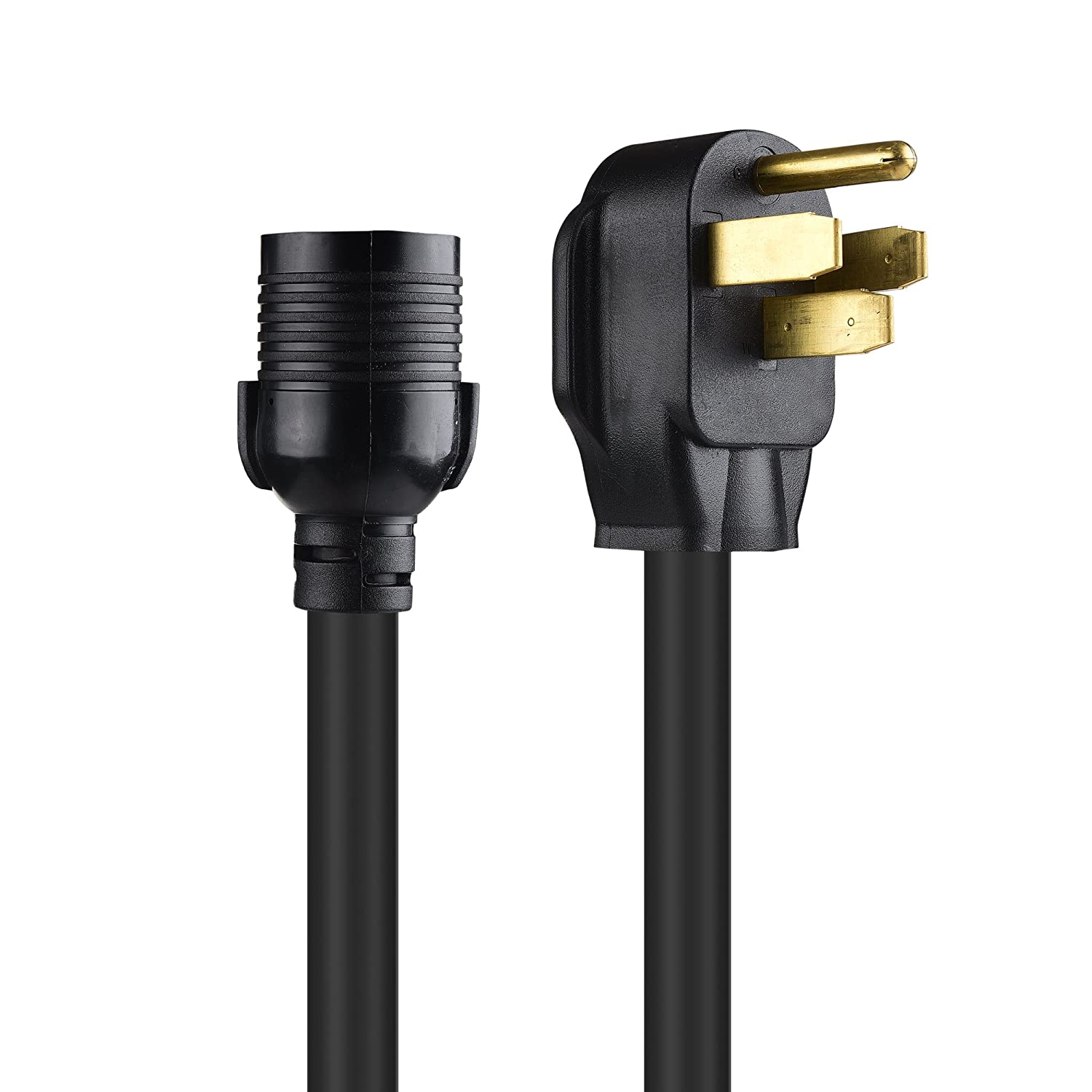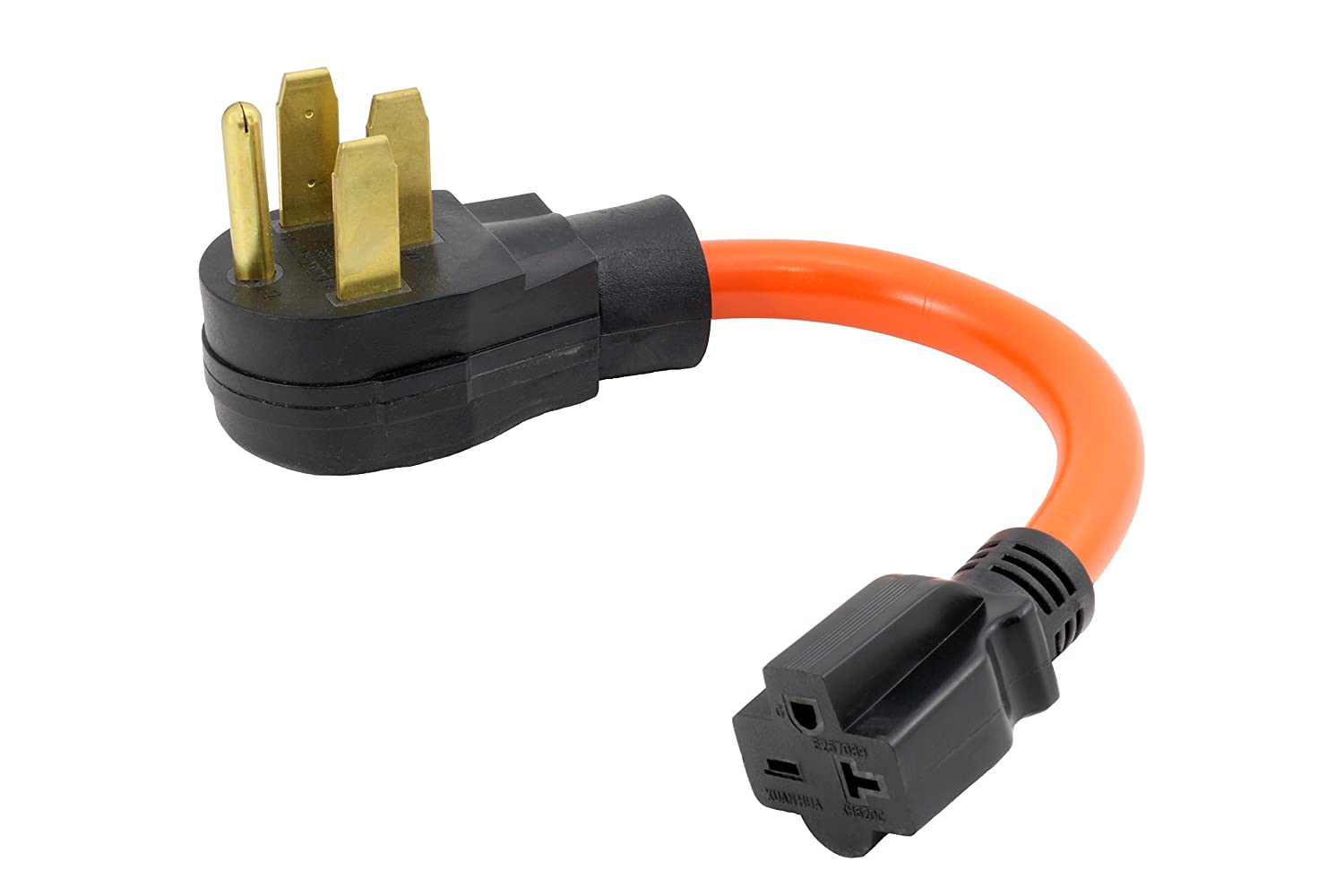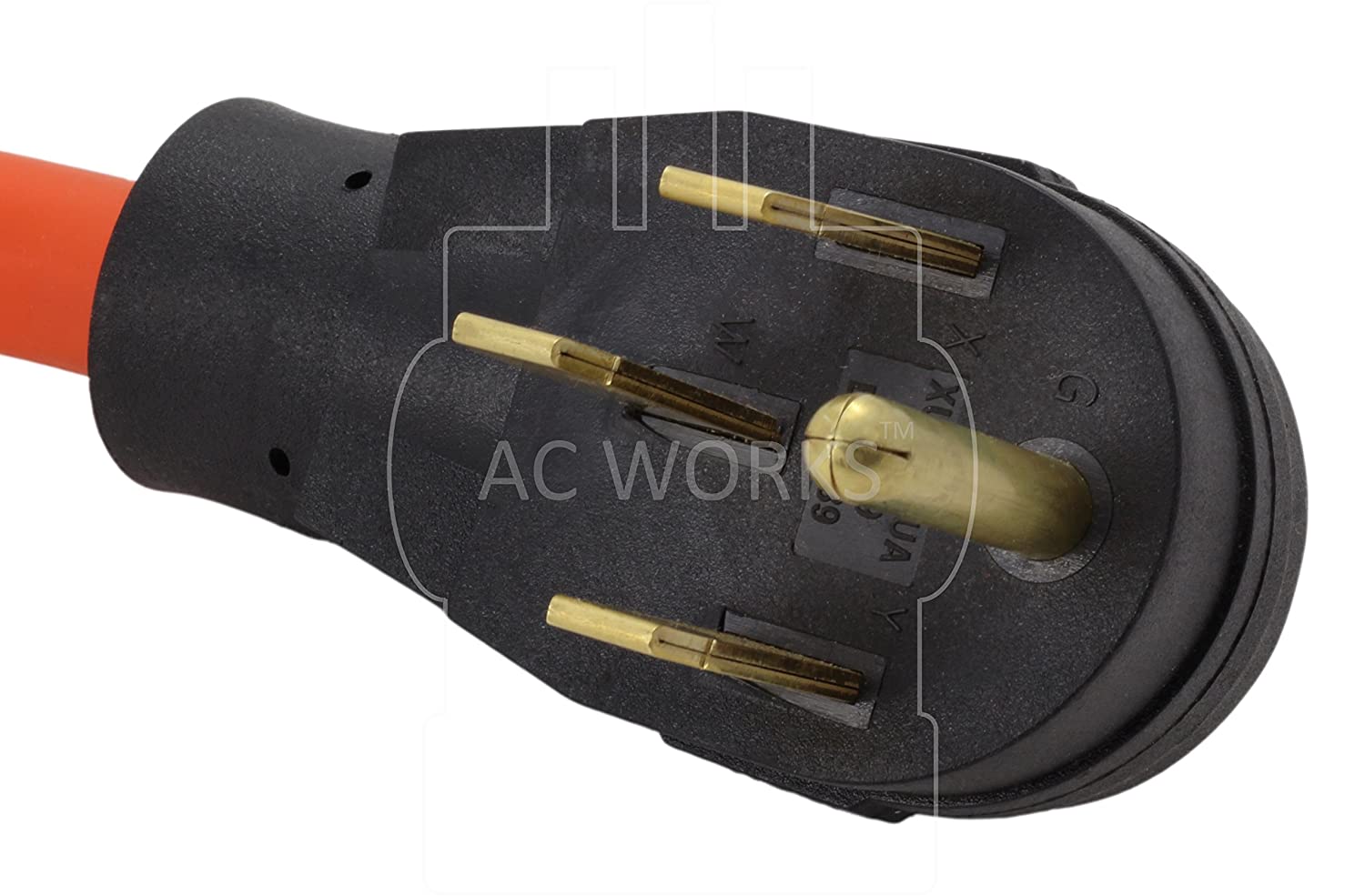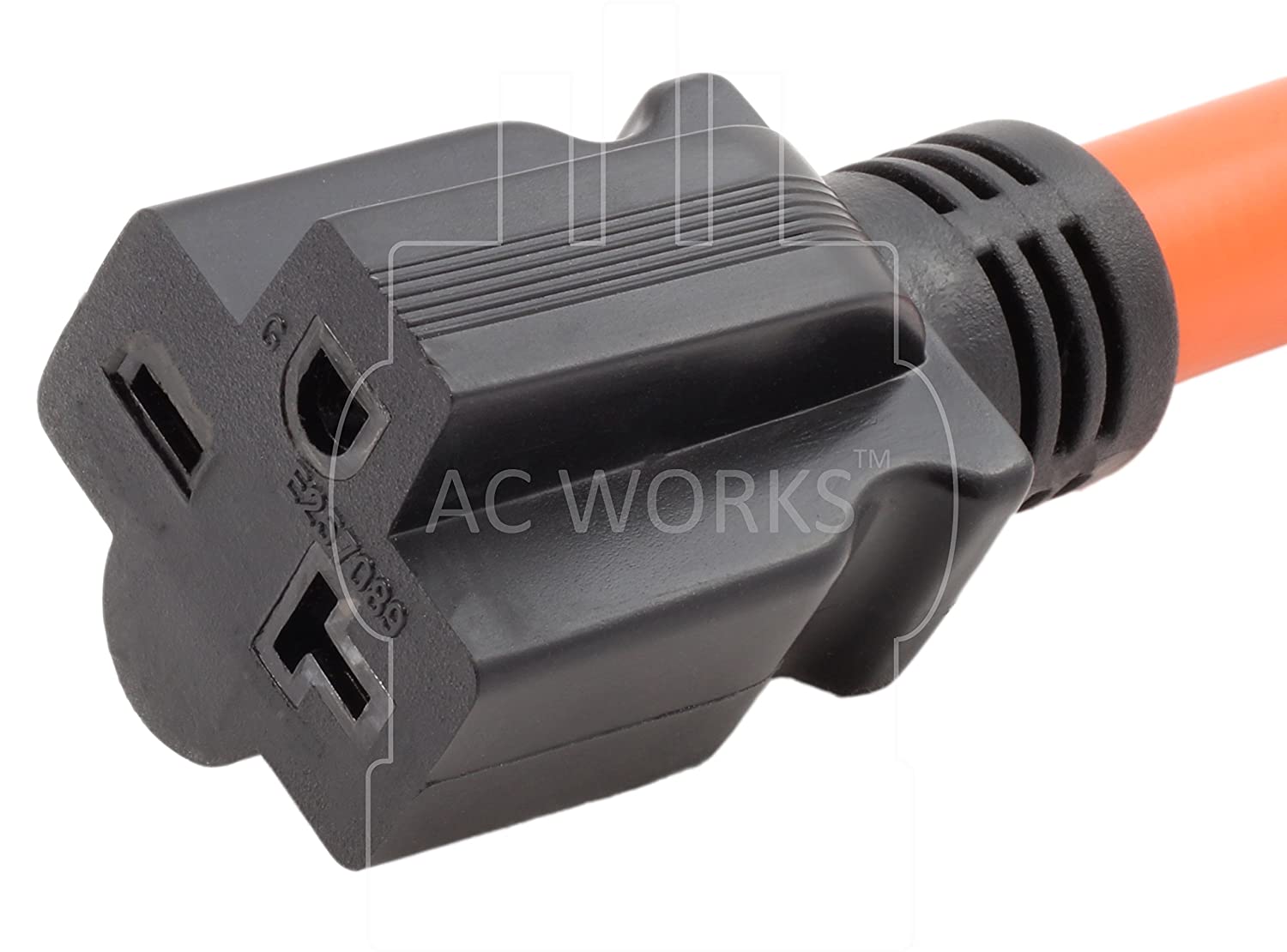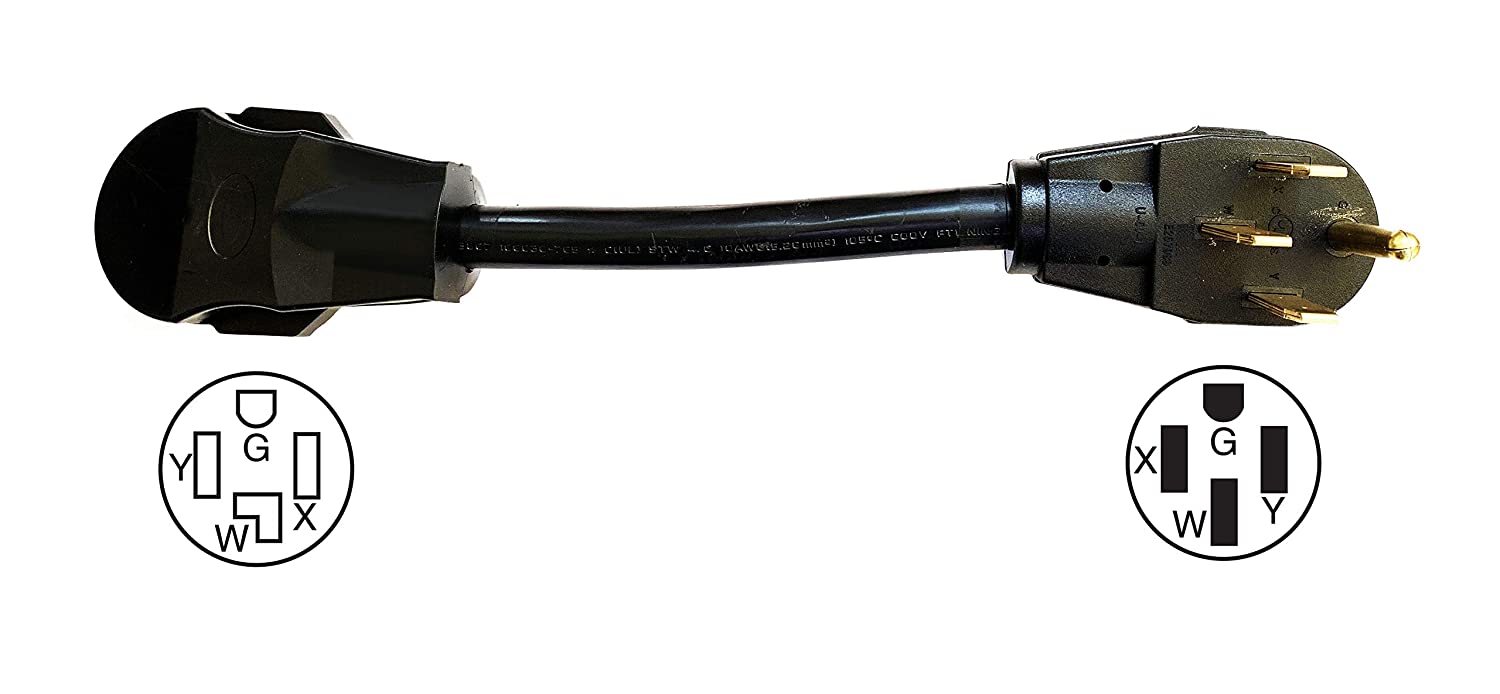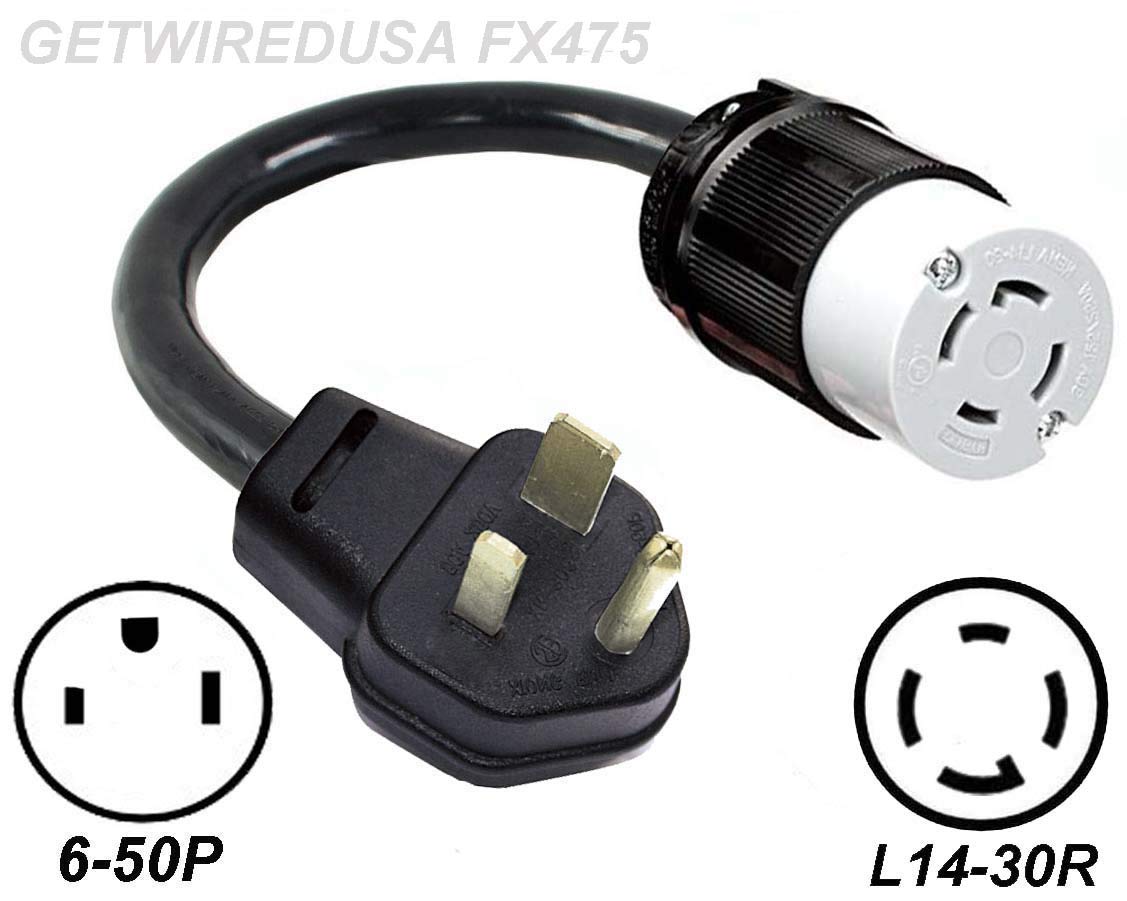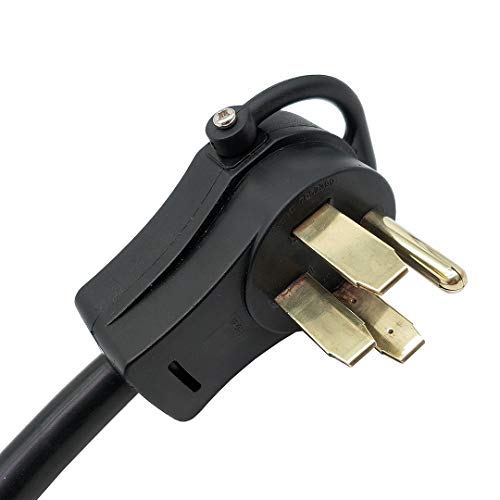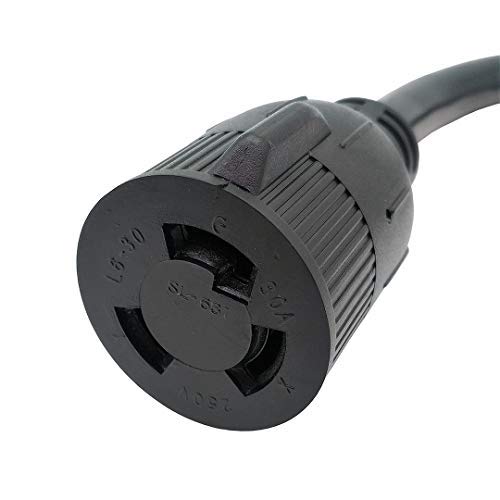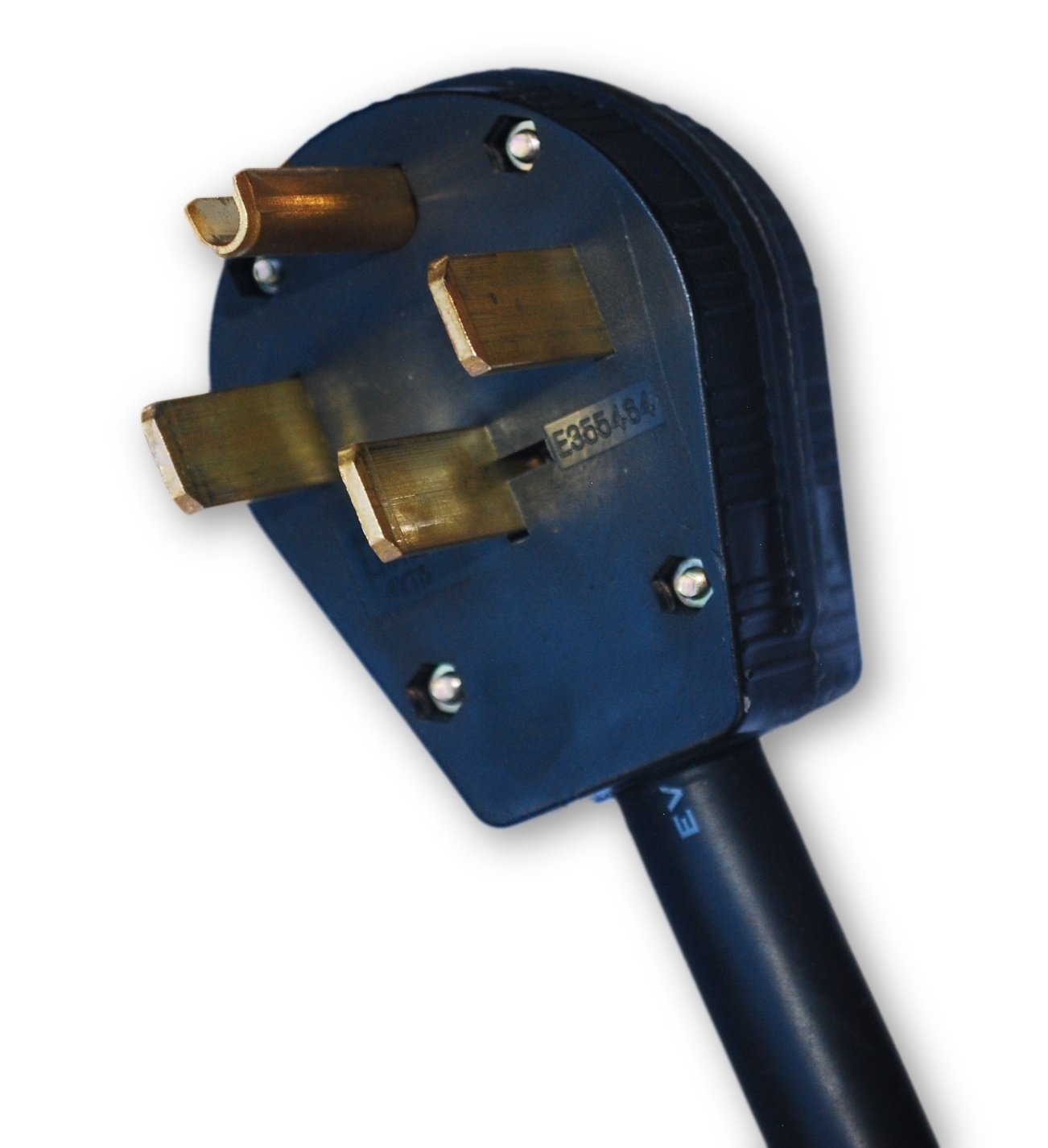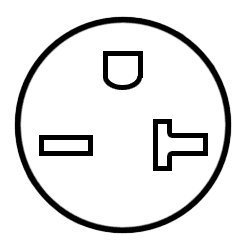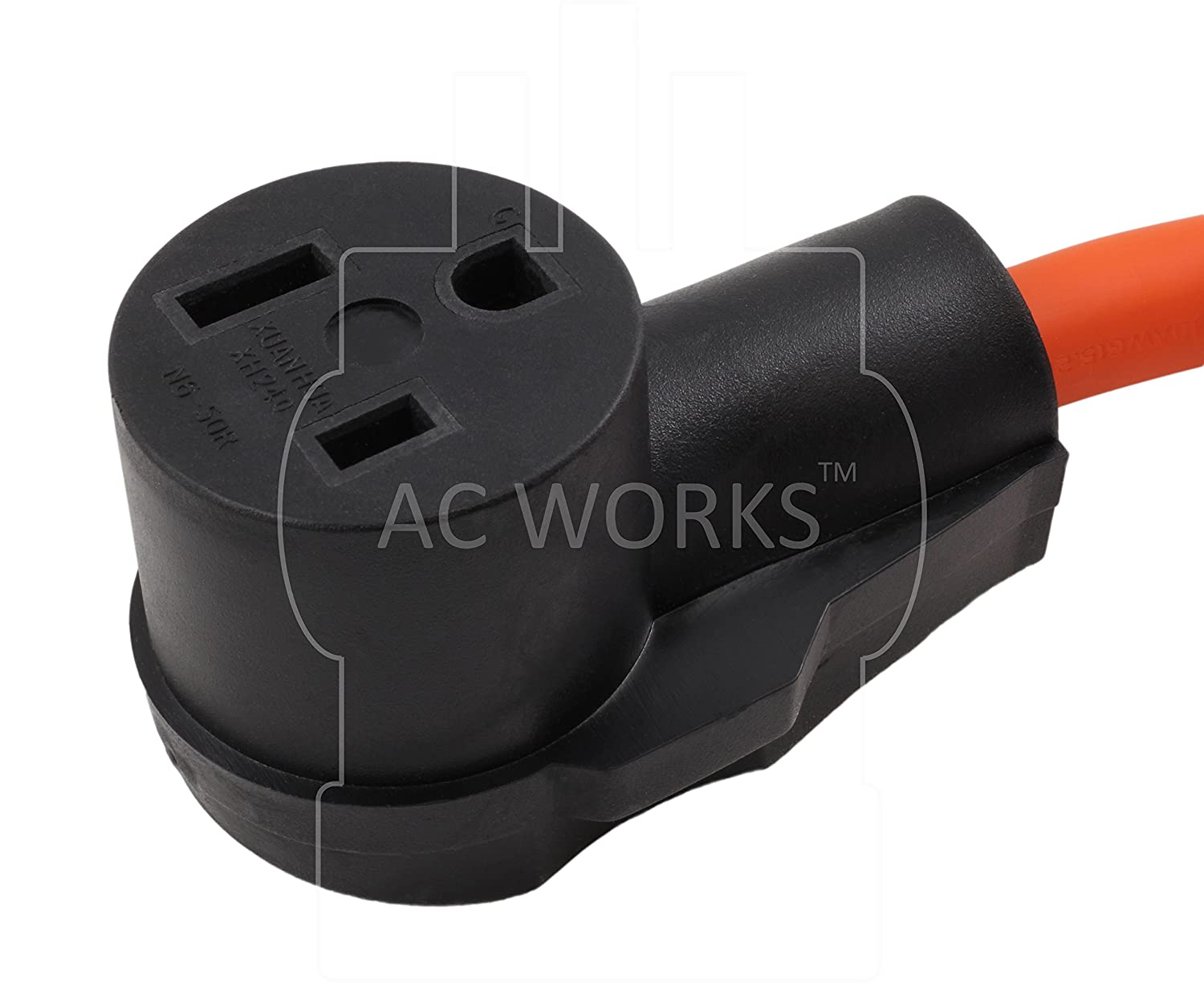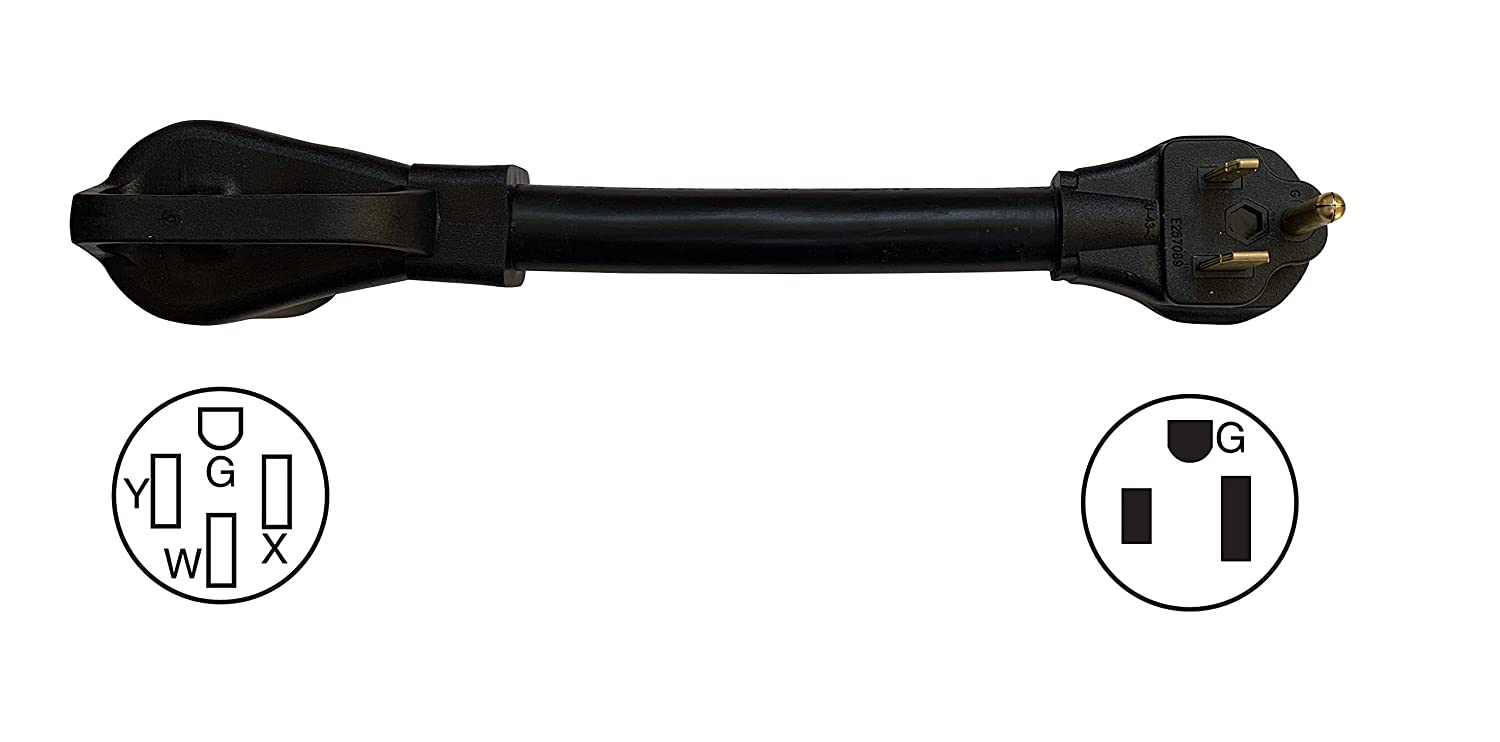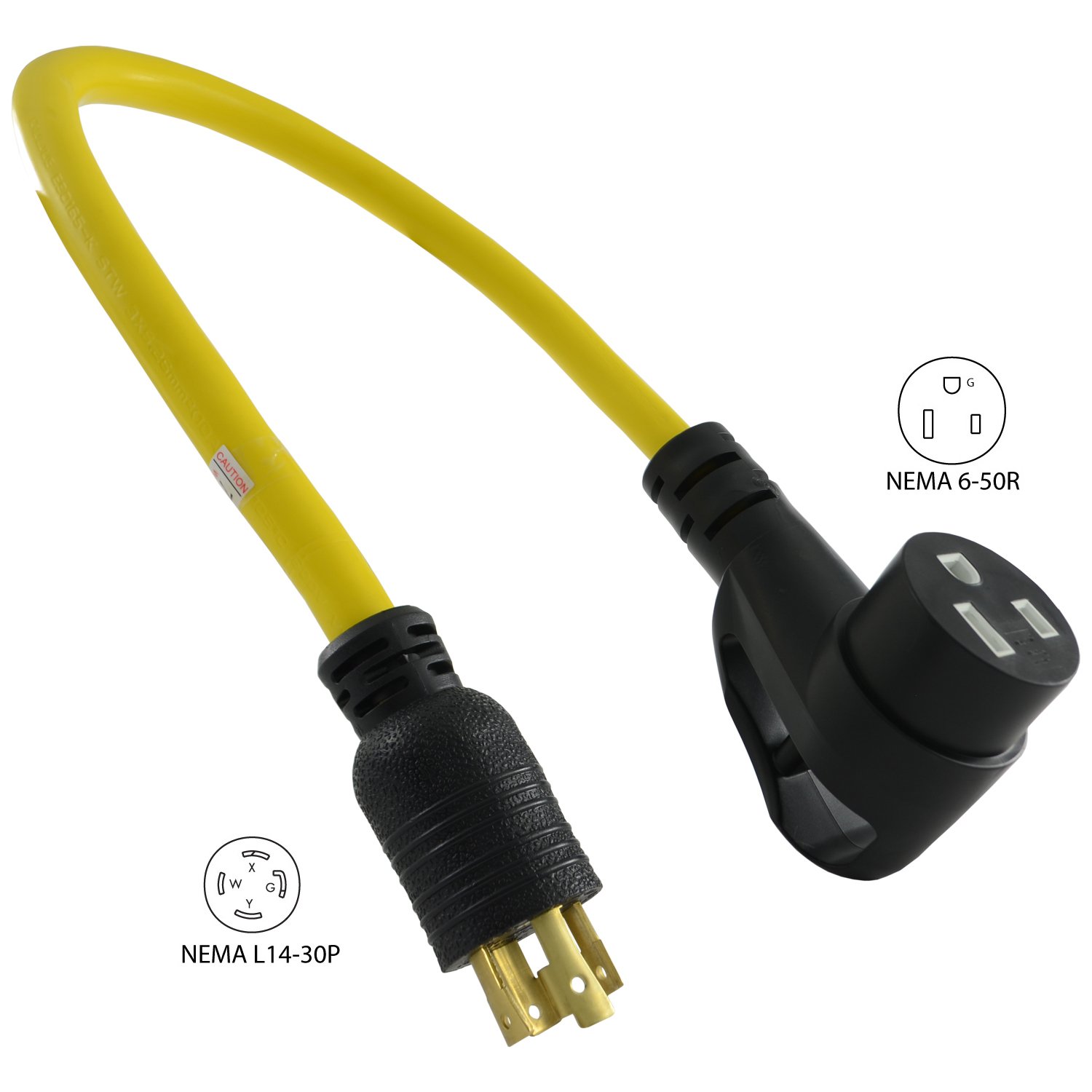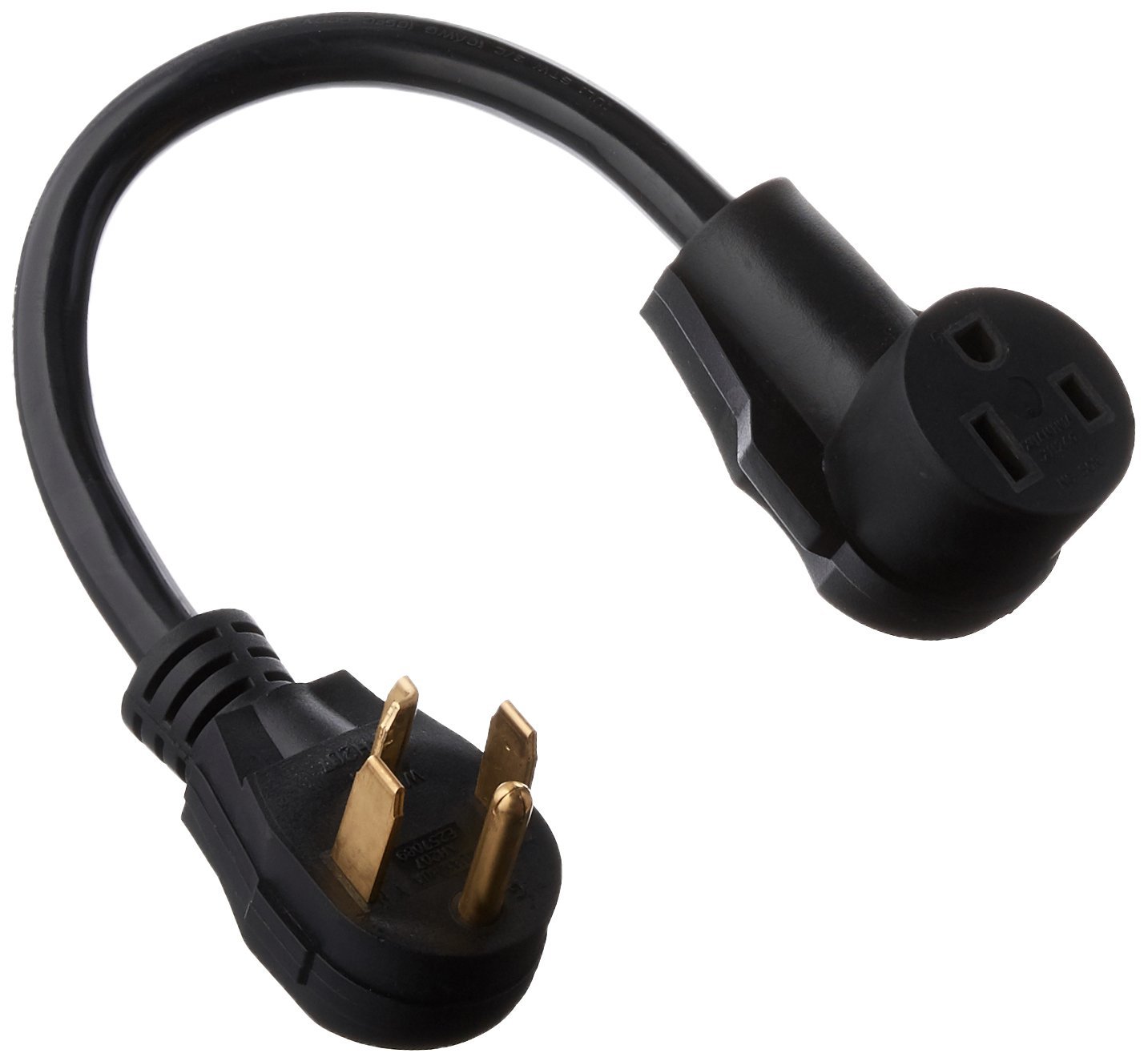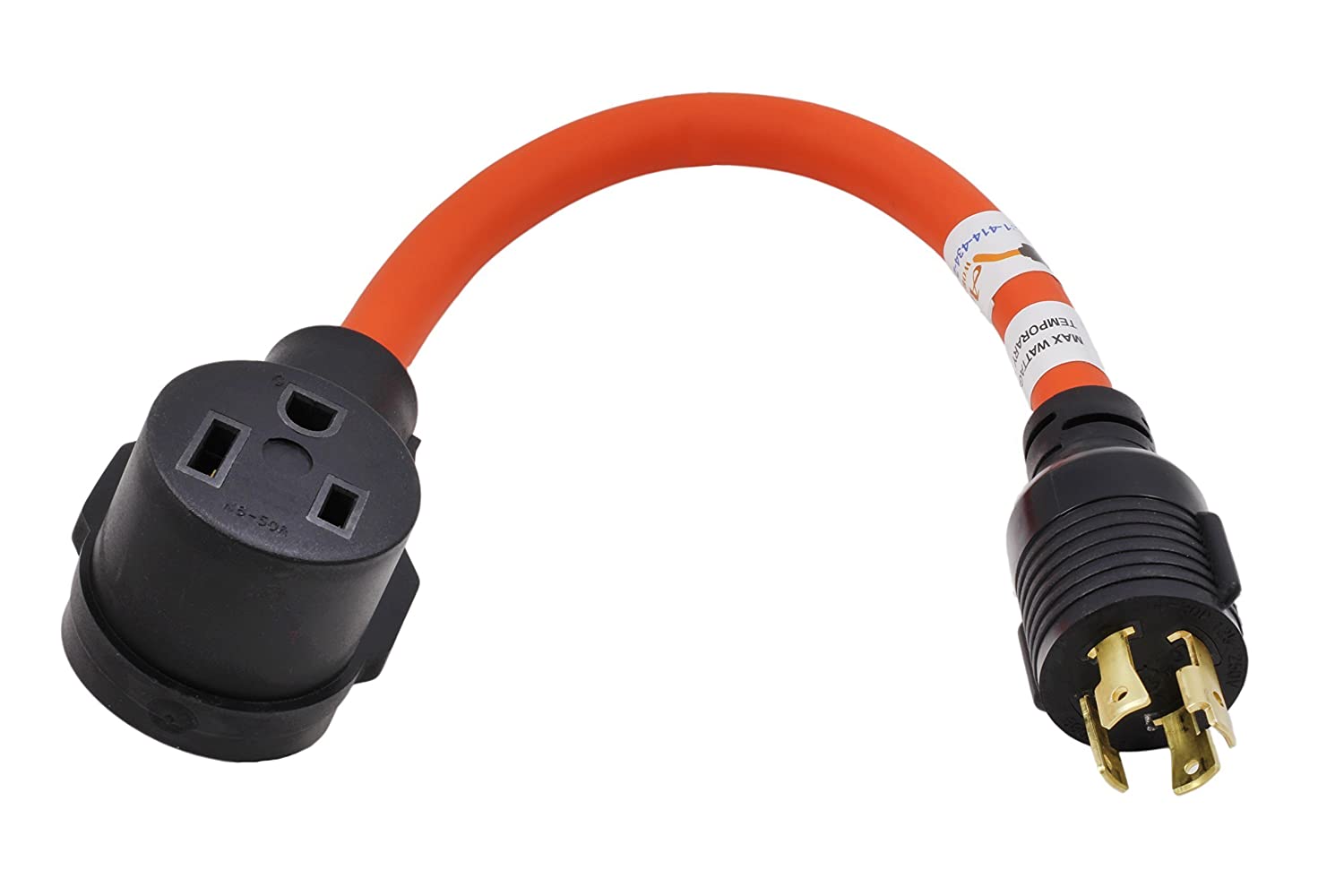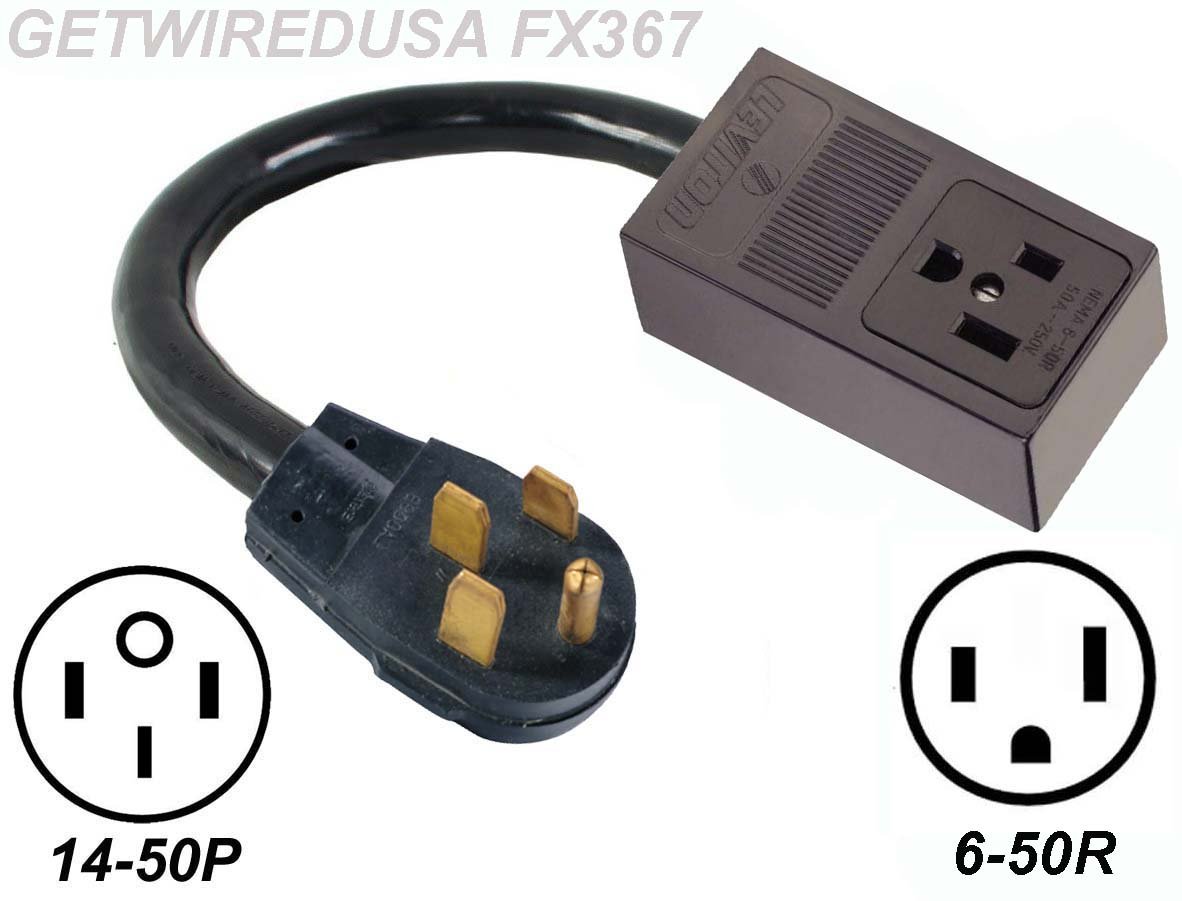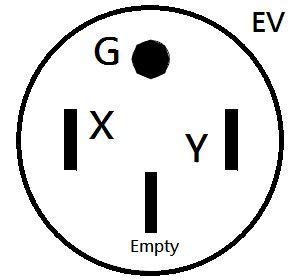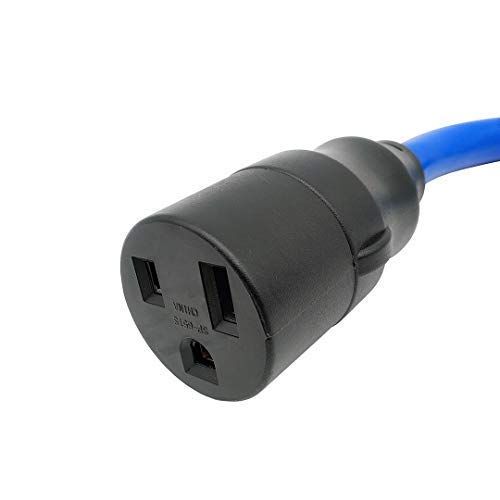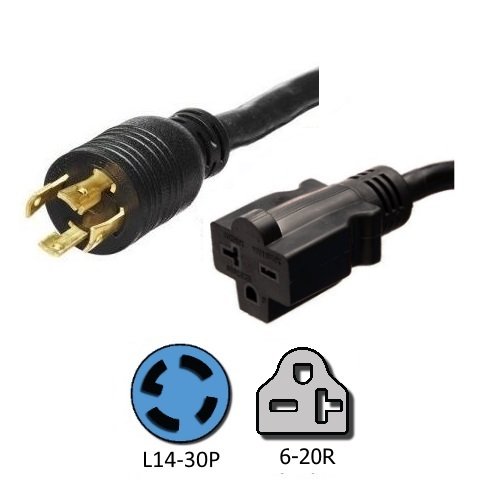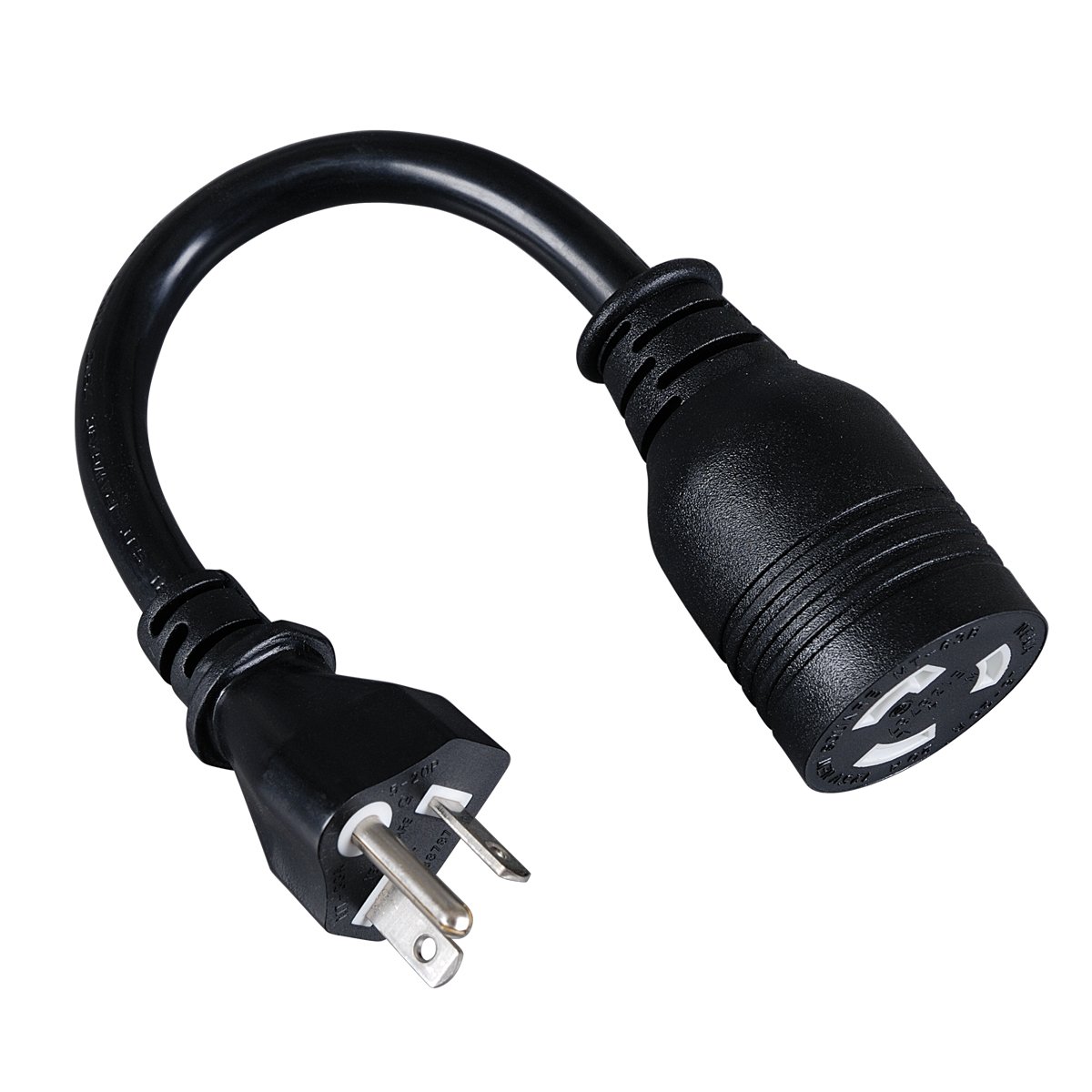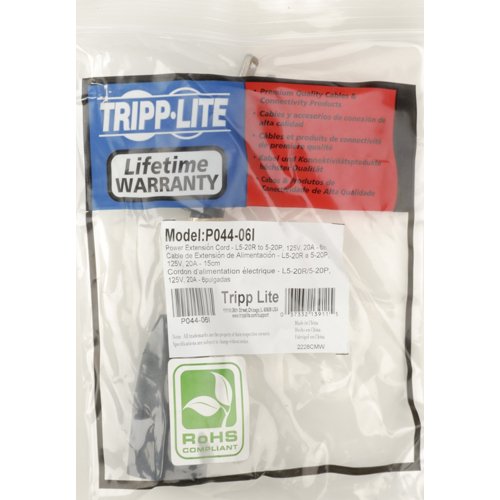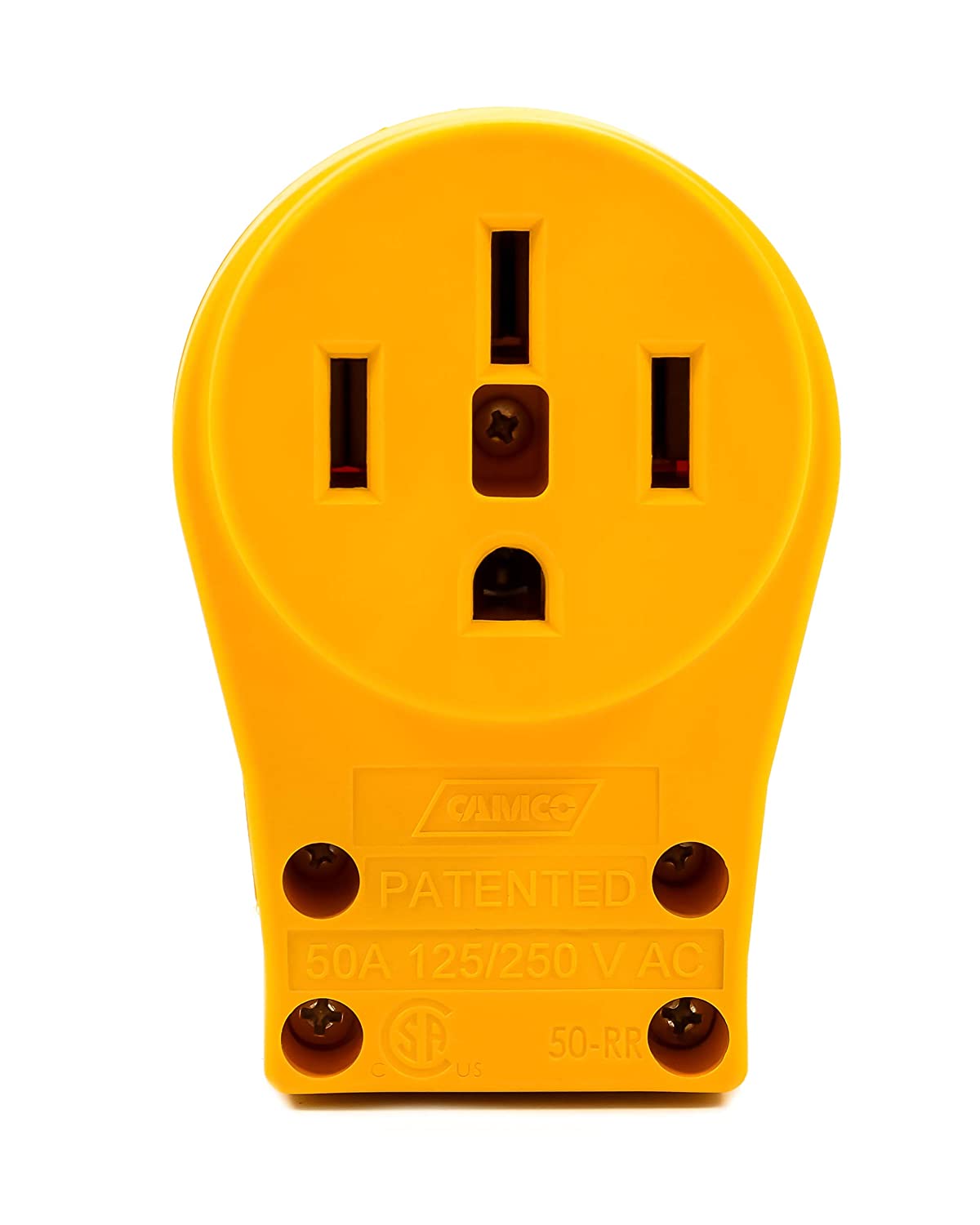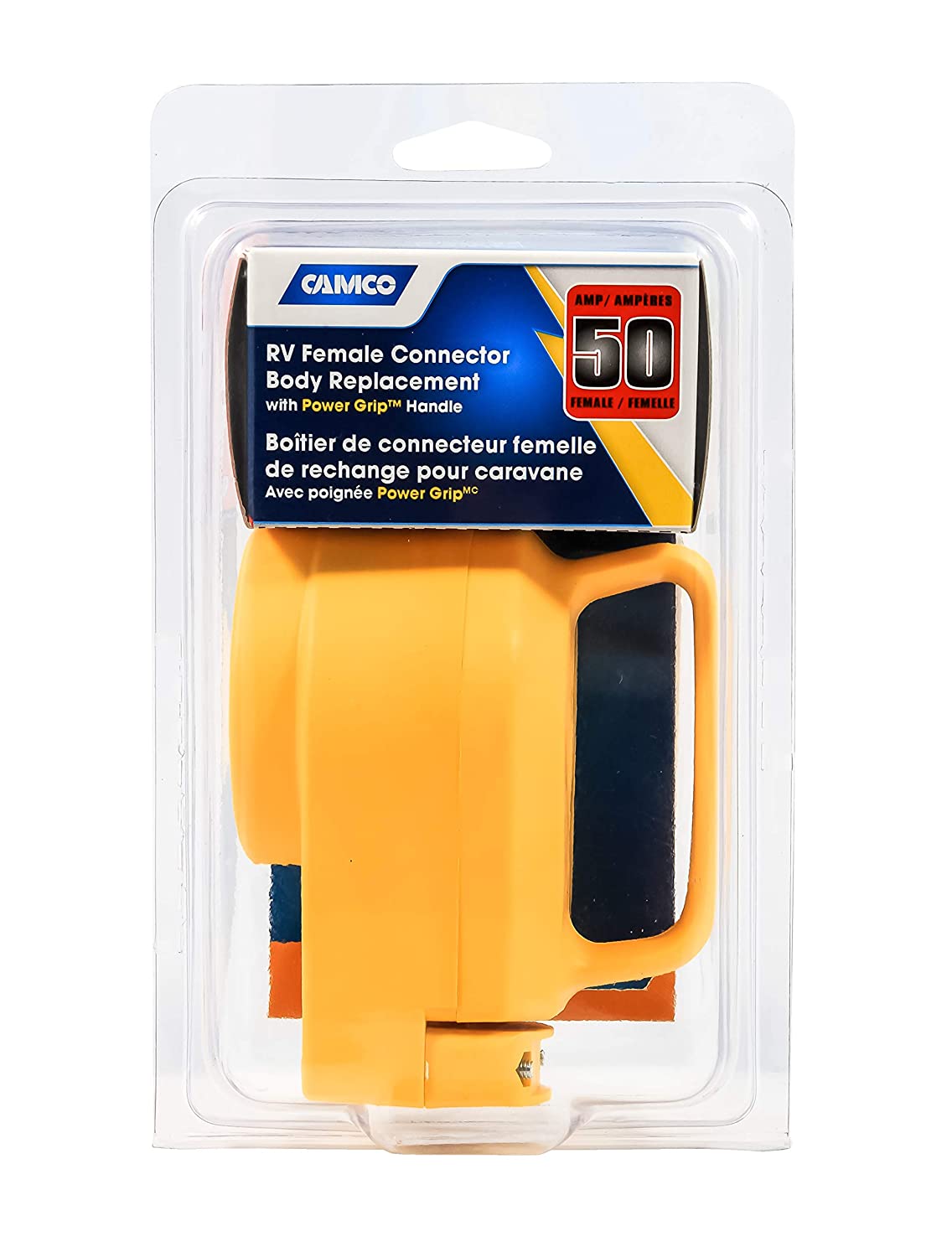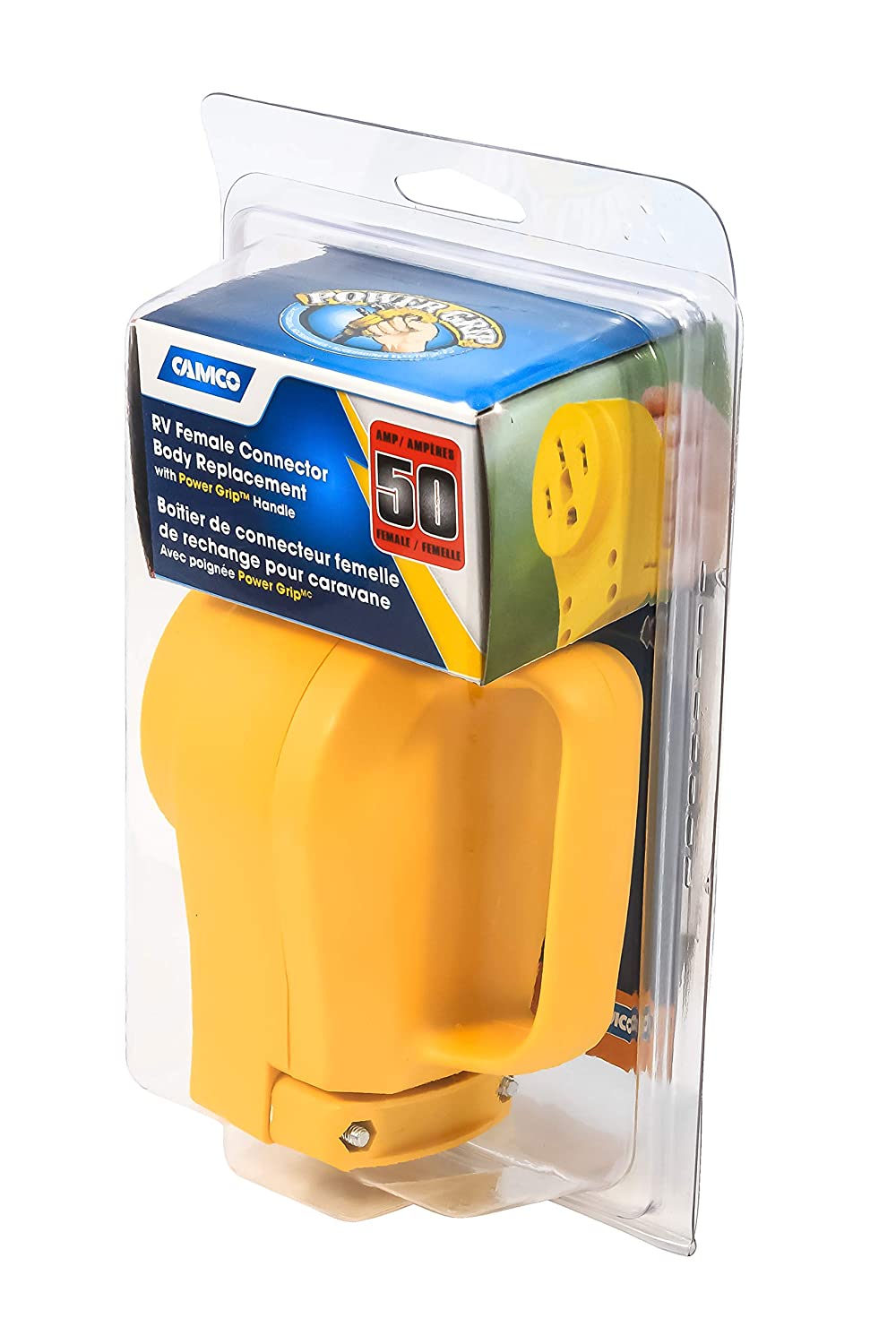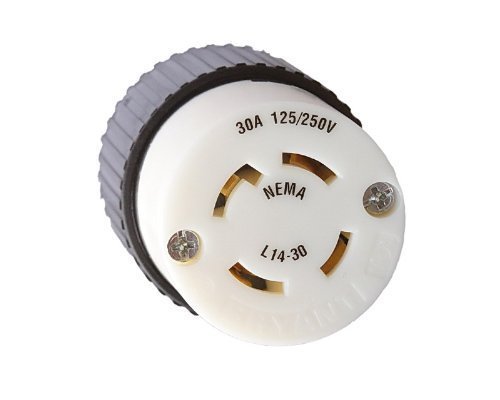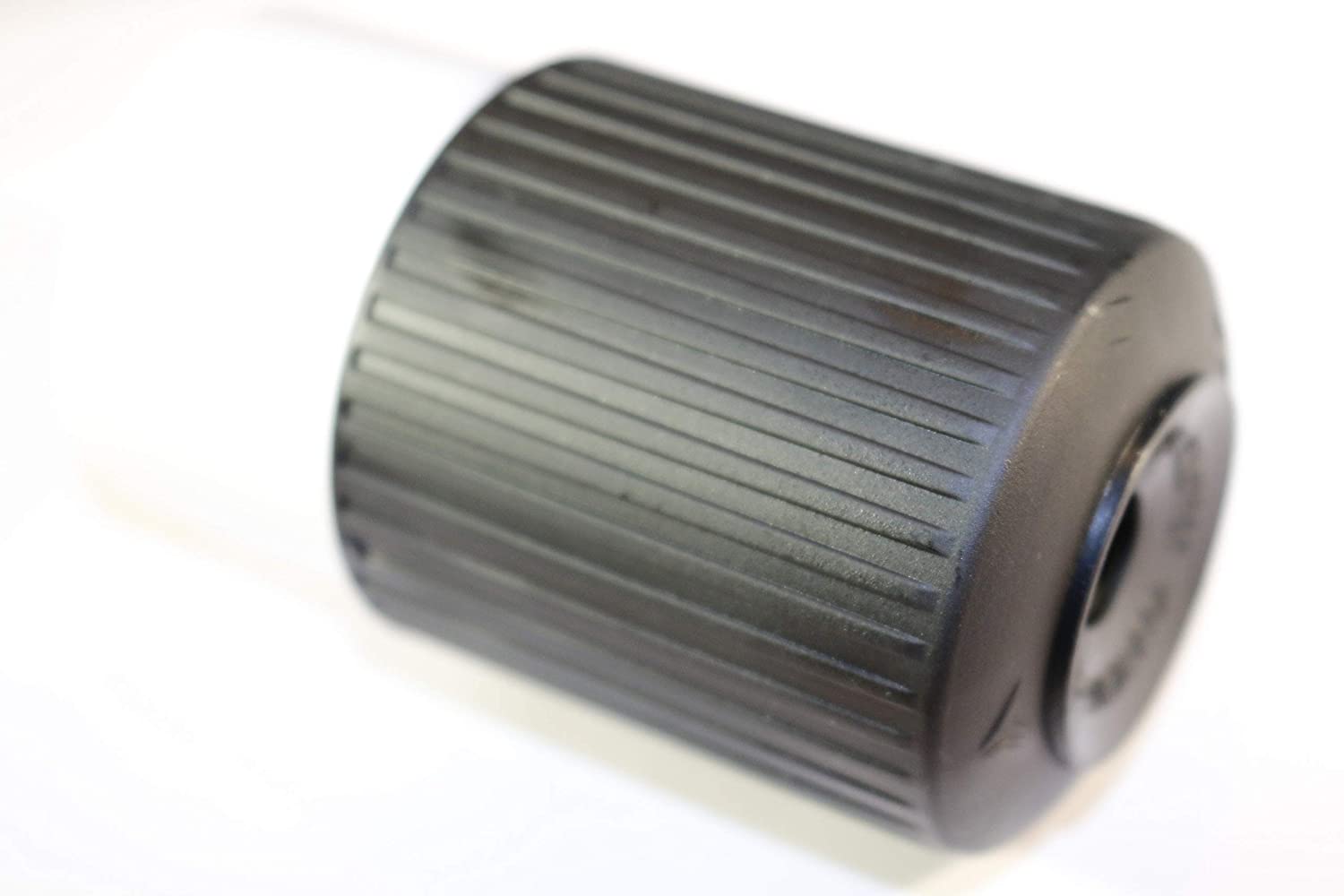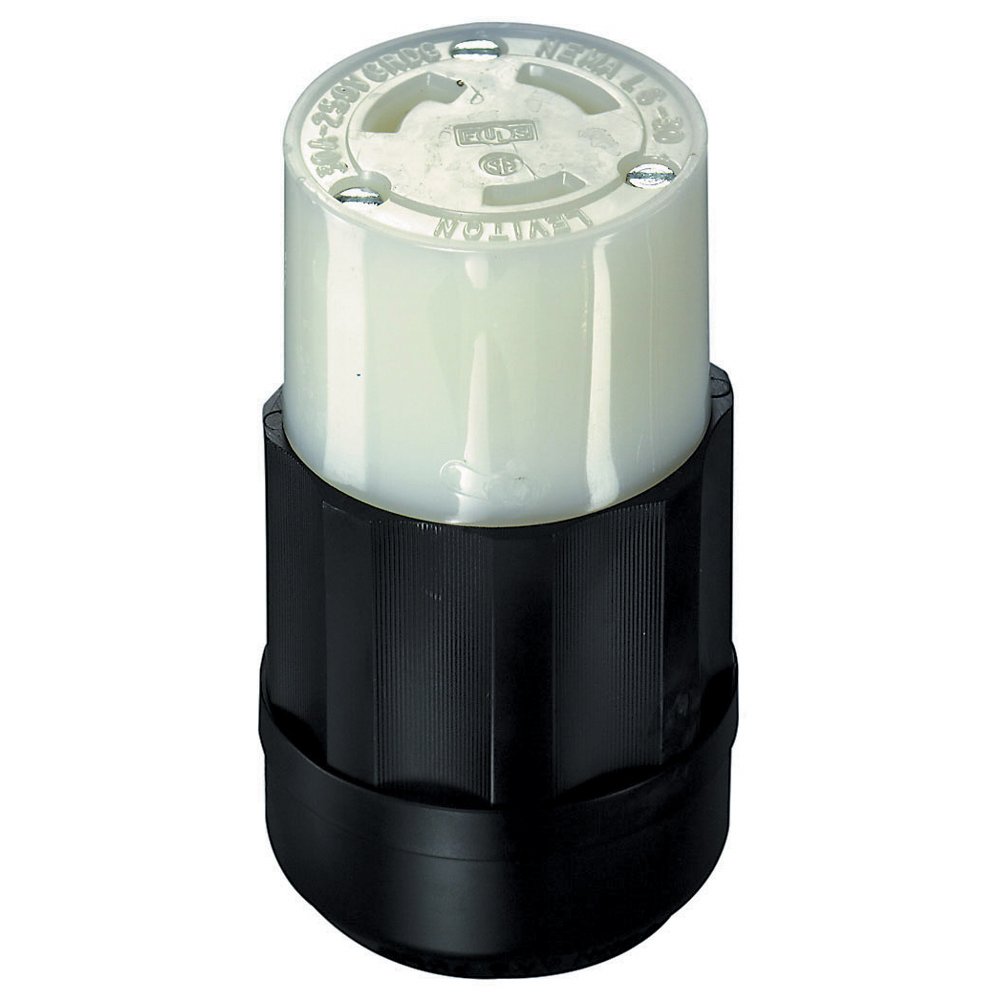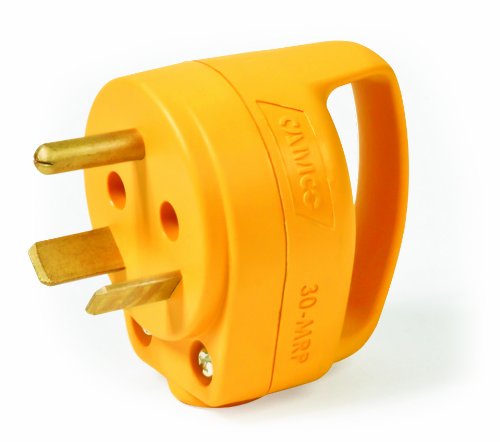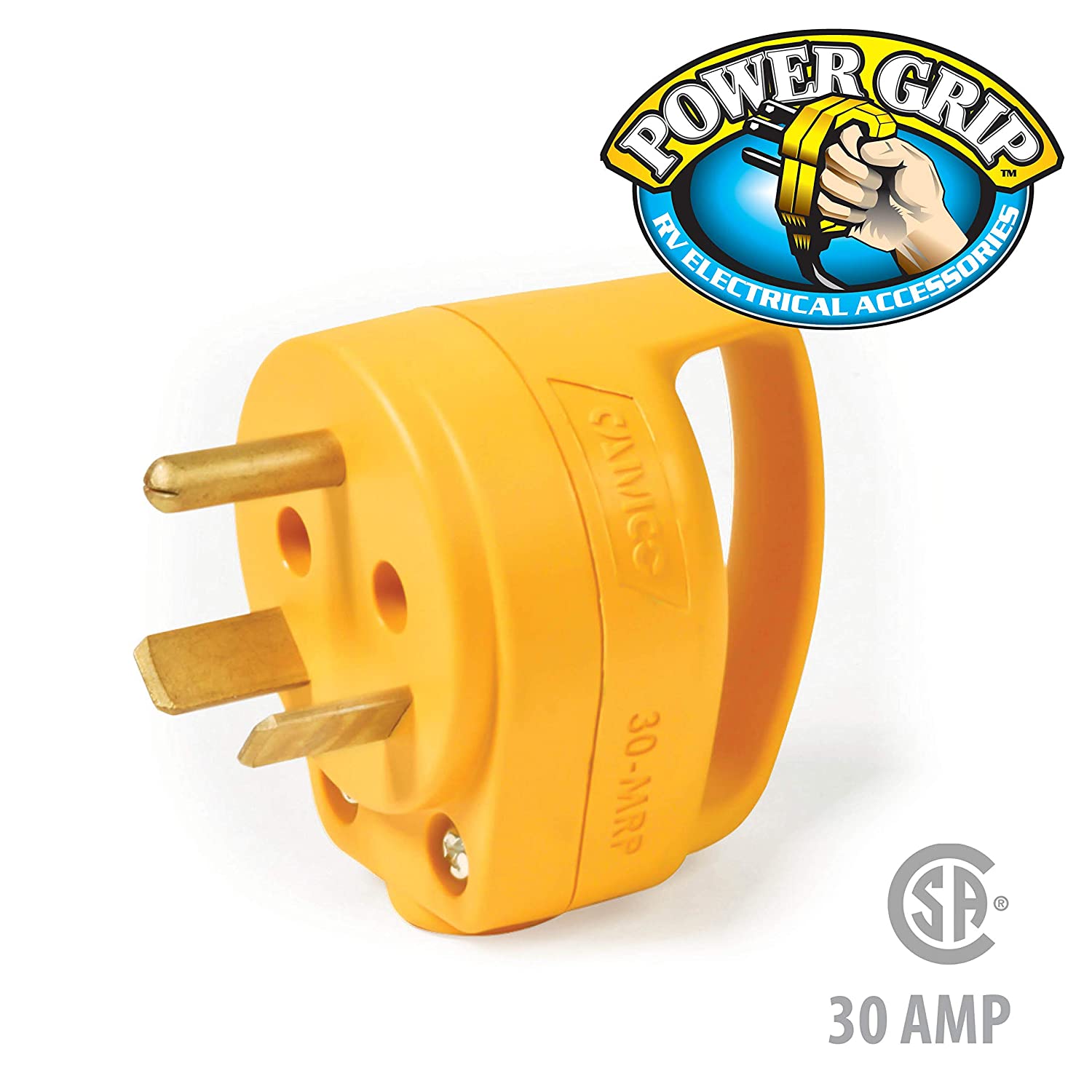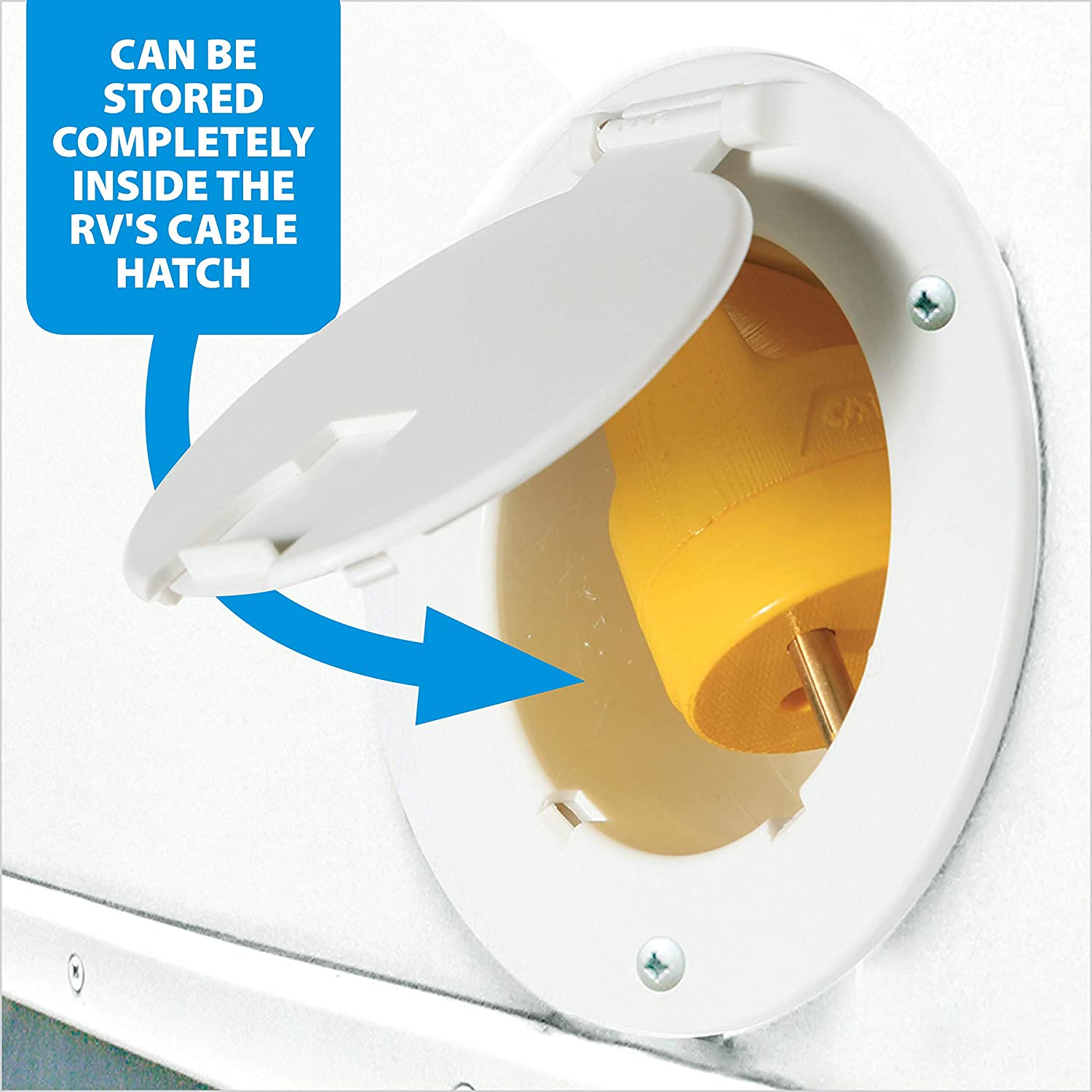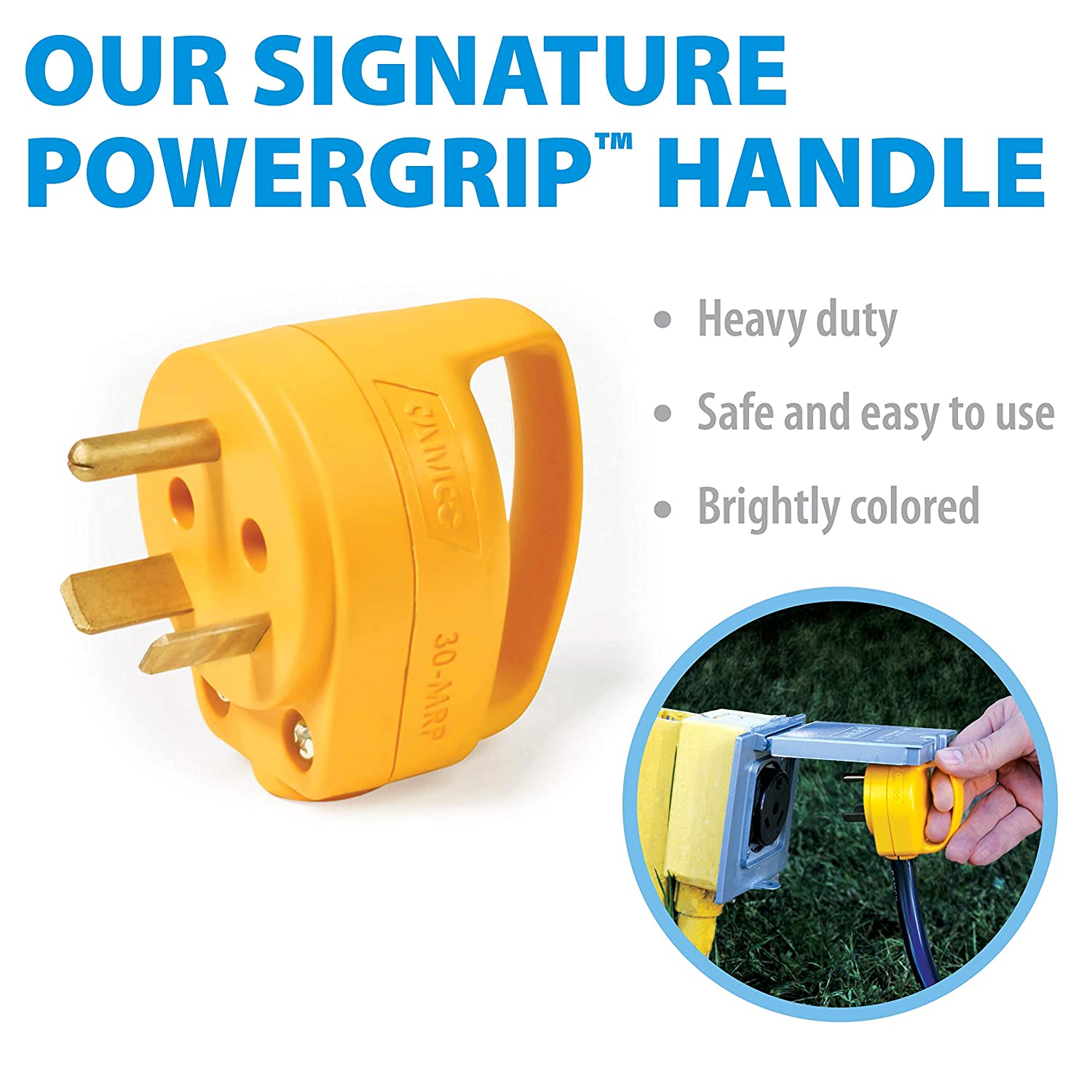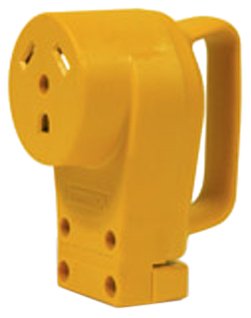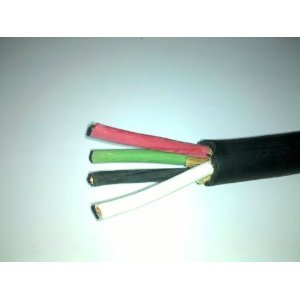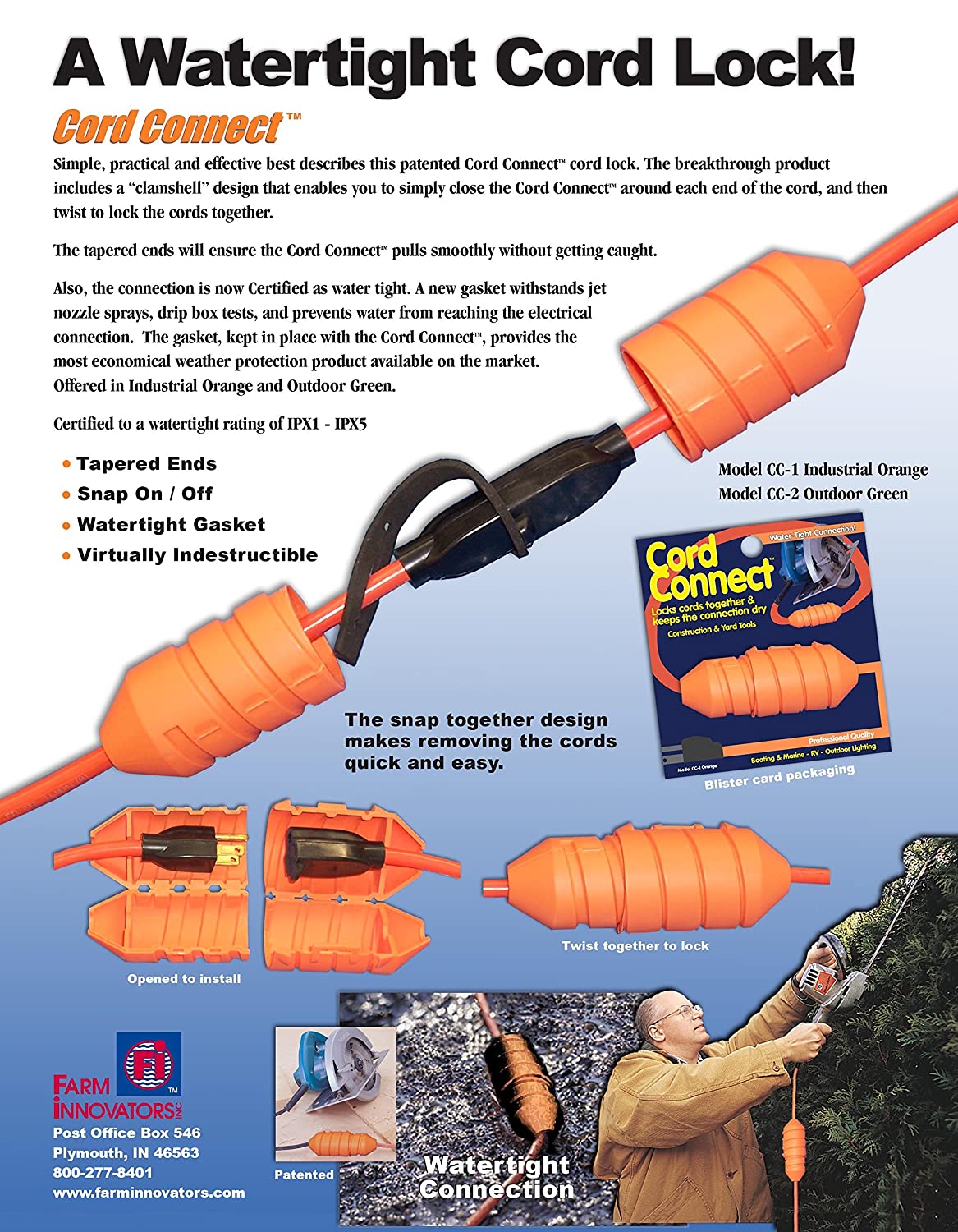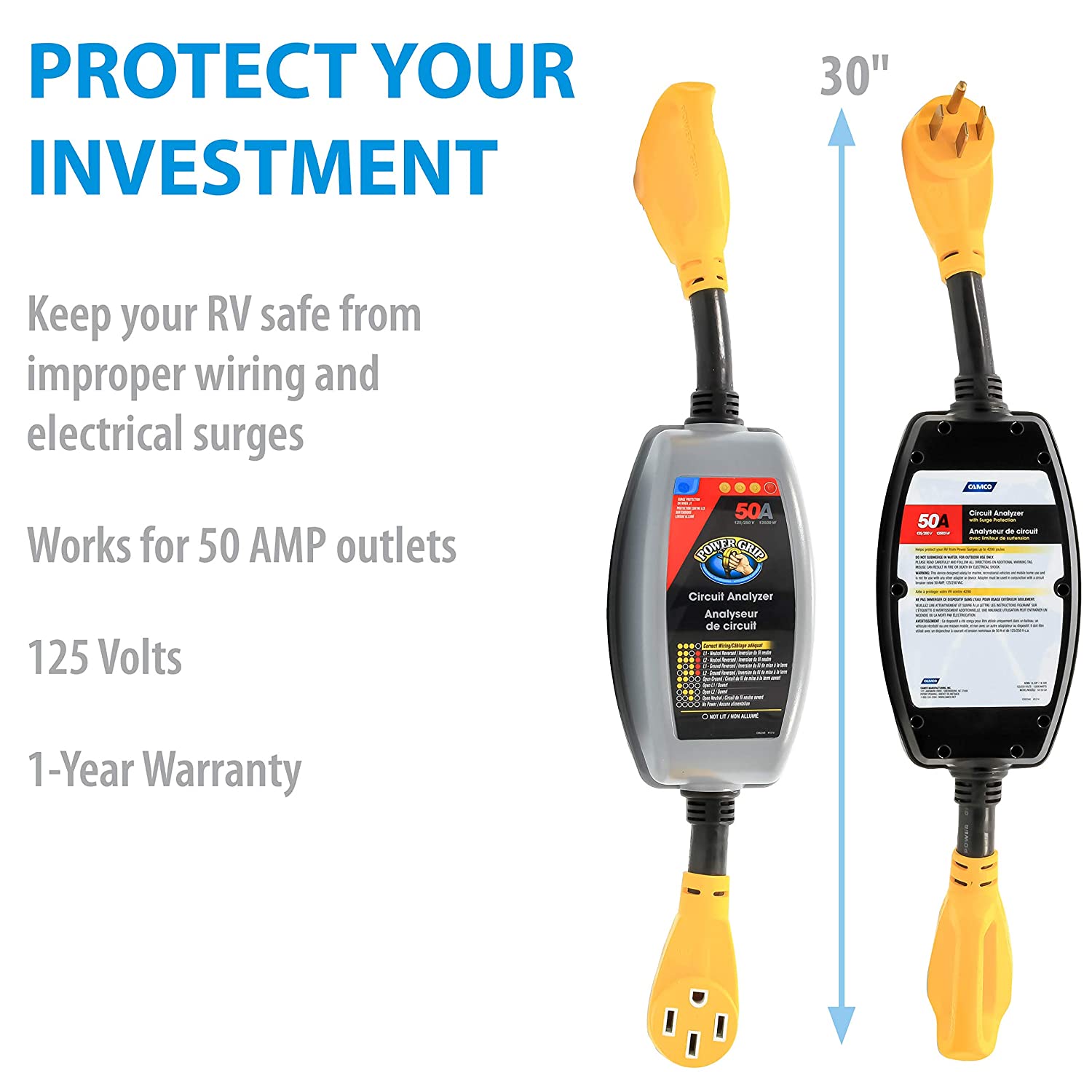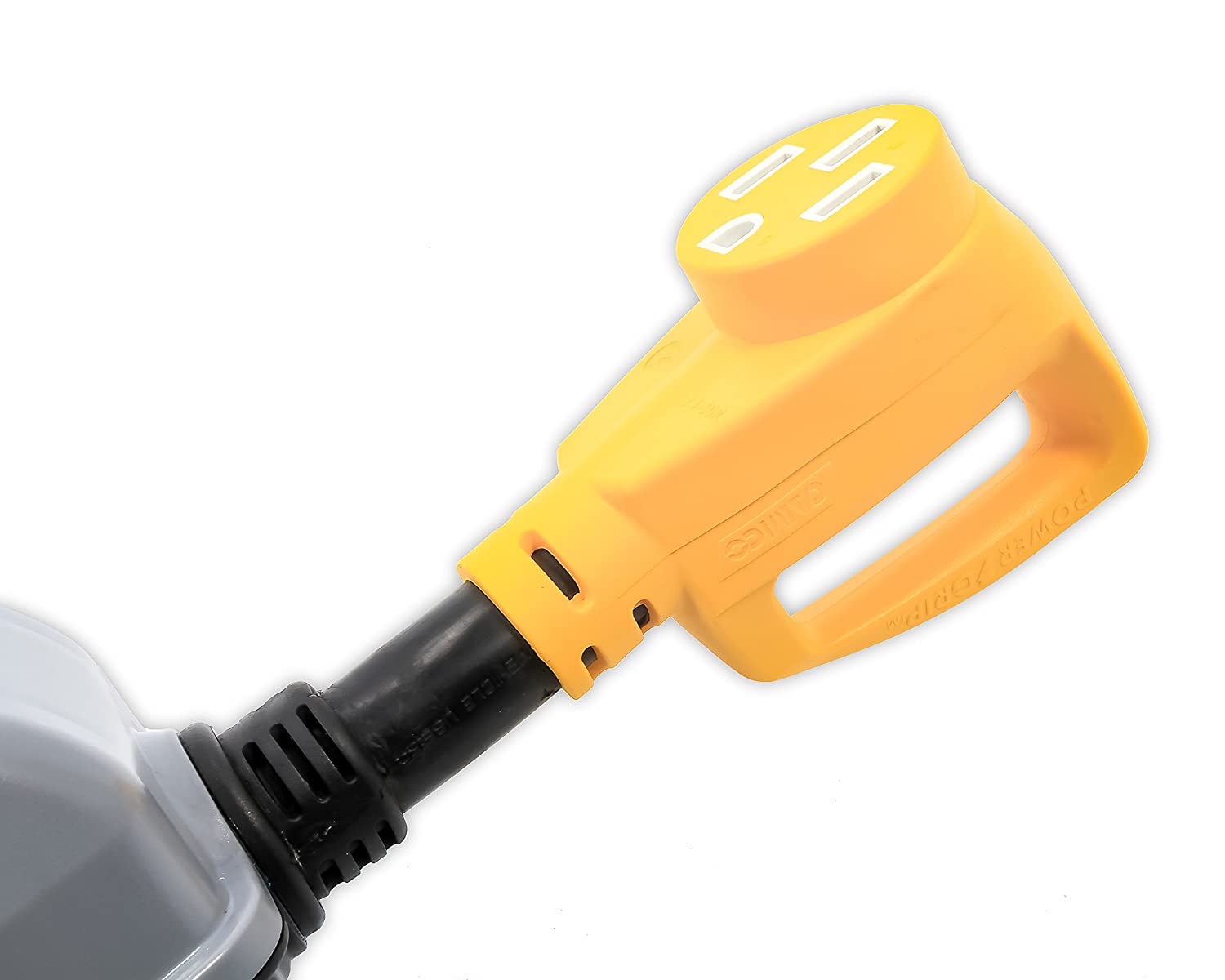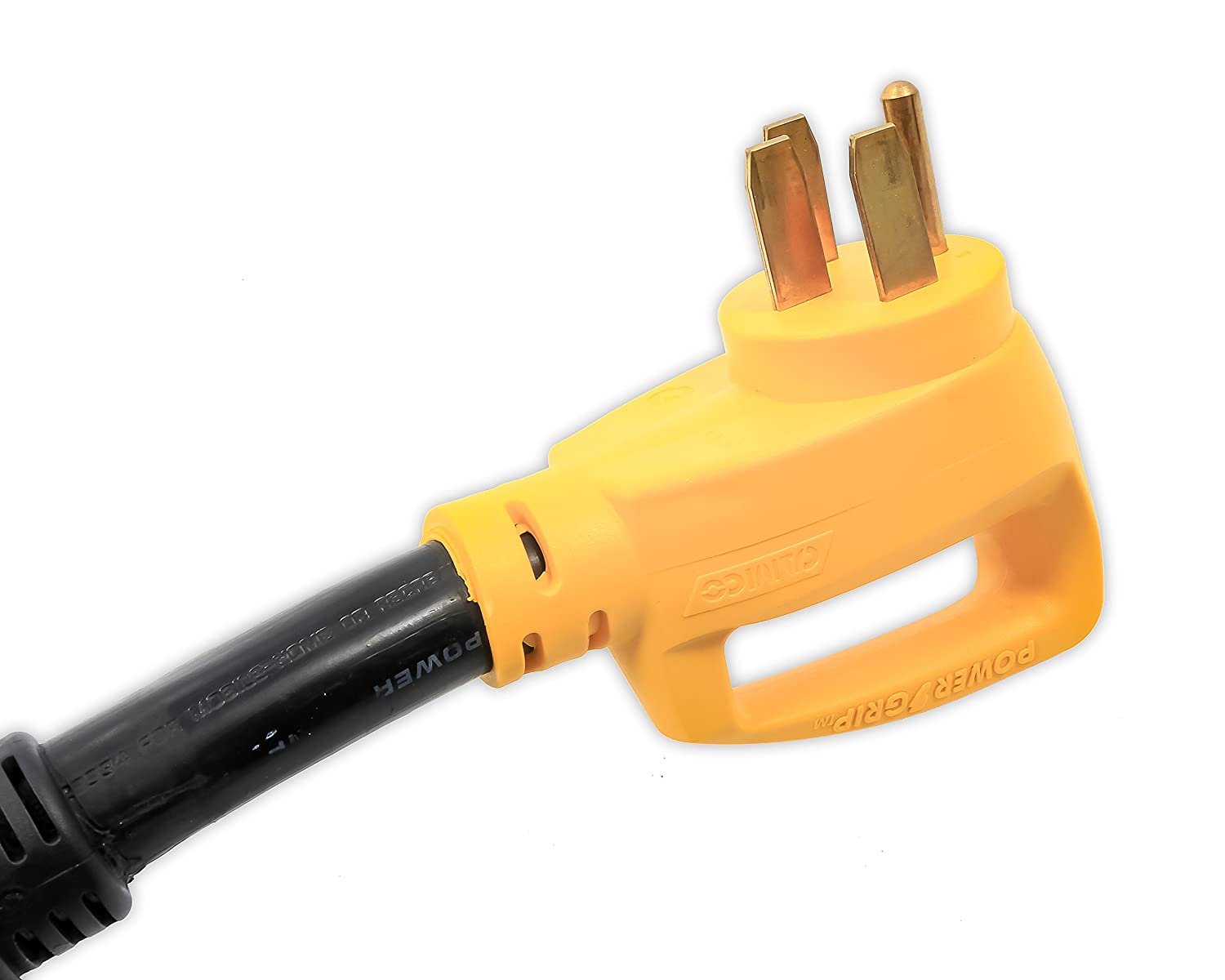Last Update: 2021-08-29T00:23:13.846Z
Sometimes we need to charge our electric car, but have difficulty reaching a power outlet or charging station. It might be a destination with no charging stations, or the charging station could be blocked. In the first case a portable charging station lets you use available power outlets, but you might require an adapter cord to use the outlet, and the outlet might be far from your parking space. In the second case, you might be able to park near the charging station, but far enough that the charging cord cannot reach.
In other words, we sometimes are in suboptimal situations. One solution is to use a combination of extension cords, power adapters and portable charging stations.
But, the car manufacturers universally warn against using extension cords when charging an electric car. While there is a legitimate safety concern, it is possible to safely use extension cords. That requires some knowledge of basic electronic concepts, and good quality equipment.

Electricity is everywhere, and could theoretically power electric cars anywhere we wish to go.
We cannot simply connect an extension cord directly to the car, because an electric car requires a charging station. This may seem inconvenient if you're stuck somewhere staring at a regular power outlet and unable to charge. The requirement to use charging stations introduces several levels of useful safety interlocks. In such a case a portable charging station can be the difference between paying for a tow truck, or getting to charge your car.
That's not the only scenarios to think about:
| Scenario | Solution |
|---|---|
| Access to the charging station might be blocked. Sometimes the charging station is blocked by something, that might be another car, but could even be a load of building materials dropped off for some construction work. | J1772 extension cords extend the reach of a charging station, and can work around a situation where charging station access is blocked. |
| All charging stations could be in use, or broken. | Charging station maps (like PlugShare) can direct us to a nearby location, if the location we're at is fully occupied. |
| The charging station could be incompatible with our car. The car manufacturers tried to have a single charging protocol, but the reality is that (In North America) there are three charging protocols in widespread use. | Charging adapters like a Tesla-to-J1772 or Type-1-to-Type-2 adapter allow us to use charging stations that are otherwise incompatible with our car. |
| Some entries on the PlugShare map are not for charging stations, but for power outlets that can be used by electric car drivers. Or your destination might have a power outlet but no charging station. | A portable charging station can be used with available power outlets. In some circumstances, you'll need to know how to recognize what power outlet is in front of you, its power limitation, and what power adapters to use. |
Since electricity is everywhere, it should be possible to be able to recharge the car anywhere we go, and therefore not worry about driving range. But the scenarios just described demonstrate why we must sometimes work around sub-optimal situations using appropriate adapters and extension cords.
To do this safely means developing knowledge of some simple rules for safely using extension cords and adapter cables. The key rule is to limit charging current to the weakest cable or connector in the charging circuit. This requires being able to recognize the various power outlets and their limits. For some details, see:: Informal electric car charging at any power outlet, versus a regular charging station
The primary tool is the J1772 extension cord. These are designed to handle the power load required to charge an electric car, meaning the J1772 extension cord is extremely unlikely to ever cause an electrical fire. Learning all the ins-and-outs of different power outlets and power adapters can get complex, and is for the more intrepid among us. If you must use a regular extension cord, make sure it is a beefy cord, built using high gauge wire, with beefy connectors, and make sure the power outlet is in good condition.
LANGUAGE NOTE: It seems that in some countries the phrase "extension lead" is used, and seems to mean the same thing as "extension cord".
Contents
- J1772 electric car extension cords
- Tesla-to-J1772 charging adapters
- Extension Cords for charging electric cars in North America
- Electric car charging cords for use in Europe or the United Kingdom
- Power adapters in North America
- Parts for building NEMA North America cords
- Accessories for electric vehicle charging
SAFETY: Wait, isn't it dangerous to use an extension cord to charge an electric vehicle?
Electric Car manufacturers strongly recommend against using an extension cord with a portable electric car charging station. That recommendation comes from an overabundance of caution, and the manufacturers are worried about accidentally misused extension cords causing electrical problems.
- Is it safe to use extension cords and adapters to charge an electric car? Yes, with care.
- Can you charge an electric car from a dryer outlet? Yes, with care.
- Are there any problems with charging an electric car using an extension cord? There can be, but all problems are solvable.
Safely using an extension cord for electric car charging requires a good quality extension cord with thick wires and beefy plugs, along with a good quality power outlet. For 120 volt extension cords, ensure it uses 10 gauge wires. For higher power charging, 240 volt 50 amp extension cords are readily available and safely support charging at 40 amps. The safest choice is a good quality J1772 extension cord.
The word "gauge" refers to the thickness of the current-carrying part of the wire, the metal in other words. The thickness of "10 gauge" is more than "16 gauge". Thicker wires can carry more Amps of current.
Every electrical component is rated for the maximum current it can handle. For example, the NEMA 5-15 plug is rated for 15 amps peak. This is the Peak Rating of the component, and is about momentary current flows. For electric car charging we're interested in the Continuous Load rating. Continuous loads are when electricity runs through a circuit for more than an hour. Clearly, EV charging is a continuous load since charging sessions can easily last 4 hours or more.
Continuous loads must be limited to 80% of the weakest element in the circuit. For example, using a continuous load with the NEMA 5-15 plug must be kept below 12 amps.
These limits are important for avoiding electrical fires. Running top much electricity through a cord can turn it into a heater, and cause things to catch fire. A properly designed system has circuit breakers to prevent going over the ratings.
WARNING: Vehicle manufacturers universally warn against using an extension cord to extend the reach of the supplied line-cord charger. Please, exercise caution in reading what is written here. We are doing our best to provide good education, but at the end of the day you are responsible for your actions.
The general principles for safe extension cord use are:
- Keep power levels to 80% of the peak rating of the weakest component in the circuit For example, if the only power outlet you can find is a NEMA 5-15, rated for 15 amps, charging current must be below 12 amps.
- Check carefully the power socket rating
- Check carefully the wiring to the power socket
- Use heavy duty cables with high enough gauge to handle the current
- Don't use cables that are frayed or broken
- Don't use that dodgy old power outlet in the garage, but get it replaced
- If you can, adjust the on-board vehicle charger to not draw more current than you know is safe
- Your power is limited by the weakest link in the chain - don't draw more through a circuit than the rating of the weakest component
- Check whether cords or connections get hot while in use
- Use the shortest length of cord possible
A skinny cord, frayed wiring, bad power socket, acts like a "resistor" or "heating element". Sending too much current through a bad connection acts like a heater. Say your car is pulling 6 kilowatts, a 10% loss from a bad connection means 600 watts being dissipated as heat. That's about the same as a typical hair dryer.
The heat generated by a bad power connection is a common cause of electrical fires.
Ampacity is the measure of the maximum safe current (amps) we can use in a wire of a given thickness. Generally, the thicker the wire the more current it can carry. By contrast, a wire that's too thin for the current it's asked to carry will heat up and possibly ignite.
See: Electric car charging within electrical code and power outlet limits
Smart electricians and electrical engineers have spent decades cooperatively developing the electrical code. Every requirement in the electrical code serves a purpose to limit the risk of electrical problems, especially electrical fires. Their recommendations were won through hard work and by studying the causes of electrical fires.
The information on this page is offered for educational purposes. You are responsible for your actions. Applied incorrectly this can cause electrocution or fire. Take care, be smart and educated, and you'll be okay.
We buy and use electric cars to benefit the environment. An accidentally caused electric fire damages that goal. Your life is best served by appearing in the newspaper as an electric vehicle pioneer, rather than as someone whose electric car caused their house to burn down.
Done badly, it's possible to cause damage. The warning against extension cords isn't a whimsy, the manufacturers are rightfully concerned about safety. There have been multiple fires from electric cars being charged through substandard wiring. Careful use of good quality extension cords and power outlets is the way to avoid an electrical fire.
Why does this page claim it's safe to use an extension cord when the manufacturers say NO?
The manufacturers are exercising caution, and are afraid of liability. An electric car charging-related electrical fire can set back EV adoption, and hurt the reputation of the manufacturer associated with the fire. An over-abundance of caution is a good thing when there is risk of an electrical fire, and we do not fault the manufacturers for being cautious.
At the same time, with knowledge one can do things manufacturers warn against doing. It is safest to use the J1772 extension cords discussed later.
The longer the charging cable, the steeper is the voltage drop. Voltage Drop occurs whenever electricity flows through resistance in an electrical circuit. In this case, the longer the charging cable the greater the resistance. It literally means that the voltage you'd read at one end of the charging cable is lower than the voltage at the other end.
The lower voltage causes issues with electric car charging equipment, that can escalate to cause other problems.
There are two solutions to voltage drop in this case. The first is, as recommended repeatedly on this page, to use cords with thicker wires, and beefy plugs. The second is to keep the cables as short as possible.
The use of thin wires, wimpy plugs, or long cables, increases resistance. As just described that increases the voltage drop, contributing to problems in the charging equipment.
Which End to Extend - J1772 extension cord, versus regular extension cords
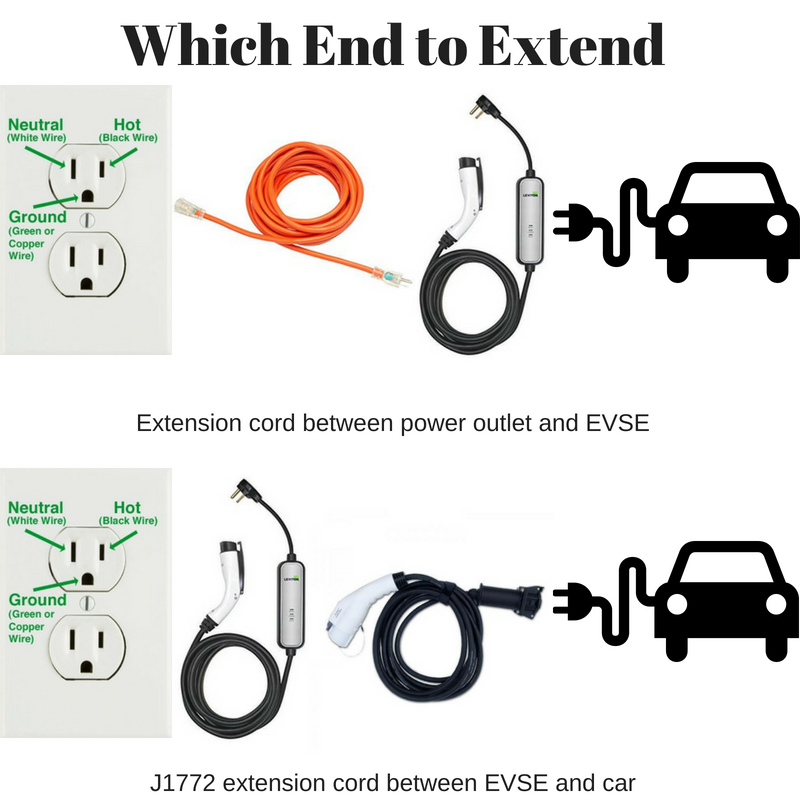
To most of us the natural way to use an "extension cord" is to plug it into a power outlet, then one or more gizmo's plugged into the cord. We do this all the time with Christmas lights, clothes irons, radios, computers, televisions, etc. But for electric car charging, as discussed earlier, we must check if the cords are heating up, and we must analyze if there are weak links anywhere in the charging connection.
There are two choices of how to use an extension cord. The picture above demonstrates these choices:
- We can plug the electric car charging station directly into a wall outlet. We then use a J1772 extension cord to reach the car.
- We can plug a regular extension cord into the wall outlet. We then plug the electric car charging station into the extension cord.
Of the two, the safest is the J1772 extension cord. A good quality J1772 extension cord is built to handle the charging current without problem, where the regular extension cord might be suboptimal.
TL;DR What is the right cord to charge an electric car?
That was a lot of information, so lets boil it down a little.
From a pure technical standpoint a good quality J1772 extension cord is the best choice. You know it will handle the current and won't be the cause of an electrical fire.
But your budget may not be enough for the cost, and therefore a regular extension cord may be preferable. If so, choose based on the power outlet(s) you'll be using and the charging rate you'll need. The NEMA 14-50 or 6-50 cords are the safest if appropriate for the conditions you'll be facing. If, like in the image below taken at Lucious Garage, you frequently use a lower power outlet like a NEMA L6-20, an extension cord matching that outlet can be very useful.
Using an extension cord to charge a Tesla or other electric car
After having gone through all the safety warnings in the previous section, let's look at practical usage.
The first scenario -- needing to extend the reach of a charging station -- is the simplest. You whip out the J1772 extension cord you keep in the trunk. At one end is a J1772 socket, which you connect to the charging station cord. At the other end is a J1772 plug, which you connect to your car.
You could be doing this at a public charging station or at home. For example, the public charging station could be blocked, but the charging cord is available, and there's a nearby open parking spot. The J1772 extension cord would let you charge, when you'd otherwise be denied.
The second scenario isn't as simple -- needing to use a regular power outlet. This could be at home, or at a destination that has power outlets but no charging station. First you examine the power outlet, identify what it is, and from that its voltage and maximum current.
The considerations are as follows:
- Remember that for EV charging to limit the charging current to 80% of the rating of the power outlet.
- Maybe, your charging station has a plug which is compatible with the power outlet, in which case you can simply plug everything in and start charging.
- If the power outlet is not compatible with the charging station plug, you will need an adapter. There are lists of suitable pre-made adapters below. If you cannot find a compatible adapter pre-built, it is easy to build an adapter. Remember to limit charging rate to 80% of the rating of the power outlet.
- Maybe, the power outlet is far enough from your car to require an extension cord, in which case it's best to use a J1772 extension cord. It's possible to instead use a regular extension cord, but it's necessary to use one with beefy wiring. There are lists of regular cords and J1772 cords below.
- The "line cord charging station" that's sold with every electric car is a useful tool. In most cases this charger is low power - for example in the USA they typically support 120 volt charging. Make sure if using it with an extension cord to pay attention to wire thickness and maximum charging rate.
- Some electric cars are sold with higher power charging stations. For example, Tesla provides what's called the Universal Mobile Connector. This supports a wide range of power outlets and charging rates. Tesla sells a kit of adapters, from NEMA 5-20 (120 volt) up to NEMA 14-50 (240 volt 40 amps), and everything in-between. The UMC automatically adjusts the charging rate to match the power adapter.
The commonality in these considerations is to own a portable charging station for mobile use. There are several small, light, and portable charging stations for electric cars to choose from. The portable station can be carried in the car at all times, increasing the flexibility of when and where you can recharge your car.
Another task is learning how to limit the charging rate. Some electric cars have a setting for maximum charging rate. If not, you'll need a charging station that can limit the charging rate.
It's useful to learn to recognize different power outlets and their ratings. See Electric car charging within electrical code and power outlet limits
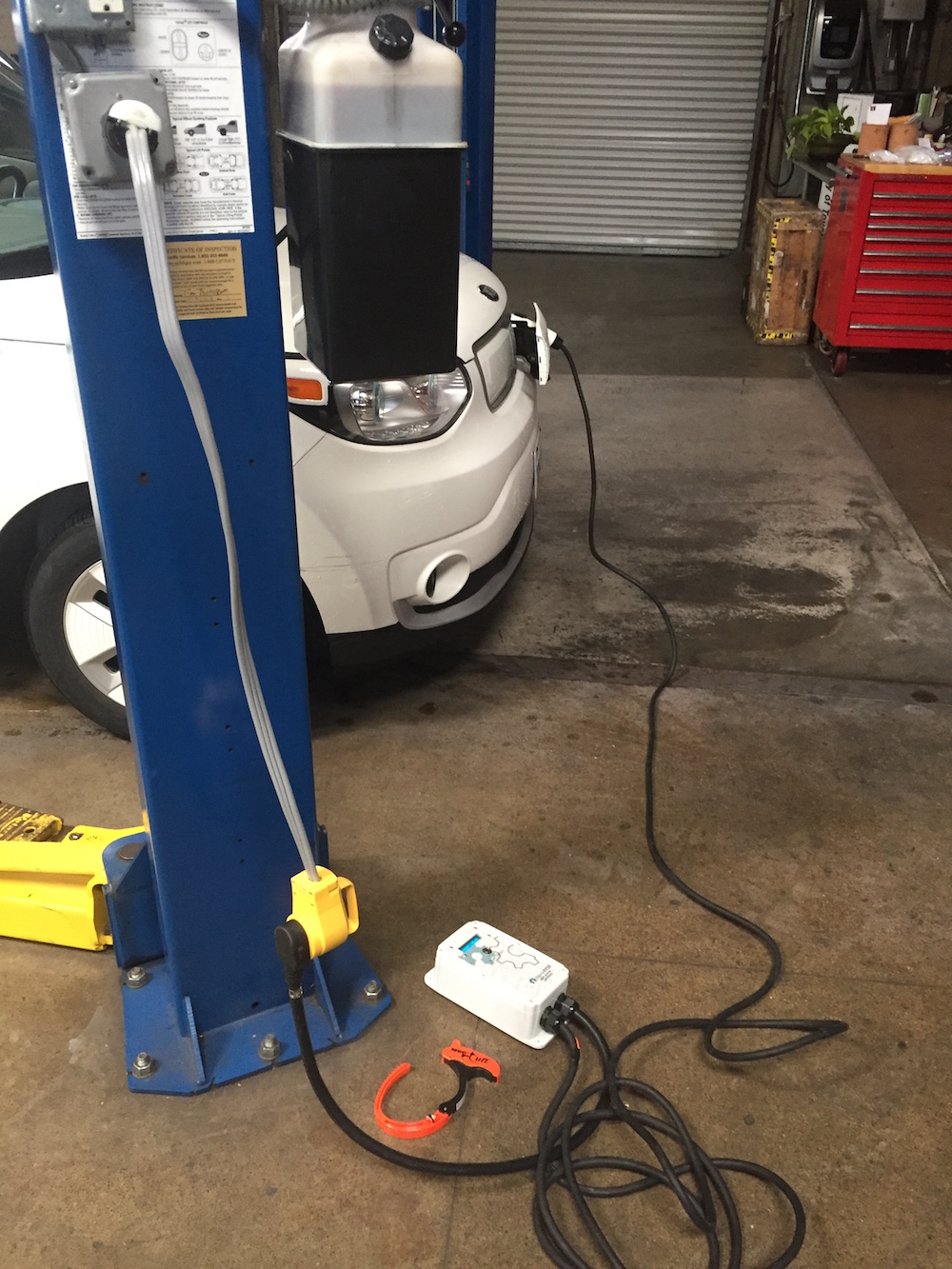 This is an example of the plan in use. The location is Lucious Garage, a car repair shop located in San Francisco which specializes in hybrid cars. This garage kindly makes its space available for Golden Gate Electric Vehicle Association (GGEVA) meetings every month, and allows GGEVA members to charge their cars for free during meetings. In this case a NEMA L6-20 to NEMA 14-50 adapter is being used to access a power outlet installed on the car lift. The charging station is plugged into this adapter, and then the charging station is instructed to limit to a 16 amp charge rate. The car, a Kia Soul EV, does not allow the user to set the charging rate manually.
This is an example of the plan in use. The location is Lucious Garage, a car repair shop located in San Francisco which specializes in hybrid cars. This garage kindly makes its space available for Golden Gate Electric Vehicle Association (GGEVA) meetings every month, and allows GGEVA members to charge their cars for free during meetings. In this case a NEMA L6-20 to NEMA 14-50 adapter is being used to access a power outlet installed on the car lift. The charging station is plugged into this adapter, and then the charging station is instructed to limit to a 16 amp charge rate. The car, a Kia Soul EV, does not allow the user to set the charging rate manually.
J1772 electric car extension cords can be the best choice
We've said repeatedly the best choice is to use a J1772 extension cord. The rationale is that they're usually built with heavy-duty wire and components meant to carry the current required to charge an electric car.
Every J1772 extension cord shown here, except for one, is rated for at least 40 amps. This covers the vast majority of AC Level 2 charging available at public charging stations. For most electric cars, the AC charging rate is 40 amps or less.
Ratings: As with every other component in the charging system, the J1772 extension cord must be rated to handle the current required for the charging rate. For a 6+ kiloWatt charging session, the cord needs to be rated for at least 32 amps continuous load.
A continuous load is electrical usage that lasts for more than an hour, making electric car charging a continuous load. The electrical code requires that a continuous load be kept to 80% of the rating of the wires and connectors carrying that current. This means a 32 amp charging current requires equipment rated for 40 amps, and a 40 amp current requires equipment rated for 50 amps.
The products listed here, except for one, are rated for 40 amps continuous. The exception describes being rated for 32 amps, but it's not clear whether that is its peak rating or continuous load rating. Therefore we cannot recommend that one product.
Tesla-to-J1772 charging adapters, allowing non-Tesla car to charge with Tesla destination chargers
With a suitable adapter, owners of non-Tesla electric cars can charge their car at a Tesla destination charger.
This applies only with the Tesla-proprietary charging cord used in North America and some other regions, and the SAE J1772 charging socket used in North America and some other regions. In all other regions, Tesla uses the standard charging connector for the region, and no adapters are required.
The adapters listed below allow owners of electric cars with standard J1772 Type 1 charging ports to use charging stations that have Tesla's non-standard charging cord. To make it clear what we're talking about, study this chart of charging connectors used in the world.
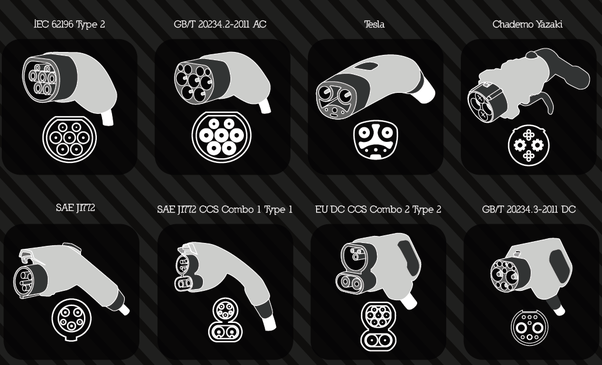
The Tesla cord in question is the third item on the top row, while the SAE J1772 Type 1 cord is the first on the second row. Clearly the Tesla cord cannot fit into a J1772-shaped hole. However, for AC Level 2 charging, Tesla uses the J1772 protocol, just not through a connector compatible with the SAE J1772 charging socket.
This becomes important because of the large number of Tesla-sponsored destination charging stations across North America. Tesla actually sponsors these stations around the world. Outside North America these stations use standard charging connectors, allowing the stations to be used by any electric car. It is in North America where this non-standard connector is used instead. The destination chargers provide "AC level 2" charging, and are a great benefit for Tesla owners.
With the adapters shown below, cars with standard SAE J1772 charging ports can charge their car at destination chargers. This also works through any other Tesla AC charging unit such as the Tesla High Power Connectors, and the Tesla Universal Mobile Connector (UMC). They are NOT compatible with Tesla's Supercharger stations.
On one side of the adaptors are a clone of the Tesla-proprietary charging inlet, such as is used in North America. The other side has a J1772 Type 1 plug, such as used in North America. Therefore these devices are only suitable for North America or other locales where Tesla still uses the proprietary charging cord.
In most countries, Tesla's charging equipment now uses the standard charging connectors for those regions. In most cases this means Tesla is using the IEC Type 2 plug for AC charging (the first item on the first row of the table above), and the IEC CCS2 plug for DC Fast Charging (the third item on the second row of the table above). This means a non-Tesla electric car with the IEC Type 2 charging socket can directly use Tesla chargers that have the IEC Type 2 plug, with no need for an adaptor.
Describing the Tesla charging cord as proprietary may have offended some. I do not apologize, because that is the most accurate word. The other charging cords shown in the table above were designed through vendor-neutral standards committees, and are implemented by multiple manufacturers. Tesla is the only company to have used this charging cord, and they never submitted it to a standard committee. That makes the cord proprietary to Tesla.
Many people rightfully feel that Tesla designed the best charging cord. But, that's beside the point because there is great value in using industry standards. For example the ubiquitous 120 volt electrical plug is an industry standard and the gadgets using that standard. We can quibble over whether it is the best design, but the fact is that 120 volt outlets exist everywhere in North America, and there are a wide range of adapters and other accessories. That's the value of industry standards.
Since the Tesla charging cord is proprietary, how did these adapters come into being? The electrical part is simple. Because Tesla used the J1772 protocol for AC Level 2 charging, a fact that's attested by the J1772 adapter supplied by Tesla, there is no complicated electrical wiring involved. As for the physical shape, that's a matter of taking a 3D scan of the charging cord to produce an independently developed plug. It helps that several years ago Tesla made its patent portfolio available to use at zero cost. Most manufacturers in this situation would be throwing patent or copyright lawsuits at the adapter makers, but Tesla is not doing so.
Another important question to think about is whether it's correct for owners of SAE J1772 electric cars to use Tesla destination chargers. Tesla sponsored those stations for the benefit of Tesla vehicle owners. It's up to each host site whether to allow non-Tesla car owners to use destination chargers.
Another side of this question is a household with both Tesla and non-Tesla electric cars. Such a household can avoid buying multiple charging stations by using one of these adapters. The Tesla car can charge directly using a home Tesla station, and the non-Tesla charge can use the station with an adapter.
These adapters are only suitable for North America, or other regions where Tesla charging equipment uses the Tesla-proprietary charging cord.
"Regular" Extension Cords for charging electric cars in North America
There are two methods to extend the reach of an electric car charging station. One, and perhaps the safest, is by using a J1772 extension cord as discussed earlier. You can also use a regular extension cord, meant for regular power outlets, between the power outlet and the charging station.
This list of extension cords are for North America, as they use NEMA plugs.
It is important to understand the current capacity required for your use. Remember that you must keep the charging current less than 80% of the weakest link in your circuit. When selecting a cord, be careful to understand the thickness of the wires, and the quality of the plugs.
Going by the plug type, these are the maximum current you can use in a charging session. Remember that electric car charging is a Continuous Load, and the number you must pay attention to is in the 3rd column.
| Plug | Peak Ampacity | Continuous |
|---|---|---|
| NEMA 14-50 | 50 Amps | 40 Amps |
| NEMA 6-50 | 50 Amps | 40 Amps |
| NEMA 14-30 | 30 Amps | 24 Amps |
| NEMA L14-30 | 30 Amps | 24 Amps |
| NEMA L6-30 | 30 Amps | 24 Amps |
| NEMA 6-20 | 20 Amps | 16 Amps |
| NEMA L6-20 | 20 Amps | 16 Amps |
| NEMA 5-20 | 20 Amps | 16 Amps @ 120 volts |
NOTE CAREFULLY: We cannot repeat this enough. When looking at extension cords, read the information carefully, look at the wire thickness and plug quality.
The array of plugs available in North America include these:
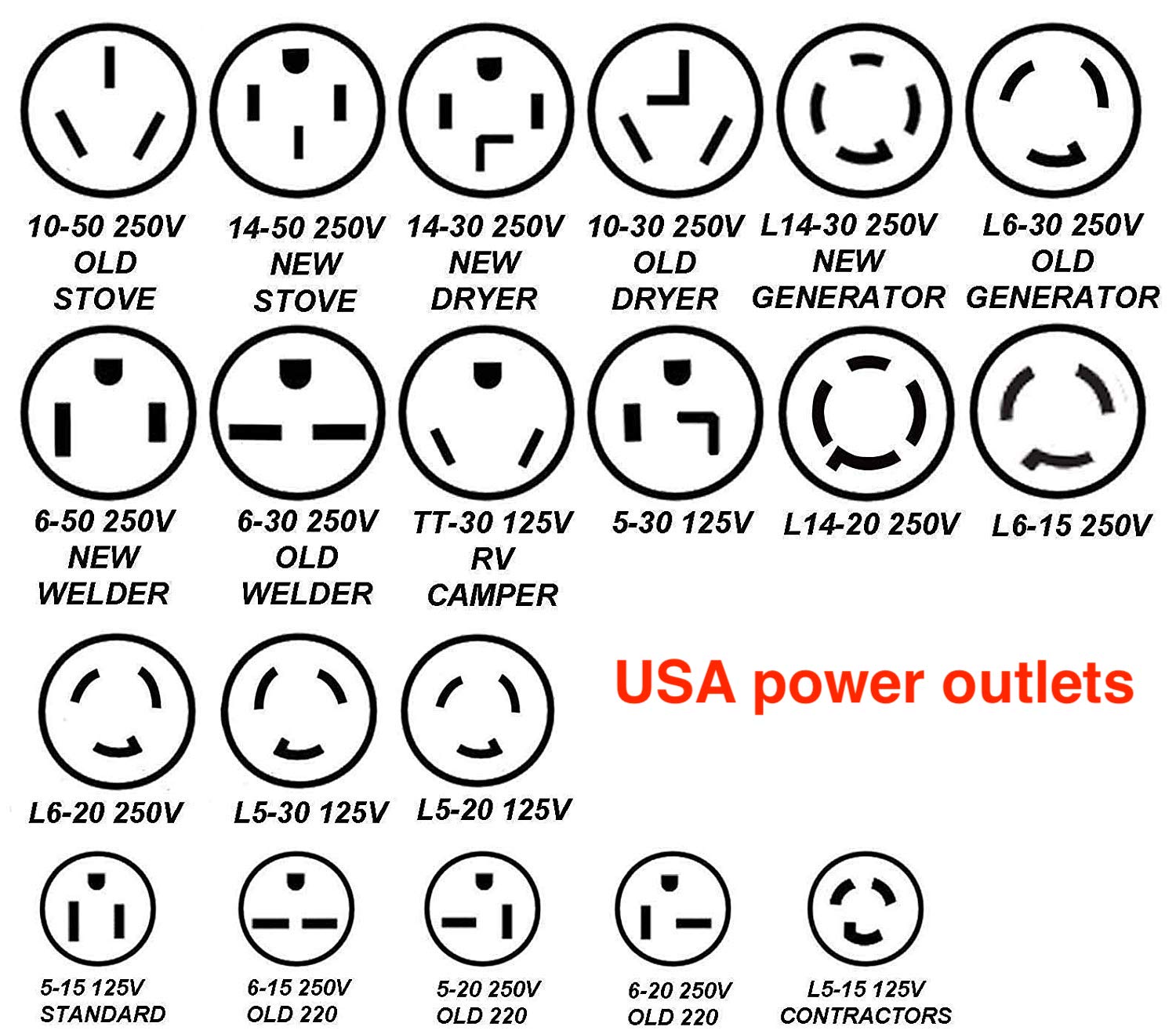
This chart shows the connector layout, voltage and current limits for the connectors defined by NEMA. The current limits in this table are the peak rating. To calculate the continuous load rating, multiply the peak rating by 80% as we did in this table. The connectors which are round, whose name starts with L (such as L6-20), are the locking connectors. This means you insert the plug then twist it to lock it in place.
Most of these cords have a plug on one end, and a socket on the other, making it a plug-n-play solution. Just plug things together and you'll be good to go, so long as you've made certain to select a correctly sized extension cord.
In some cases the cords have a plug on one end and bare wire at the other. These are excellent starting points for building adapter cords. Simply attach the desired plug or socket to the end with bare wires.
Electric car charging cords (leads) and adapters for use in Europe or the United Kingdom
While we're on the topic of cords and power adapters, let's consider what is required in Europe. There are three scenarios we'll consider together in this section:
- While Europe (and the UK) adopted the IEC Type 2 charging plug, prior to that the IEC Type 1 charging plug was in use. This raises the necessity of charging leads which convert between Type 1 and Type 2.
- Some charging stations in Europe (and the UK) do not have a charging lead, and instead the car owner is required to carry their own. Remember that "charging lead" is what we in North America call a charging cord. In any case, the car owner must be aware they need a 16 Amp or 32 Amp charging lead, and whether the cord needs to convert between Type 1 and Type 2, or just use Type 2.
- Some electric cars in Europe (and the UK) can charge with 3 phase AC. This has some special consideration.
| Connector 1 | Connector 2 | Power | Cord Length | ||
|---|---|---|---|---|---|
|
|||||

|
IEC Type 2 | IEC Type 2 | 32 Amps @ 240 Volts, 3 phase AC | 5 meters | |
This charging lead handles charging an electric car with IEC Type 2 charging socket, from a charging station with a Type 2 socket. To use this with a Type 1 charging station requires a Type 1 to Type 2 adapter. This cord supports both 16 Amp and 32 Amp charging rate, with single phase AC electricity. That makes the maximum charging rate 7.2 kiloWatts. The company sells a variant of this cord supporting 3 phase AC charging, and another variant with a 10 meter cord. On 3 phase AC, the maximum charging rate is 22 kiloWatts. Purchase Options
|
|||||
|
|||||
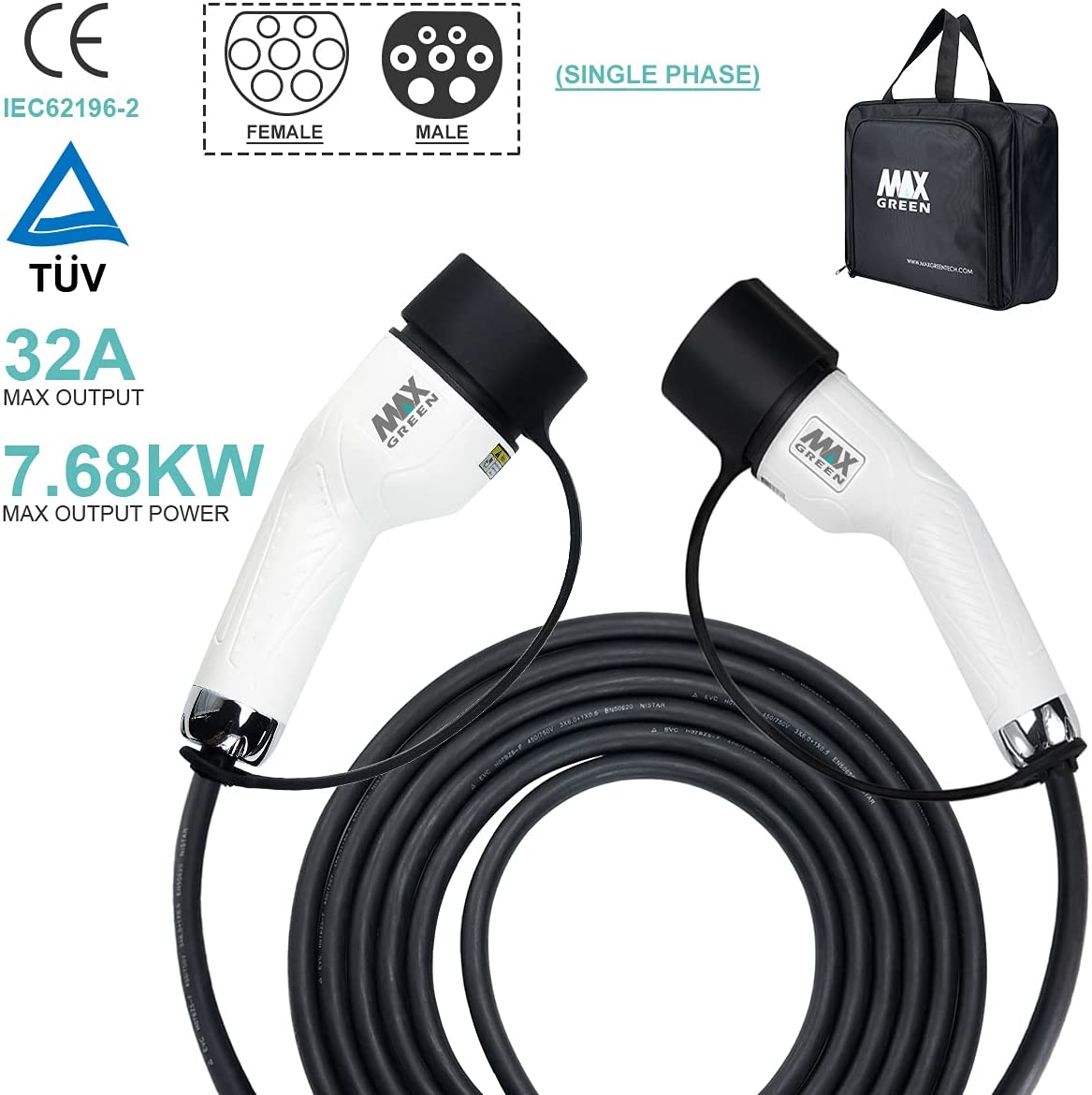
|
IEC Type 2 | IEC Type 2 | 32 Amps @ 240 Volts | 5 meters | |
This charging lead handles charging an electric car with IEC Type 2 charging socket, from a charging station with a Type 2 socket. To use this with a Type 1 charging station requires a Type 1 to Type 2 adapter. The company makes a variant of this code for Type 1 to Type 2 scenarios. This cord supports both 16 Amp and 32 Amp charging rate, with single phase AC electricity. That makes the maximum charging rate 7.2 kiloWatts. At first glance this cord looks like it would work as an extension cord (or extension lead). Meaning, you could have two of these cords to string together if you need additional reach. But, this cord lacks a specific pin required to function as an extension lead. Purchase Options
|
|||||
|
|||||
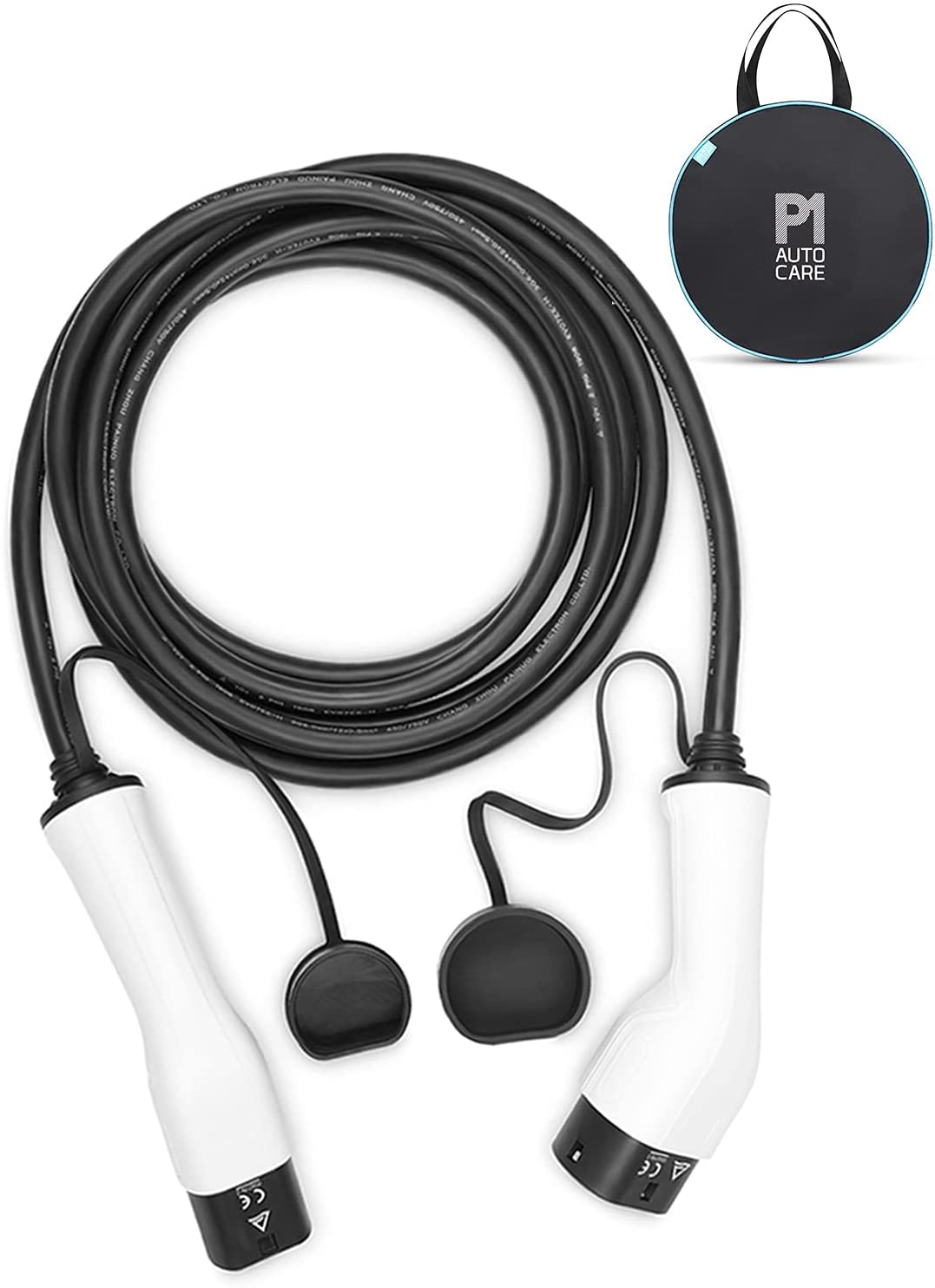
|
IEC Type 2 | IEC Type 2 | 32 Amps @ 240 Volts, 3 phase AC | 5 meters | |
This charging lead handles charging an electric car with IEC Type 2 charging socket, from a charging station with a Type 2 socket. To use this with a Type 1 charging station requires a Type 1 to Type 2 adapter, but that may not be possible since this cord is designed for three phase AC. This cord supports both 16 Amp and 32 Amp charging rate, with three phase AC electricity. That makes the maximum charging rate 7.2 kiloWatts. Purchase Options
|
|||||
|
|||||

|
IEC Type 2 | IEC Type 2 | 32 Amps @ 240 Volts | 5 meters | |
This charging lead handles charging an electric car with IEC Type 2 charging socket, from a charging station with a Type 2 socket. To use this with a Type 1 charging station requires a Type 1 to Type 2 adapter. This cord supports both 16 Amp and 32 Amp charging rate, with single phase AC electricity. That makes the maximum charging rate 7.2 kiloWatts. Purchase Options
Sponsored
|
|||||
|
|||||

|
IEC Type 1 | IEC Type 2 | 32 Amps @ 240 Volts | ||
This small adapter converts between a SAE J1772 Type 1 socket, and an IEC Type 2 plug. Hence, it is useful when you have a Type 1 charging station, and are driving a car with an IEC Type 2 charging port. Purchase Options
Sponsored
|
|||||
|
|||||
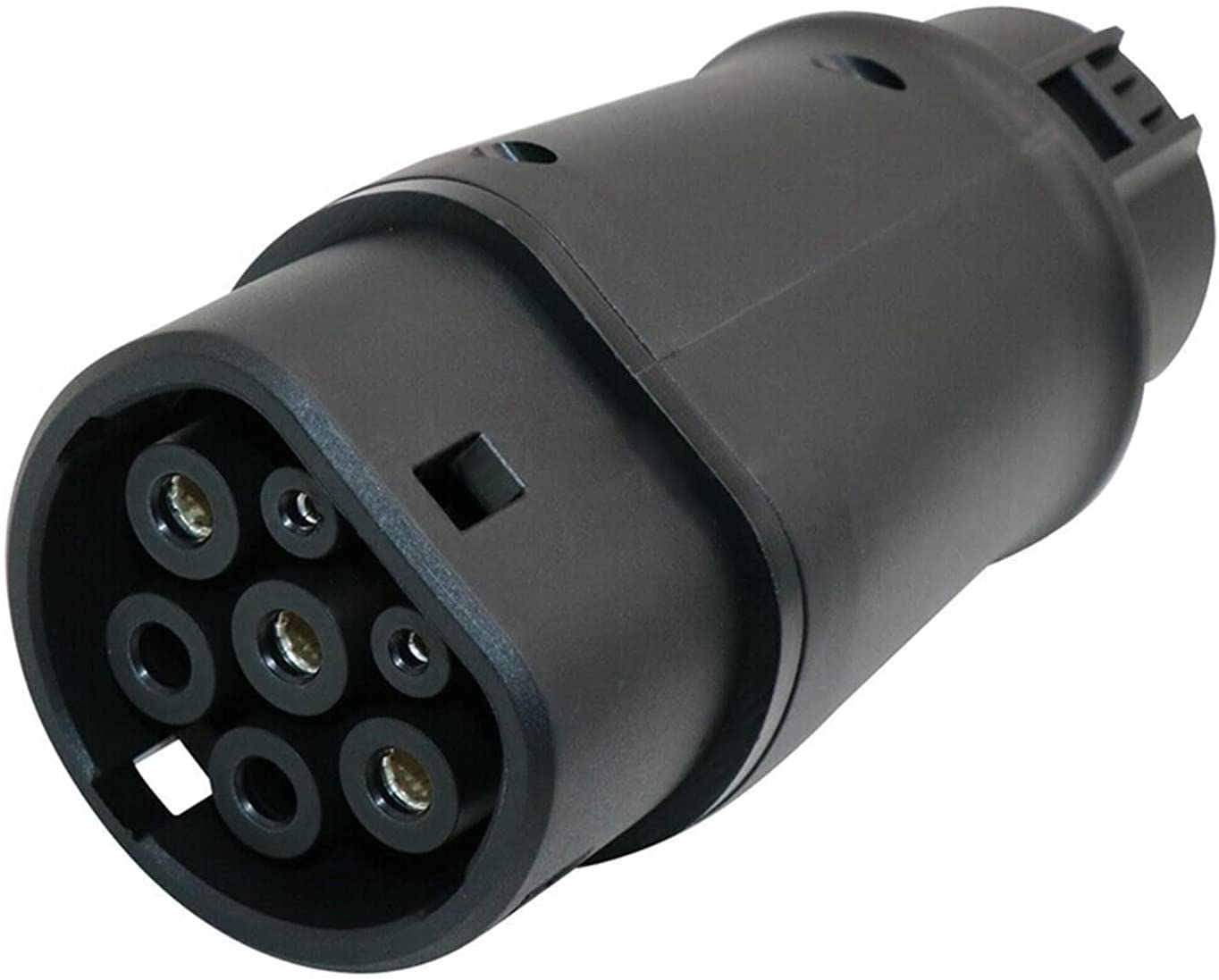
|
IEC Type 1 | IEC Type 2 | 32 Amps @ 240 Volts | ||
This small adapter converts between a SAE J1772 Type 1 socket, and an IEC Type 2 plug. Hence, it is useful when you have a Type 1 charging station, and are driving a car with an IEC Type 2 charging port. Purchase Options
Sponsored
|
|||||
|
|||||

|
IEC Type 1 | IEC Type 2 | 32 Amps @ 240 Volts | ||
This small adapter converts between a SAE J1772 Type 1 plug, and an IEC Type 2 socket. Hence, it is useful when you have a vehicle with a Type 1 charging socket, and using a charging station with an IEC Type 2 charging plug. Purchase Options
Sponsored
|
|||||
Power adapters to patch together oddball electrical situations in North America
Most of the time you'll be charging at regular charging stations, and the worst situation you'll face is using a J1772 extension cord to reach the station. But sometimes your only choice to charge your car is by using a random power outlet you happen to find.
There's a certain frustration looking at a power outlet, knowing that electricity is available, but being unable to use that electricity for lack of a compatible power connector. For some reason in North America we have a long list of different plugs of different shape, all of which are supplying either 120 volts or 240 volts single phase AC.
You could be carrying a charging station, that has a NEMA 14-50 plug. But the power outlet you found might be a NEMA L6-30. In fact, the picture shown earlier charging an electric car at Lucious Garage involves an L6-20 outlet with a charging station that has a NEMA 14-50 plug. It is simple to build an adapter to connect an L6-20 or L6-30 power outlet to a 14-50 plug, and the video embedded here shows how to do so.
But.. building an adapter cord, while easy, takes some technical skill. Not everyone wants to develop those skills. For such people there are pre-built manufactured adapter cords available.
IMPORTANT: When using power adapters you must be doubly careful about current limits. Remember, the principle is that the current draw must be less than 80% of the rating of the weakest part of the circuit. In the case just given, an EVSE with a NEMA 14-50 plug, connected to a car that will draw 32 amps if given the chance, but connected to a NEMA L6-20 outlet. The chart shown earlier says the L6-20 must be limited to a 16 amp charging rate. That means either your car must be configurable to a lower charging rate, or your charging station must do it. In this case, the charging station does handle adjusting the charging rate.
Parts for building NEMA North America cords
In the previous section we listed manufactured adapter cables. You may find a situation requiring an adapter. Maybe that vacation cottage you've rented has an oddball 240 volt outlet, for which you cannot find a prebuilt cable. Or maybe you just want to build your own adapter cables.
It is fairly easy to build adapter cables. All that's required is a plug for one socket type, a socket for a different type, and some cable in-between. The wiring is very simple, since there are only three wires involved - the two hot lines, and the ground line. These are simply connected straight through.
For some plug types there is a fourth wire, the neutral line. For electric vehicle charging the neutral line is not needed, and can be safely ignored.
Accessories for electric vehicle charging
These are some additional safety tools. For example, water and electricity is obviously a bad idea, and it's important to protect outdoor charging equipment from water. GFCI will detect bad wiring situations, and automatically cut the circuit.
| Cord | Power | Plug | Cord Length | ||||||||
|---|---|---|---|---|---|---|---|---|---|---|---|
|
|||||||||||

|
|||||||||||
|
20 amp in-line GFCI adapter with lighted power block, length: 2ft, gauge: 12/3, wire type: STW, 3 outlets, plug type: 5-15P, receptacle type: 5-15R, 20 amps, rating watts: 1875. In other words, this is a short extension cord with GFCI. It is only suitable for a level 1 charger, but will be good insurance.
Purchase Options
Sponsored
|
|||||||||||
|
|||||||||||

|
|||||||||||
|
This unit fits over a cord, giving you strong protection from the elements, while providing GFCI protection.
Purchase Options
Sponsored
|
|||||||||||
|
|||||||||||
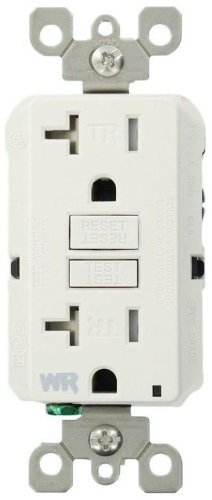
|
|||||||||||
|
A regular power outlet with GFCI protection. For use in the field, you can install this in a junction box and run wiring into it. However, it is little better than the extension cords, and of course this is limited to level 1 charging.
Purchase Options
Sponsored
|
|||||||||||
|
|||||||||||

|
|||||||||||
|
15 amp 3-wire ground fault circuit interrupter (GFCI) outlet adapter for converting standard indoor electrical outlet into GFCI outlet to protect from shock, electrical fire or electrocution. This is an in-line plug/socket making it a little simpler to use than an extension cord. However, it is only rated for 15 amps limiting its usefulness somewhat.
Purchase Options
Sponsored
|
|||||||||||
|
|||||||||||
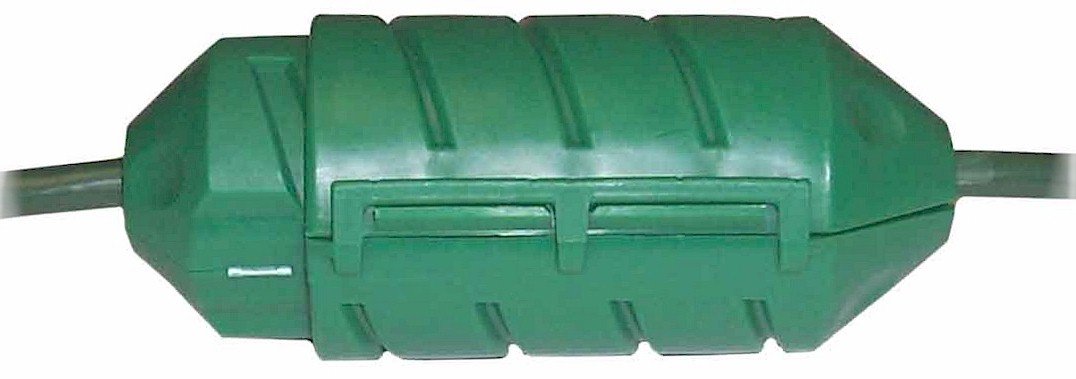
|
|||||||||||
|
This is not a GFCI protector at all, instead it fits over cable connections, giving strong protection against the elements.
Purchase Options
Sponsored
|
|||||||||||
|
|||||||||||
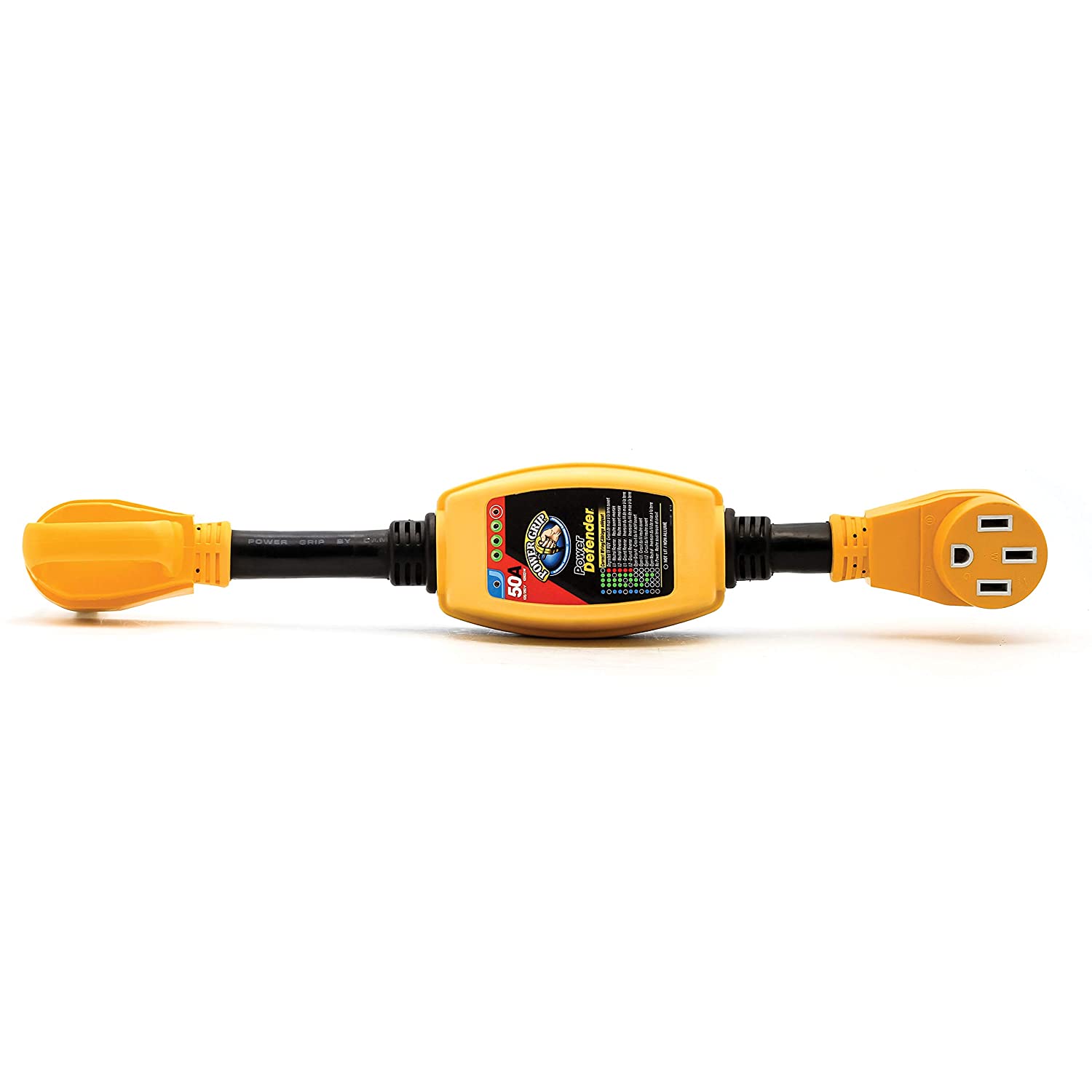
|
|||||||||||
|
This circuit analyzer helps protect electrical equipment from badly wired systems. It has a visual fault indicator that you can consult before hooking up your equipment. It includes surge protection for up to 4200 joules. The case is weatherproof, and the power grip handles on the 14-50 plug and socket make it easy to plug/unplug.
Purchase Options
Sponsored
|
|||||||||||

